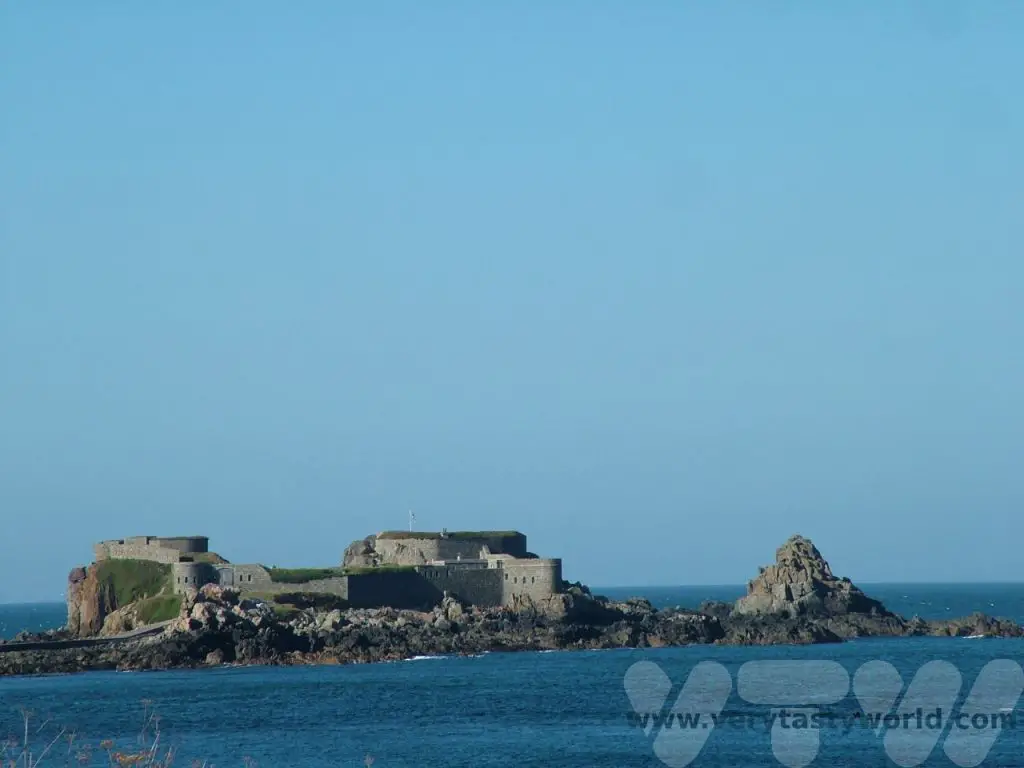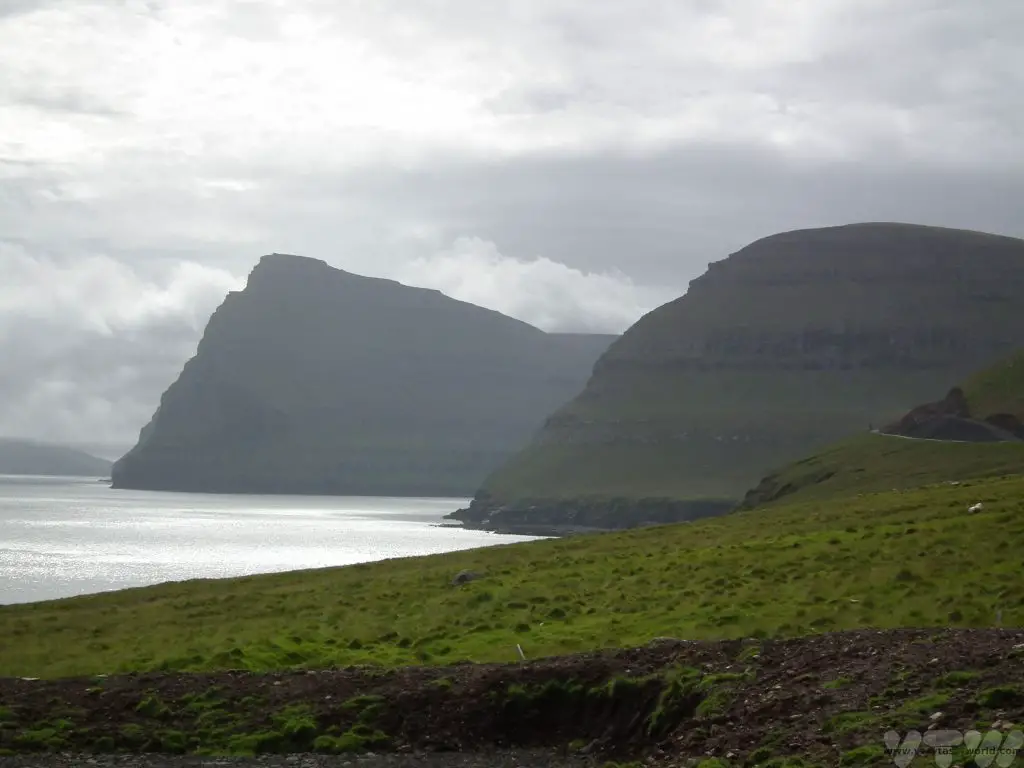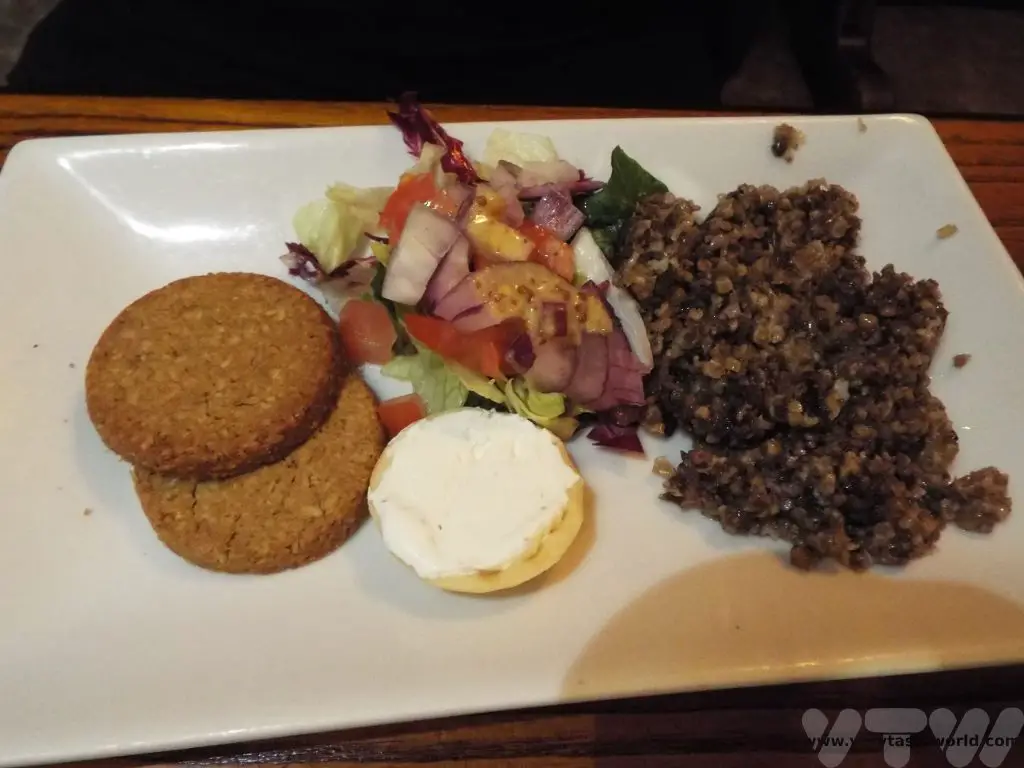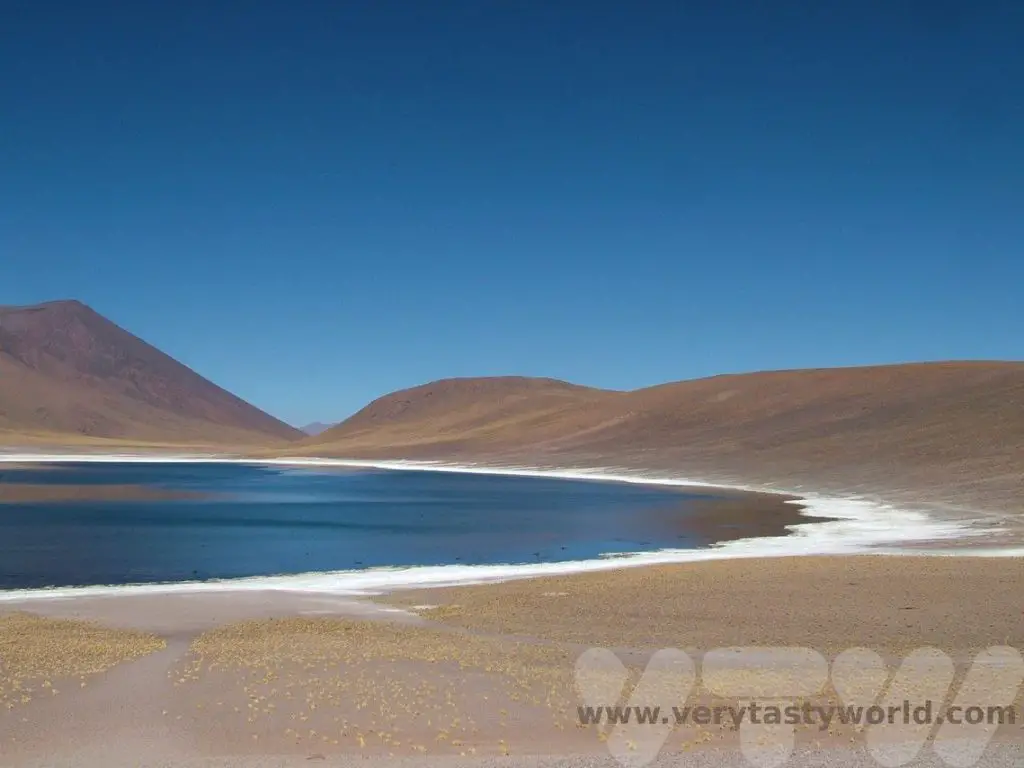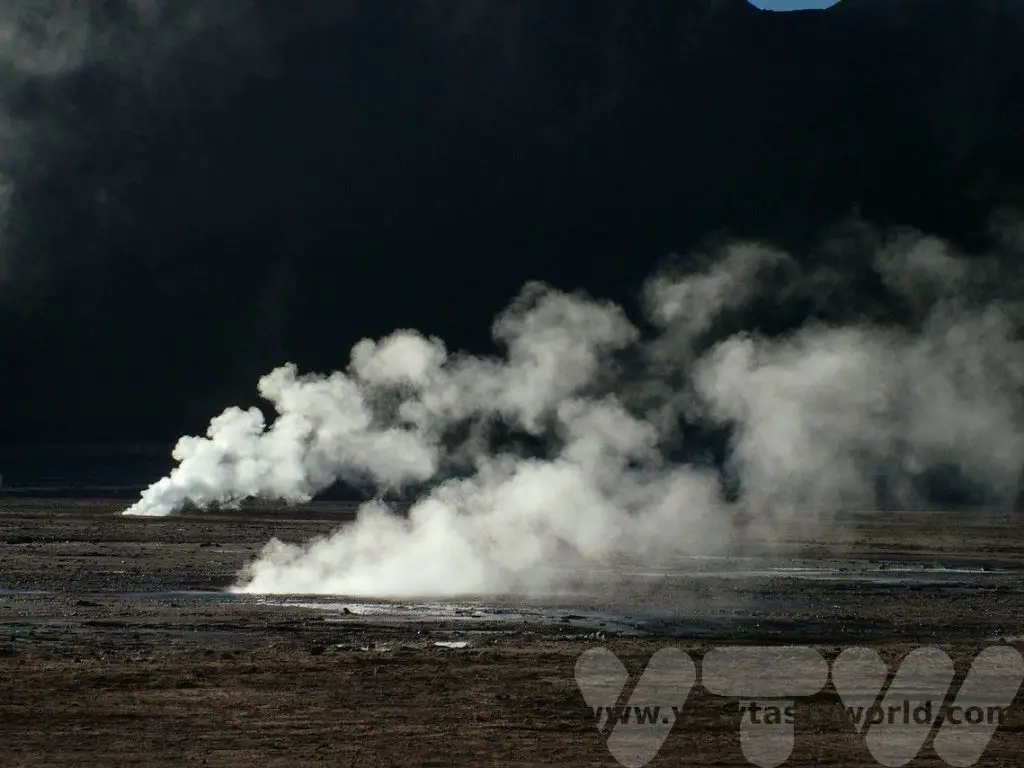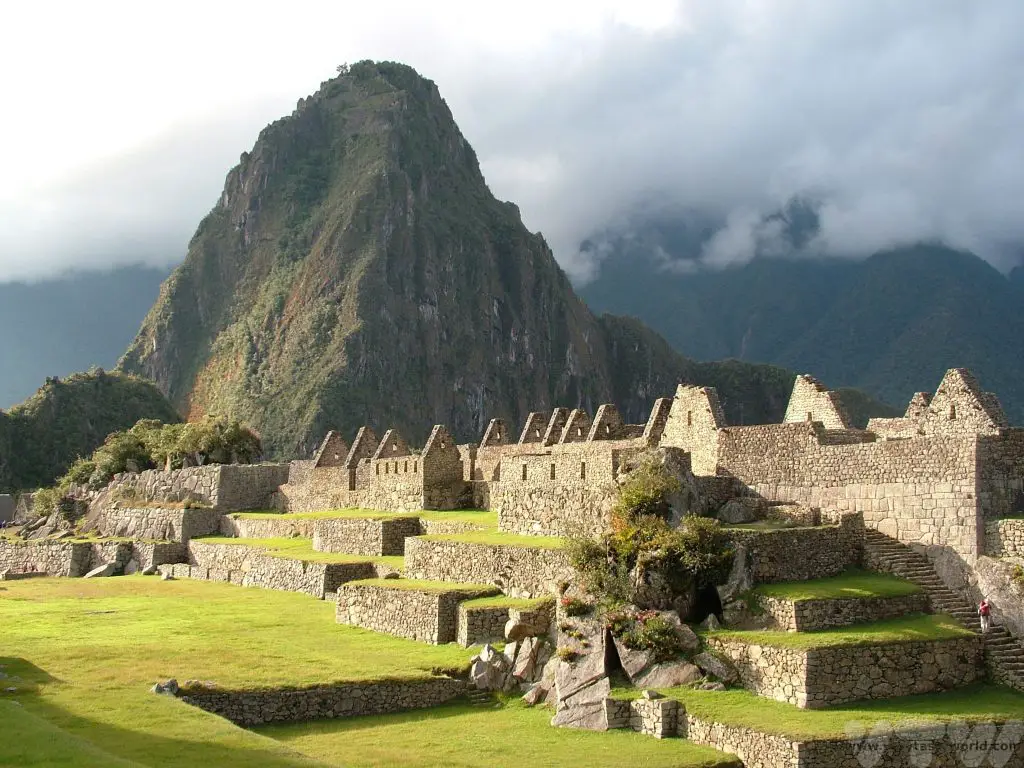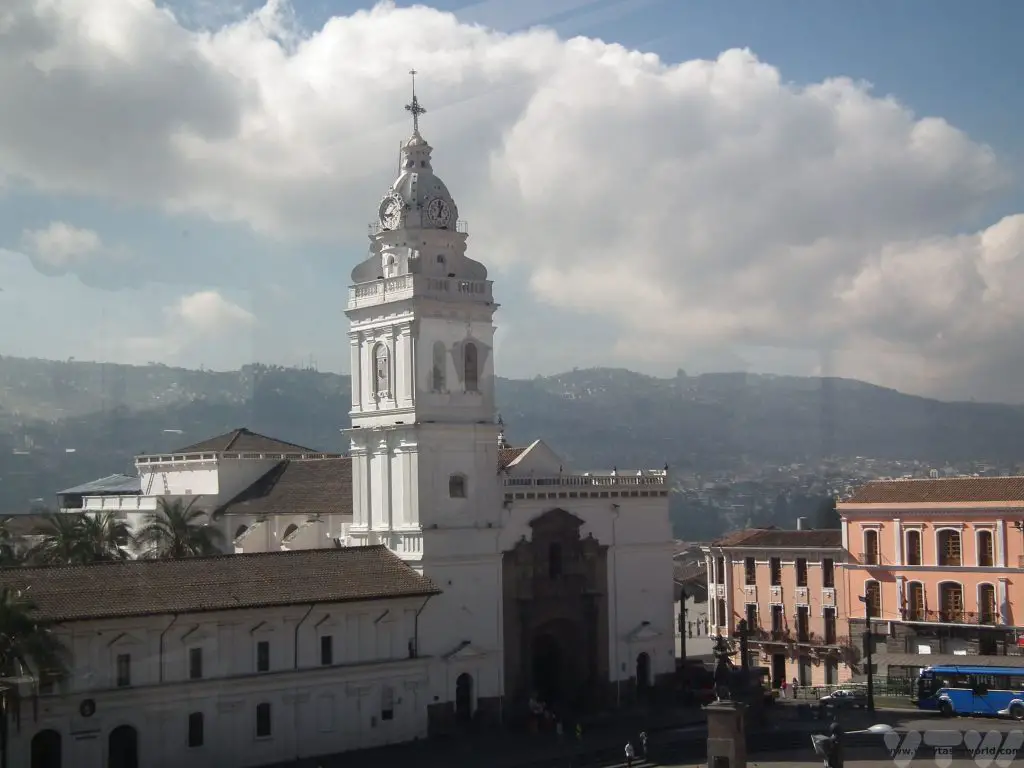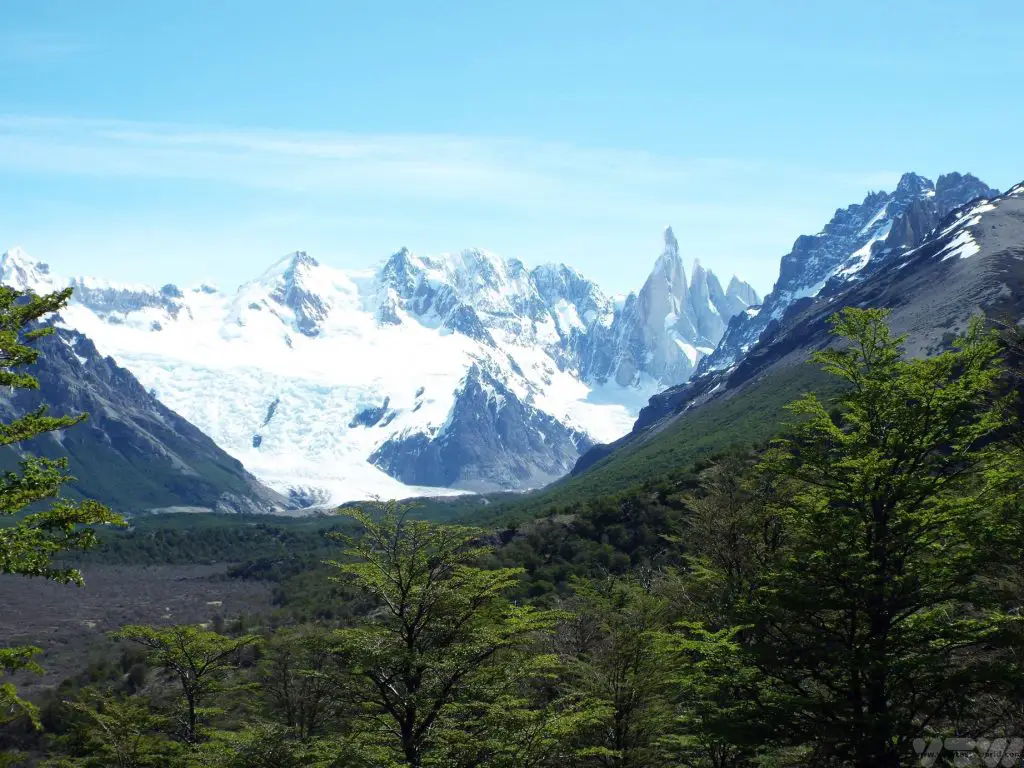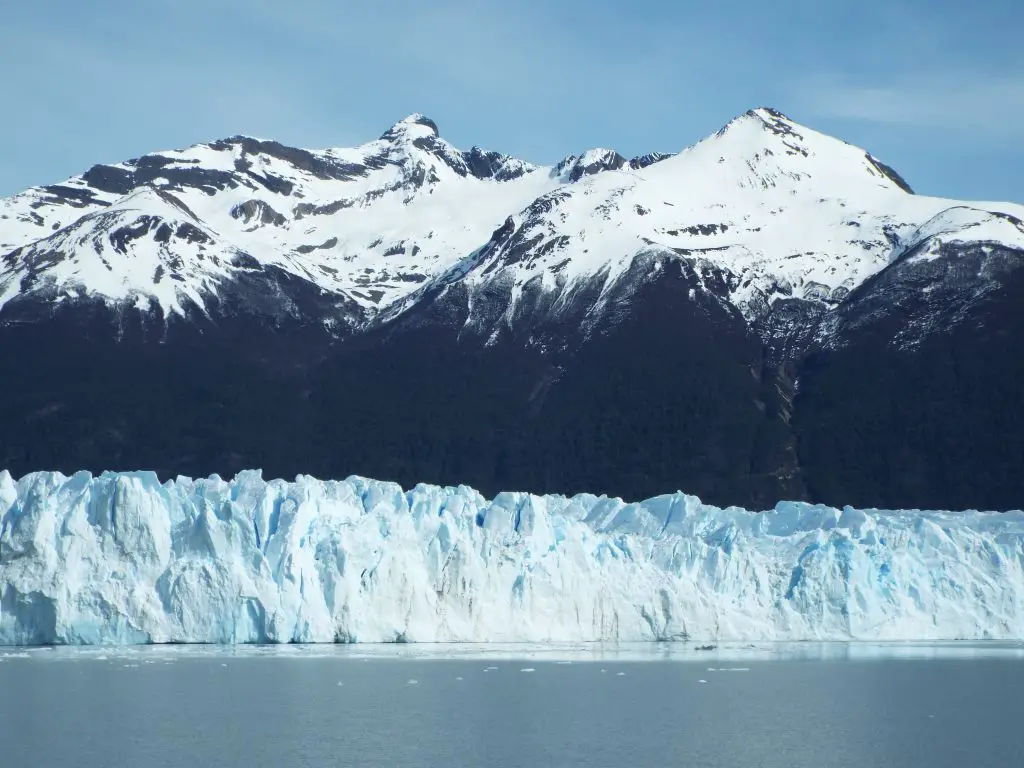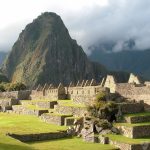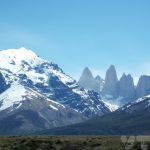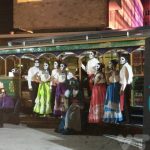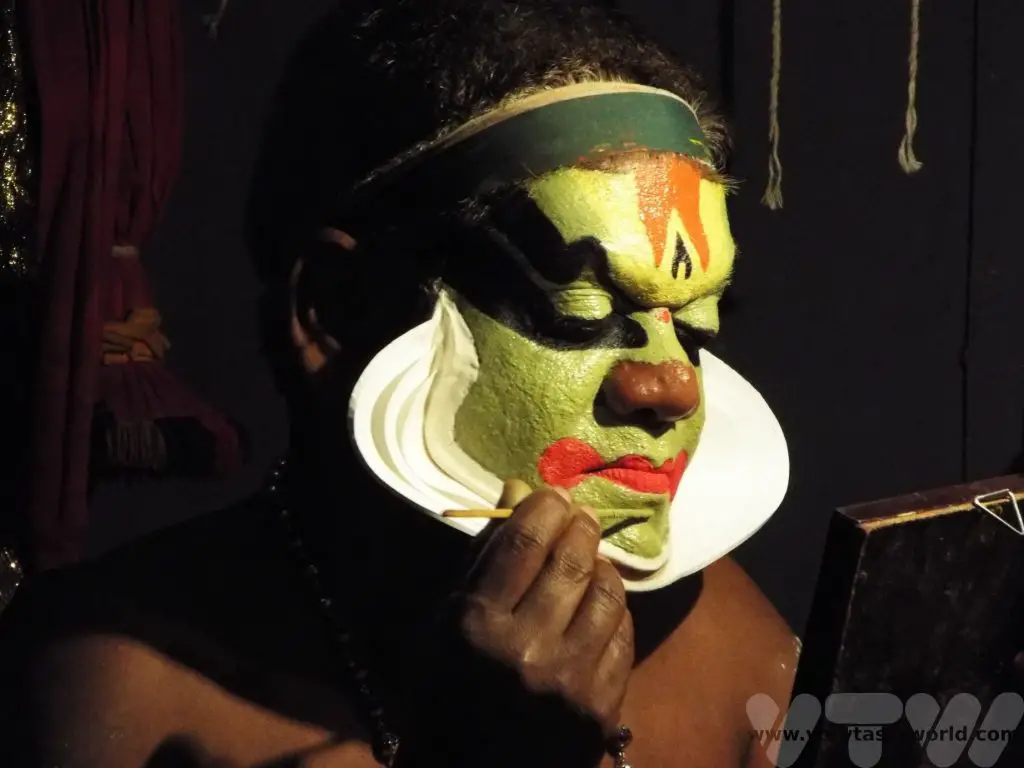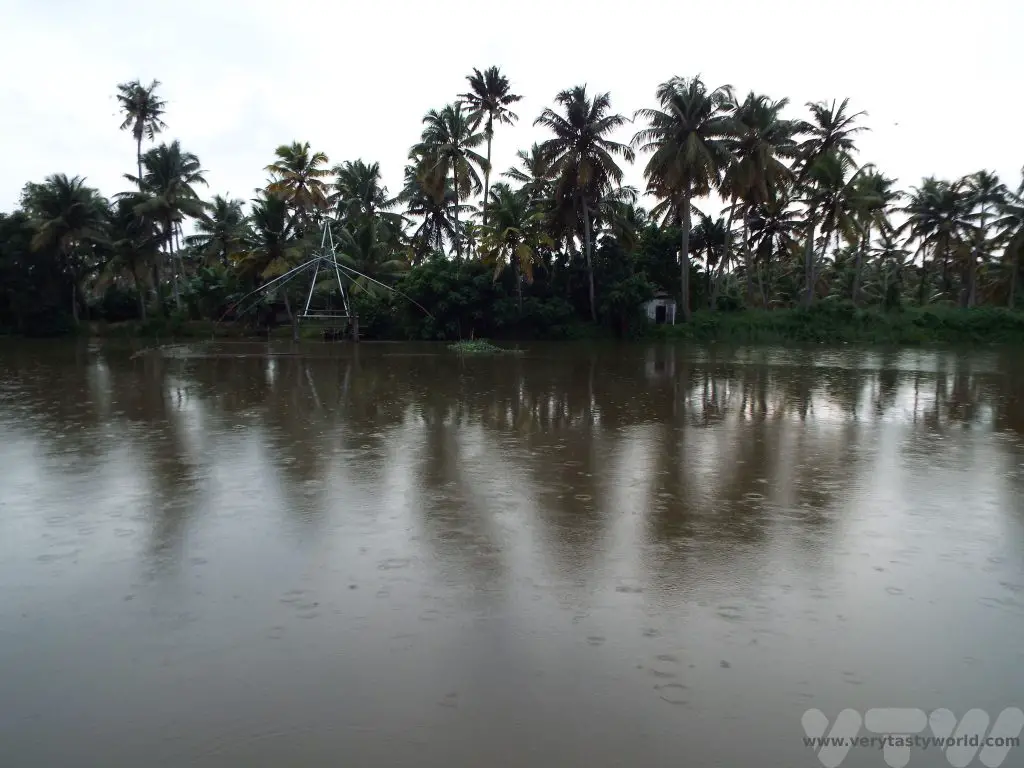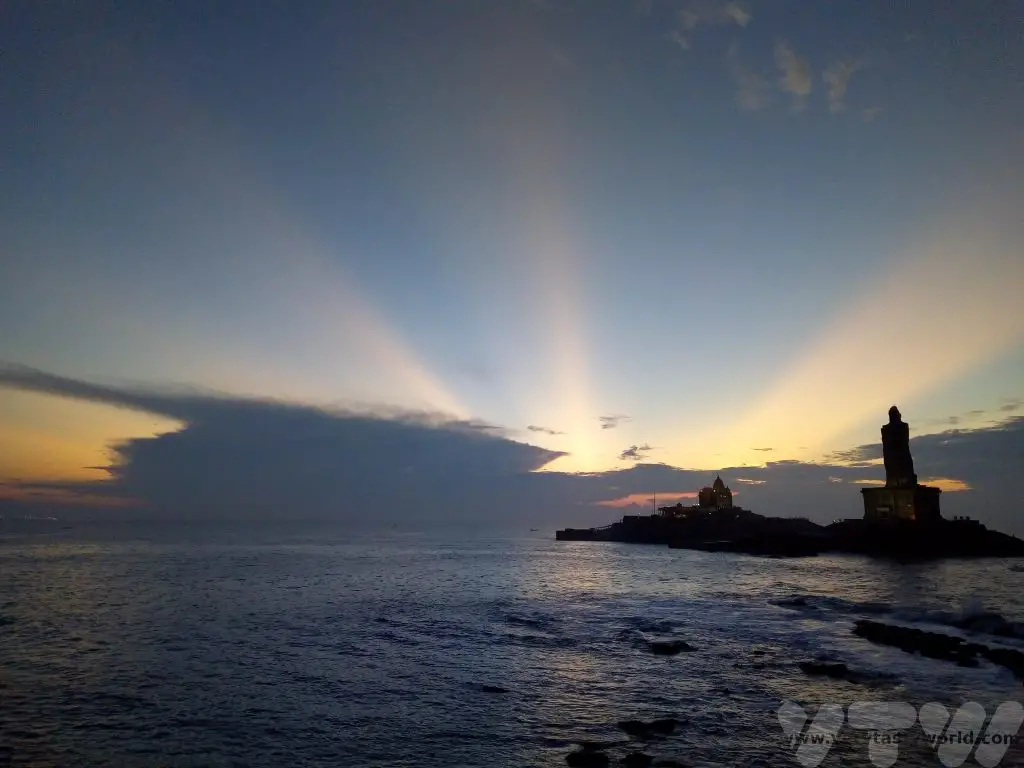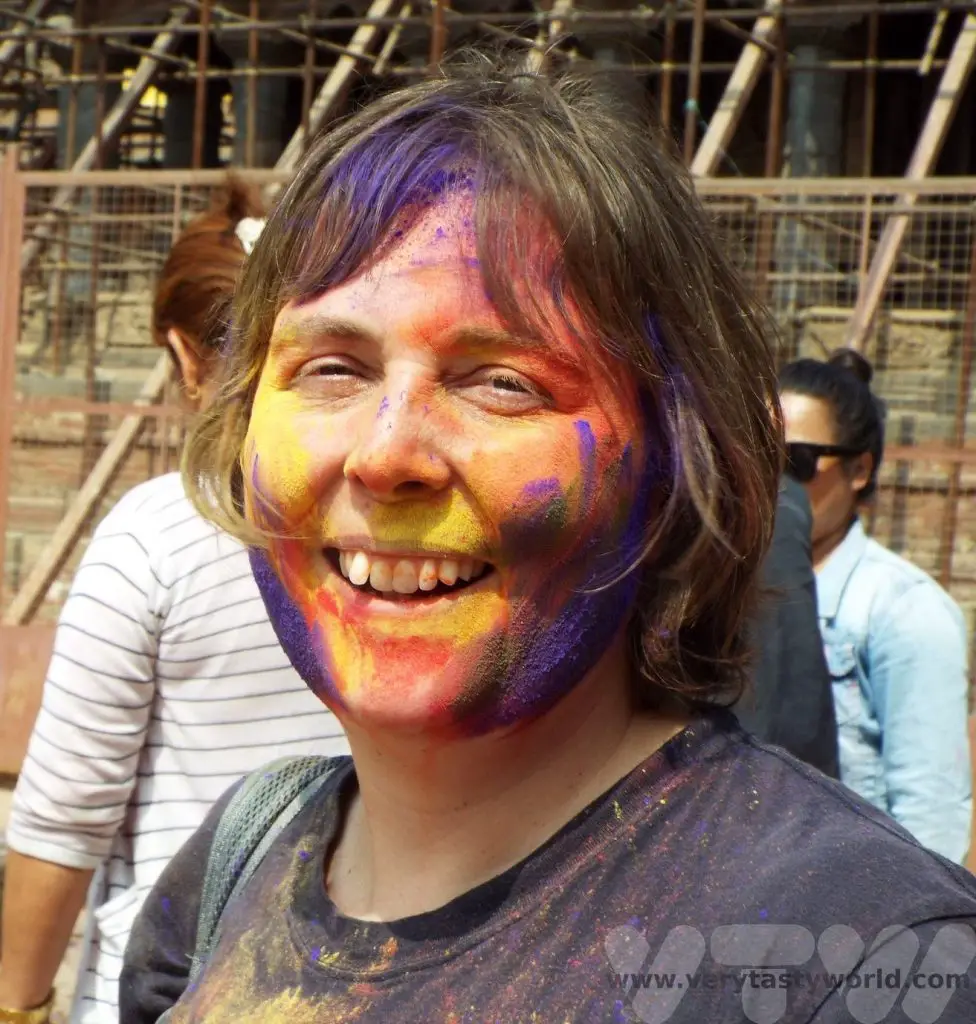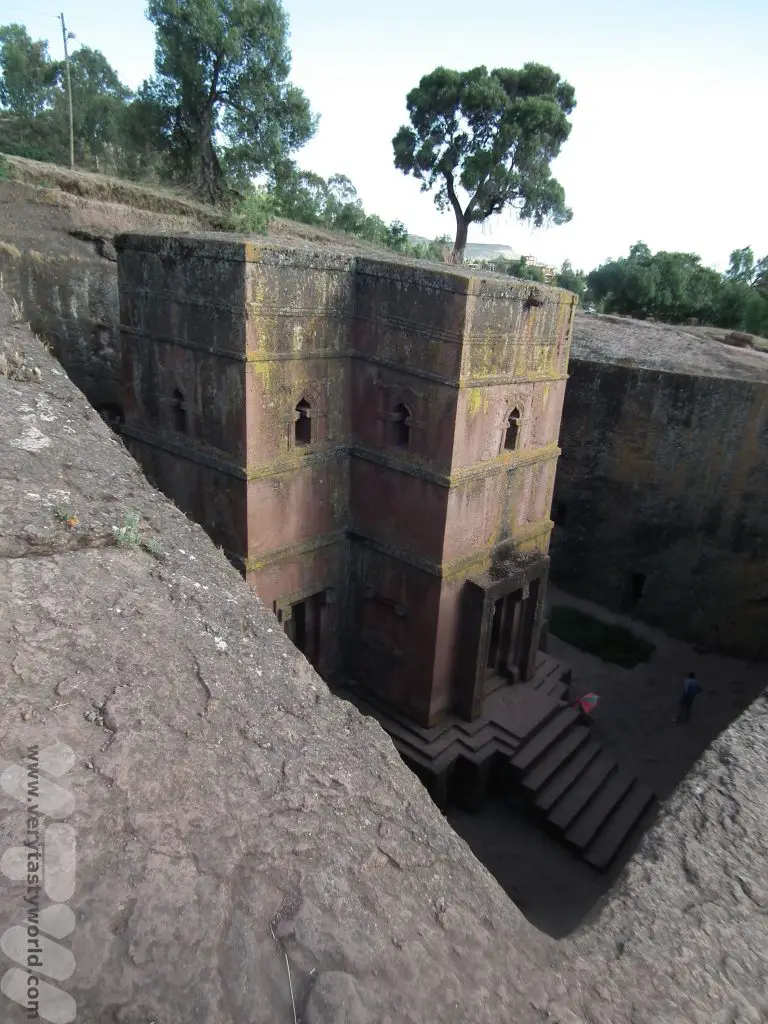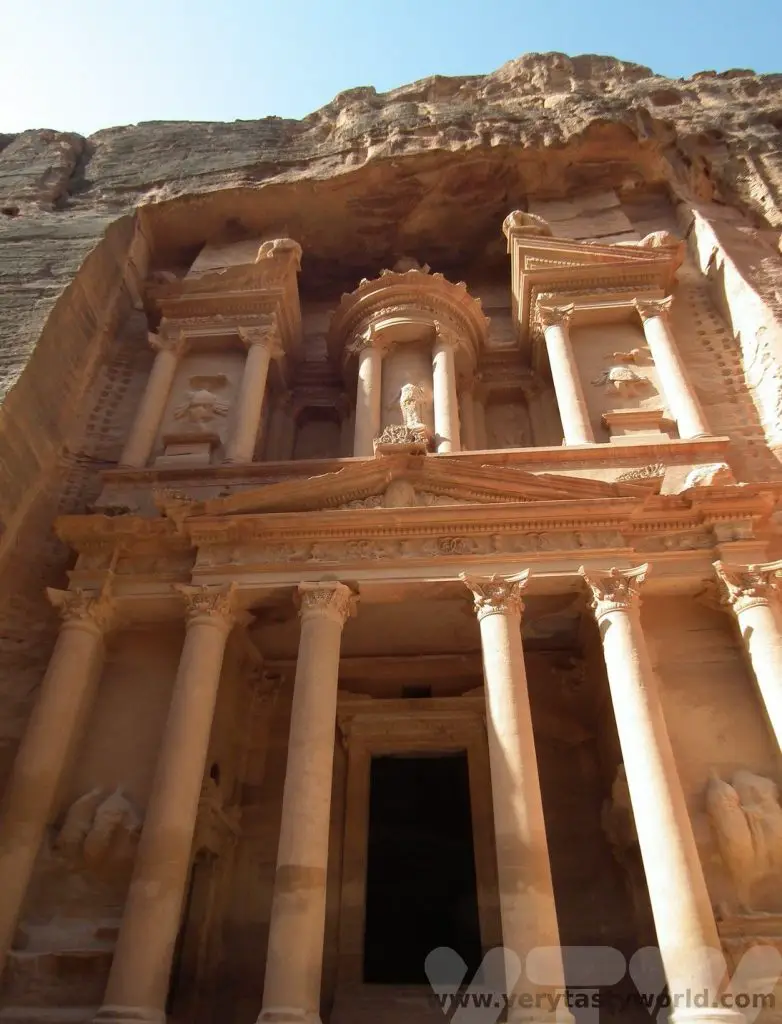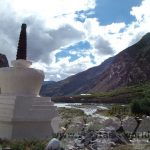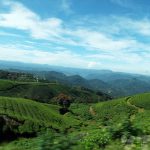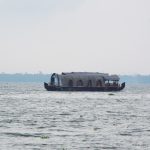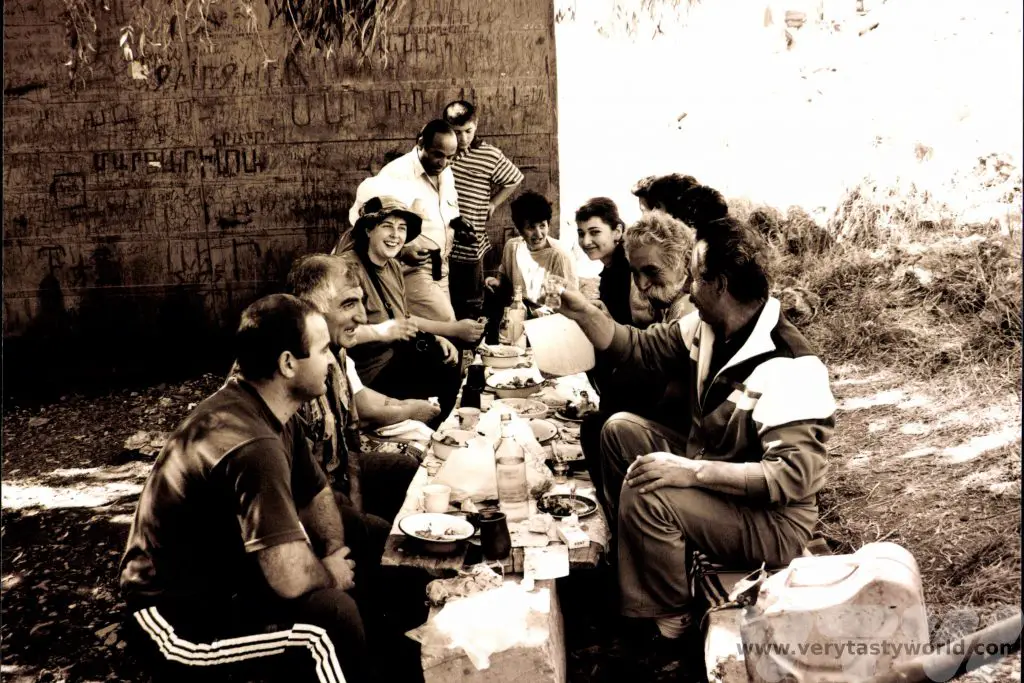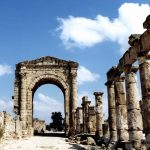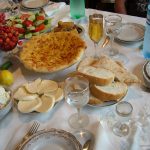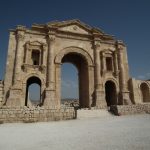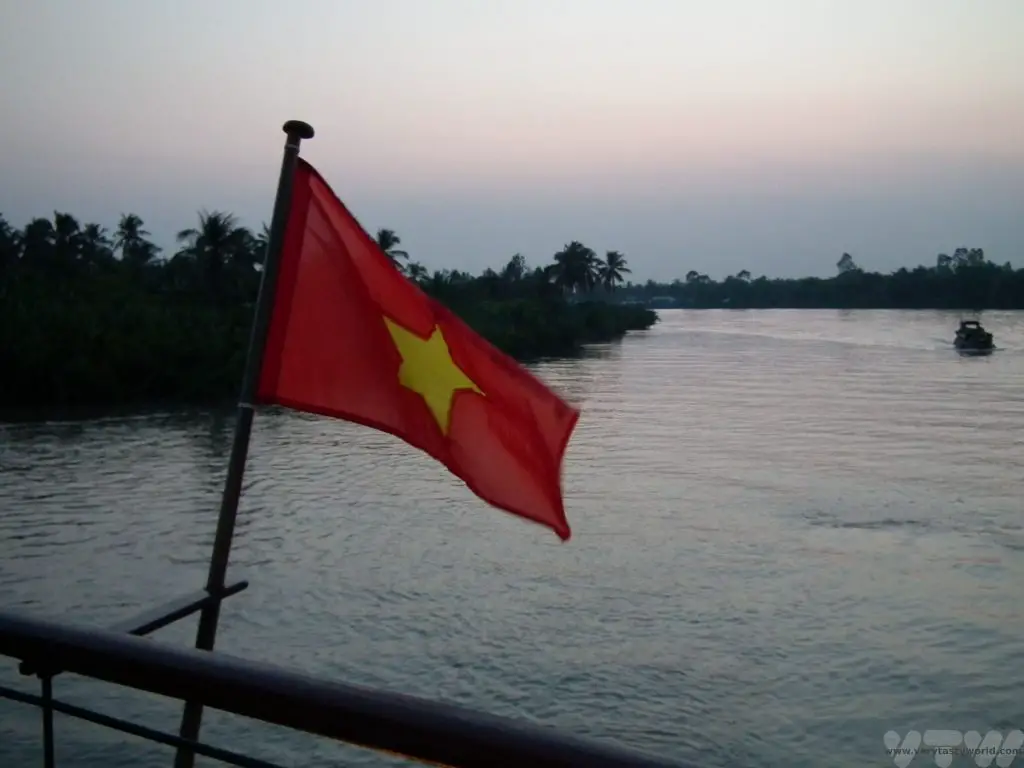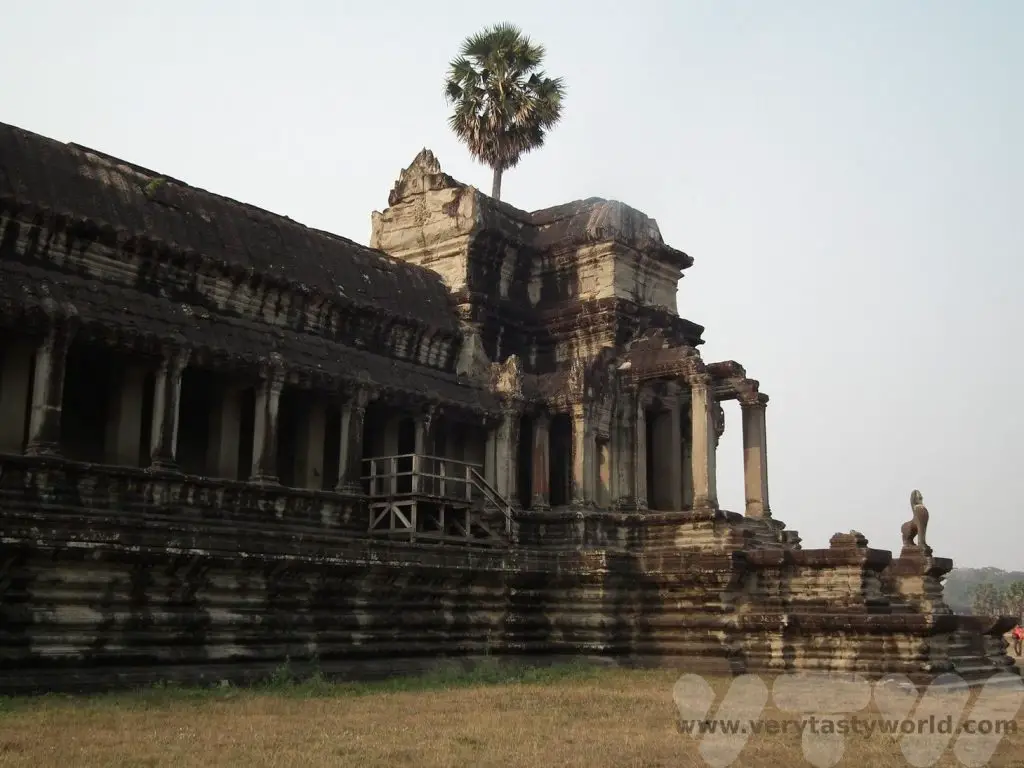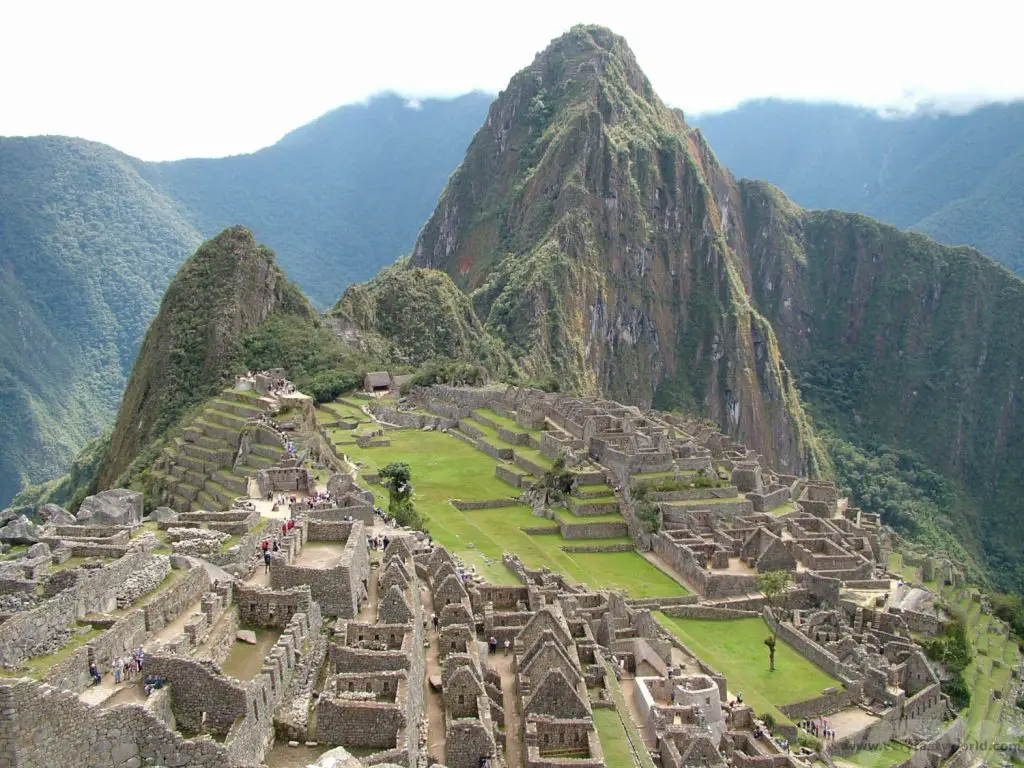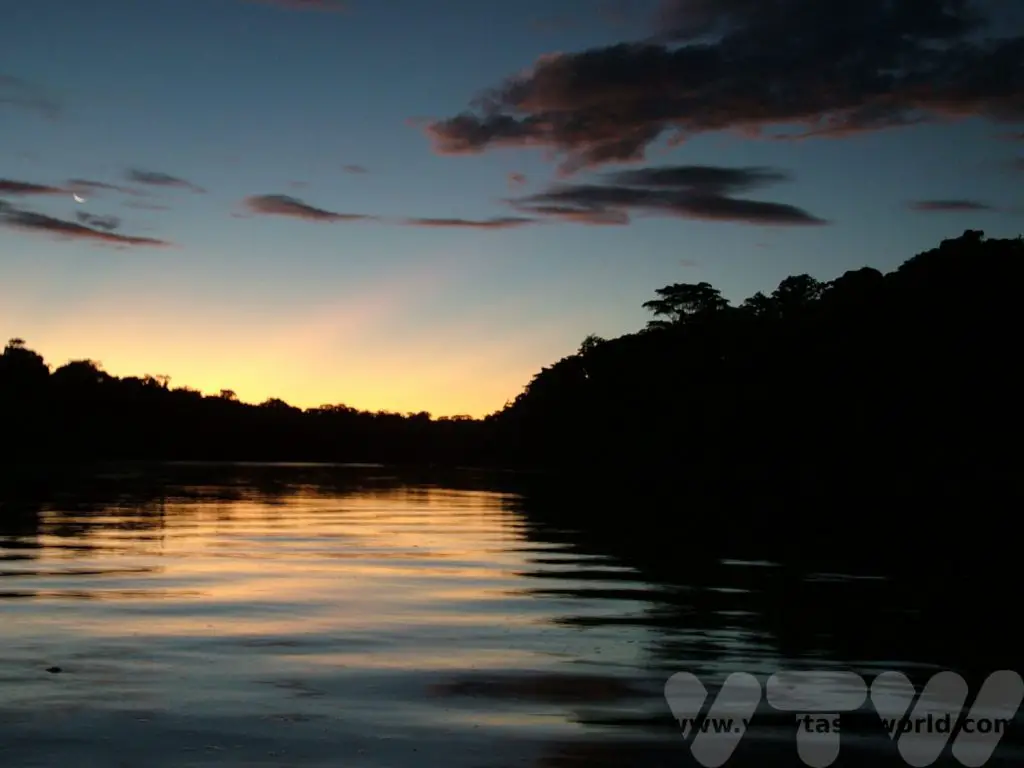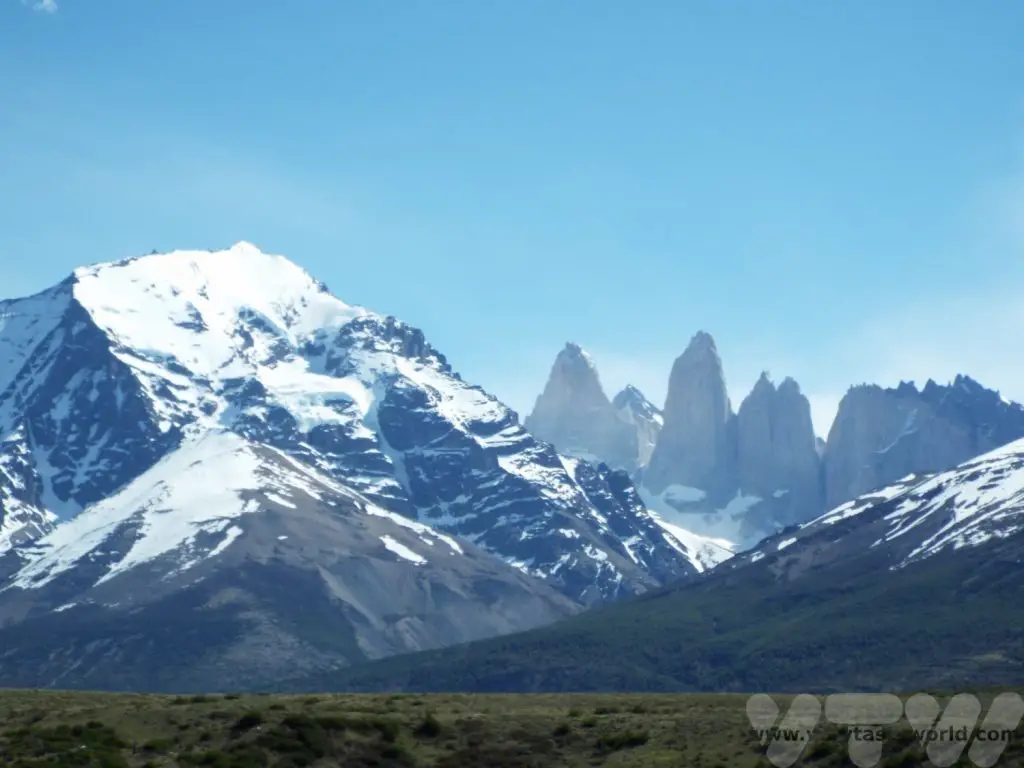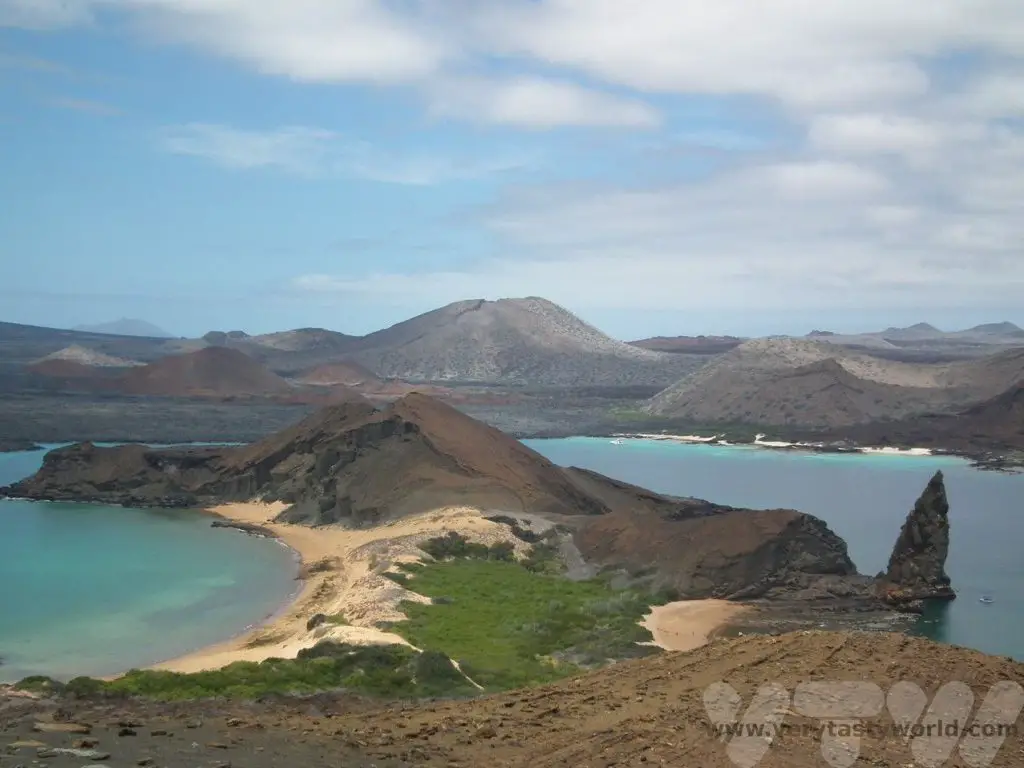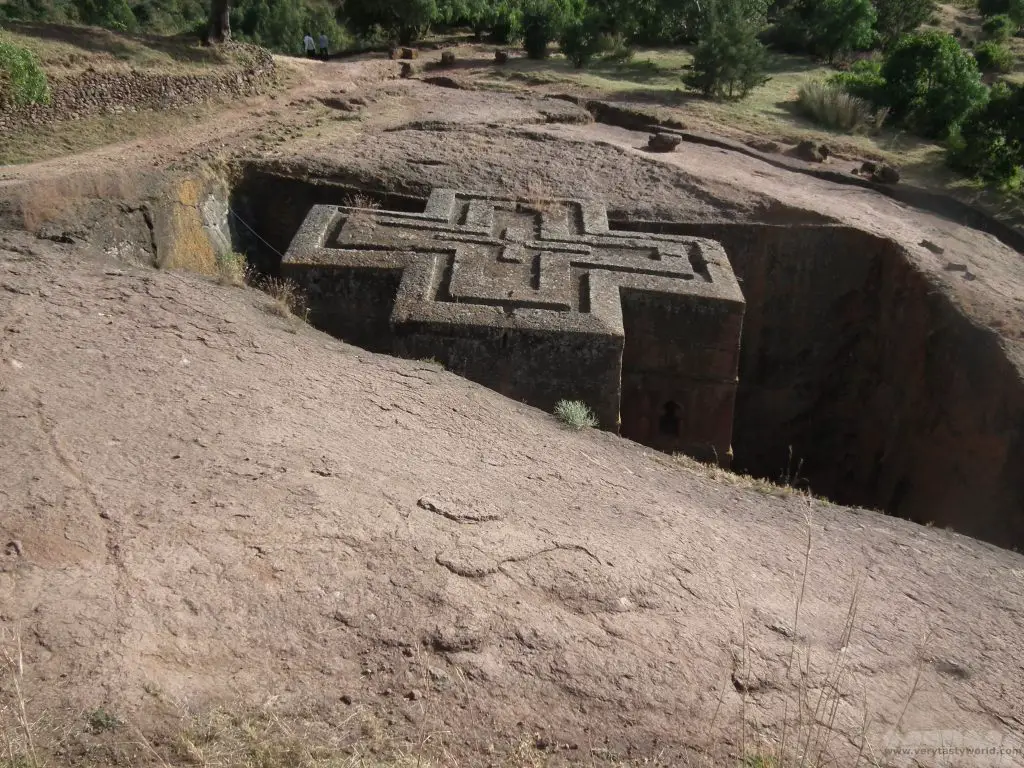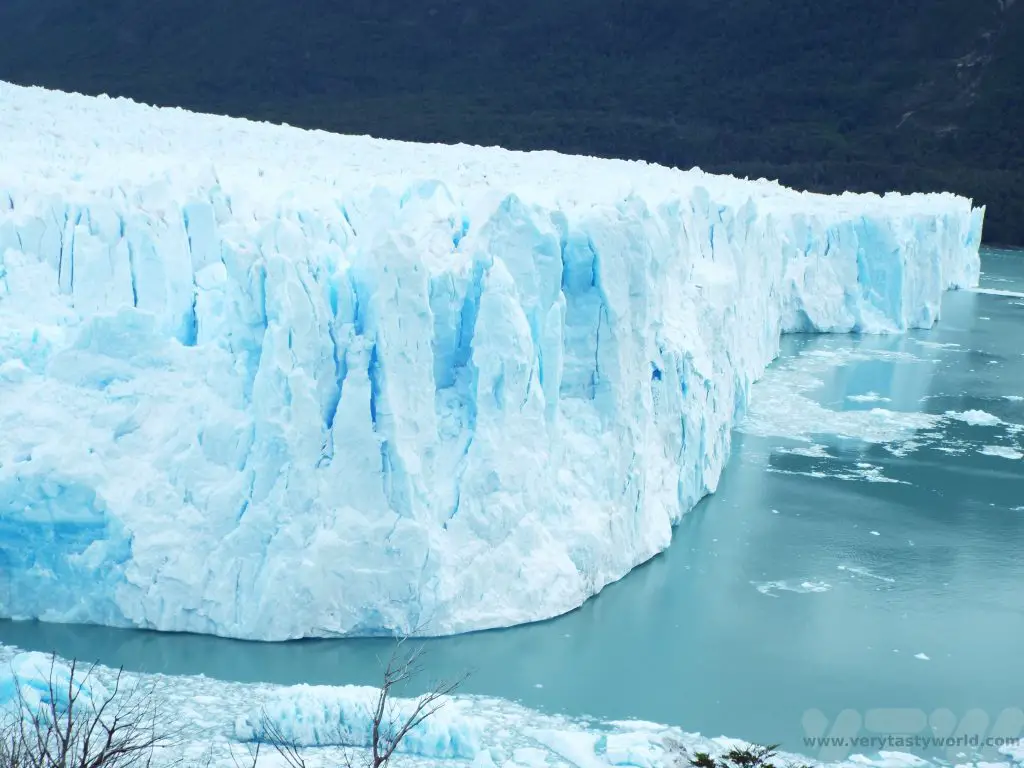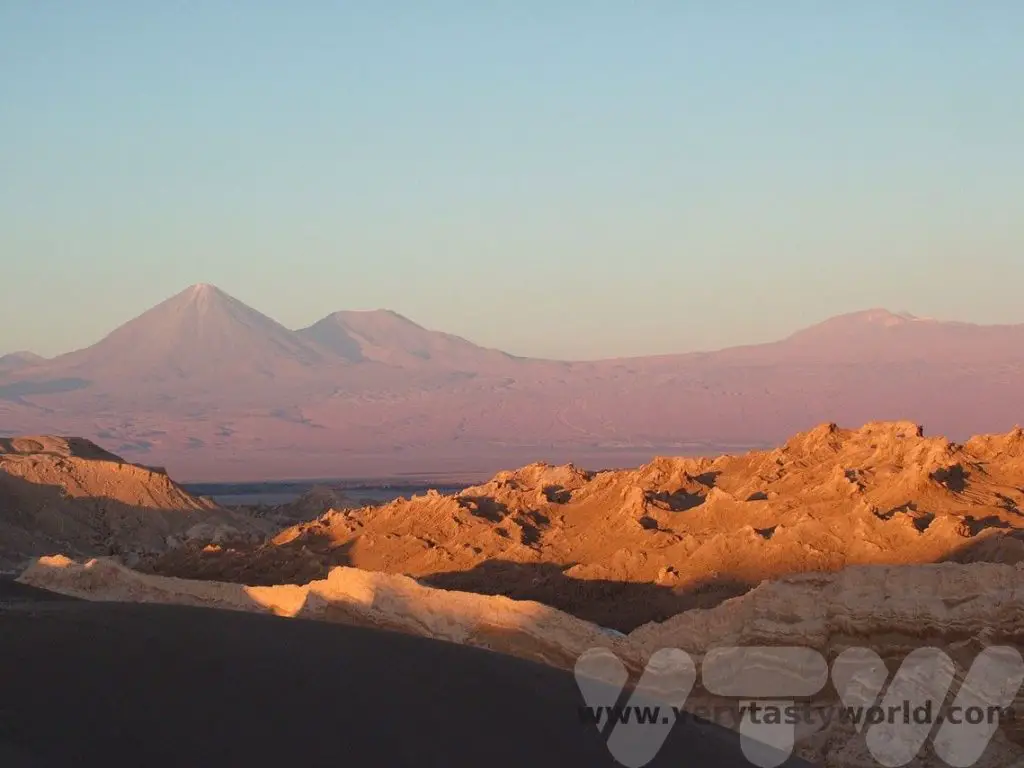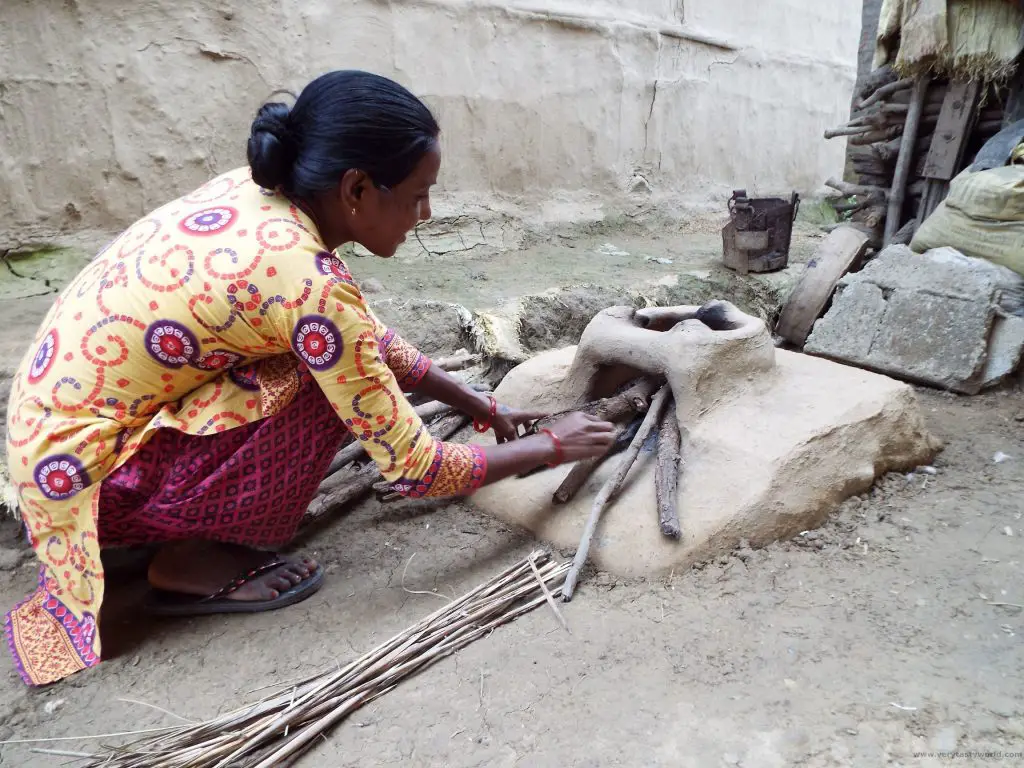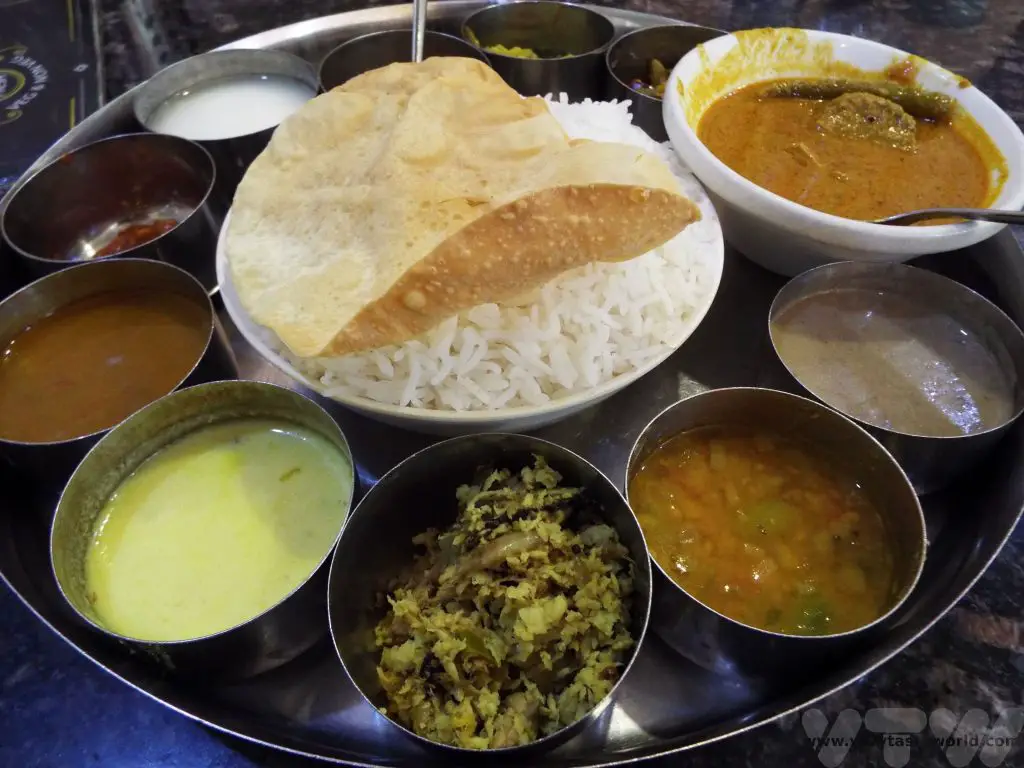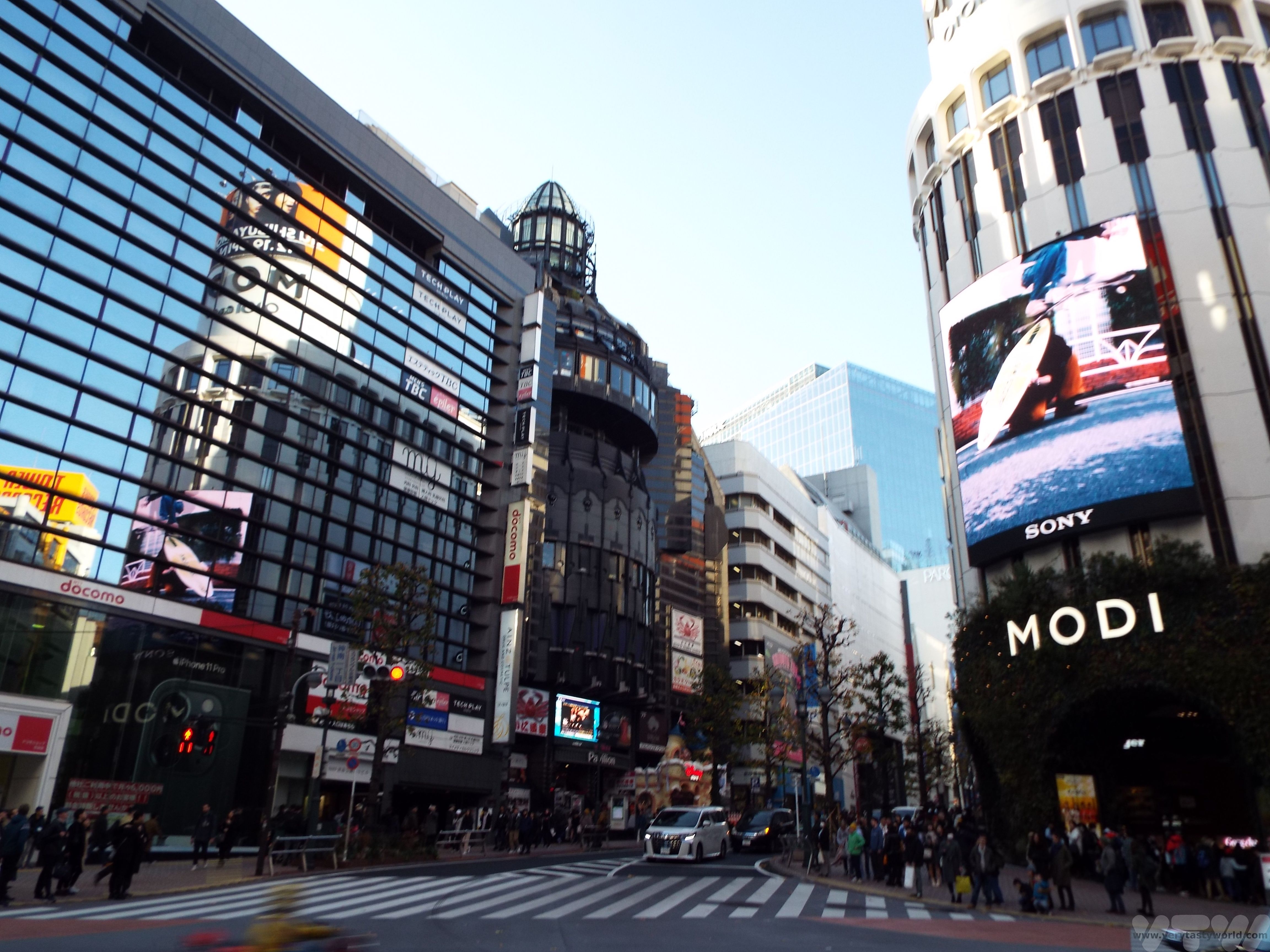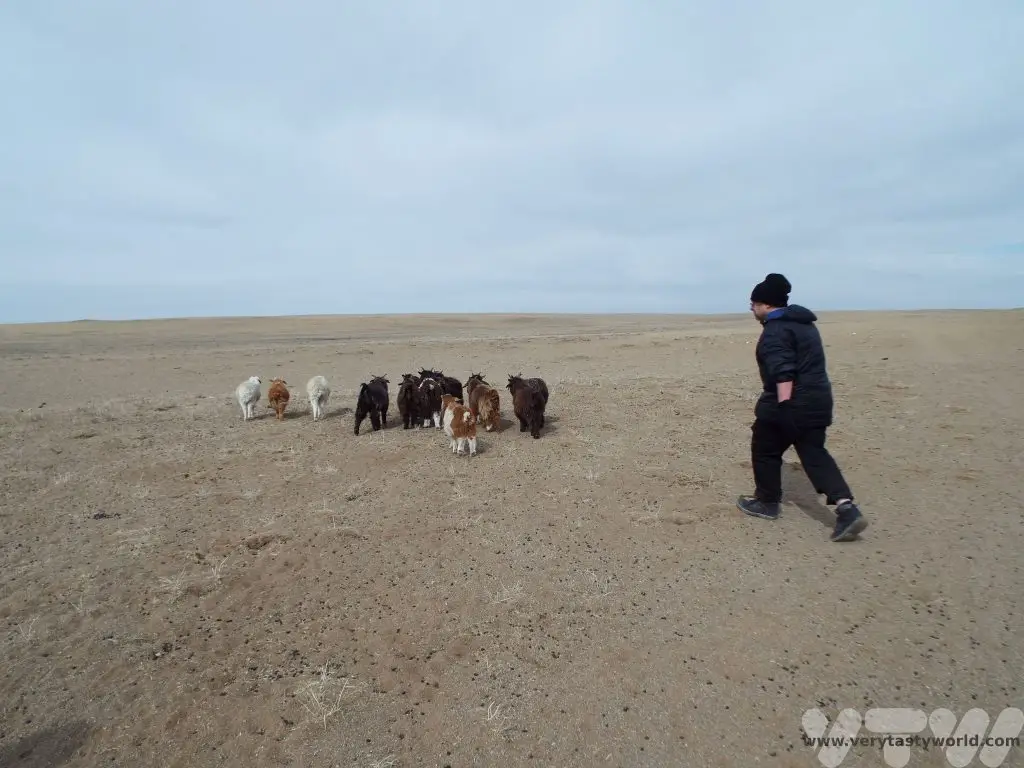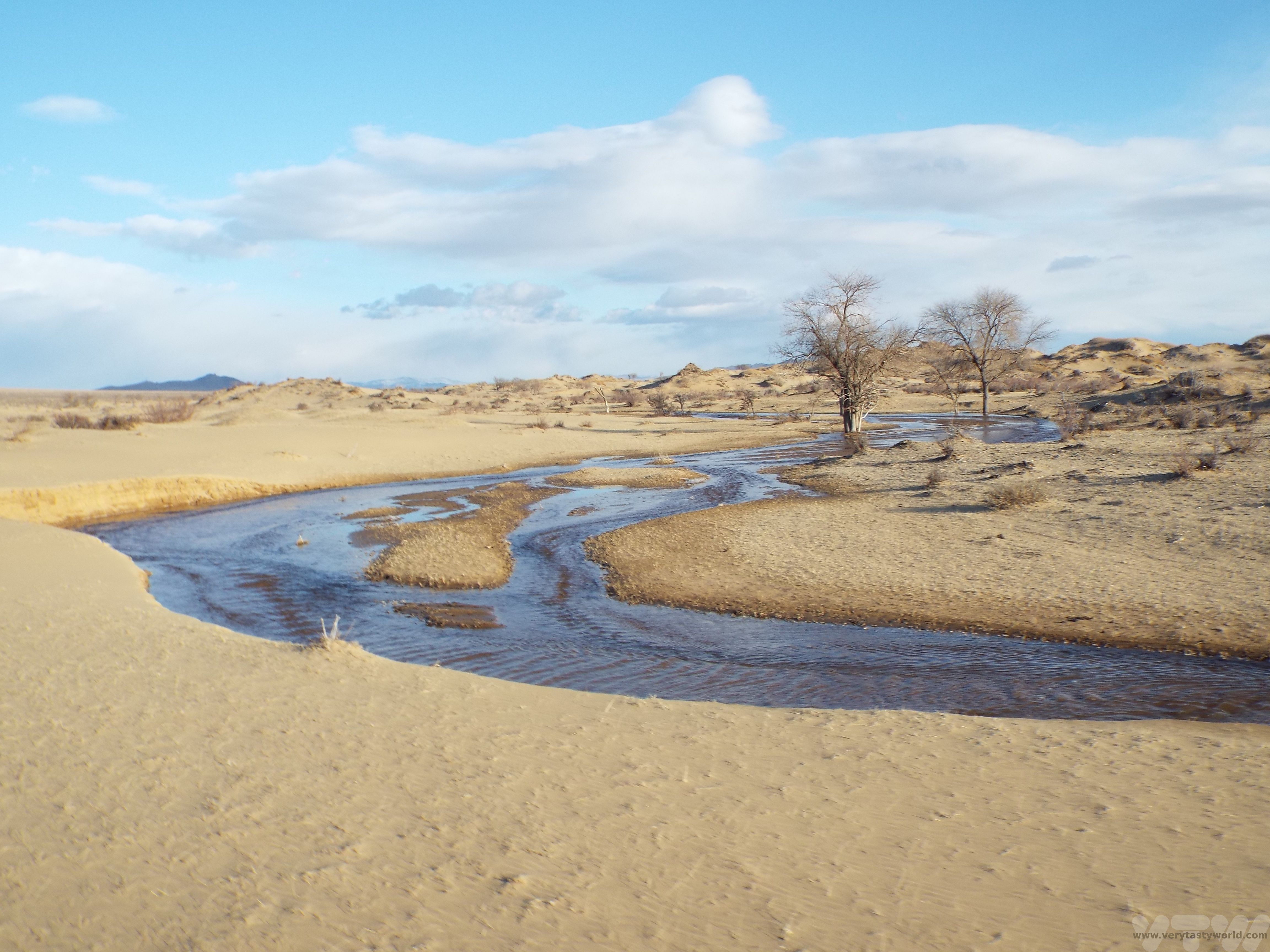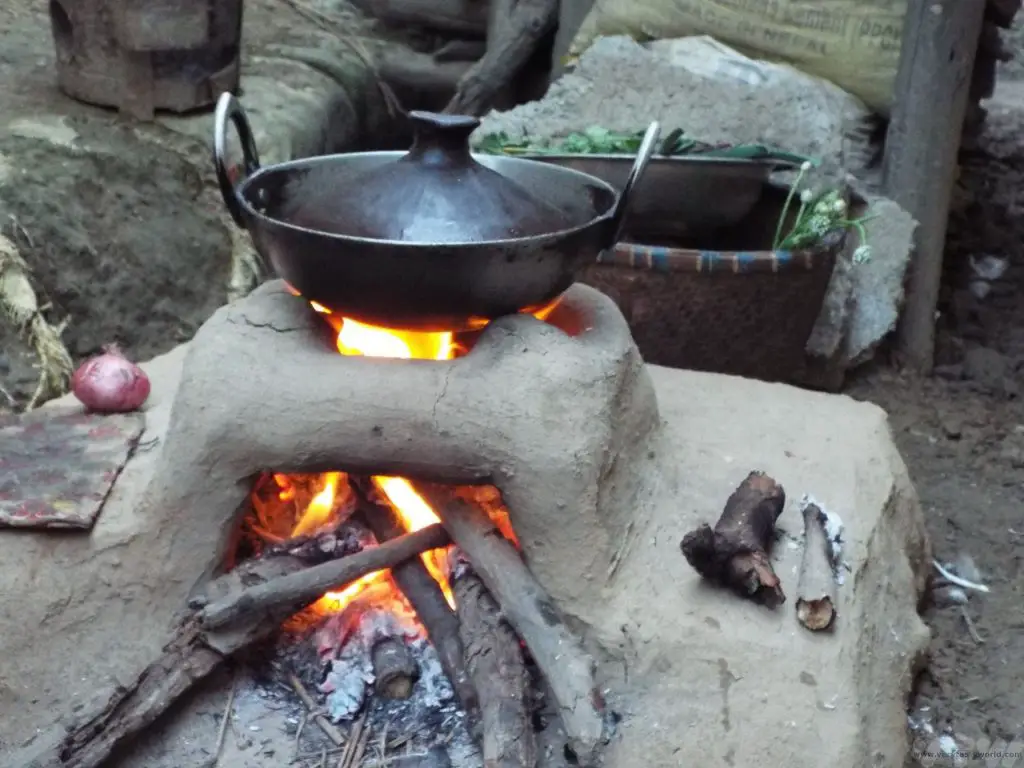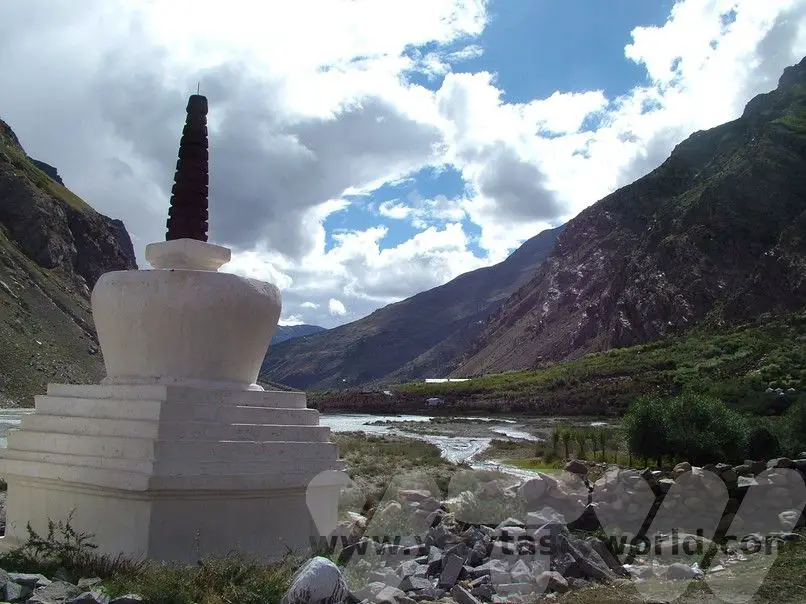Home » Travel Tips & Etiquette (Page 3)
Category Archives: Travel Tips & Etiquette
The Isle of Skye – The Skye’s The Limit
The Isle of Skye is a popular destination in the Highlands and Islands of Scotland. It’s the largest island of the Inner Hebrides, located around 200 miles from Glasgow and it takes around 5-6 hours to drive there. There are some fantastic places to stop off along the way, though, either to stay for a night or two, or just to break up the drive for an hour or so.
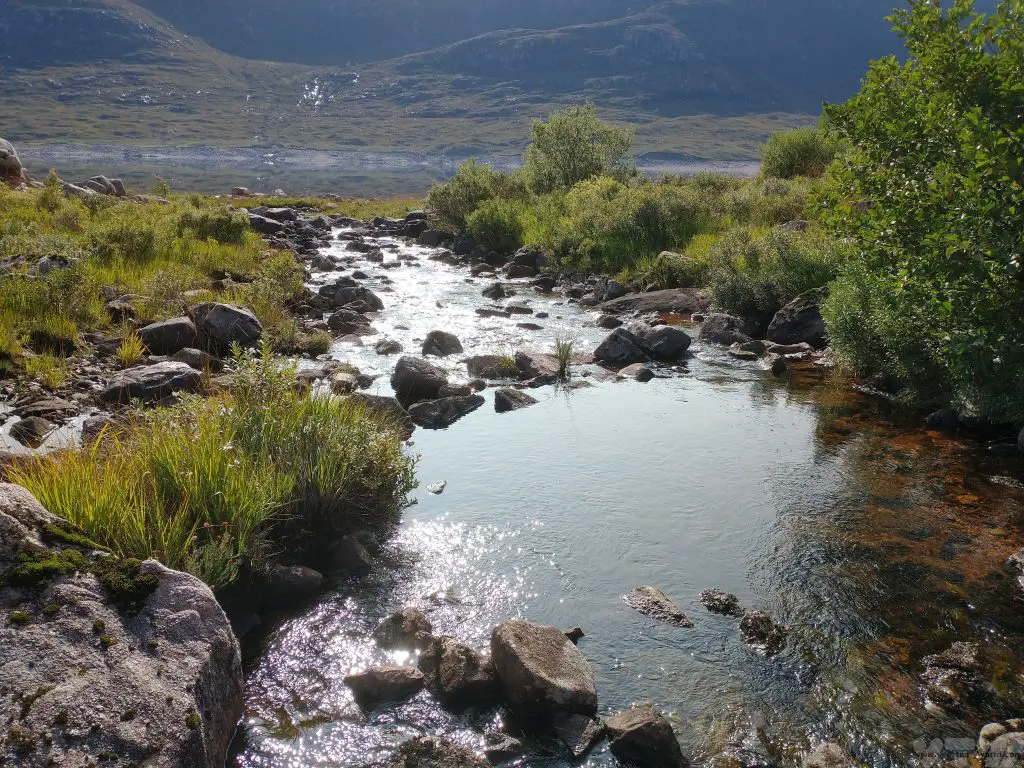
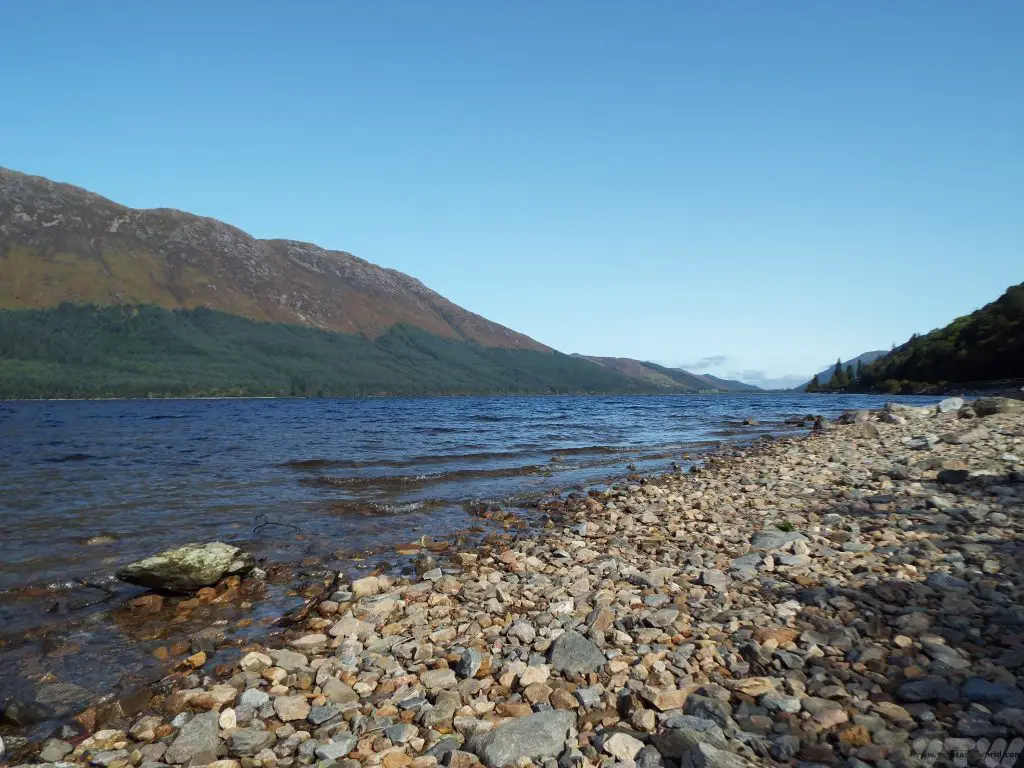
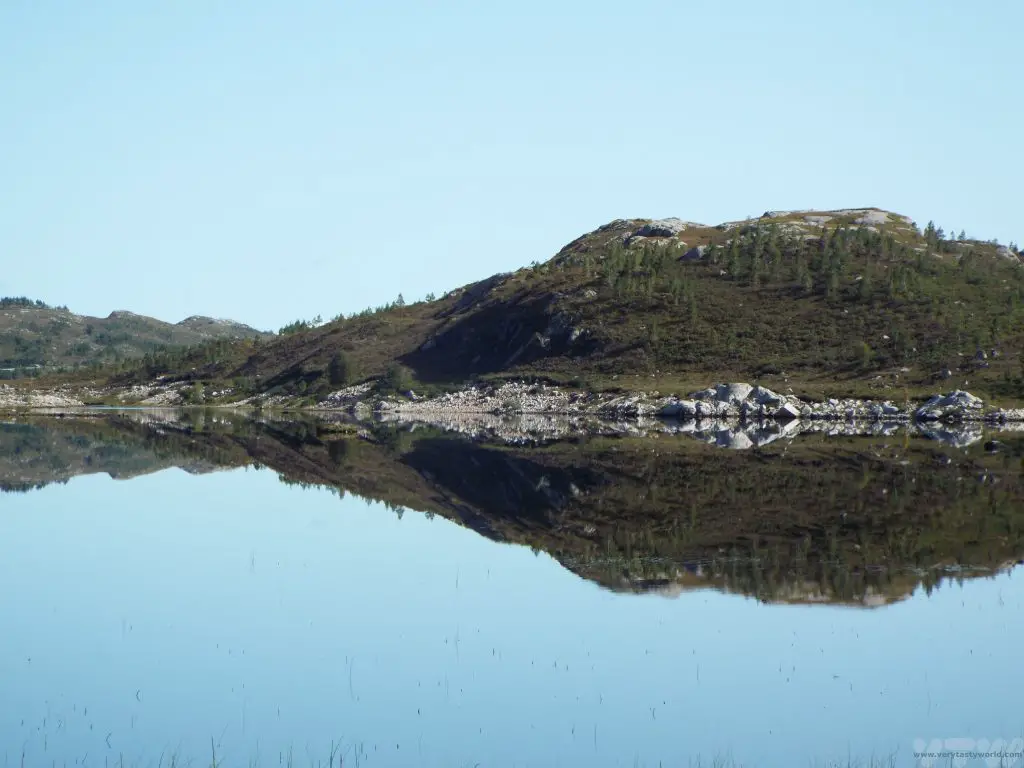
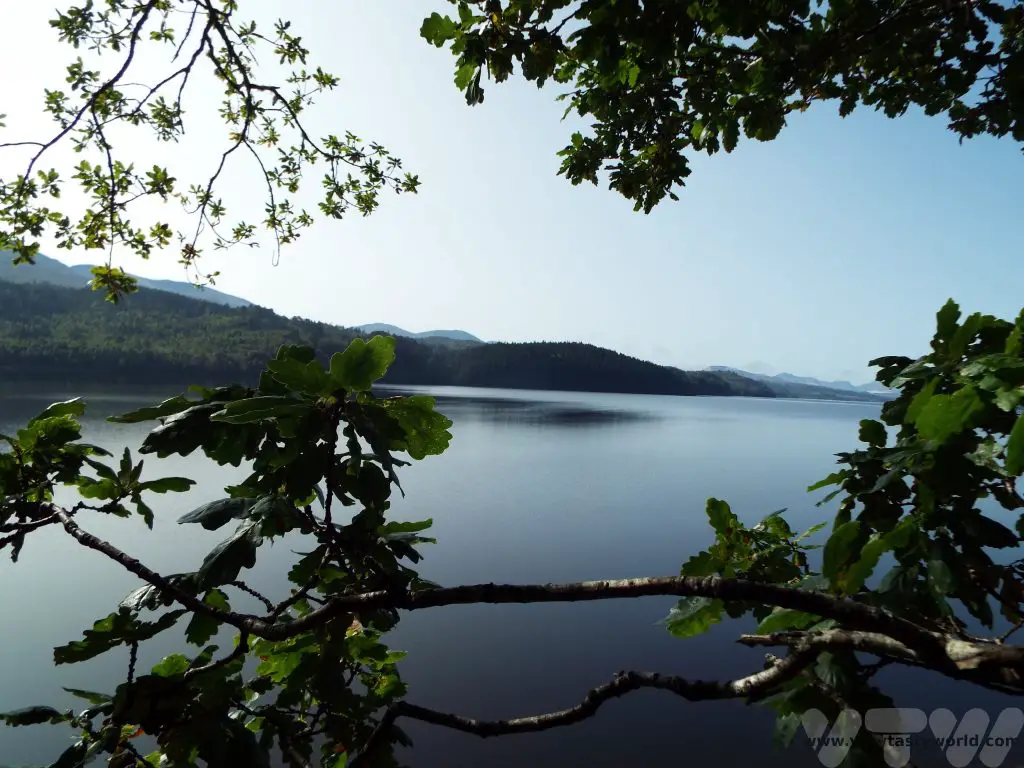
If you are travelling from the mainland you can take a ferry ‘over the sea’ to Skye from Maillaig or drive to the Kyle of Lochalsh and cross the beautiful bridge.
Just before arriving at the Kyle of Lochalsh you can visit the 13th Century Eilean Donan castle located on a small islet just off the coast and accessible via a bridge.
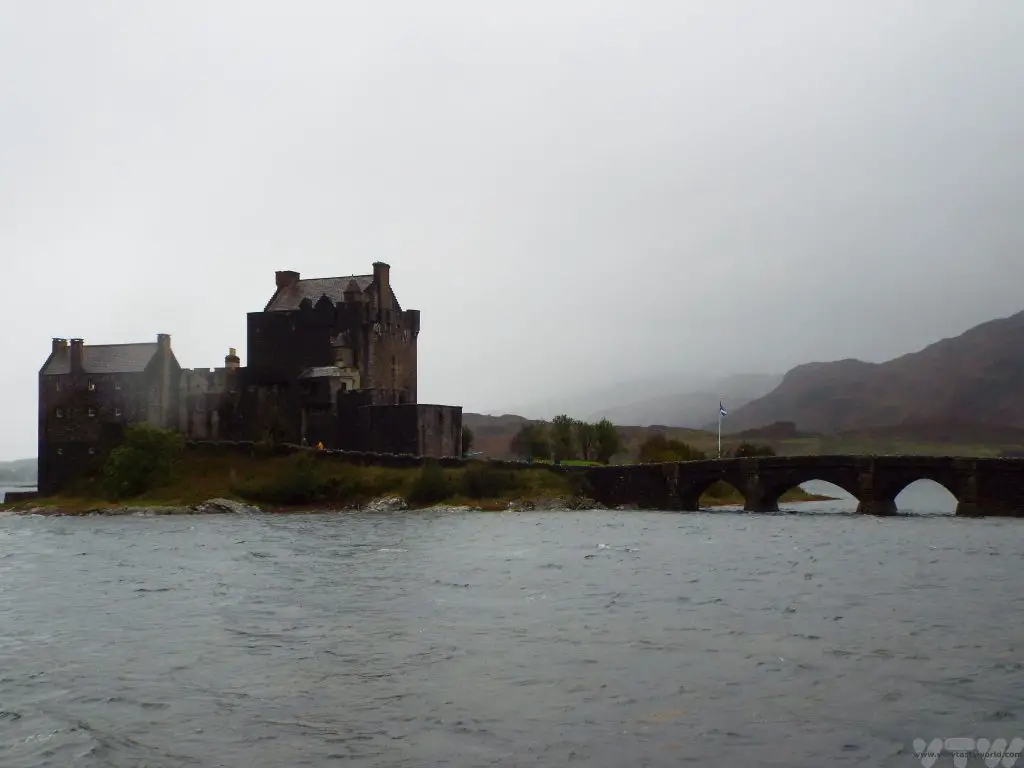

The Isle of Skye is much, much larger than you think it is. You really need a car to be able to explore it. The scenery is spectacular so take it slowly and enjoy a leisurely drive.
It’s worth noting that a lot of the villages marked on the map are very tiny, usually comprising just a few houses. Portree is the largest town on the island and would be a good central location to stay for a few days especially if you are exploring the northern attractions.
We stayed in Broadford which had some nice hotels and restaurants and was closer to the Skye bridge but further from some of the attractions. It meant quite a lot of driving each day, especially as roads on Skye can be slow. But then if the view from your bed looks like this, you really can’t complain.
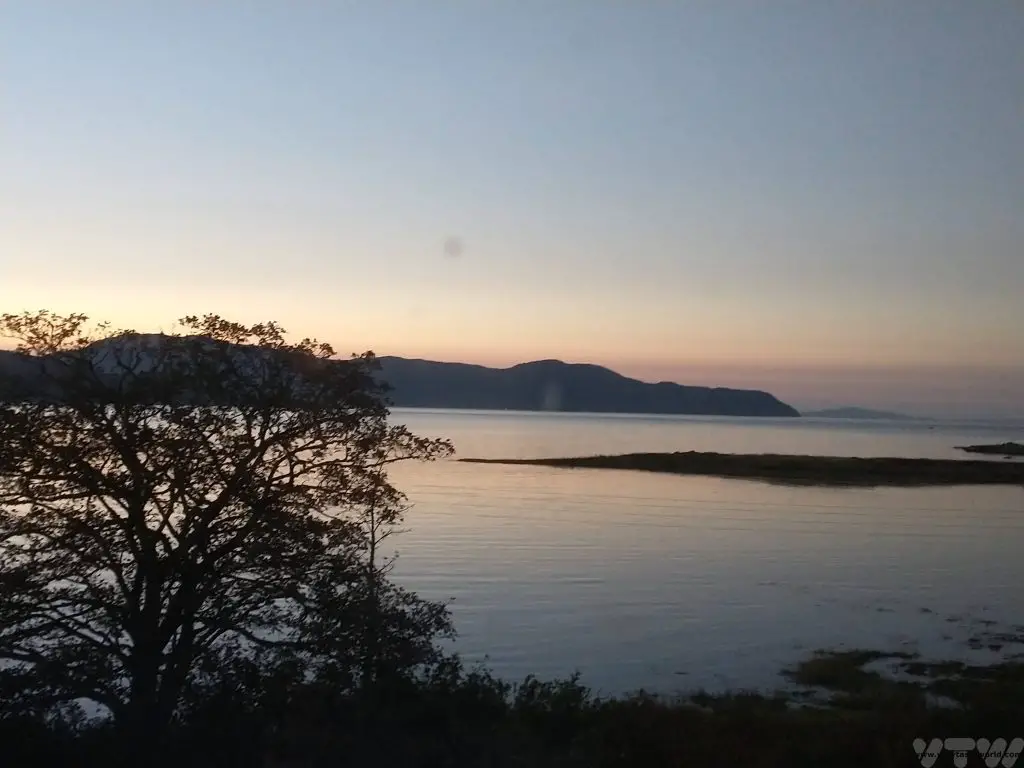
Oh yes, our hotel had a Cornetto hotline – free ice-cream on demand – which is a policy that should be implemented in hotels across the world.

The Northern Part of the Isle of Skye
The Isle of Skye has some fantastic scenery although it can get crowded as it is a popular destination. A lot of the roads near the main geographical attractions are single track and it’s worth knowing the convention for driving on these sort of roads: Single Track road advice – Skye Guides Look ahead to see traffic that may be approaching and locate the next passing place. Only use the passing place to the left. If there is one on the right, wait on the correct side of the road and let the approaching car use the passing place.
If you have just passed a passing place but you can see that it would be difficult for oncoming traffic to have to reverse their car in order to allow you to pass (for example, if they have to reverse up a hill or around a corner) do the decent thing and reverse up. Also, if you are driving more slowly than other traffic, it’s polite to move into a passing place and stop briefly so that other drivers can overtake you. Take your time. The scenery around you is guaranteed to be gorgeous so relax and enjoy the drive.
There are also loads of walking opportunities across the whole island. The car park for the Old Man of Storr was absolutely chocka so we skipped that.
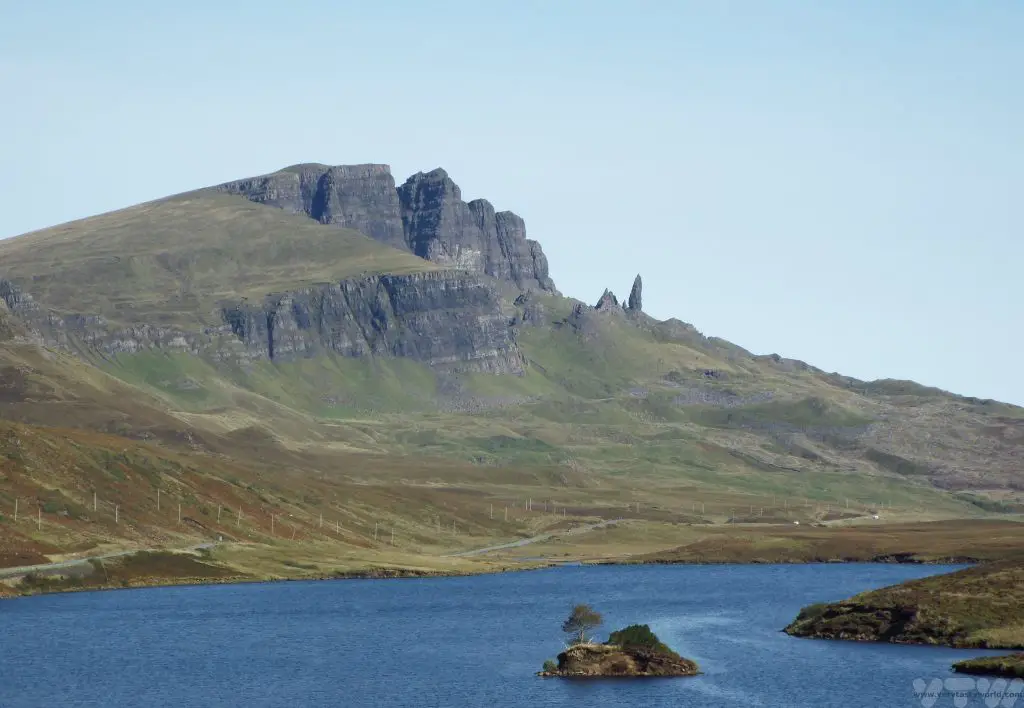
There are car parks scattered along the road for much of the northern part of the island and they are mostly free but you have to pay to park at some of the more popular attractions. They are usually not very far from a fantastic view.
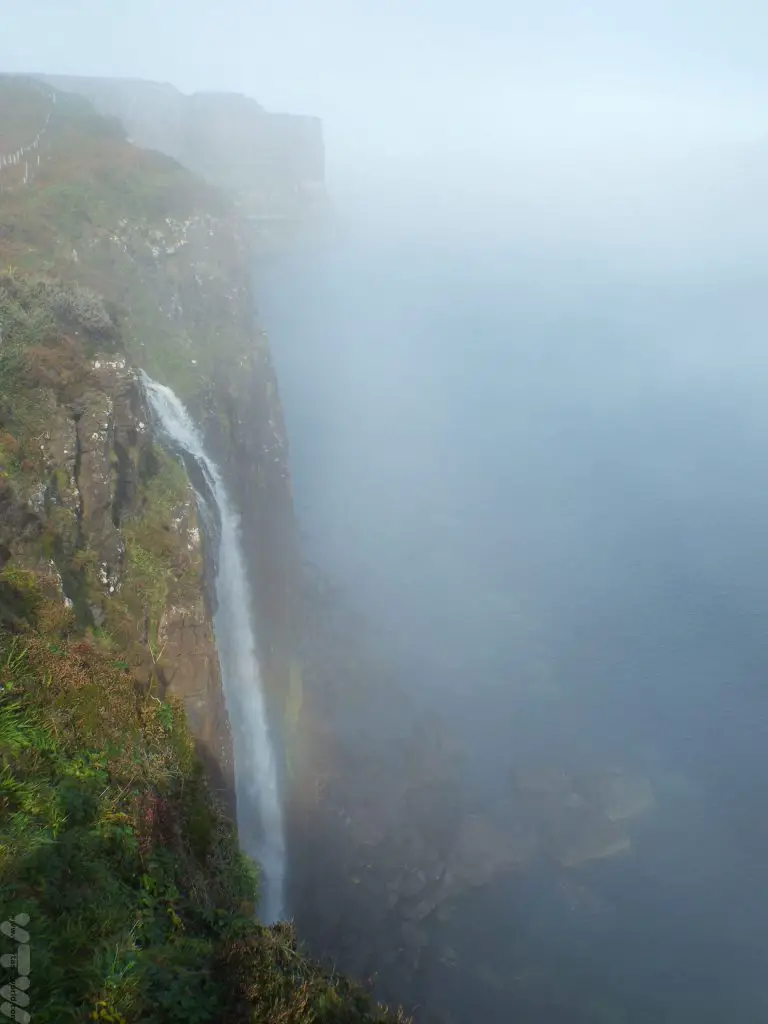
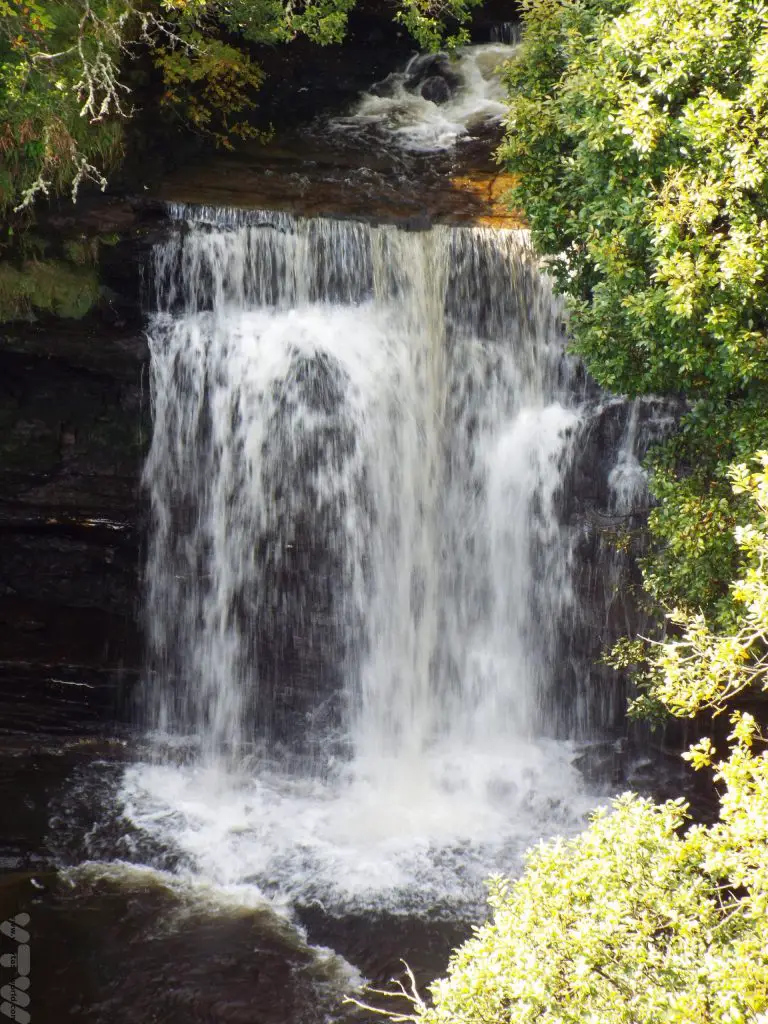
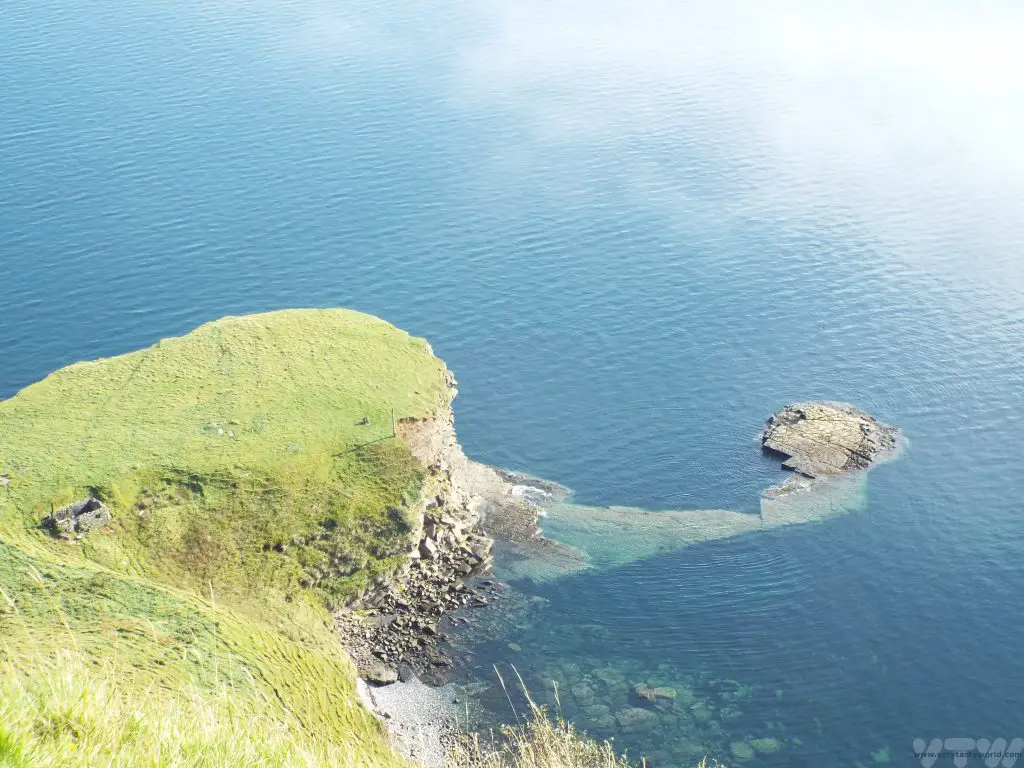
The Quiraing offers an amazing walk. Located right at the north of the island via a single track road the car park is located at the top of the hill. You can do a circular walk or just trek along the path and back. It’s absolutely manageable for the average walker but there are some sections where you may need to scramble. And the views are splendid.
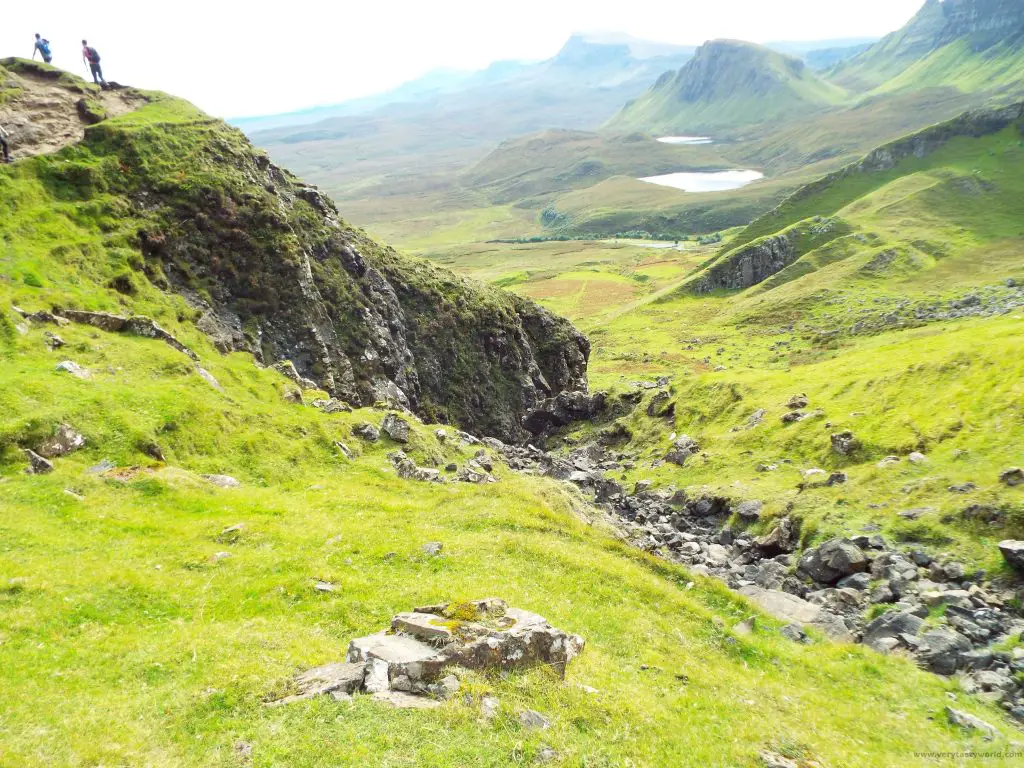
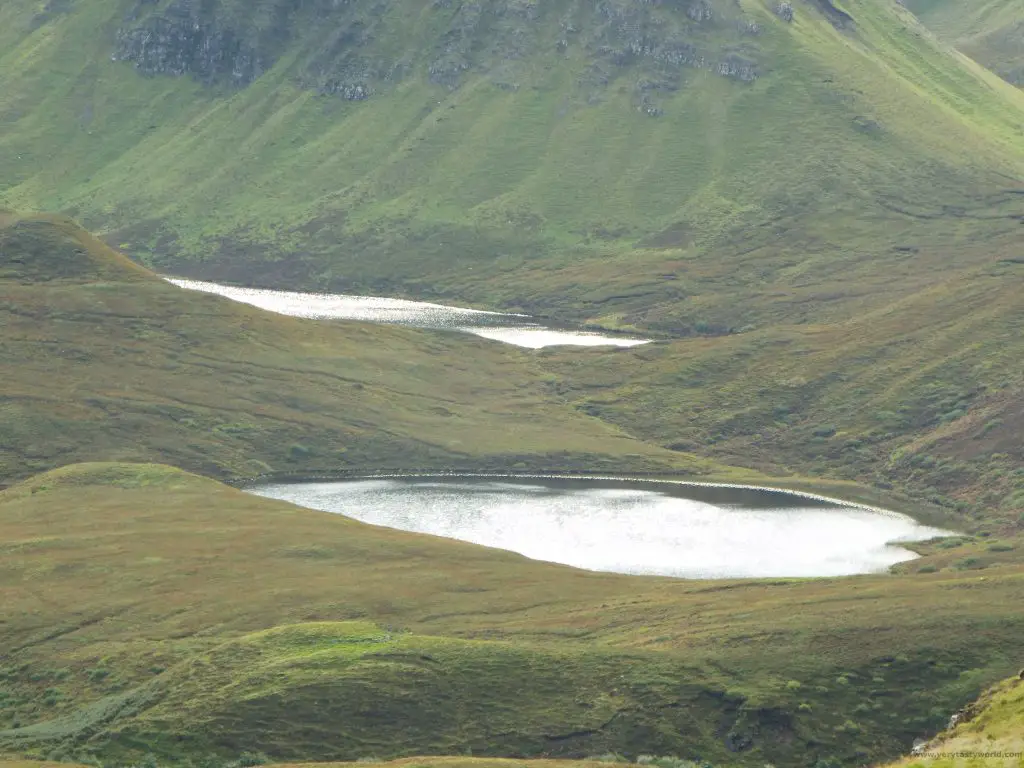
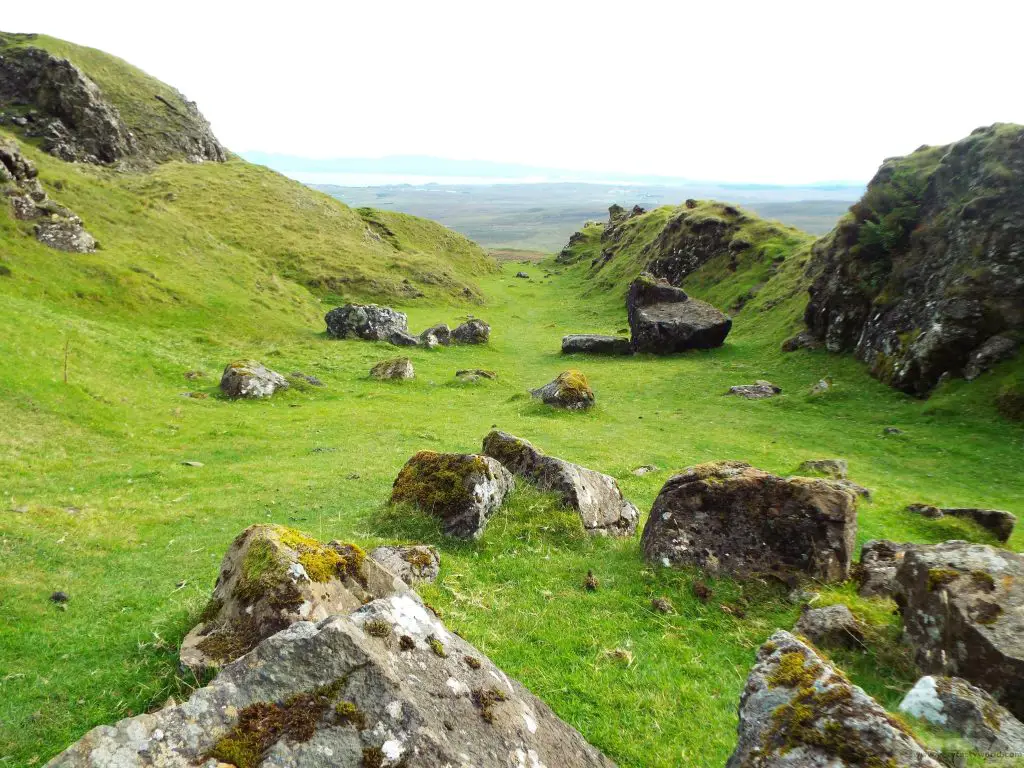
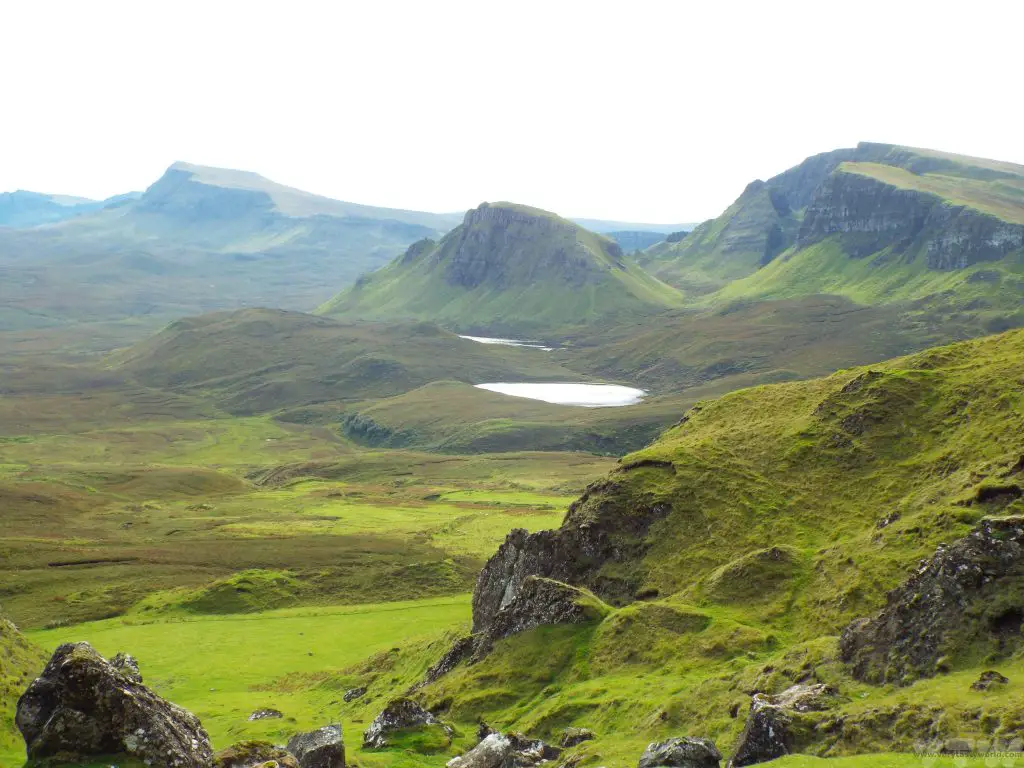
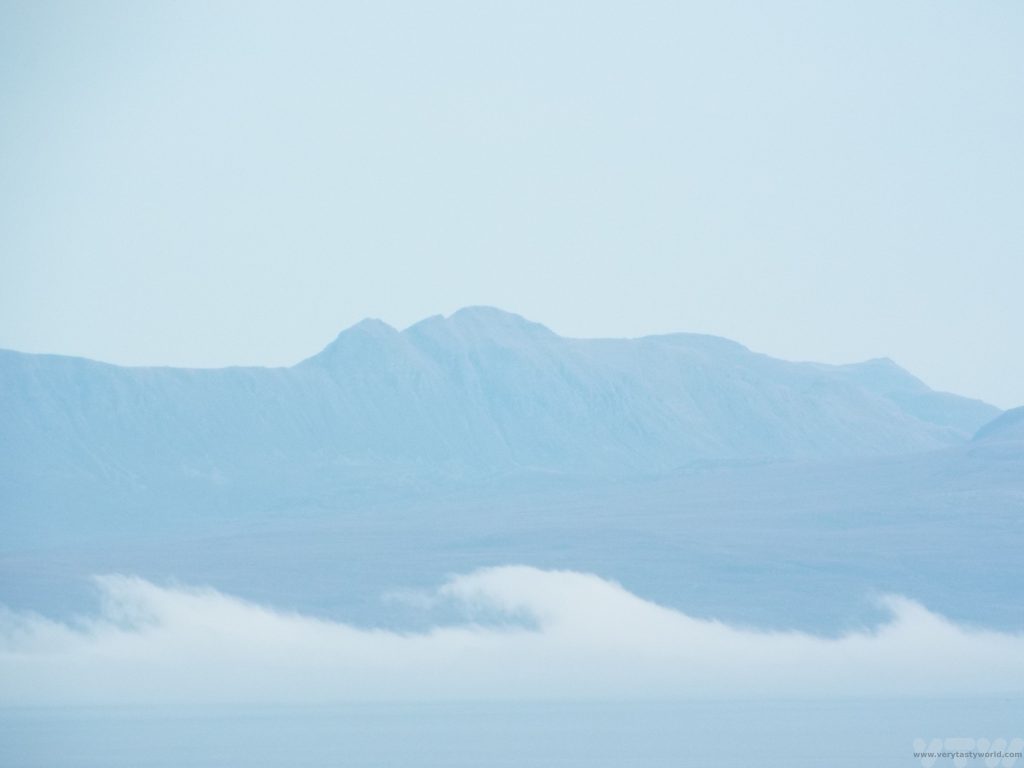
Carrying on over the top of the hill from the Quairang takes you to Uig, which has a pleasant harbour and also the Skye Brewery which makes cracking beers. The beers on offer are broad in range but because it was a cold and windy day we opted for two of their darker varieties. (Which, of course, we imbibed later that evening as it was a long-ish drive back to the hotel.)
Skye Tarasgeir beer has a wonderfully complex flavour and you can really taste the peat on the malts. It’s light on the palate initially but the flavour develops and lingers on the finish. A fine quaffable beer.
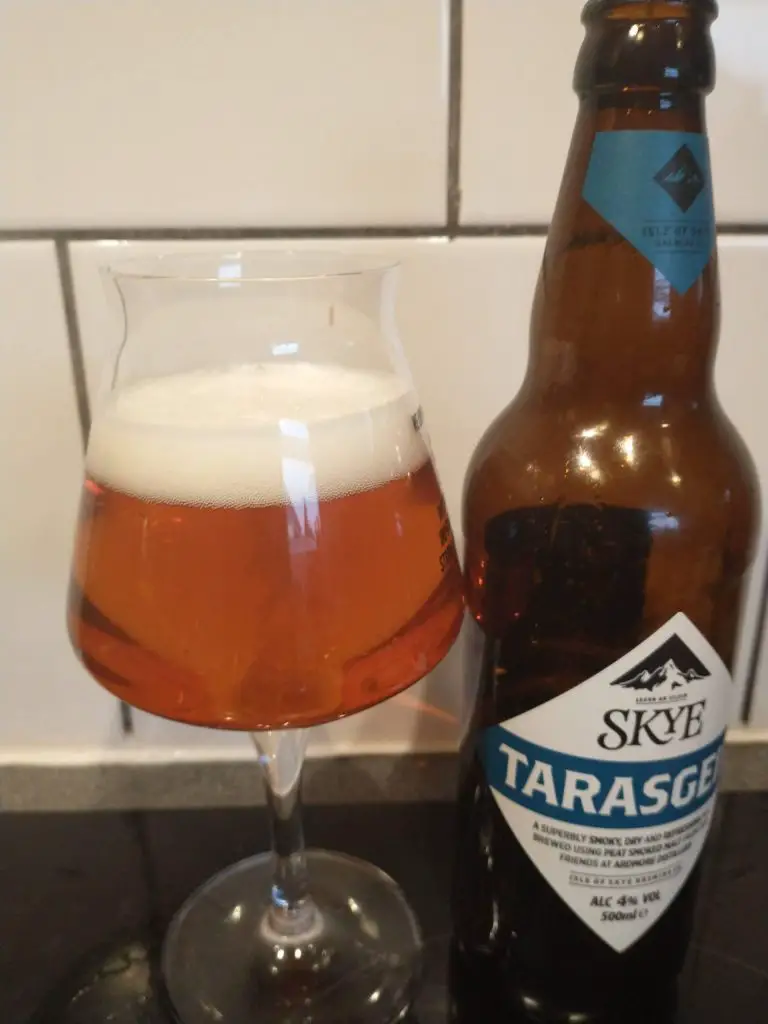
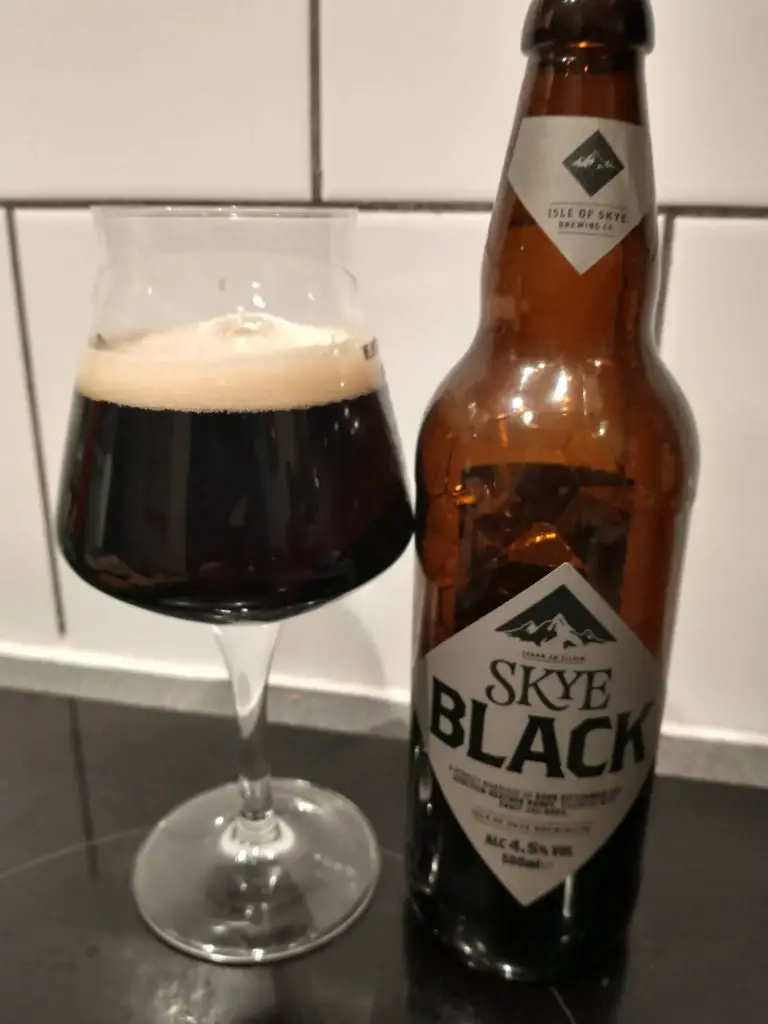
As expected, Skye Black is a very dark. On first taste it feels like a porter. Roasted malts give bitterness but this is tempered by the addition of local heather honey which comes through subtly. It also has rolled oats and hops which add to the flavour to the beer.
Close to Uig is the Fairy Glen, a delightful landscape.
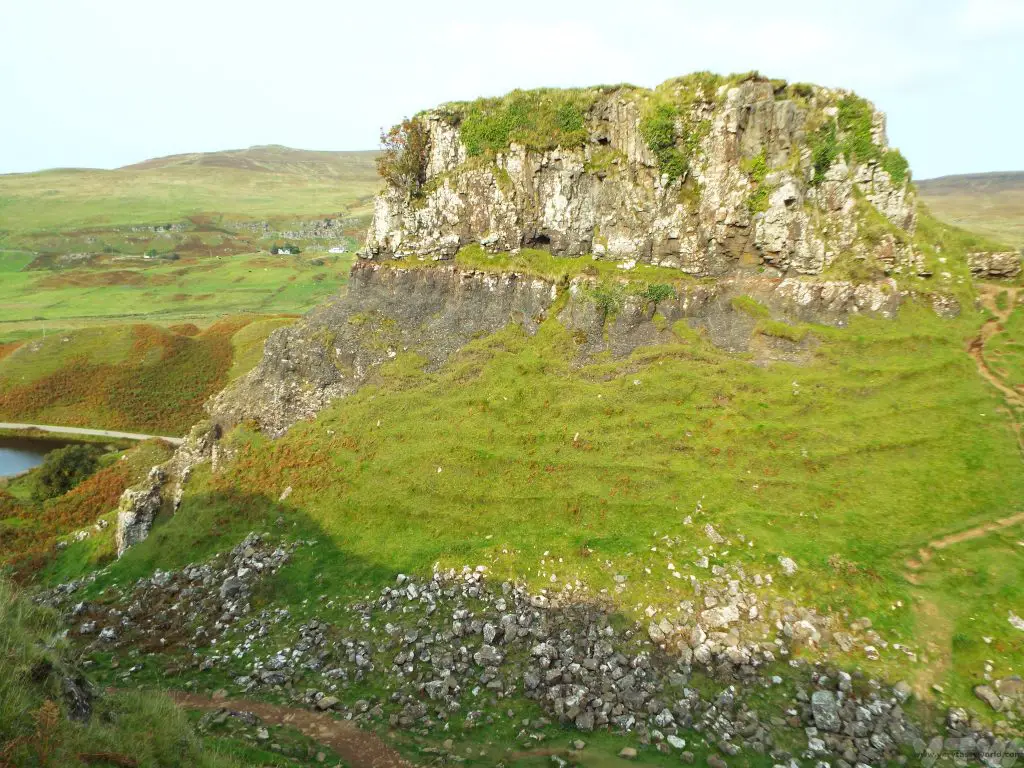
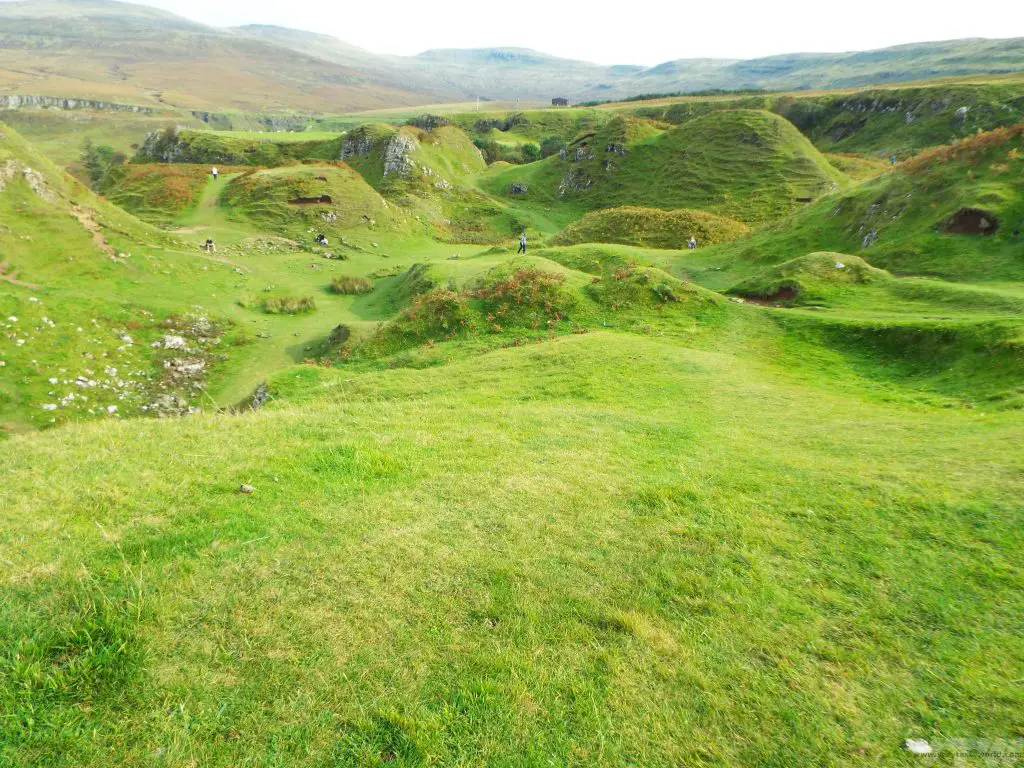
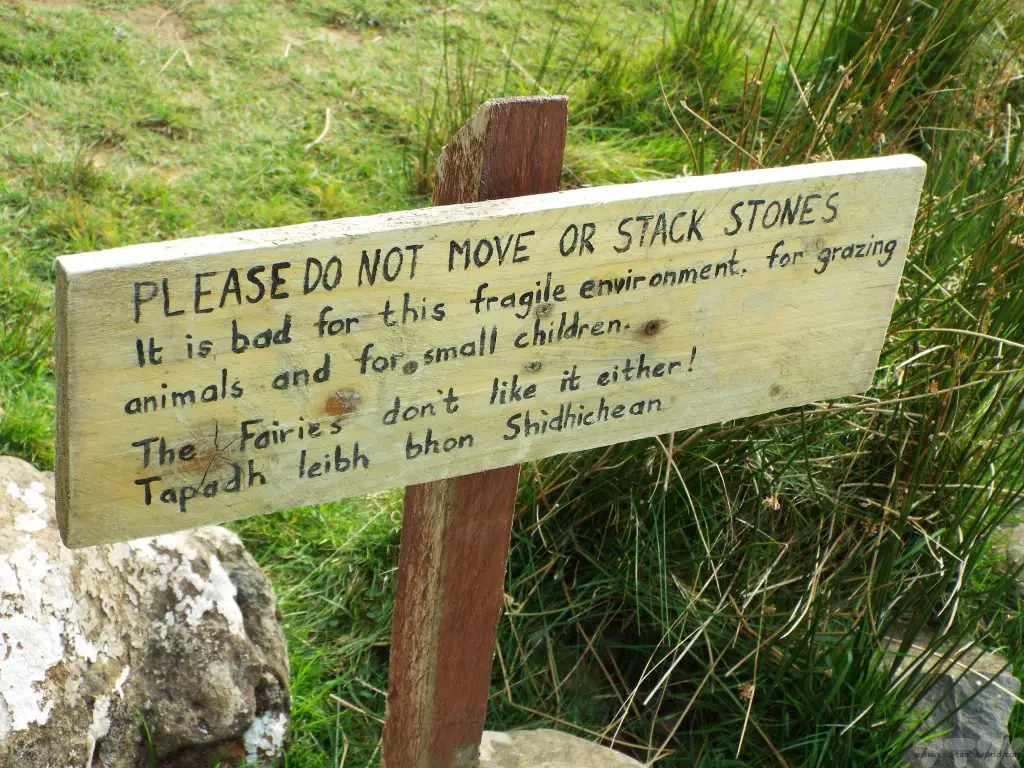
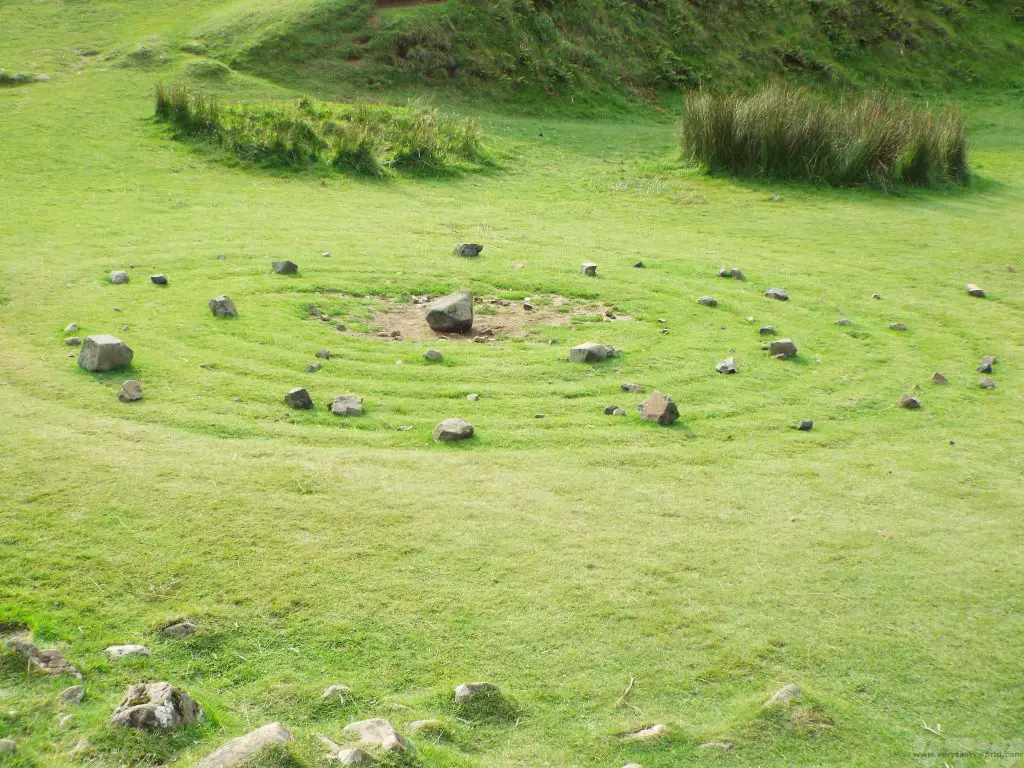
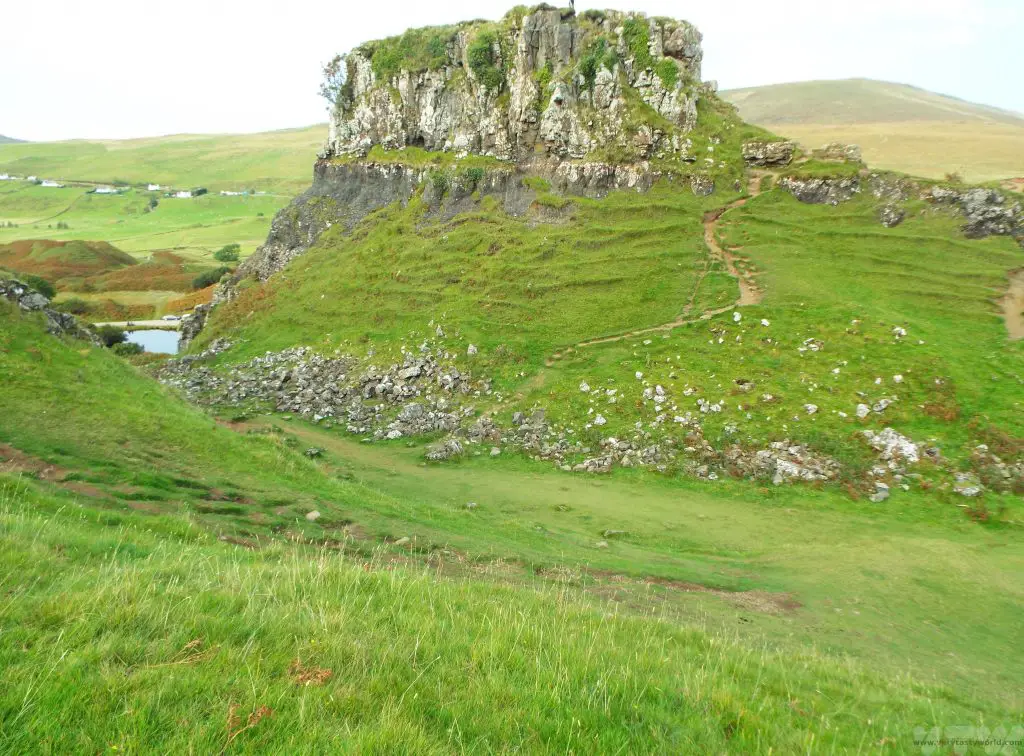
Neist Point is a remote lighthouse located on a peninsular and again offers spectacular and dramatic views. It is possible to walk to the lighthouse (just park with all the other cars along the roadside).
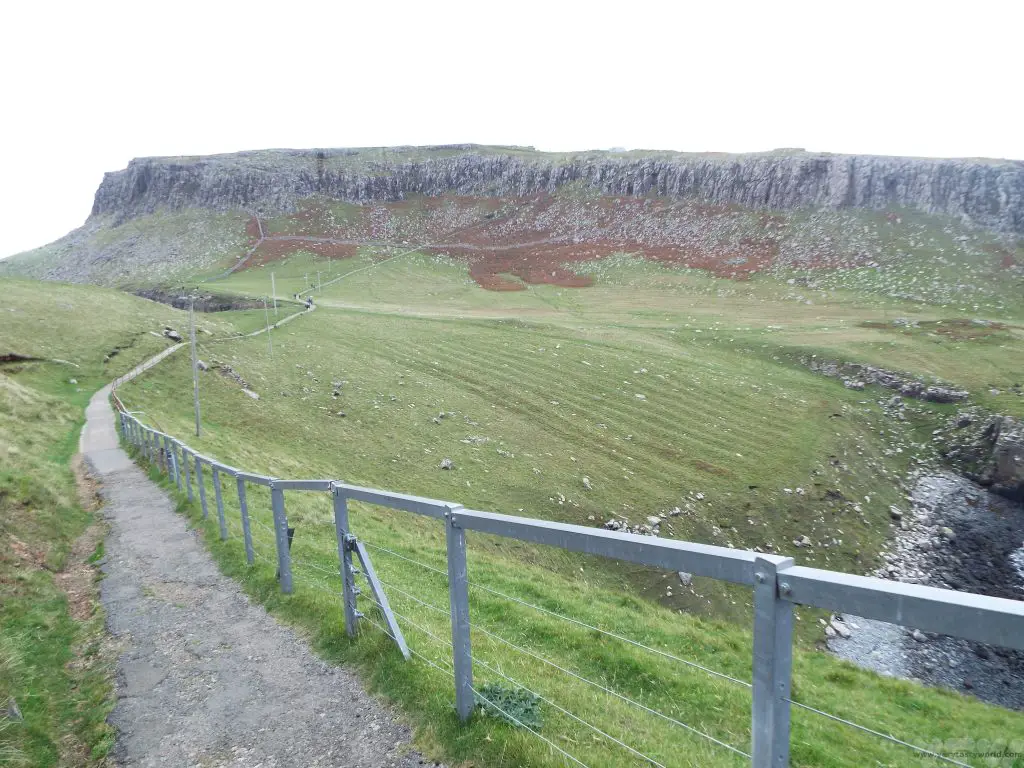
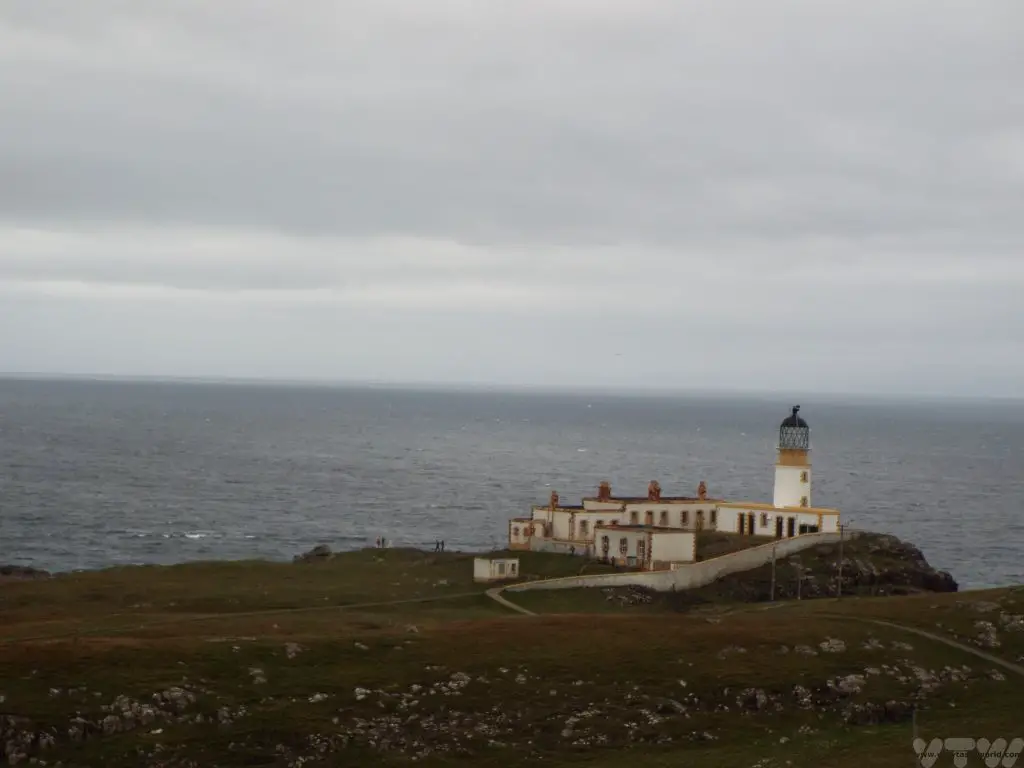
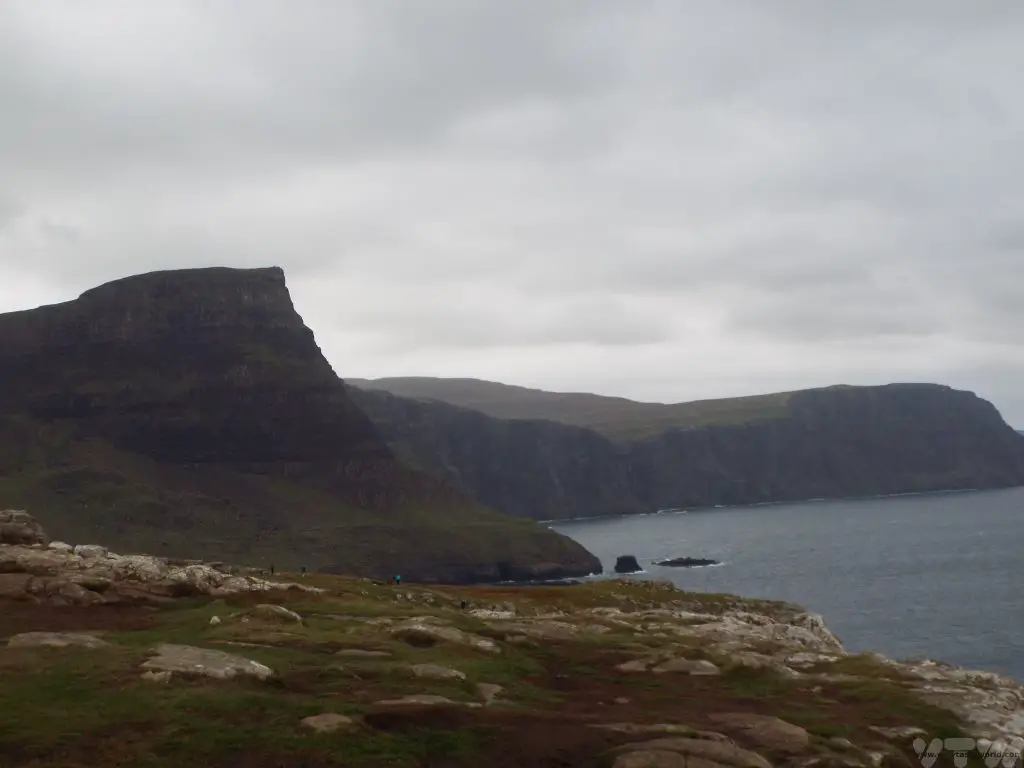
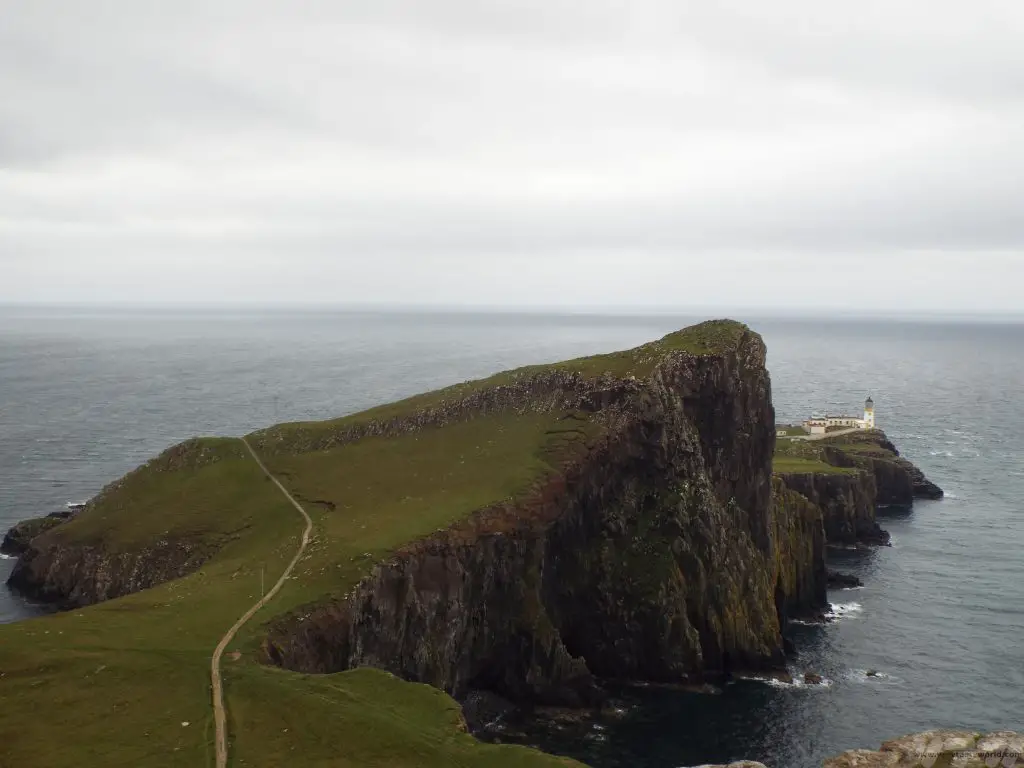
Further south on the western coast, the Talisker Distillery offers tours but can get very busy. It’s the oldest and probably the best known whisky distillery on the island. It’s well worth booking a tour in advance if you’d like to visit. Even the shop had a half hour queue when we turned up.
Leaving the Isle of Skye
On leaving the Isle of Skye and heading back into the Scottish mainland there are some other interesting stop-off points.
We were generally blessed with uncharacteristically good weather for much of our trip to Scotland. Unfortunately on our way back from Skye the rain swept in and, while we went to the Five Sisters of Kintail viewpoint, reputed to be one of the finest views in Scotland, we didn’t experience it at its finest.
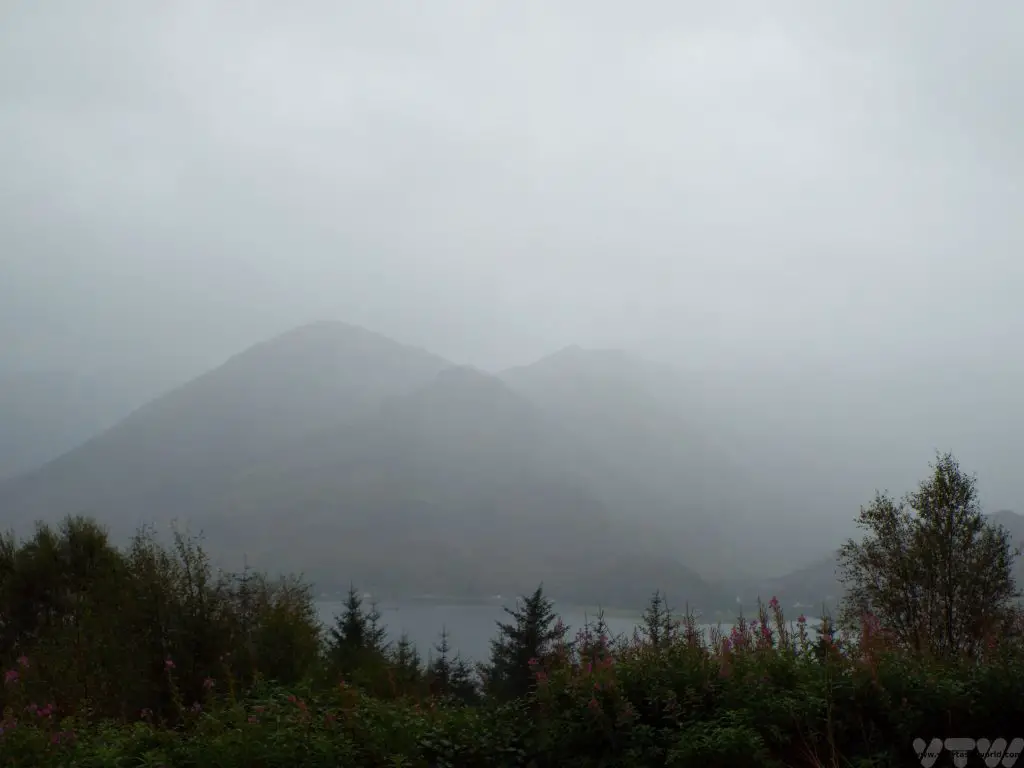
The Glenelg Brochs, Dun Telve and Dun Troddan, are amazing dry stone constructions over 10m tall with a concentric design that provides an outer and an inner wall. They date back to the late Iron Age and are around 2000 years old.
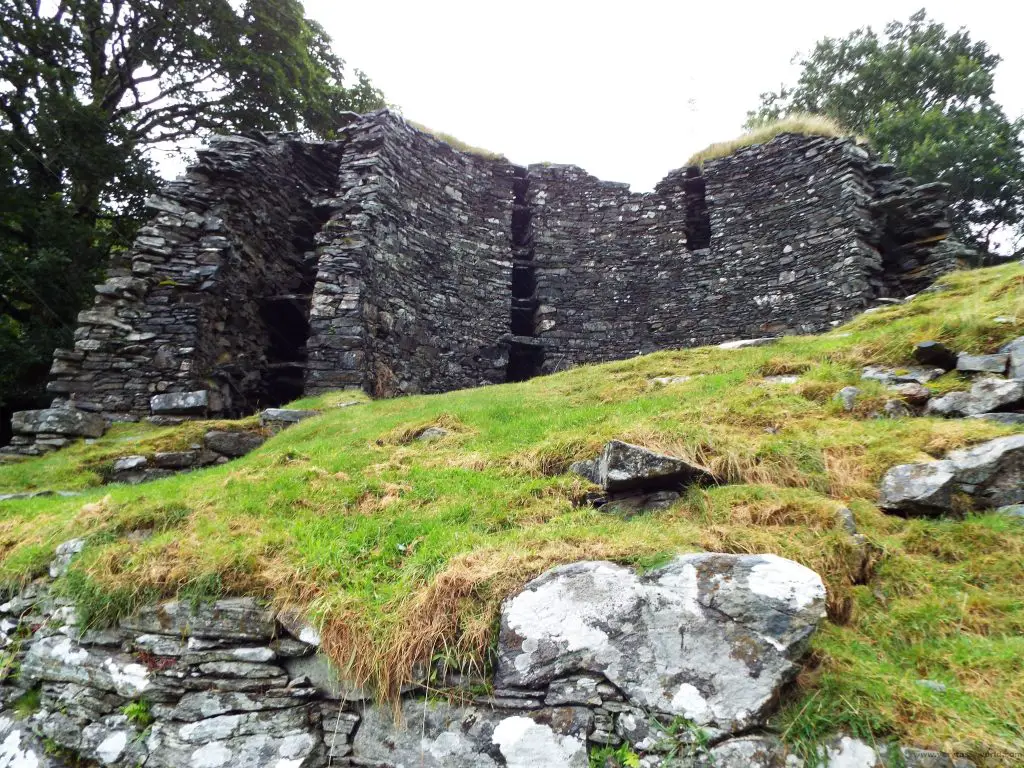
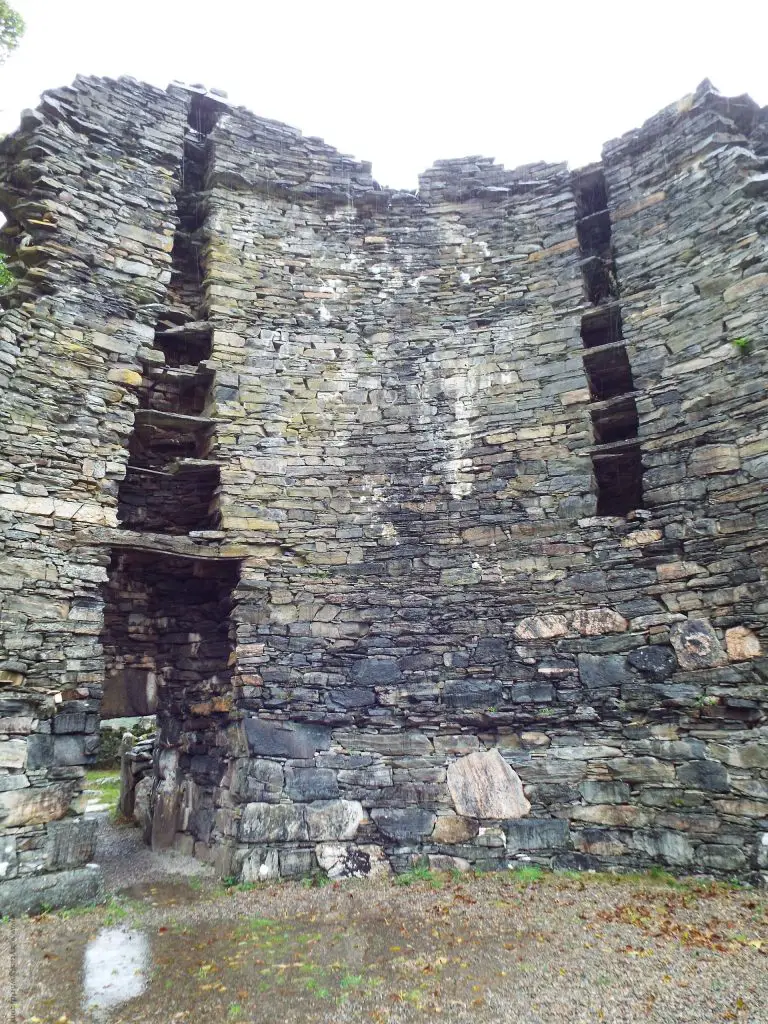
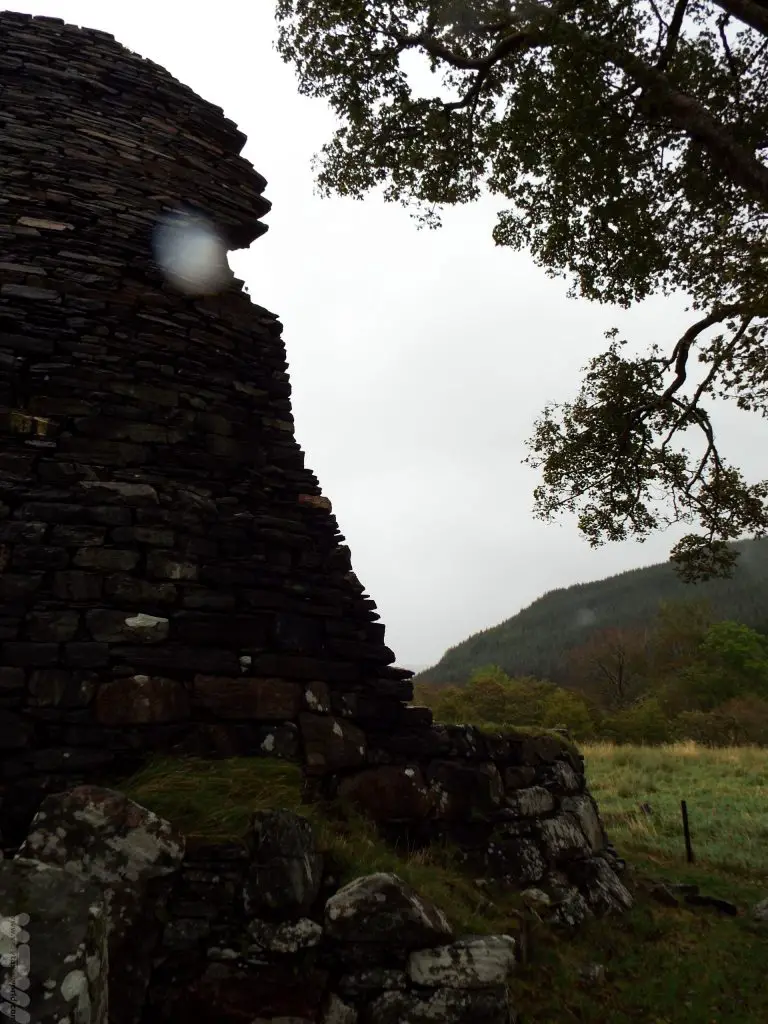
They are something of a cross between and fort and a mightily impressive house. You are free to wander around them.
Incidentally, the little village of Glenelg has probably the coolest twinning on the planet.
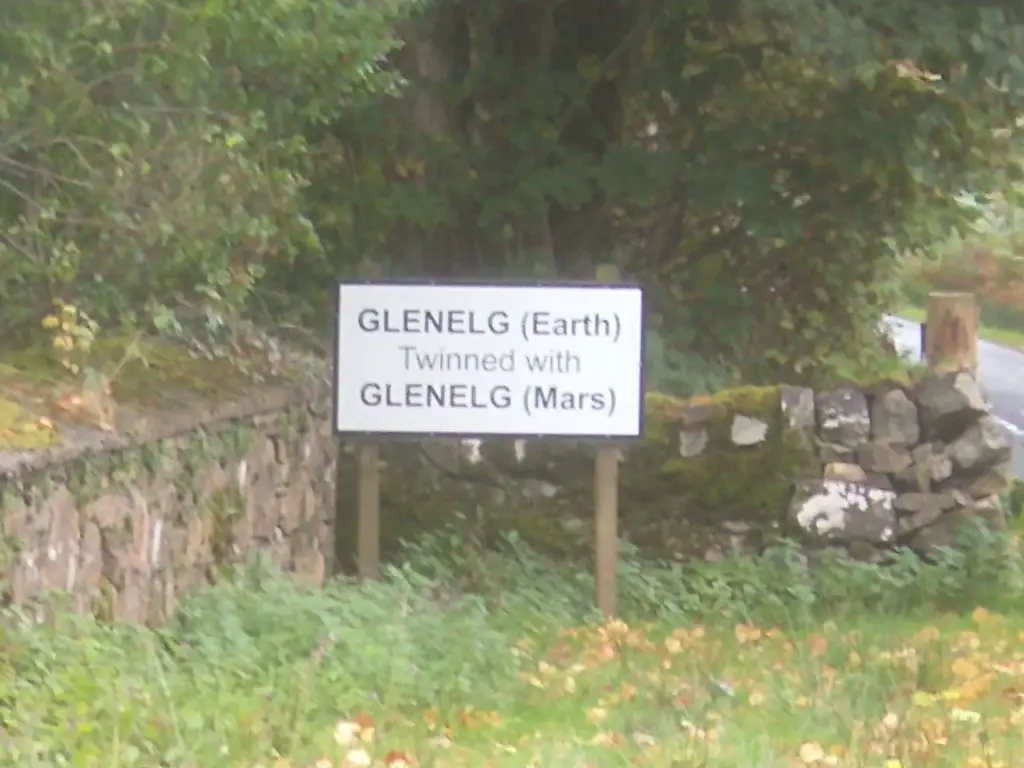
Related Posts You May Enjoy

The Maipo Valley in Chile
You’re the Wine That I Want
Less than an hour’s drive from the bustling capital Santiago is Chilean wine country. The Maipo valley is ideally located for growing vines – a combination of perfect soil, altitude and climate.
Concha y Toro is probably Chile’s most famous wine producer – its wines are exported all over the world. Their working vineyard isn’t available to visit, which is a shame, but just outside the village of Pirque they have a visitors’ centre whereby you can tour the grounds and cellars as well as visit a very big shop. There are tours available in English and Spanish which all have a set starting time.
The vineyard was established in 1883 by Chilean businessman Melchor Concha y Toro who recognised the potential for winemaking in Pirque. He procured French vines from Bordeaux and invested in the equipment needed to start producing wine on a grand scale.
You get to see the exterior of the family house, its gardens and a display areas showing the different grape varieties with commentary on how the grapes are cultivated.
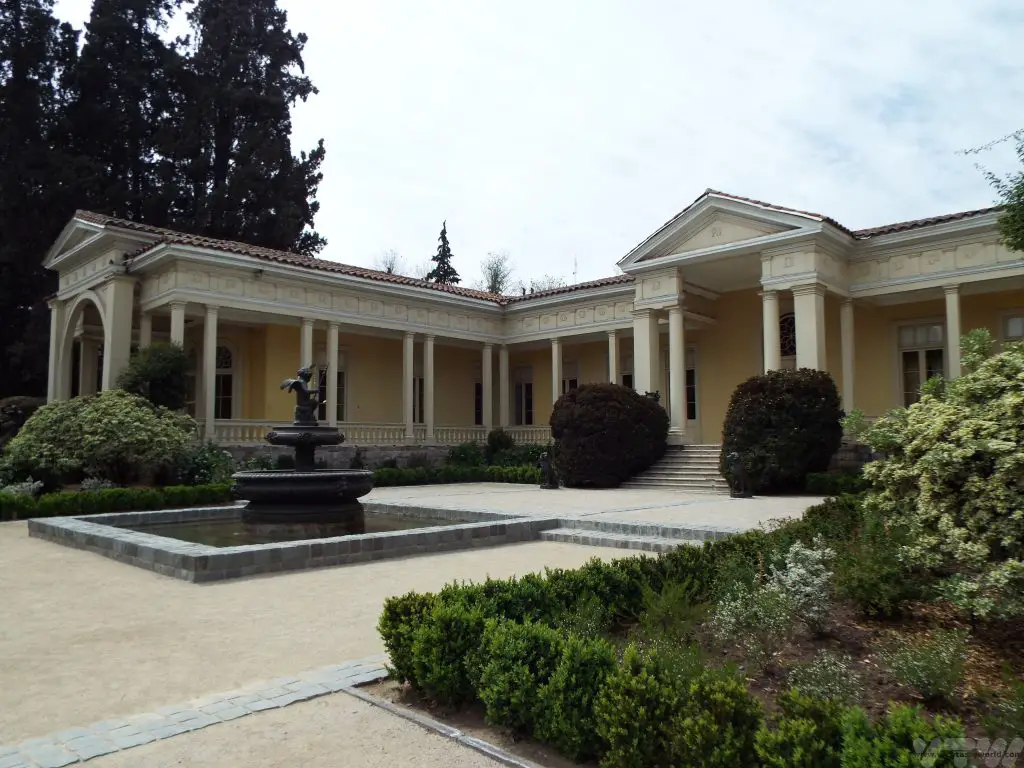
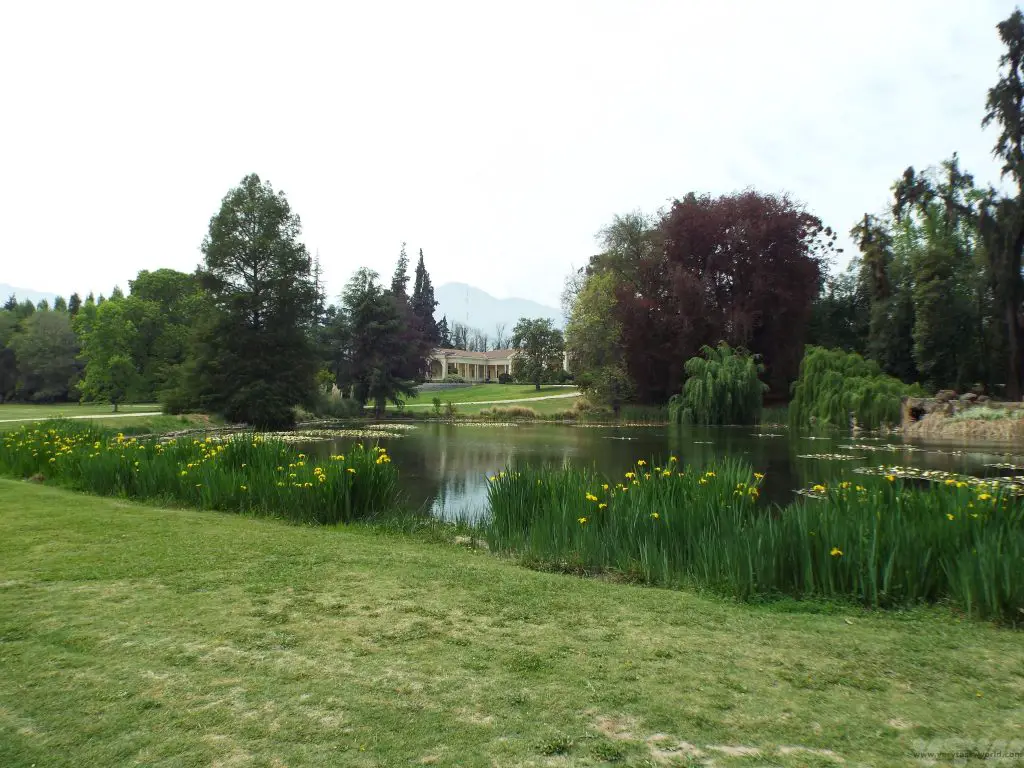
Then it’s into the cool, cool cellars where you can see lots of barrels and a sound and light display.
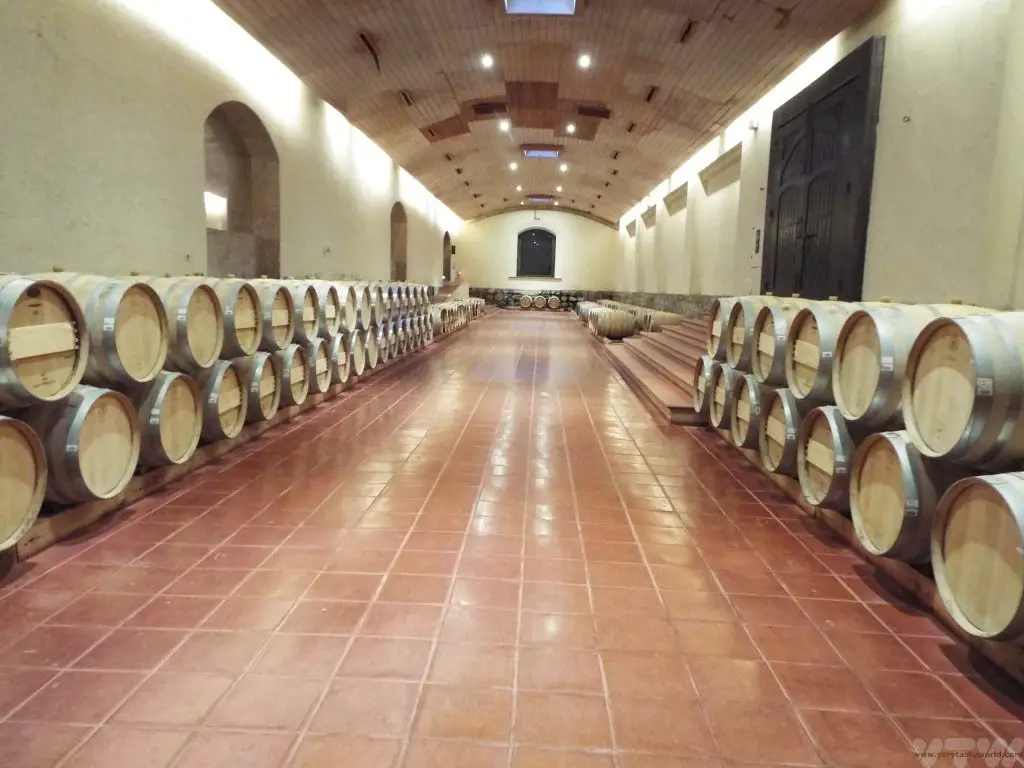
There was a legend that in the early days of the winery, despite the cellars being locked, bottles of wine used to go missing overnight. The owners started a rumour that the devil lurked within the cellars. And since that rumour circulated, not a single bottle of wine ever went missing again.
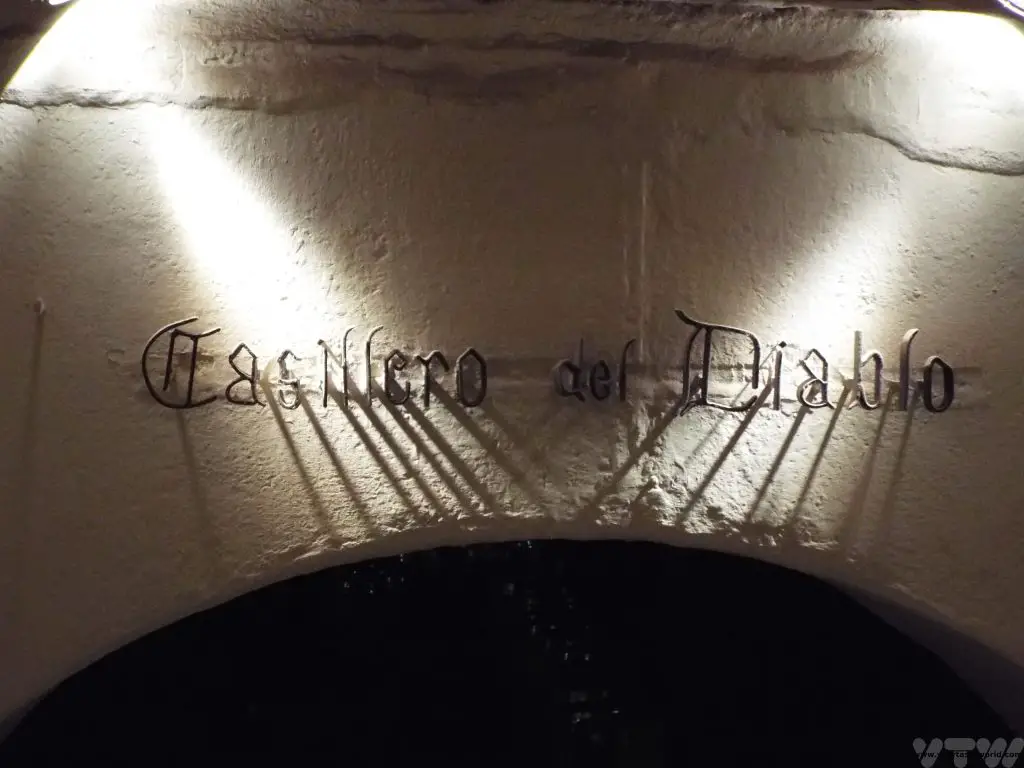
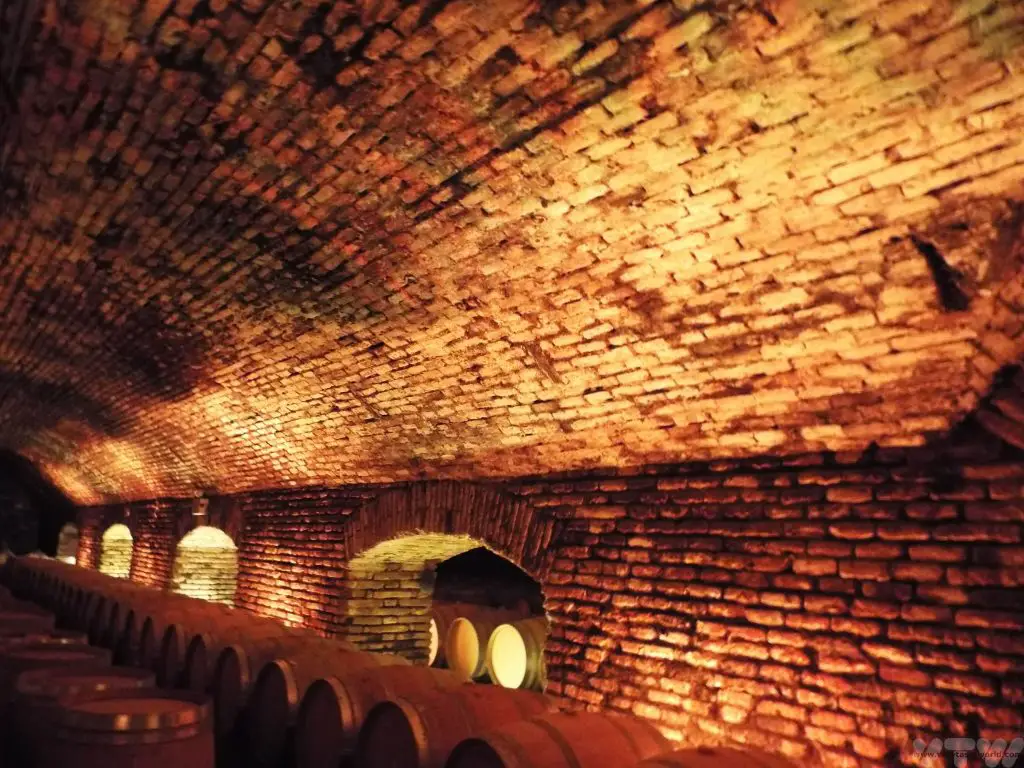
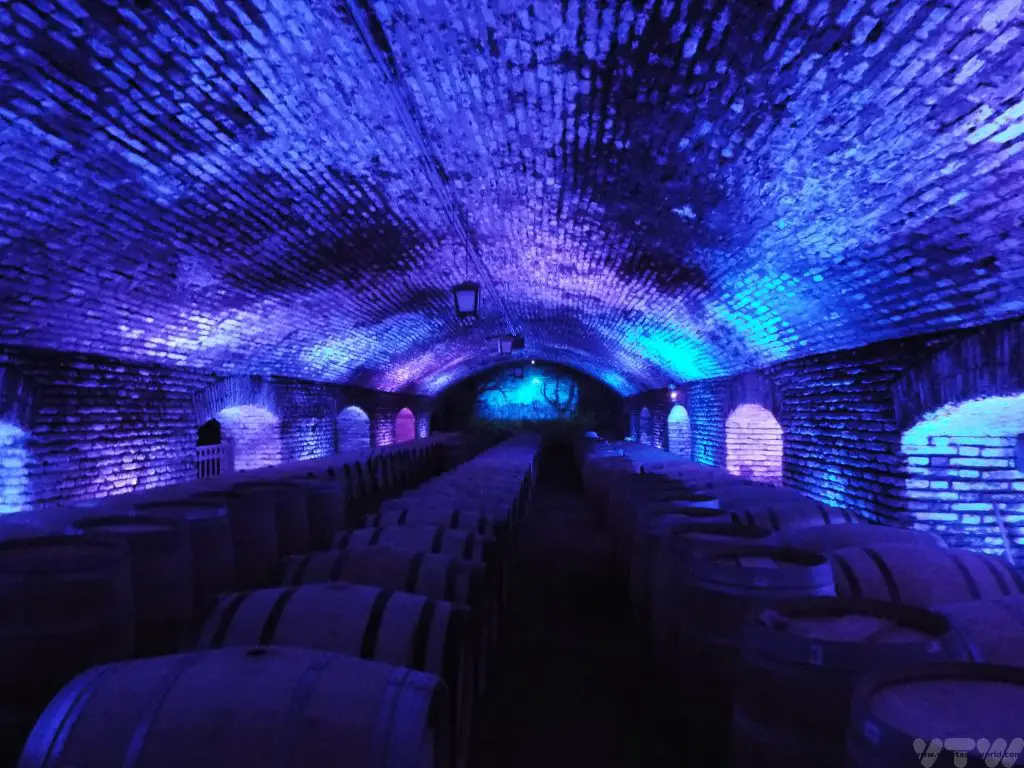
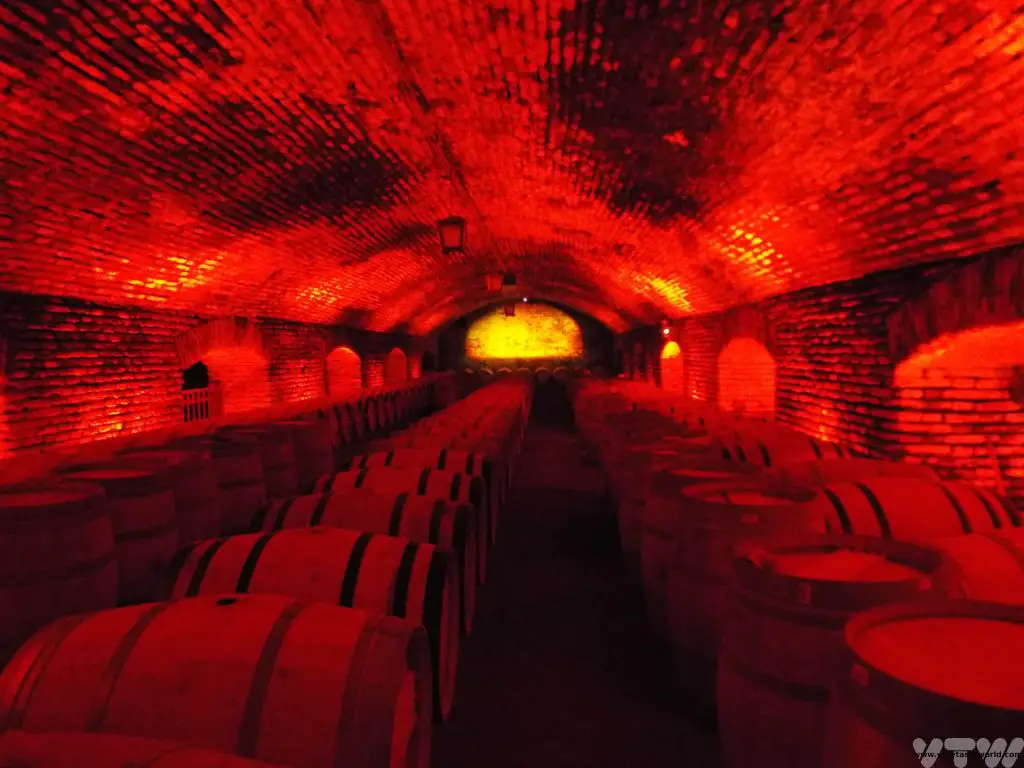
Maipo Valley Wine Tasting
You are given a tasting glass which you can keep. (If you are travelling to other destinations, stuff a t-shirt inside the bowl, wrap it around the whole glass, taking special care to protect the slender stem, place the whole lot gently back into its souvenir box and hope for the best – both of our glasses survived a further fortnight travelling around South America.) And receiving a glass means you get to taste a variety of the winery’s produce.
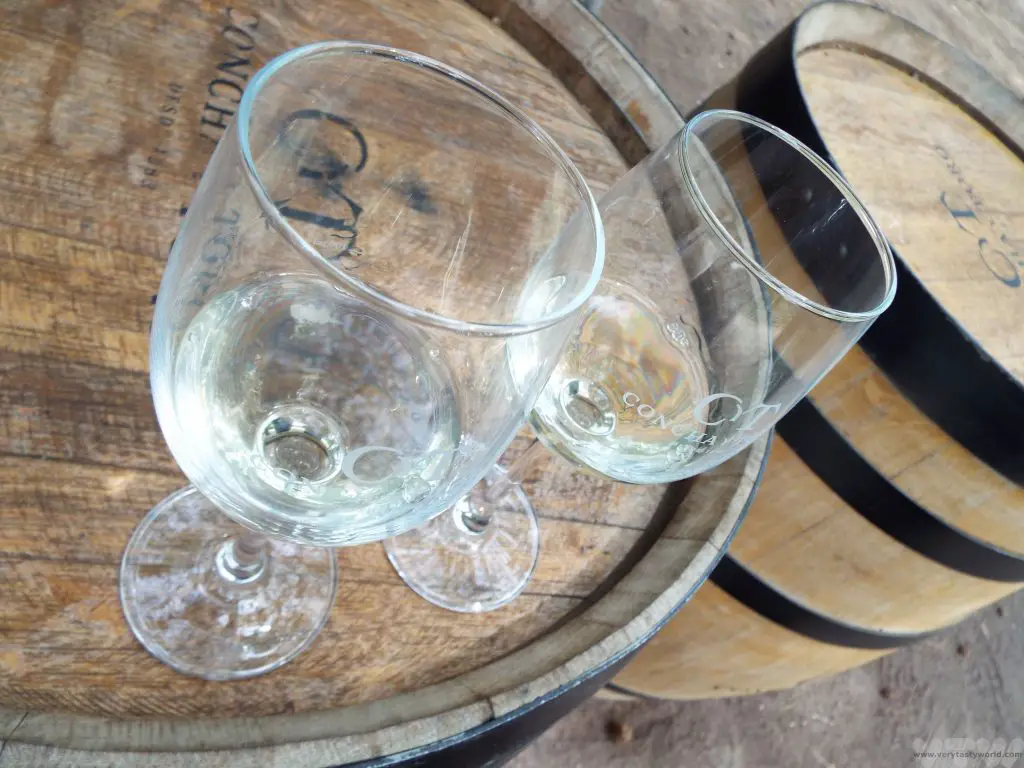
Originally grape varieties were brought over to the Maipo Valley from Europe (Bordeaux) and these included Cabernet Sauvignon, Sauvignon Blanc, Semillon, Merlot and Carménère. The latter is very rare in Europe these days, having been pretty much destroyed by the dreaded phylloxera, a sap-sucking bug. So Chile is now the Carménère capital of the world. It’s a variety that we had never tried before. The wine we tasted was incredibly fruity, like raspberries and cherries with sour notes and a lingering finish.
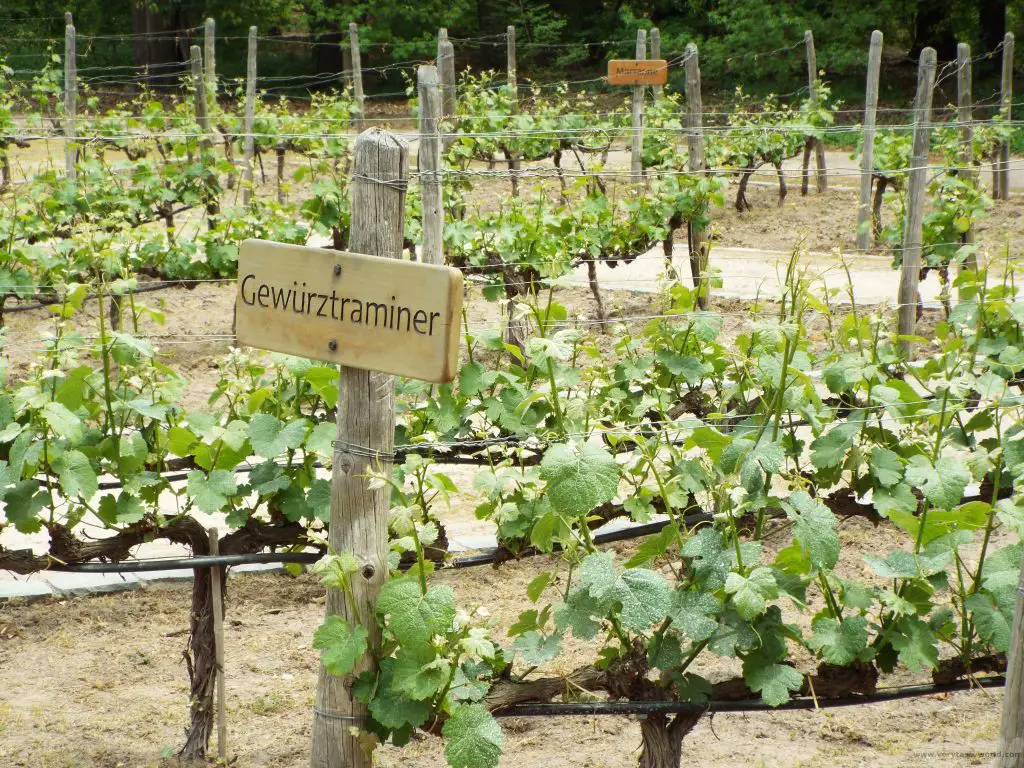
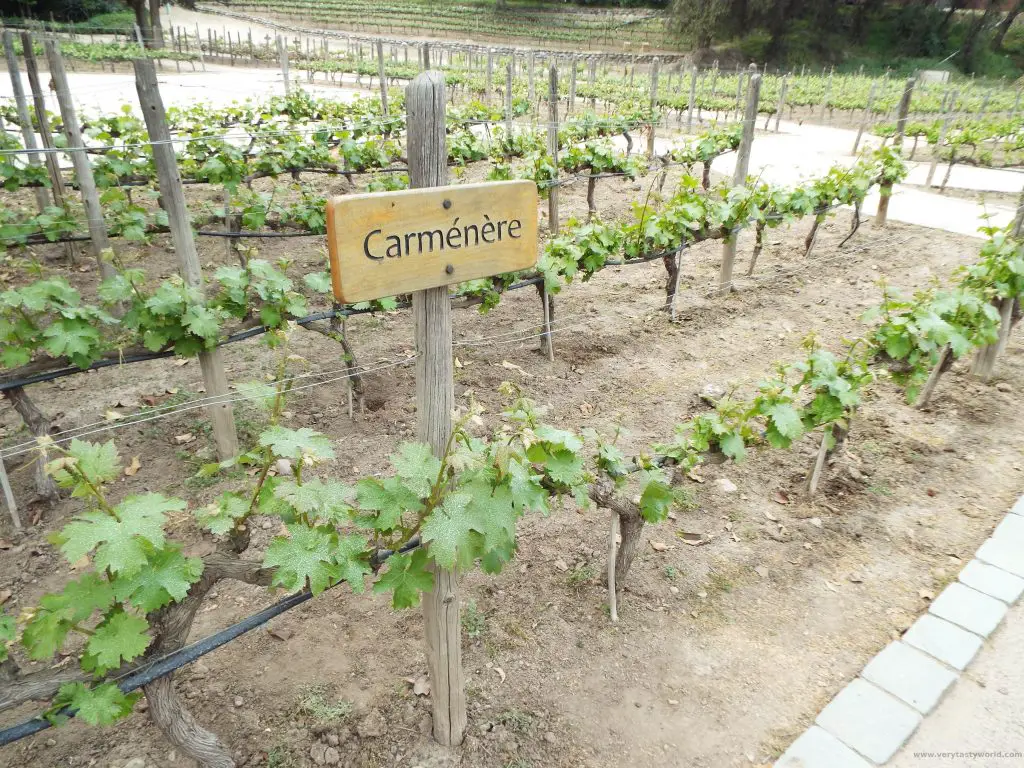
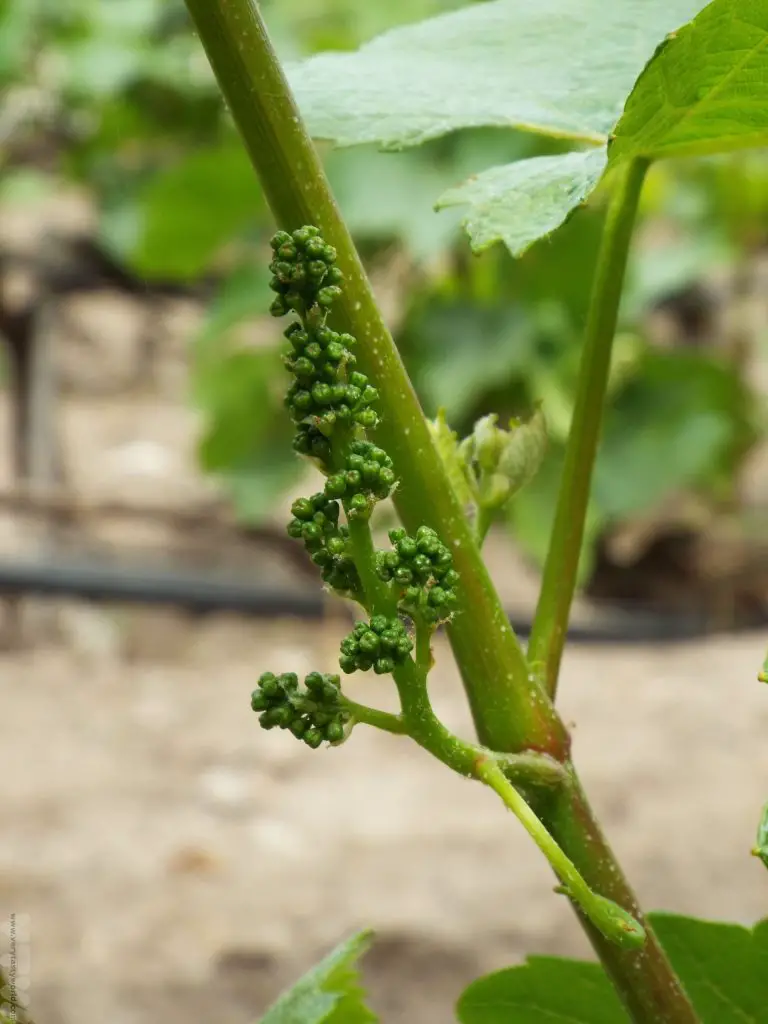
As with all the grape varieties the vines are watered using only a teeny amount of water. Literally a few drops per day. This means that the plants work extra hard to produce fruit which leads to a higher yield and, of course, more wine.
The Maipo Valley wines on offer for tasting included a smooth blackcurranty Cabernet Sauvignon, a mellow Carménère and a zingy Sauvignon Blanc.
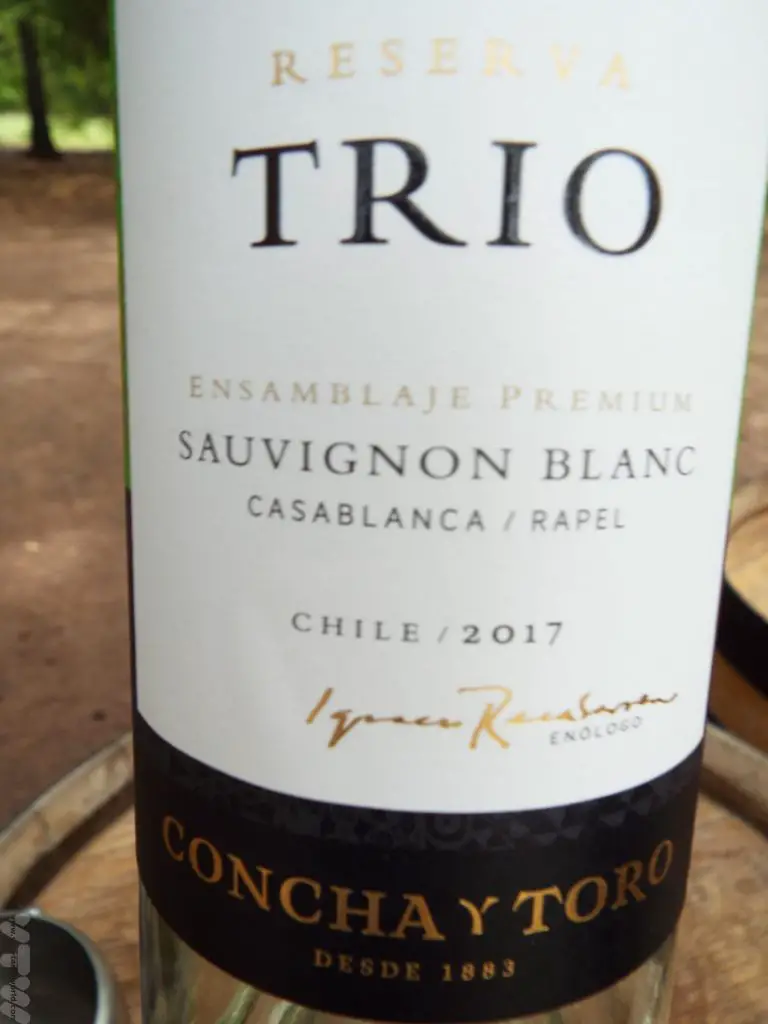

We took full advantage of being in Chile to sample the local wine – it was massively cheaper than in the UK. Even visiting ordinary supermarkets to stock up on a tipple was definitely worthwhile – we could taste some really splendid wines for a fraction of the price that it would have cost in our home country. (We recommend packing a travel corkscrew.)
Related Posts You May Enjoy

- Best Time To Visit Machu Picchu 2024 Update
- A 2 Week Patagonia Itinerary
- Day of the Dead in Campeche
- A Galapagos Land Based Itinerary
- RECIPE: How to Make Costa Rica’s Gallo Pinto
- A Tasty Puebla Food Tour
- Costa Rica Wildlife Sanctuary – Caño Negro
- Visit Torres del Paine National Park in Patagonia
- Atacama Desert Itinerary
The Golden Temple Amritsar, India
The city of Amritsar is located in the northwest of India, in the Punjab, close to the border with Pakistan. It was founded in 1577 by Guru Ram Das, the fourth Sikh guru and is the spiritual home of the Sikh religion. It is the home of the Golden Temple, or Harmandir Sahib. The Golden Temple Amritsar is open 24 hours a day. Everyone is welcome.
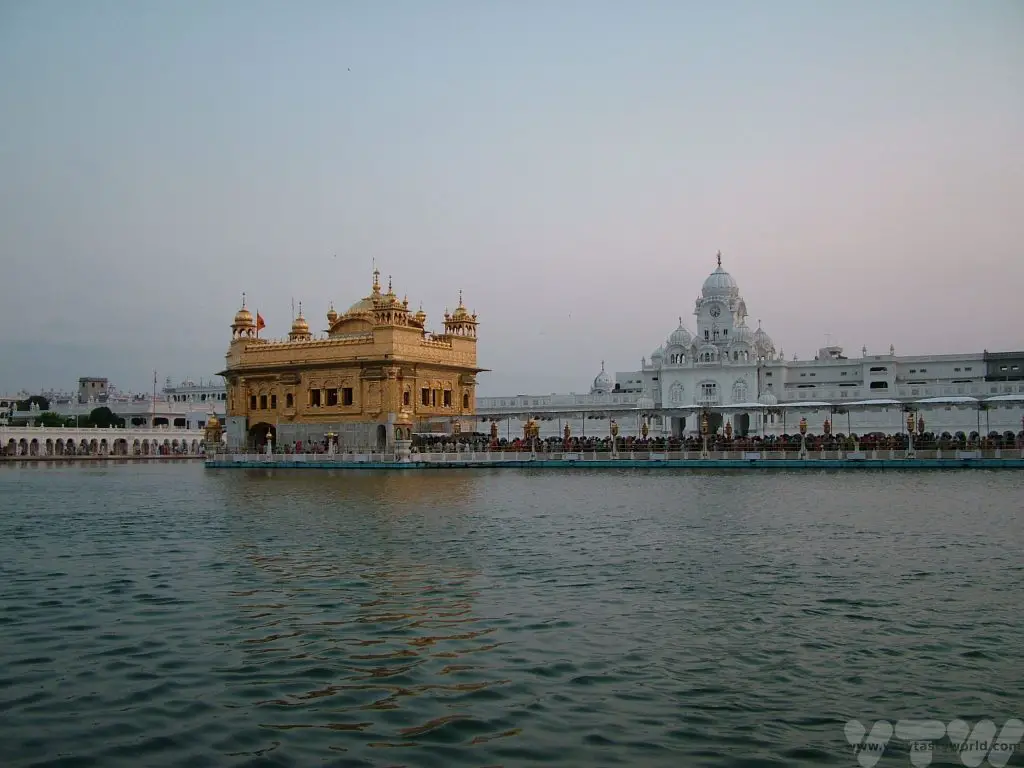
Visiting the Golden Temple Amritsar
It is advisable to dress modestly (shoulders and legs should be covered) and you will need to wear a head covering before entering the complex. We always tend pack scarves whenever we travel as they easily scrunch into the luggage and are very useful not only for visiting religious sites but also for sun protection, wrapping things up or any number of purposes. However, coverings are available outside the temple at very low cost if you forget to bring your own. You will need to remove your shoes and walk through a pool before entering the temple in order to wash your feet. Bags and shoes can be kept in the cloak room before entry to the temple. Photography is allowed in the outer parikrama (the walkway surrounding the sarovar – the holy pool) but not inside the temple itself.
The temple complex itself is the very definition of serene, a complete contrast to the bustling streets outside. It is possible to walk right the way around the sarovar, in a clockwise direction. It is believed that the holy water can have healing powers and there are defined areas for bathing, segregated for men and women.
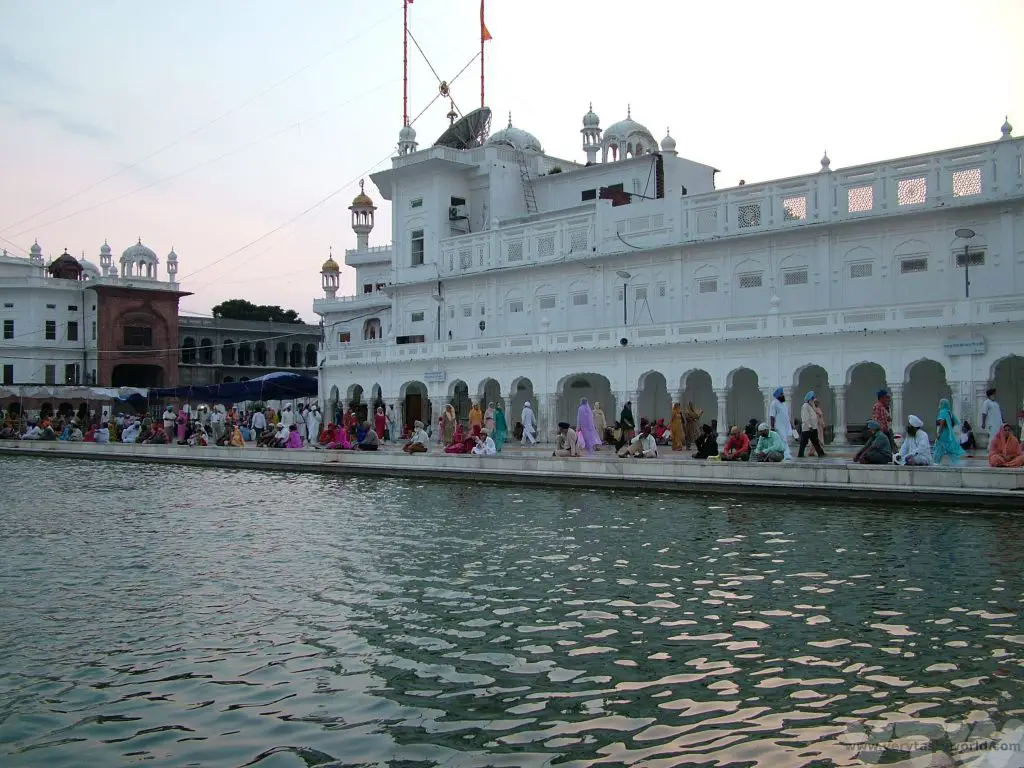
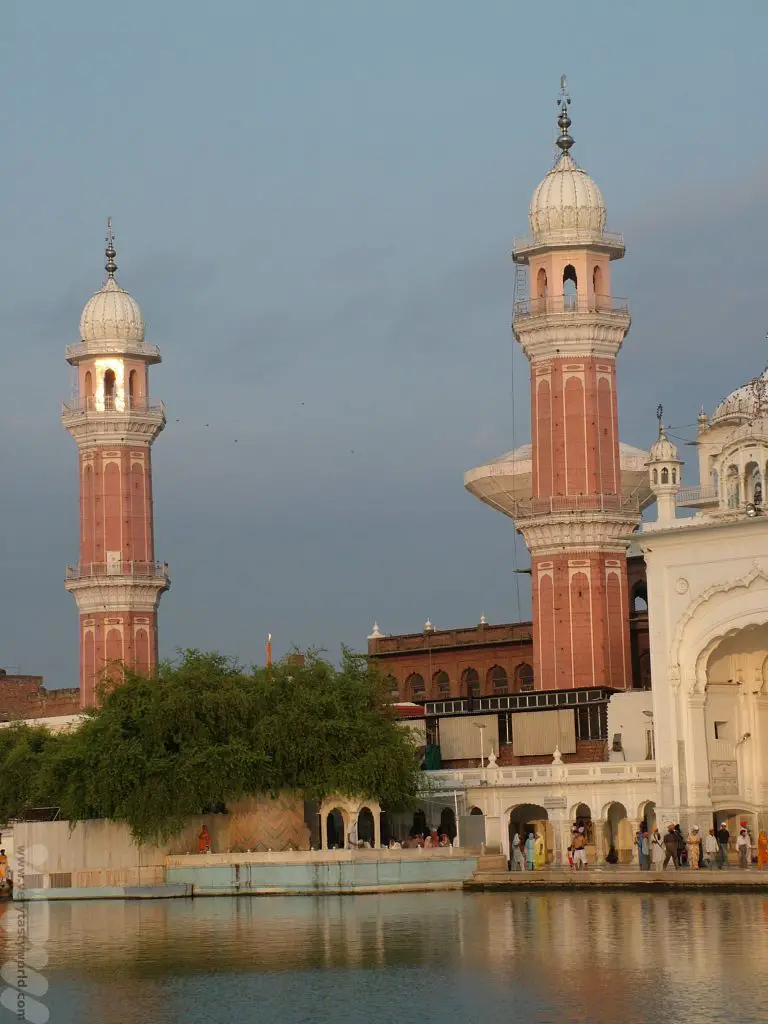
The Golden Temple Amritsar also has two towers, the Ramgarhia Bunga, built in the 18th century designed to be watchtowers to look out for possible military raids on the temple.
The Akal Takht building is located in front of the sanctum. A takht is a seat of power in Sikhism and this is the primary takht and the centre of authority for Khalsa, the collective body of Sikhs across the world. Twice a day the Palki Sahib ceremony takes place. This is a ritual where the Guru Granth Sahib (central religious book) is taken from the Sri Akal Takht to the Golden Temple and returned at the end of the day.
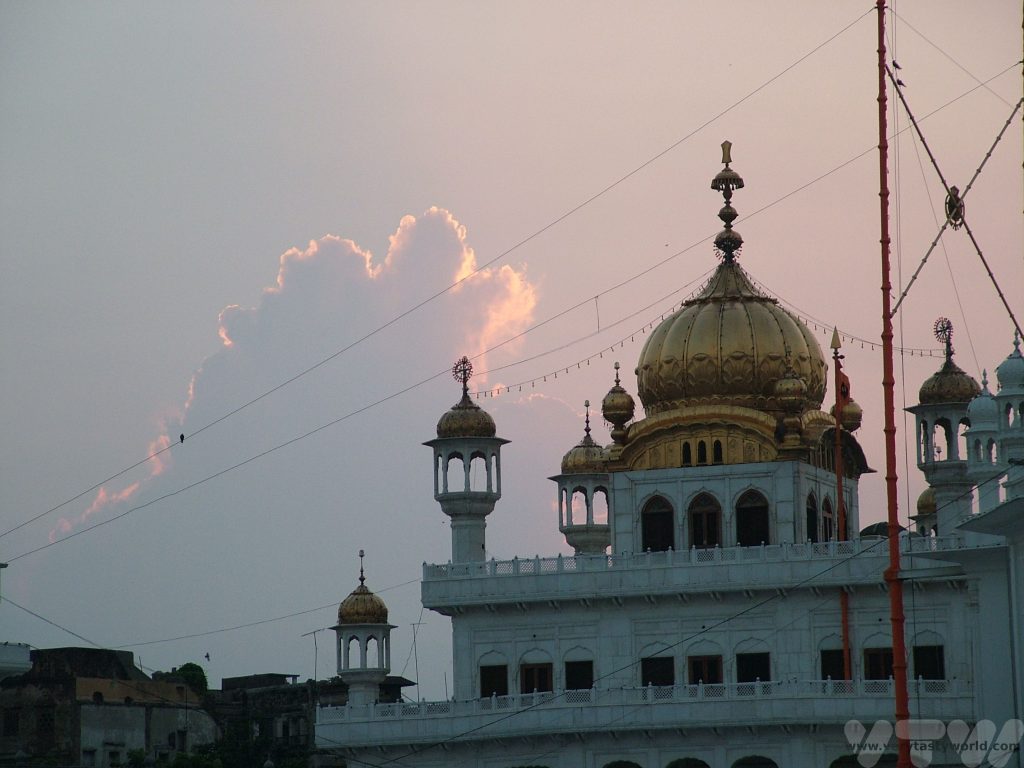
And of course, there’s the remarkable and beautiful inner sanctum itself. This is a two storey building located on a causeway. The ground floor is constructed from marble with floral and animal motifs carved inside and the magnificent golden upper floor, with a dome said to represent an inverted lotus flower, that is apparently gilded with around 100kg of gold.
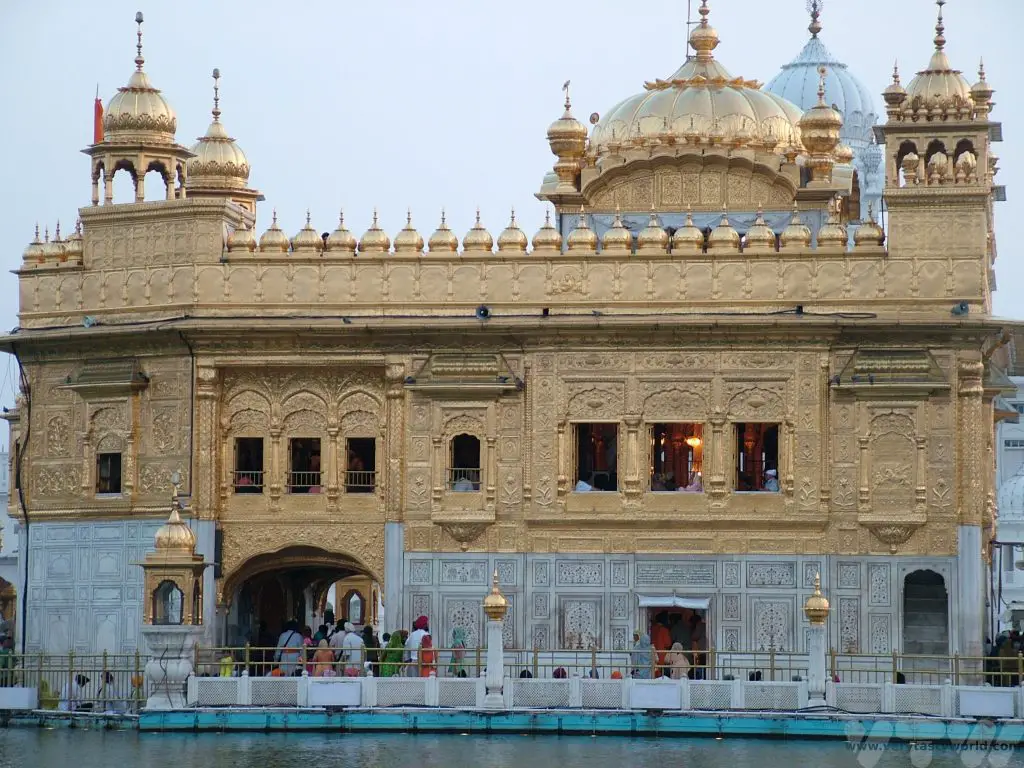
Inside, recitations from the Adi Granth (the first rendition of the Guru Granth Sahib) sacred scripture of Sikhism and a collection of nearly 6,000 hymns of the Sikh Gurus, are read throughout the day. An entire recitation takes around 48 hours. Pilgrims visit to hear the recitations and to receive blessings. There is usually a long queue to enter the inner sanctum.
One of the amazing things about the Golden Temple Amritsar complex is the langar, its kitchen, one of the largest, if not the largest, community kitchens in the world. Each day the langar at the Golden Temple provides meals, free of charge, to some 100,000 people. Everyone is welcome, pilgrims and tourists, alike. The food served is simple and healthy – rice, roti (a bread), dal (lentils) and vegetables, along with a sweet dessert. Most of the staff are volunteers.
This video from the temple’s official website shows what an amazing operation the langar is.
We would have been very welcome to have enjoyed a meal at the Golden Temple’s langar but we felt that it was more appropriate that others should have priority. Sikh communities all over the world are well known for providing food on a voluntary basis to people in need, including in our home city.
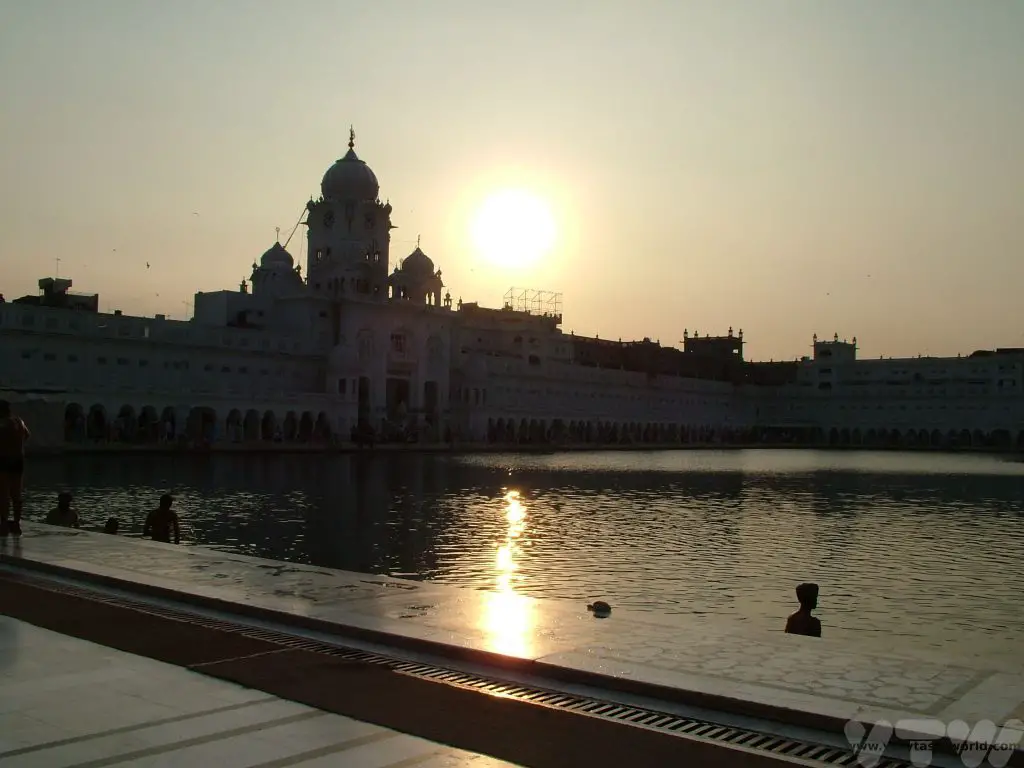
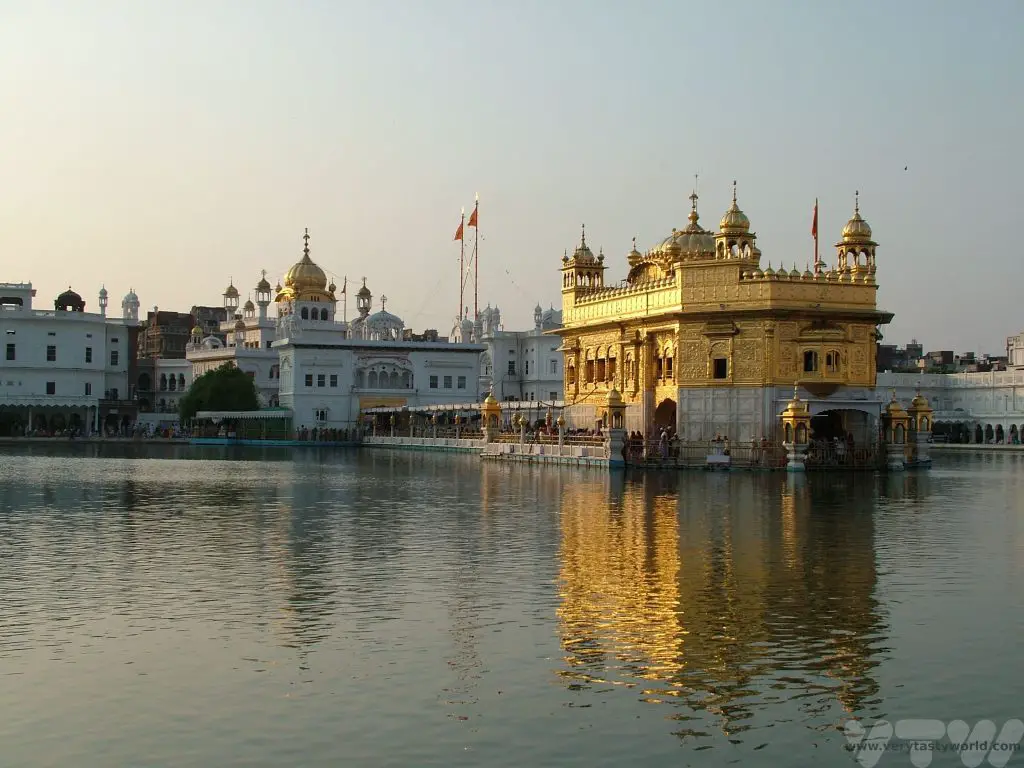
Other Things to Do In Amritsar
Amritsar is a bustling city with plenty to see, including a number of temples, markets and interesting museums as well as the Jallianwala Bagh memorial park, a sobering place commemorating the horrific massacre of Indian citizens by British troops in 1919. A taxi or rickshaw ride will take you to the Wagah Border Crossing with Pakistan where hundreds of people from both countries witness the lowering of the flags at dusk… and have done since 1959. With hundreds of people waving flags, playing music and dancing, it is quite an event.
Related Posts You May Enjoy

Toasting Tradition in Georgia
Cheese and Toasting
There is a legend that when God was handing out land to the nations of the world, the Georgians were so busy feasting that they lost their place in the queue and there was no land left for them. But when they invited God to join the party, he enjoyed himself so much that he gave them the best bits of land that he had been saving for himself. Enjoying good food and wine is an important element of life in this part of the world and the local people have a wonderful toasting tradition in Georgia.
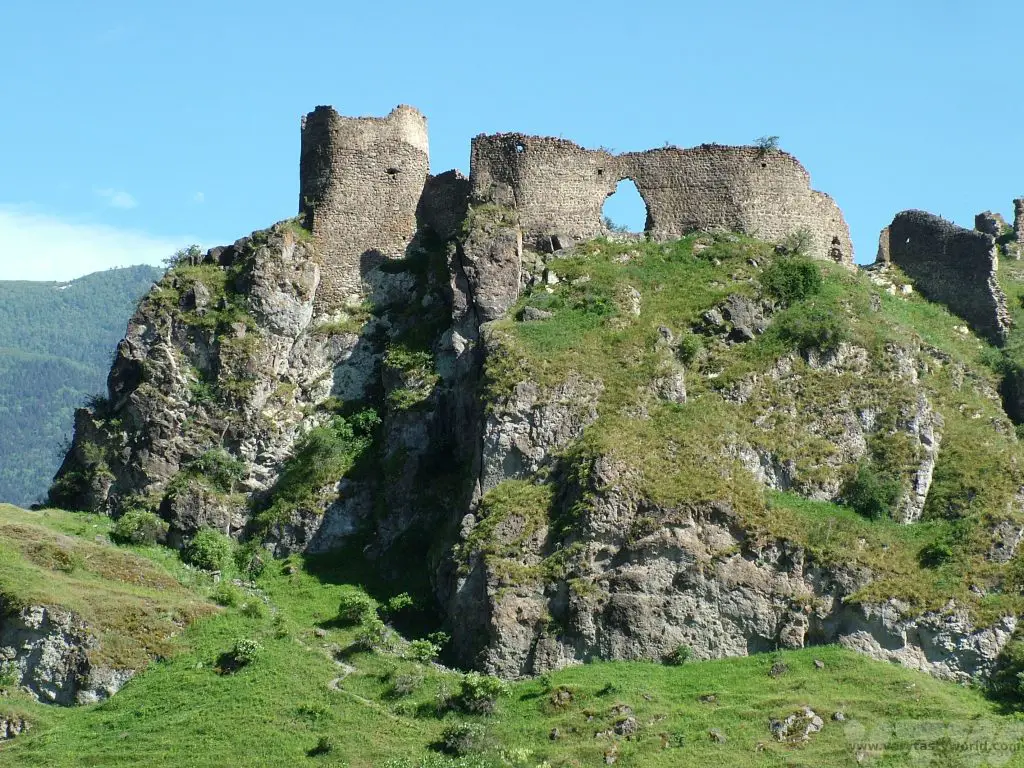
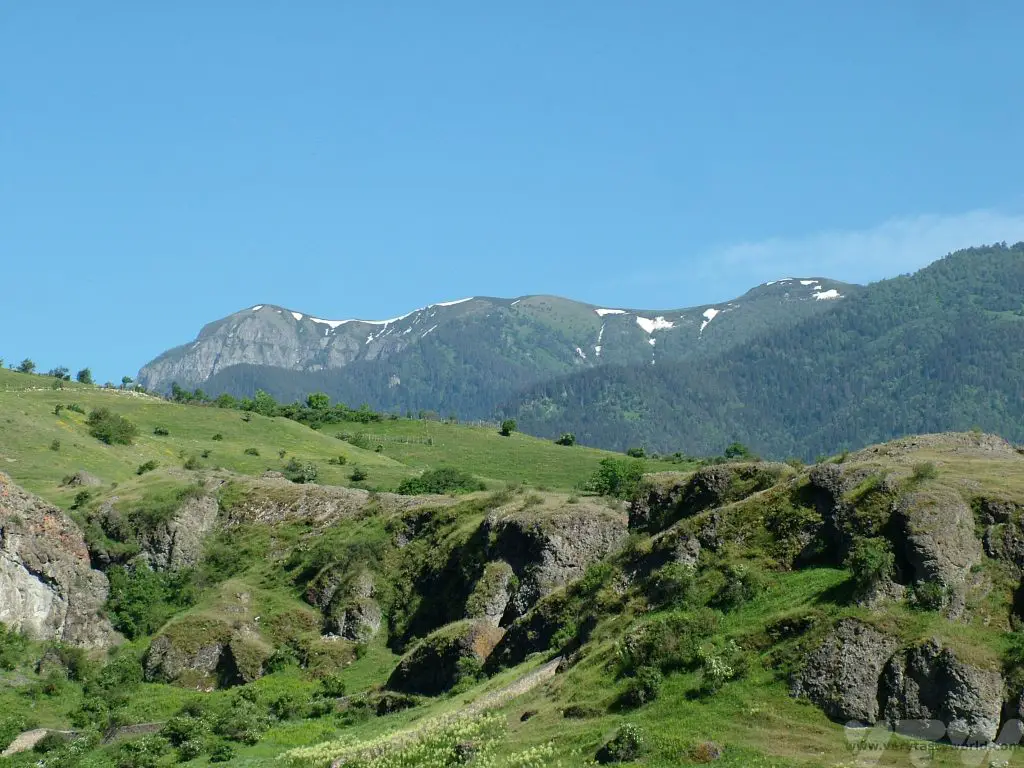
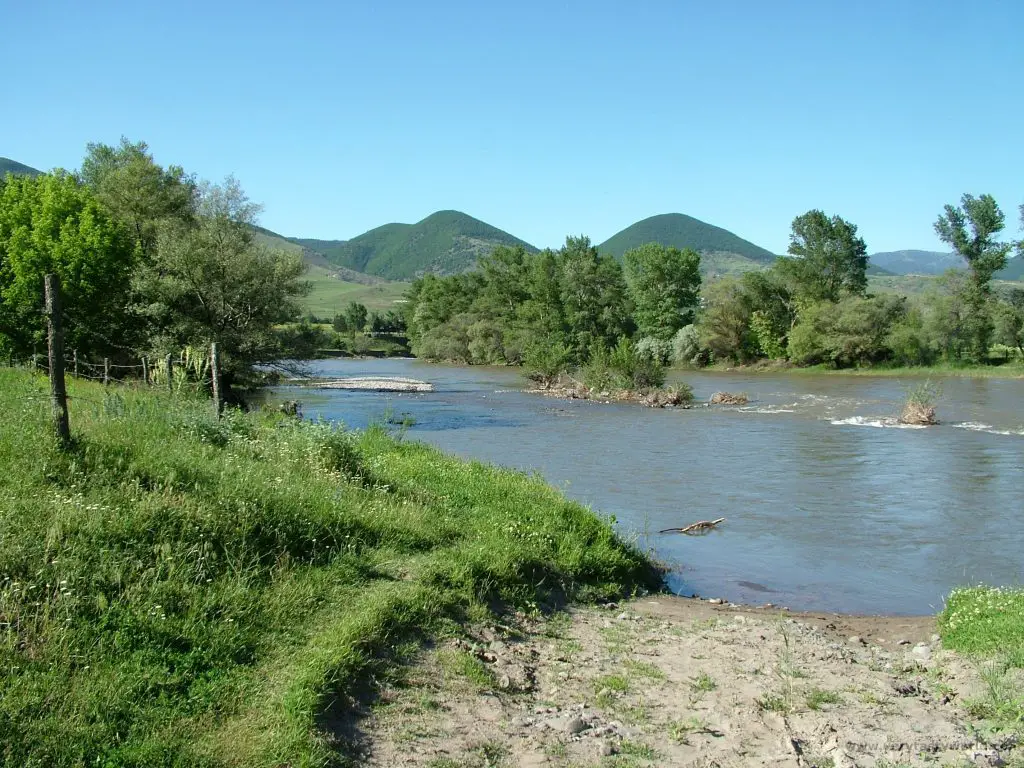
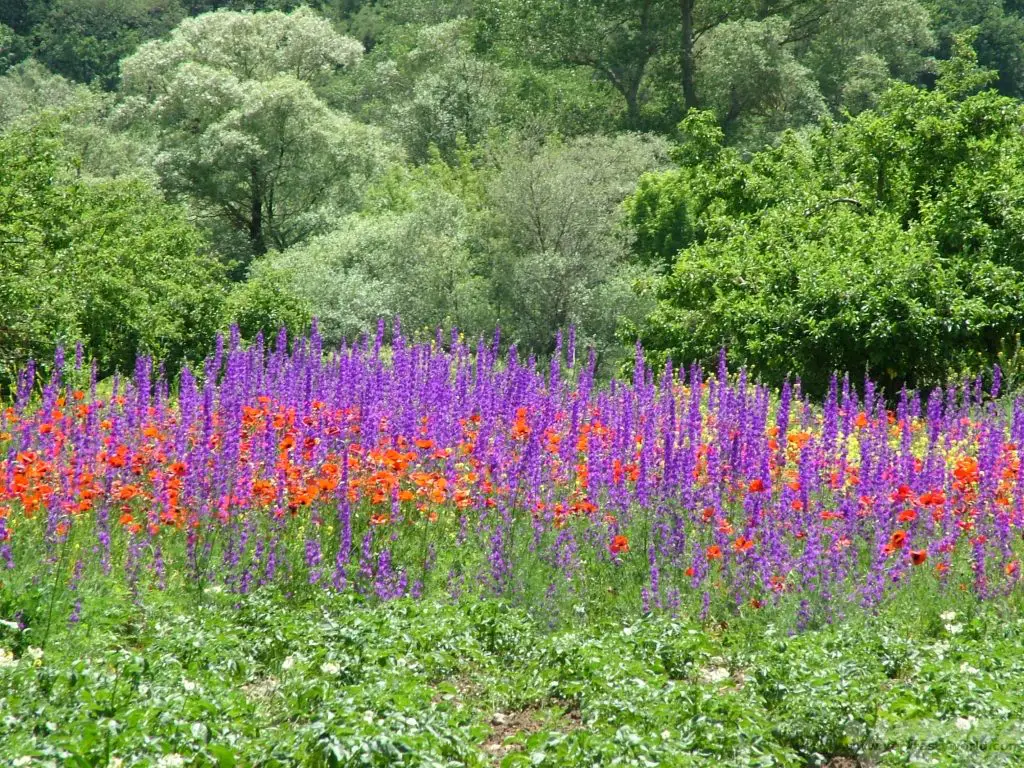
We visited a number of families, ostensibly to see how they produced wine or made cheese, but everywhere we stopped we were greeted by the most amazing hospitality and generosity. Meals would last several hours and involve large quantities of superb fresh food along with overflowing glasses of wine and chacha (grape vodka). Most houses we visited grew their own grapes and made their own wine. Many had a still.
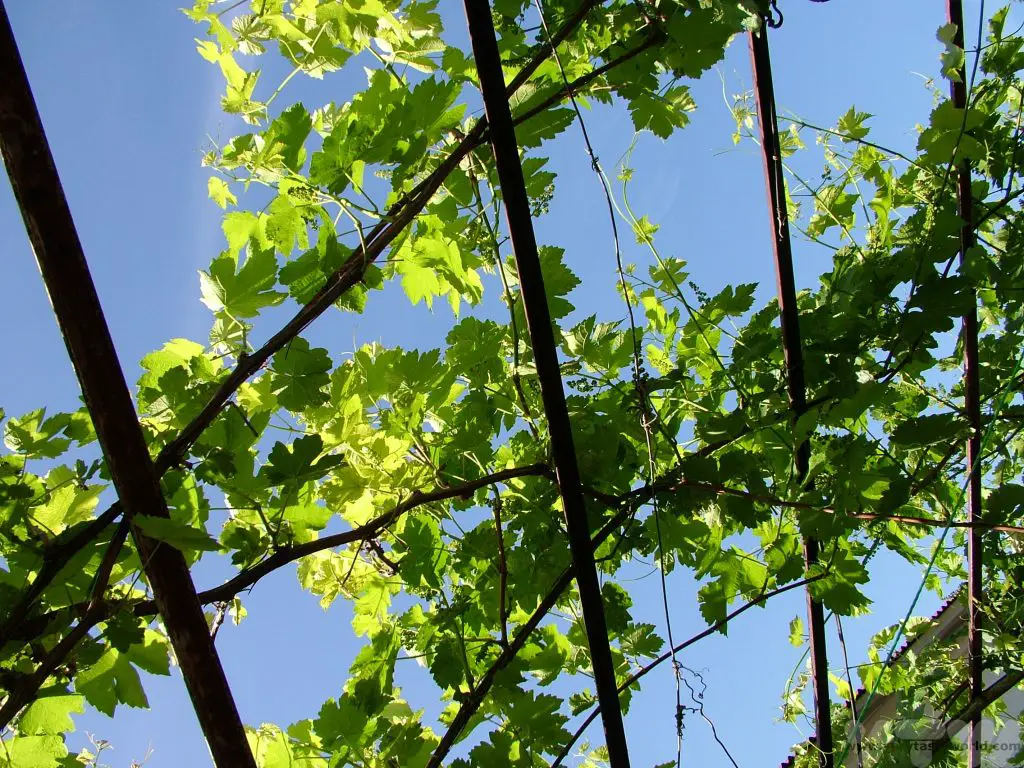
Toasting is a tradition in Georgia. You don’t tend to drink at your own pace, but at the behest of a toastmaster (tamada). A merikipe is on hand to make sure that glasses are always full and the wine never seems to stop flowing. Georgians toast their enemies with beer (we had a hilarious enemy-toasting session with our guide one night) – it is wine and chacha that are appropriate for feasting.
We didn’t go to a formal grand feast (supra), but had many, many meals at guesthouses and family homes and we followed the toasting tradition each time. Meals are designed to last the evening – they comprise several scrummy dishes laid out on the table. Everyone just helps themselves and offers food to their dining companions. And, of course, every meal included a ubiquitous, delicious and calorie-loaded cheese pie (khachapuri).
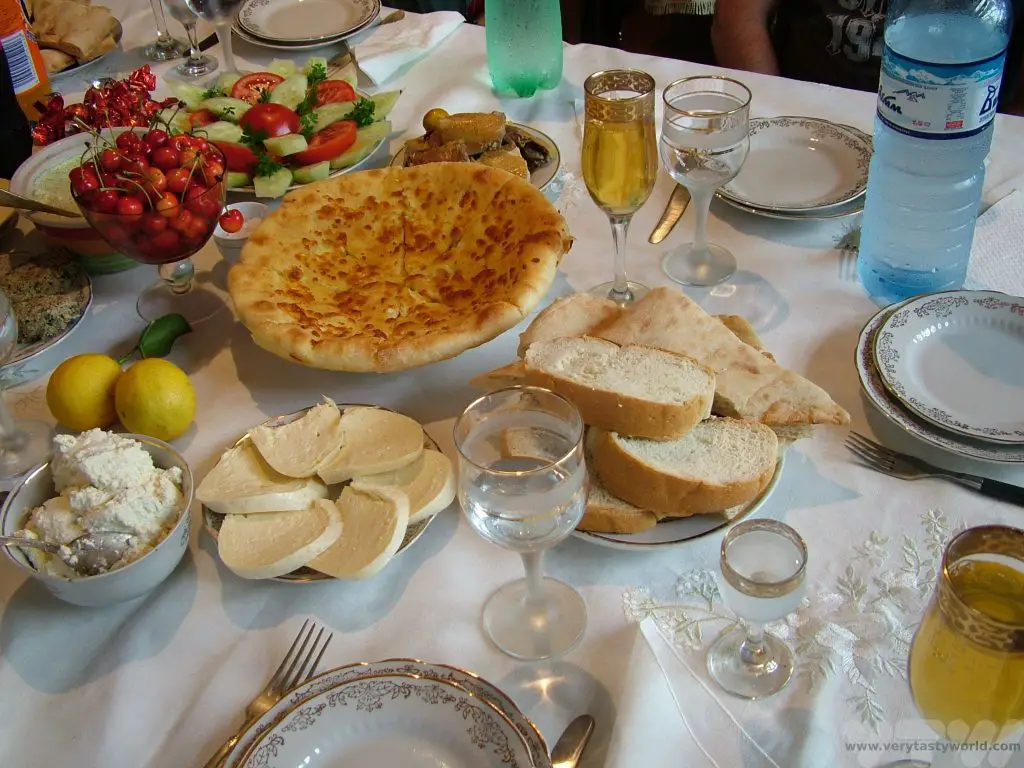
Toasting Tradition in Georgia – Etiquette
At regular intervals throughout the evening the tamada proposes a toast. Everyone adds their wishes and much wine/chacha is consumed. If you are toasted, it’s appropriate to thank everyone for their good wishes and later ask the tamada if it is okay to reciprocate with a toast of your own. One guesthouse supplied us with a very large jug of strong homemade red wine, made from the local Sapaveri grape, which was utterly splendid and eminently drinkable, to accompany the enormous evening meal they had provided.
We ate with the family. Our driver was both tamada and merikipe and led the toasting throughout the evening. (At the end of the day, naturally, when no further driving was required.) On finishing the jug our excellent merikipe asked if we wanted more wine. We said we’d join him in a tipple but only if he was partaking, not realising that he would return with another enormous jug. Gulp.
You can toast anything and everything. We were toasted several times as ‘easy guests’ (people who were thoroughly enjoying the trip, didn’t make a fuss, and were always on time) as well as ‘guests that didn’t go to bed at 9pm but were happy to stay up late feasting and enjoying the hospitality of our hosts.’ We reciprocated by toasting our hosts, Georgia, Georgian hospitality, wine, food, cheese pies, family, friends, finding Mr Right (for our guide), young people, old people, men, women, happiness, health, friendship between our countries, anything. We easily knocked back the second jug. Amazingly we weren’t hungover the following morning. Just as well as we were due to visit three different vineyards for wine tasting – hair of the dog and all that. We did rather stagger round the Kakheti region that day.
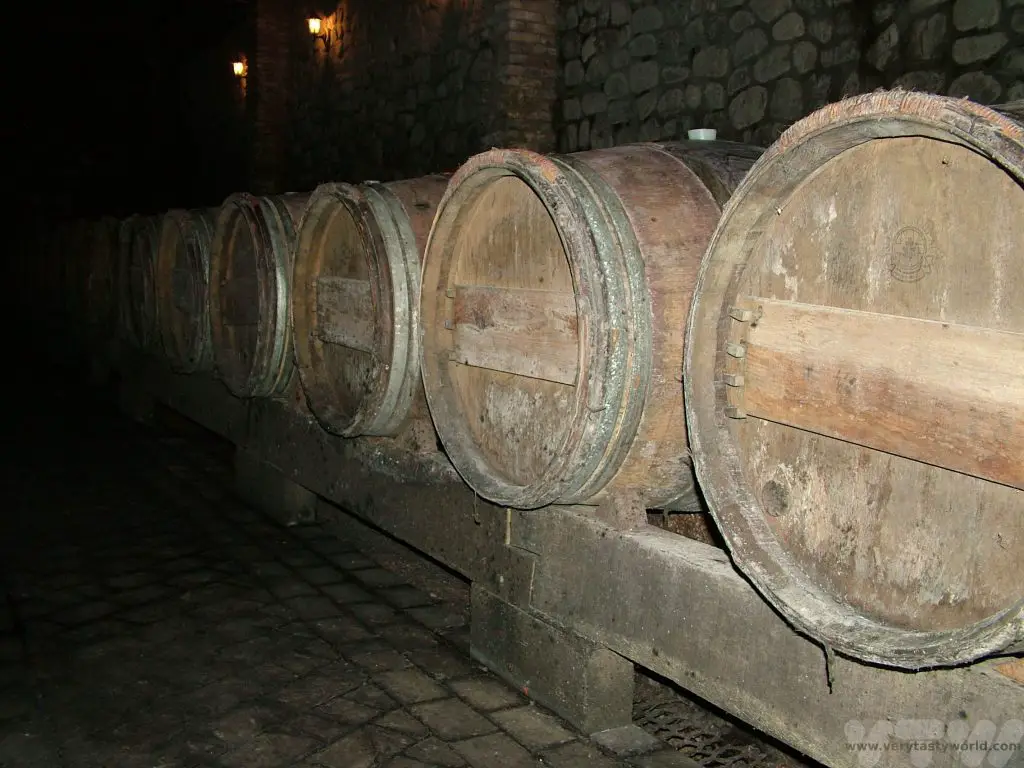
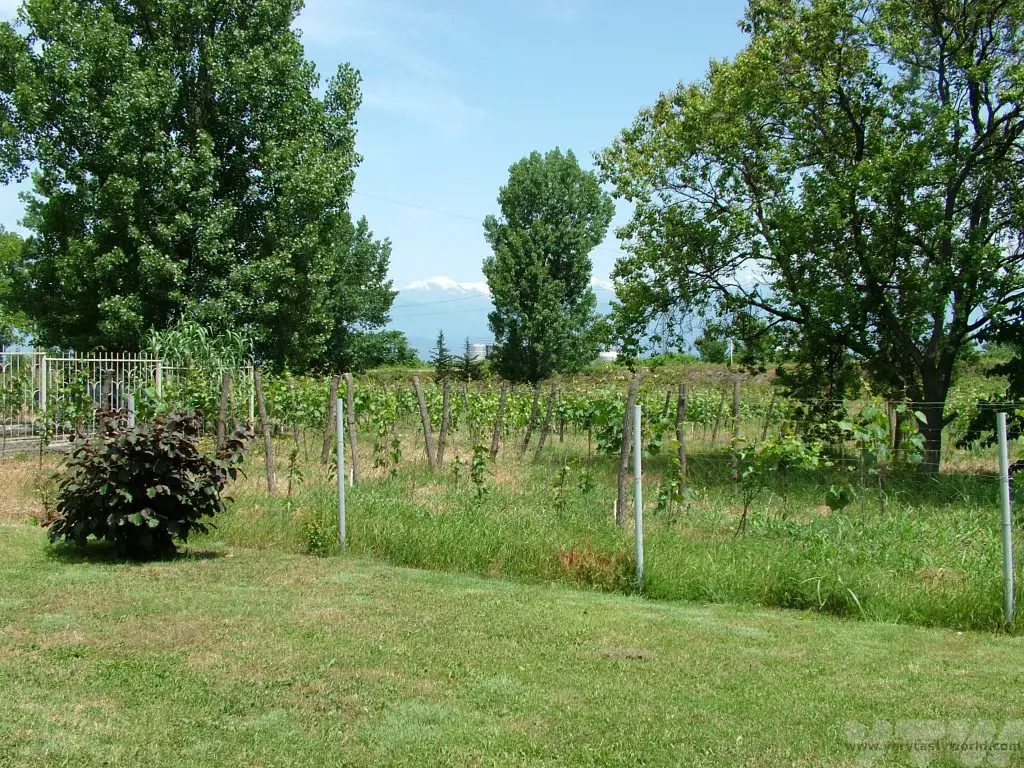
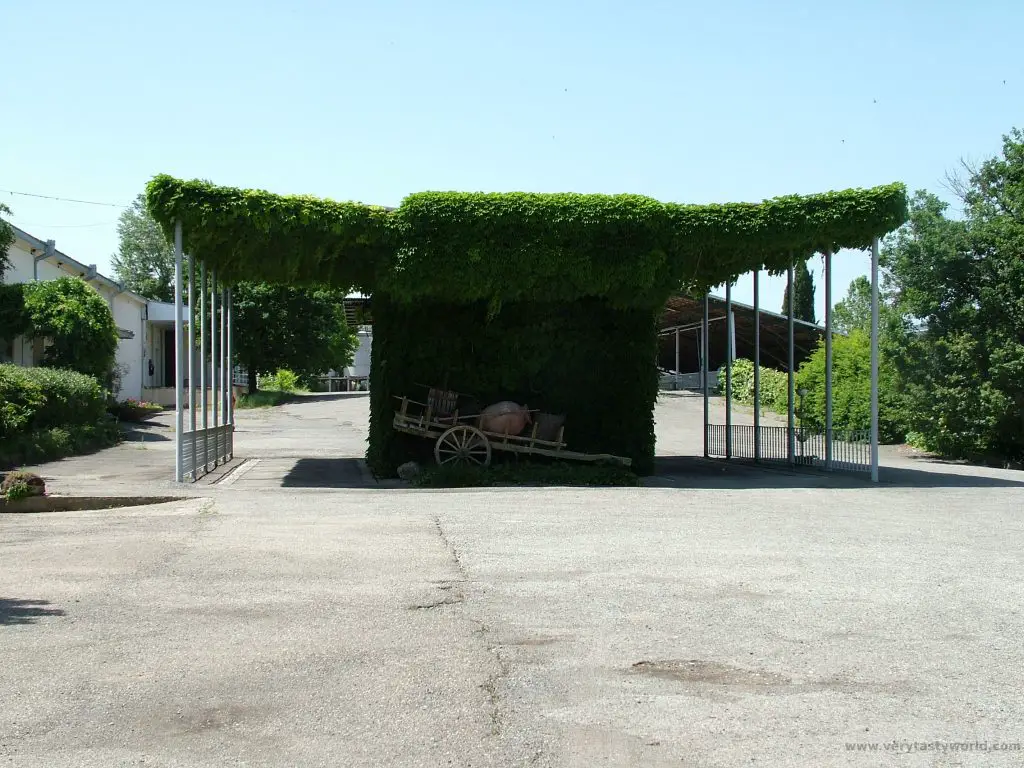
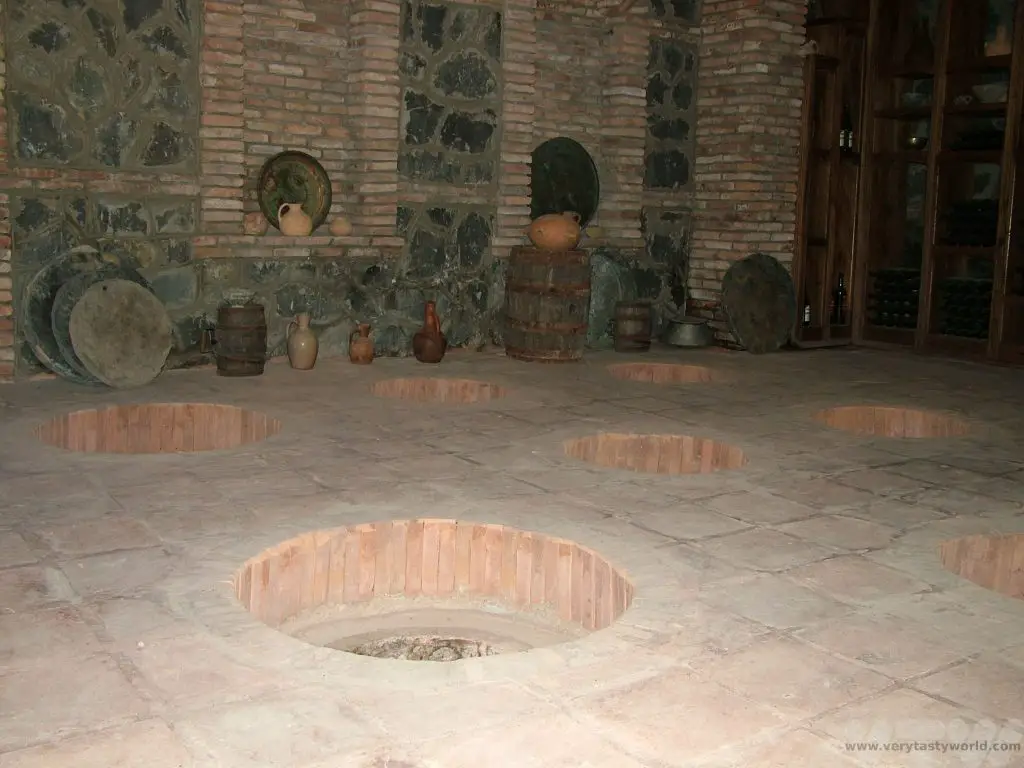
What we didn’t realise until the last day was that we had been doing the toasting all wrong. We’d been having a sip/swig from the glass per toast which seemed to us to be the best way to regulate the drinking (we’d copied our hosts, who had the same idea). Apparently the correct toasting tradition in Georgia meant that were supposed to drain the wine/chacha glass each time. Oops!
Related Posts You May Enjoy

The Very Best Views in Scenic Japan
Three is a Magic Number
Of the many, many beautiful places to visit in scenic Japan, there are three that have been officially designated to be the most celebrated. Hayashi Gahō, a philosopher and Confucian scholar, declared the Nihon Sankeiin, or Three Views of Japan, in 1643. These places were considered to be both beautiful and representative of Japan’s cultural heritage. The views are located in very different regions of the country and, as Japan is an island nation, they all have a setting by the sea. It is possible to visit them using public transport and they are emphatically worth travelling to see.
Scenic Japan View Number One: The Itsukushima Shrine
The Itsukushima Shrine is probably the best known of these views. Japanese tourist literature and guides often show a picture of the iconic red torii ‘floating’ in the Seto inland sea. It is located on the delightful island of Itsukushima, more commonly known as Miyajima, which means ‘shrine island’ and it is a UNESCO world heritage site.
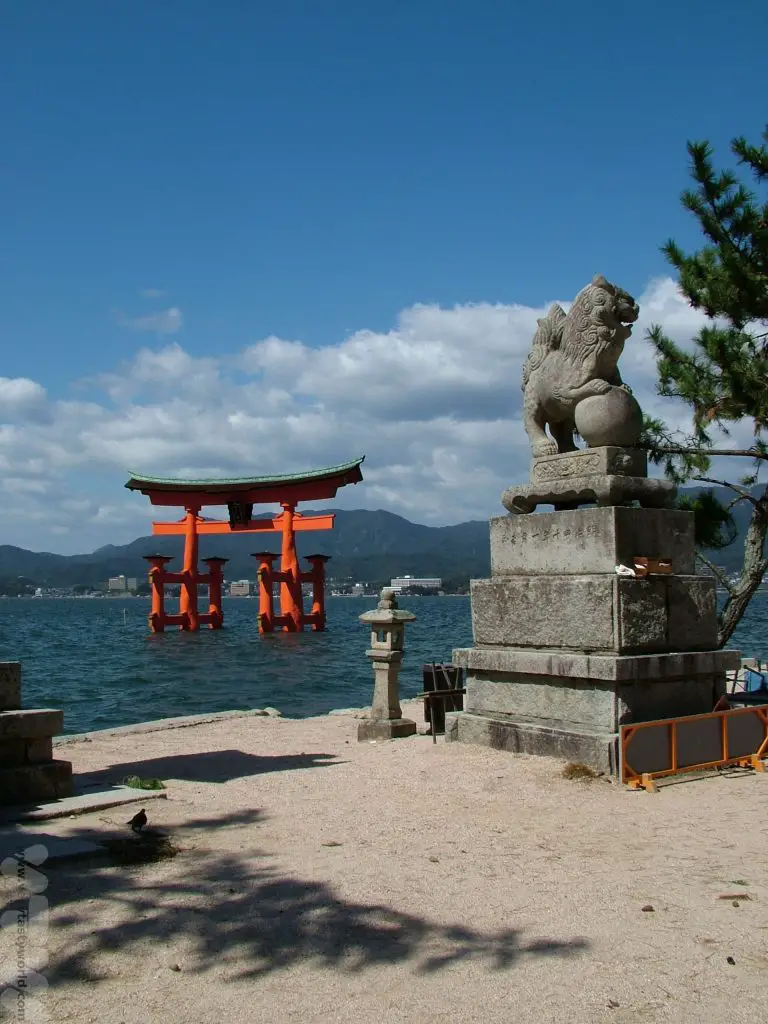
It is a beautiful sight, especially when the sunlight catches the sparkling sea.
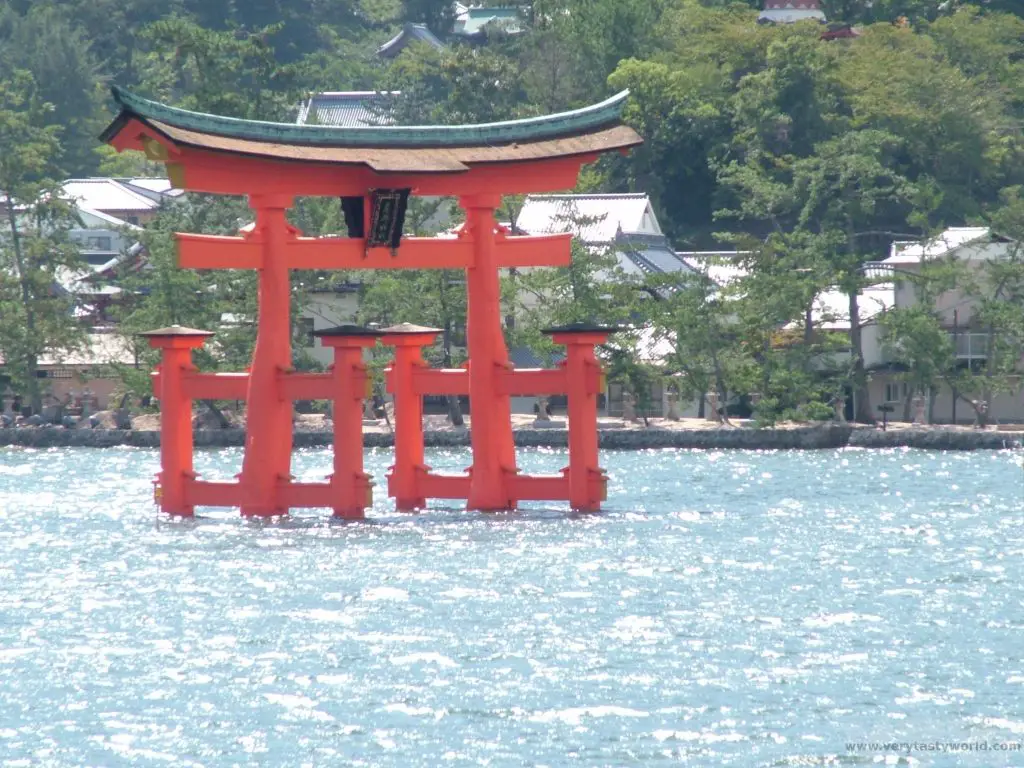
It’s less beautiful when the tide is out so it’s worth planning a visit for when the tide is high if you want to take that perfect Instagram snap.
The torii, in common with all Shinto temples, is actually the gateway to the shrine and it is possible to visit the shrine complex itself. These include Toyokuni Shrine, with its five-story pagoda, as well as the Daiganji Temple. The compound even has a noh stage – for traditional Japanese theatre.
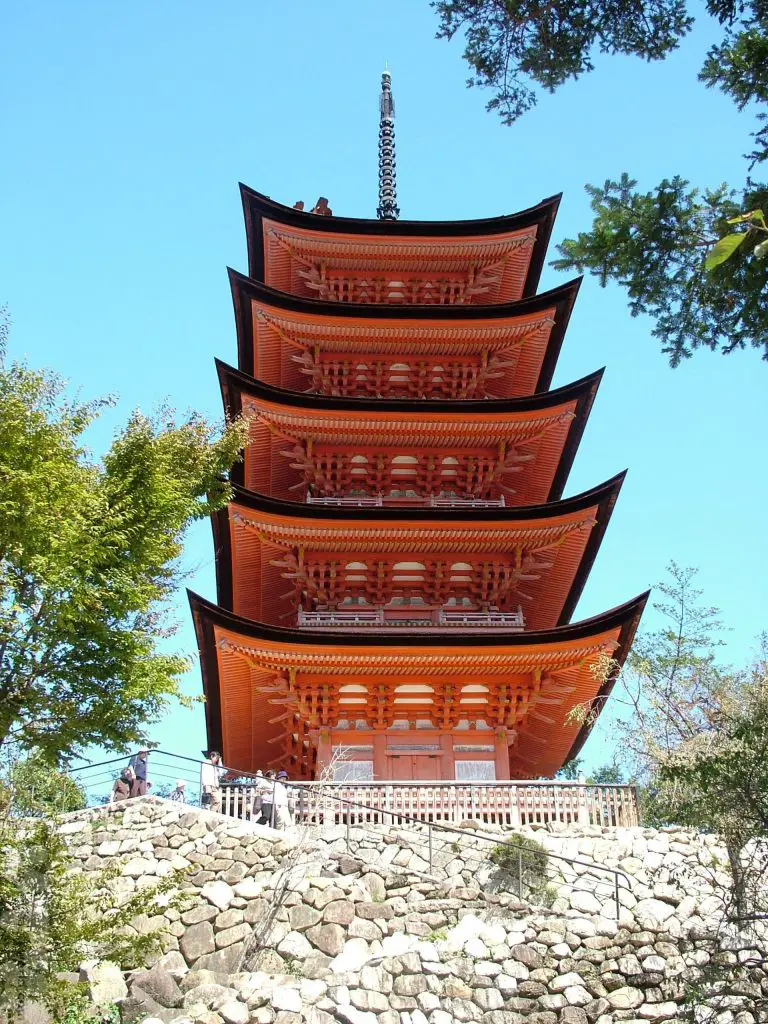
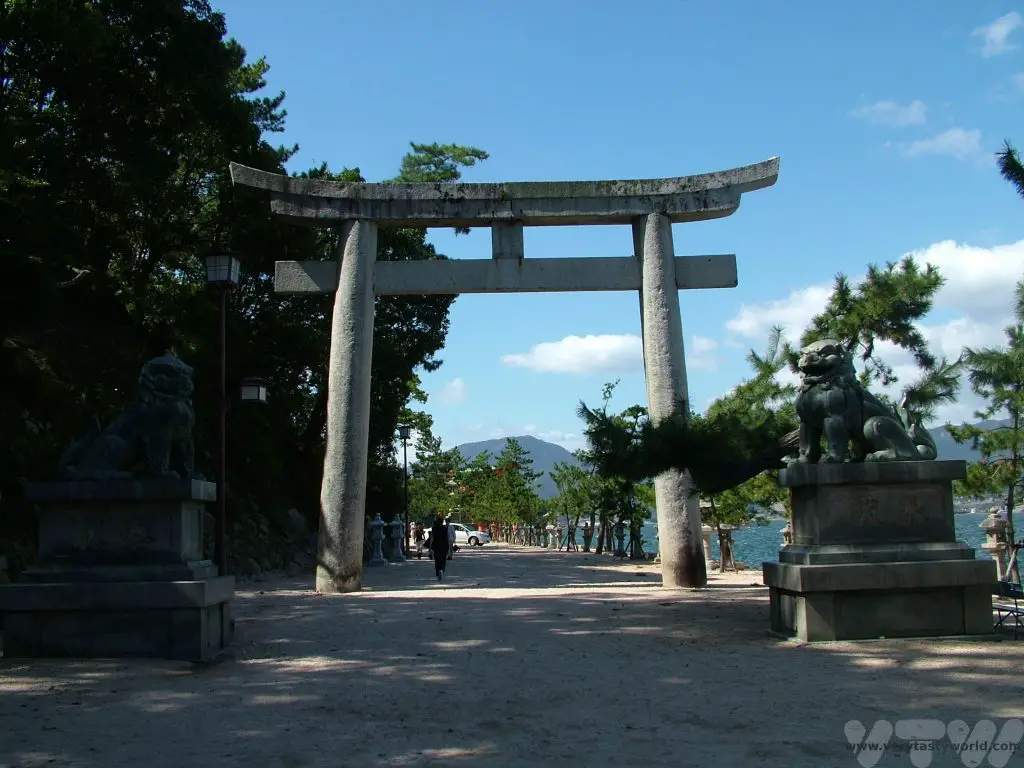
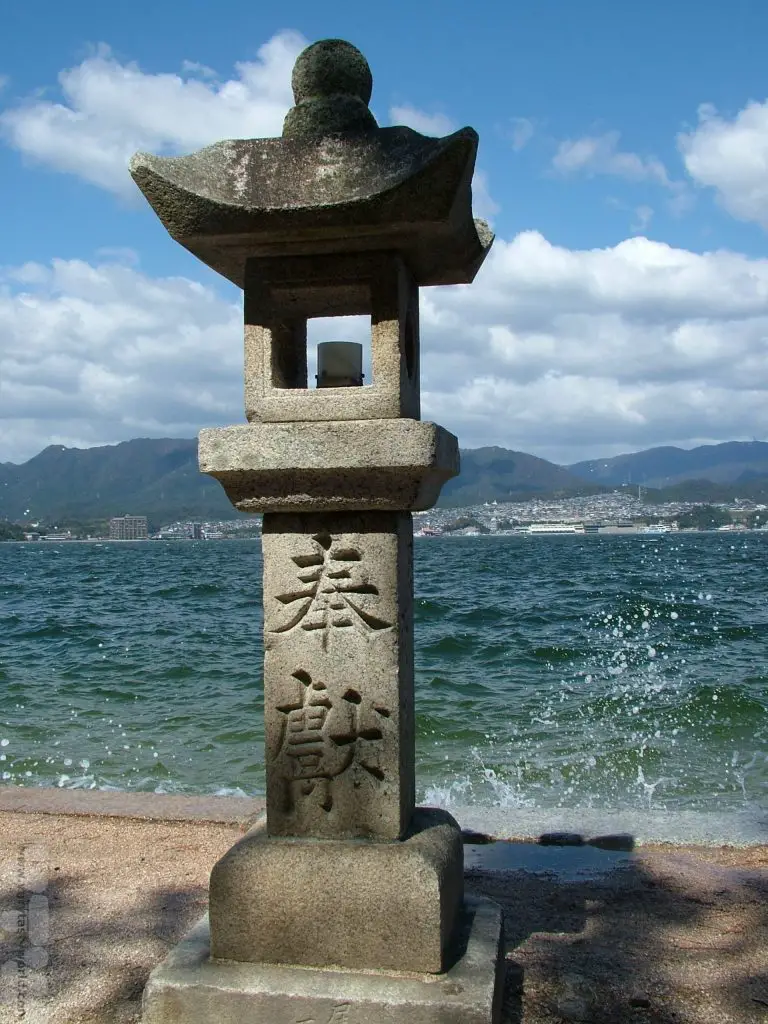
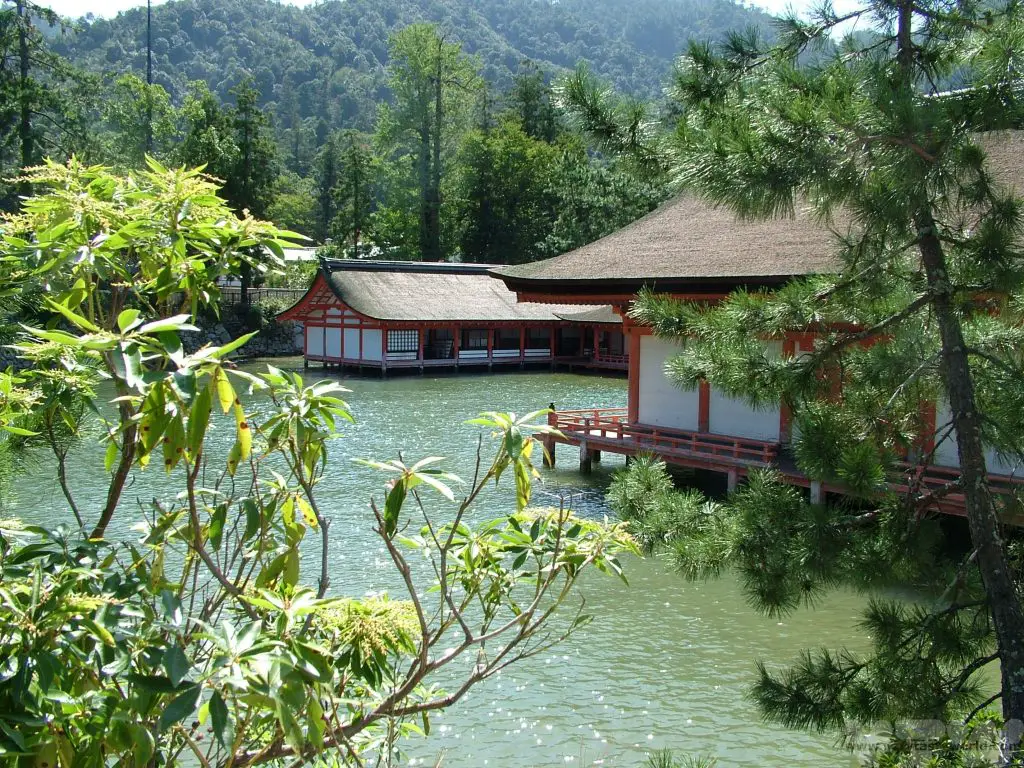
The island is really easy to reach from Hiroshima. You can catch a train and then a ferry to the island on a journey that takes about an hour.
Miyajima is a lovely island, perfect to walk around, especially if you’ve arrived at low tide and need to wait in order to capture that perfect shot of the torii. There are forested walkways to explore and it’s possible to climb up to the island’s highest peak, Mount Misen. If you’re feeling less energetic, there’s a ropeway to take you up to the top.
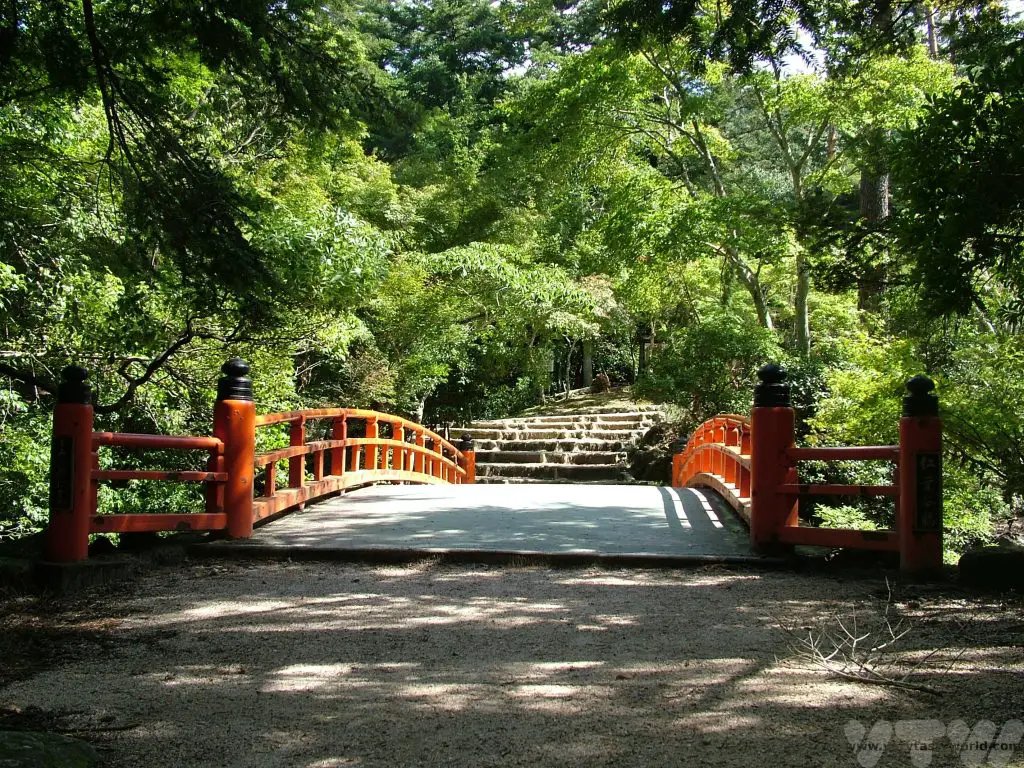
There are also some friendly-ish deer who live on the island. They aren’t as bold as the ones at Nara and, unlike at Nara, you are not allowed to feed them.
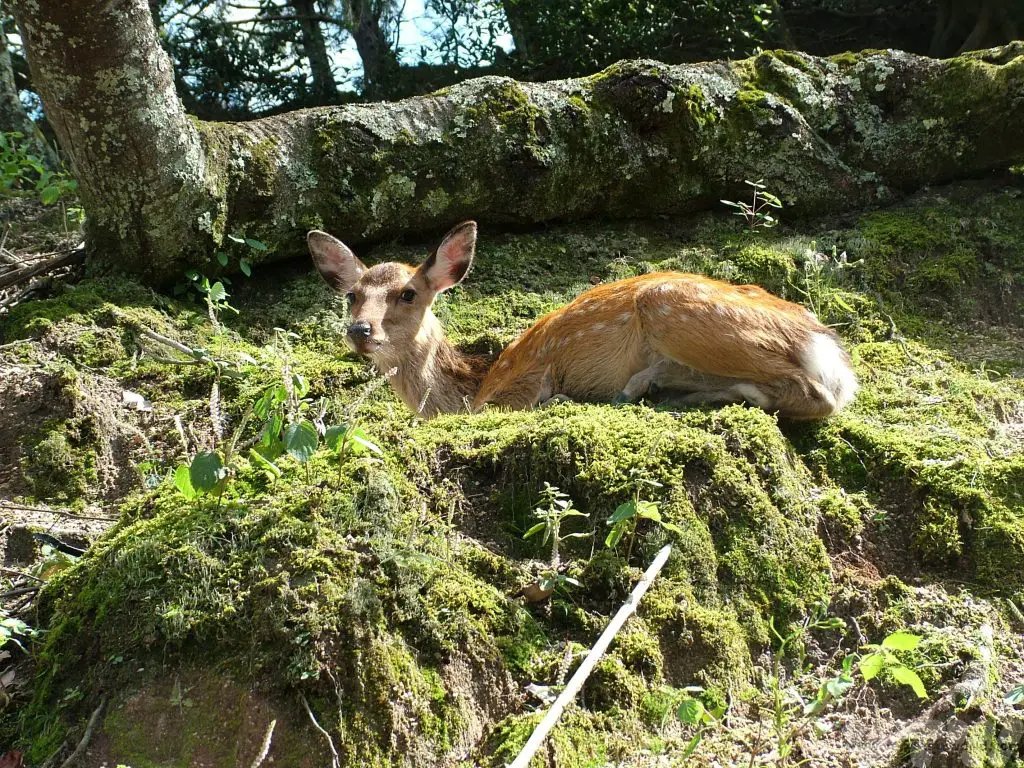
Scenic Japan View Number Two: Matsushima
The next view is that of Matsushima on Japan’s north east coast, which is a short rail journey from the northern city of Sendai, easily accessible from Tokyo via the shinkansen (bullet train).
Matsushima comprises a series of hundreds of forested islands dotted through a bay. It was lucky not to have been too badly impacted by the earthquake and tsunami of 2011, the geography of the bay having some part in protecting the islands.
It is possible to visit some of the islands closest to the mainland by crossing traditional vermillion bridges from the shore.
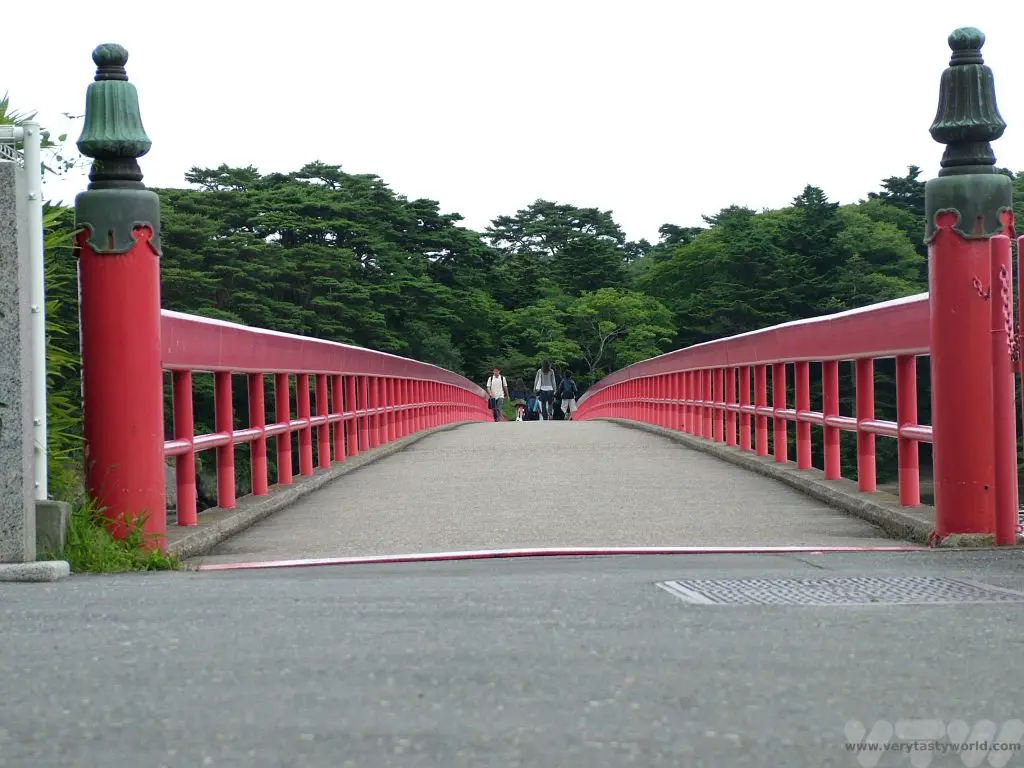
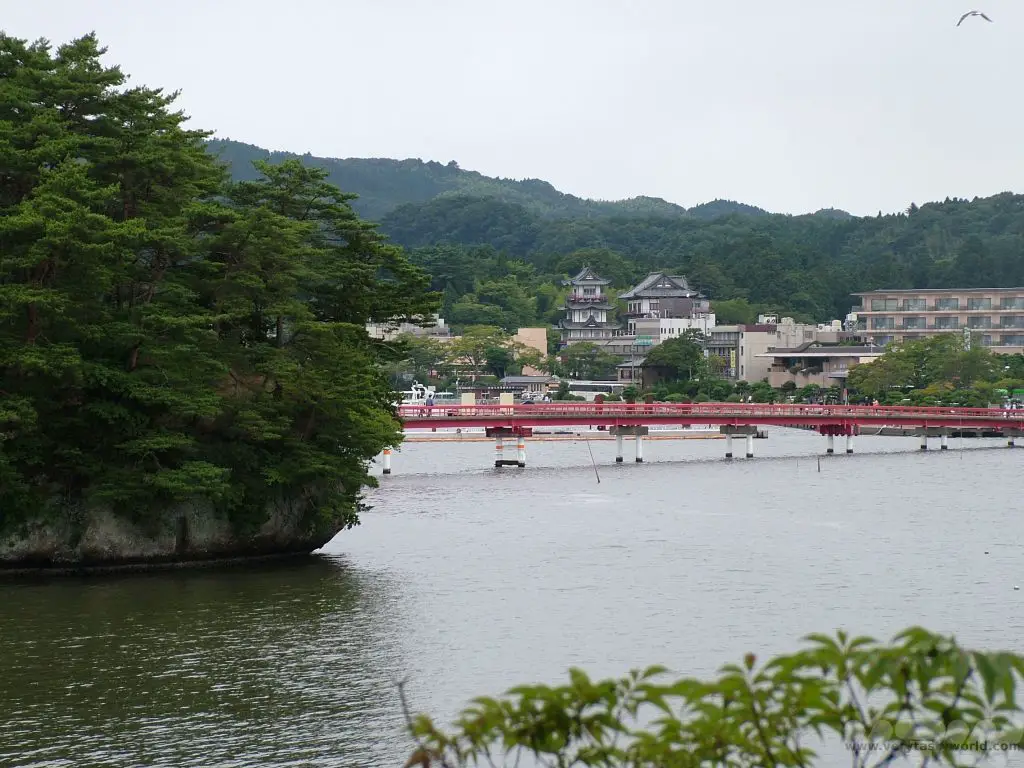
But taking a boat trip across the bay is highly recommended as you will be able to see some of the more remote islands. Beware, though, bird food is available to buy prior to boarding the ship and the seagulls very much know this, so we were followed by flocks of gulls eager to feast upon a tasty snack.
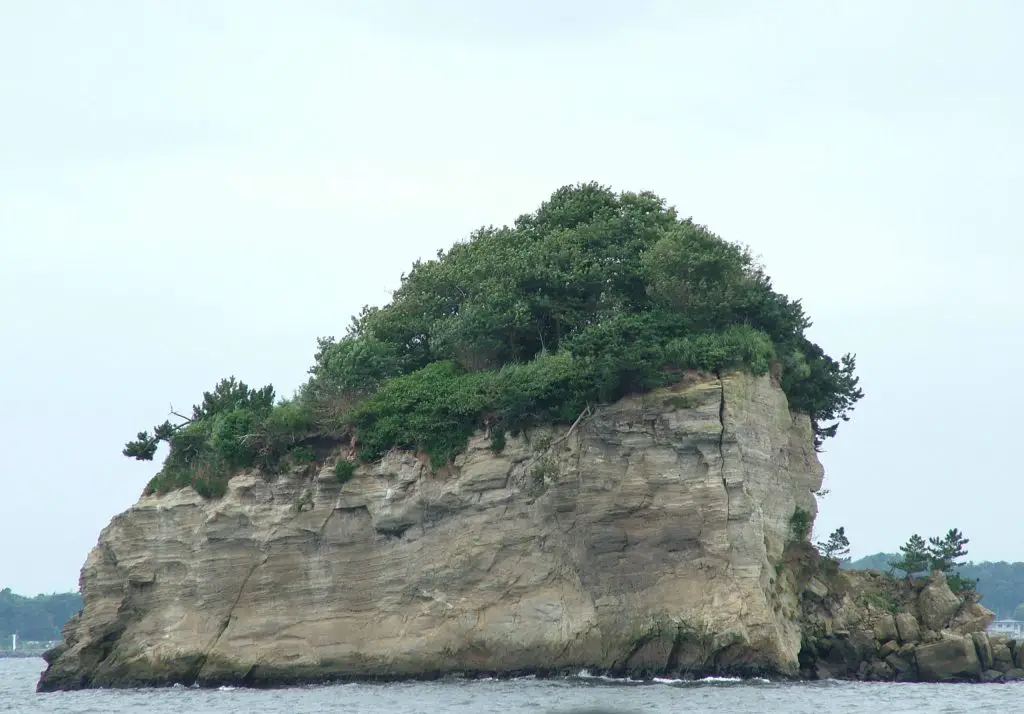
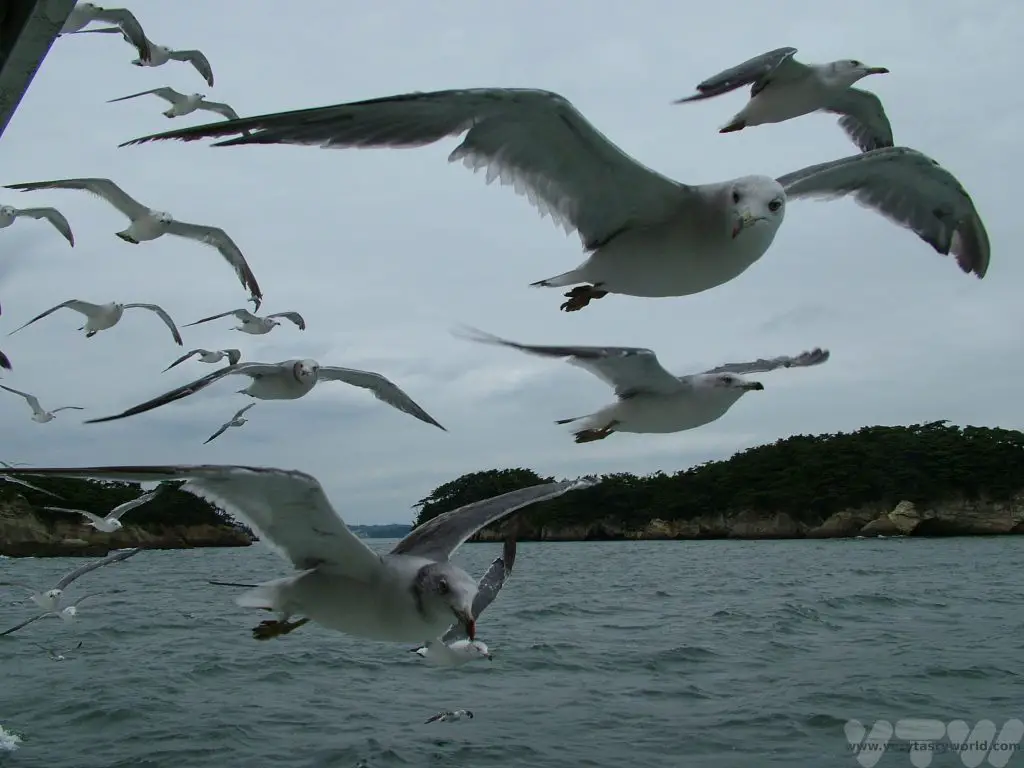
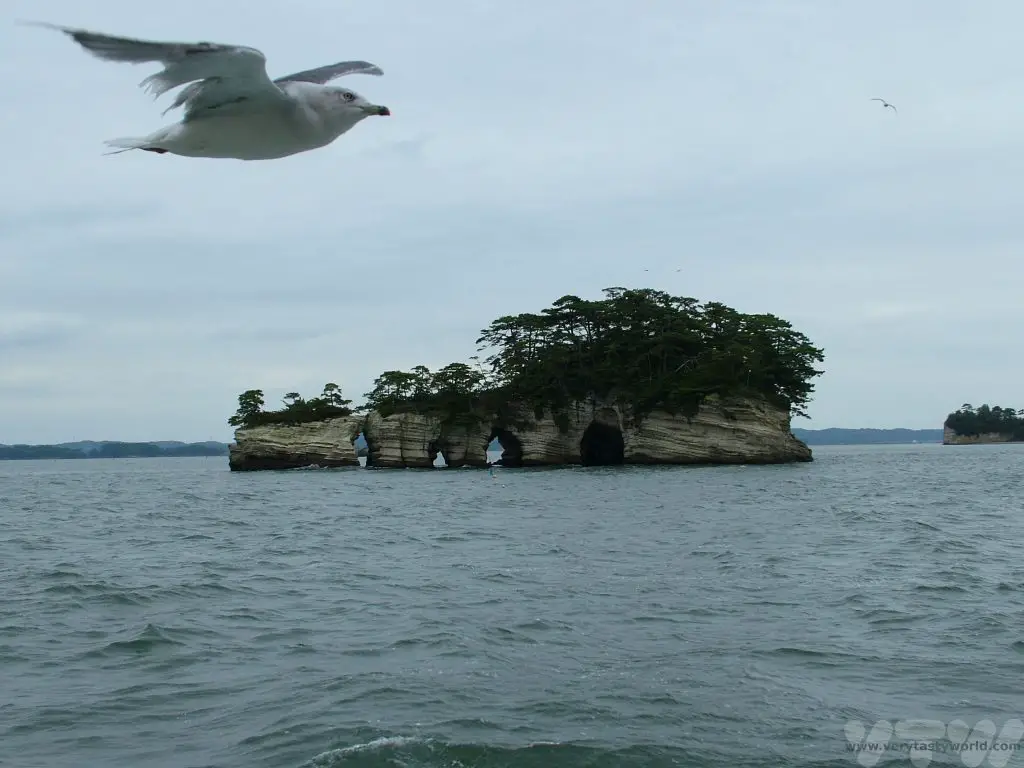
It is reputed that Japan’s most famous poet, Basho, best known in western countries for his haiku, was reportedly so struck by the awesome beauty of Matsushima, that he was lost for words and could only utter, ‘Matsushima, Ah Matsushima, Matsushima,’ to describe his feelings about viewing the area. The story is likely to be apocryphal but the sentiments are appropriate.
The viewing point isn’t near the shore, it’s a walk across the railway tracks and up a hill to a park. The weather wasn’t really on our side on the day of our visit but we had come all this way to see one of Japan’s greatest views, so a rainy trudge wasn’t going to stop us.
In fact, a very kind lady was driving past in her car and stopped to offer us a lift, which we were happy to accept. She knew exactly where we were heading and we exchanged pleasantries about the weather. ‘O-ame,’ (big rain) we declared. She agreed. After she’d dropped us off in the car park we thanked her profusely and wandered through the park to look at the view. This probably isn’t the same view that Basho enjoyed but it was wonderful nevertheless, despite the rain.
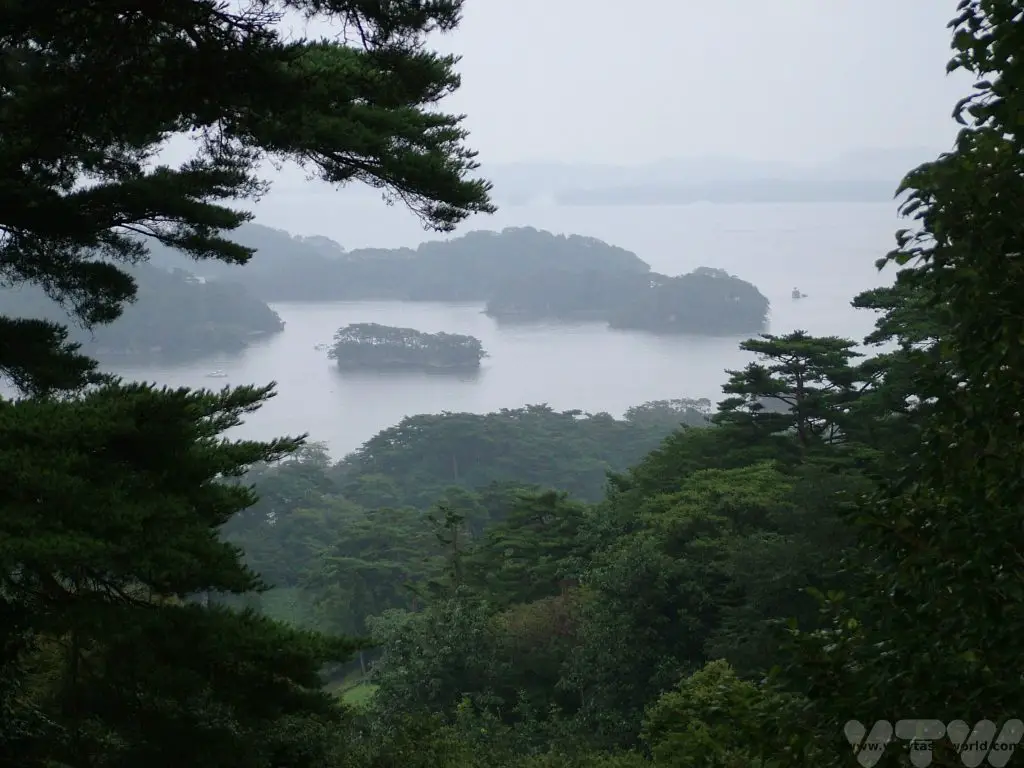
The town is lovely to wander around and there are also some interesting temples to visit.
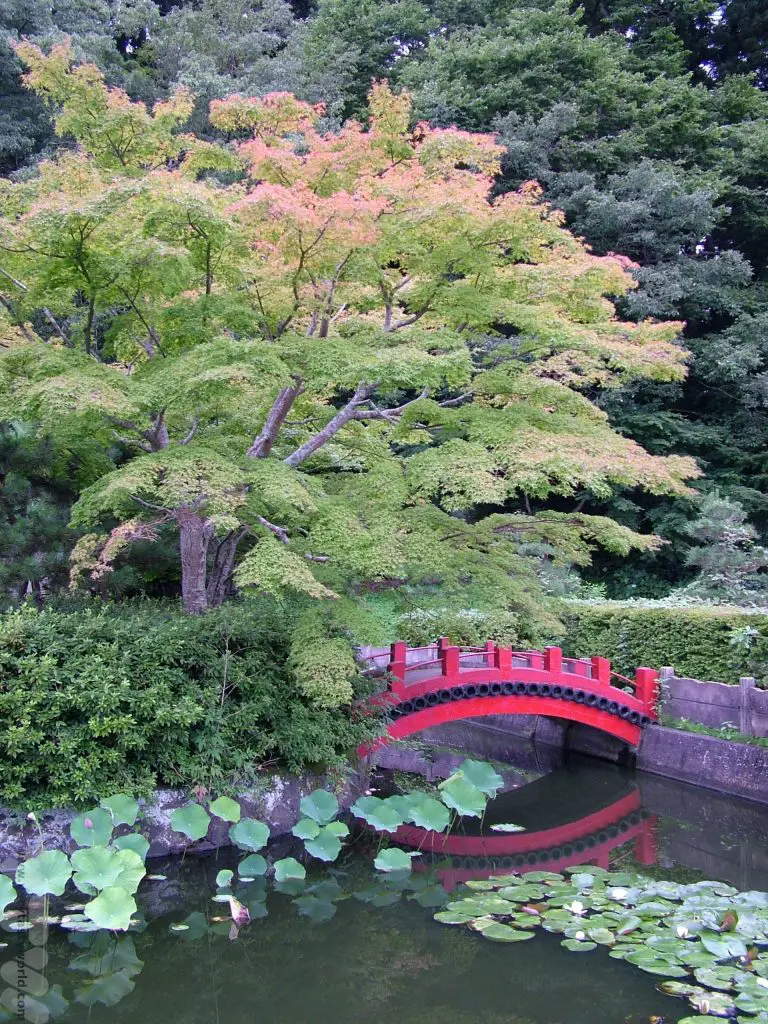
The local foodie specialty is gyu tan – beef tongue. It might not sound very appealing but in fact it’s delicious – it has a very soft texture and is packed full of beef flavour. It’s in the top right of the picture below which shows a set meal that also offered some sushi, miso soup and pickles.
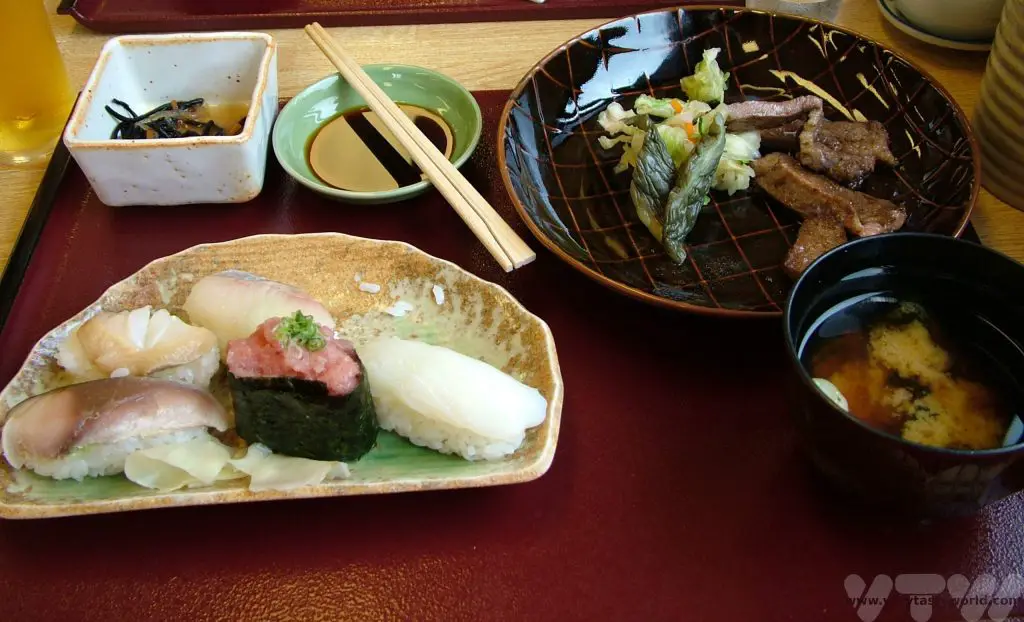
Scenic Japan View Number Three: Amanohashidate
The third view of Japan is a little trickier to reach but it is definitely worth making the journey. You can reach Amanohashidate via a direct train from Kyoto but the journey may be a bit complicated – our train was scheduled to split at a station part way through the journey – fortunately we learned about this prior to the carriages parting and found our way to the right section of the train. The excellent and indispensable hyperdia site will help with journey planning.
Amanohashidate is a sand spit that spans the mouth of the delightful Miyazu bay. The name is a bit of a tongue twister but it translates to something akin to ‘bridge over heaven.’ It is a very pleasant walk from the railway station across the spit to the other side of the bay, a distance of about three and a half kilometres. The sand bar is covered with pine trees that provide shade in the heat of the sun.
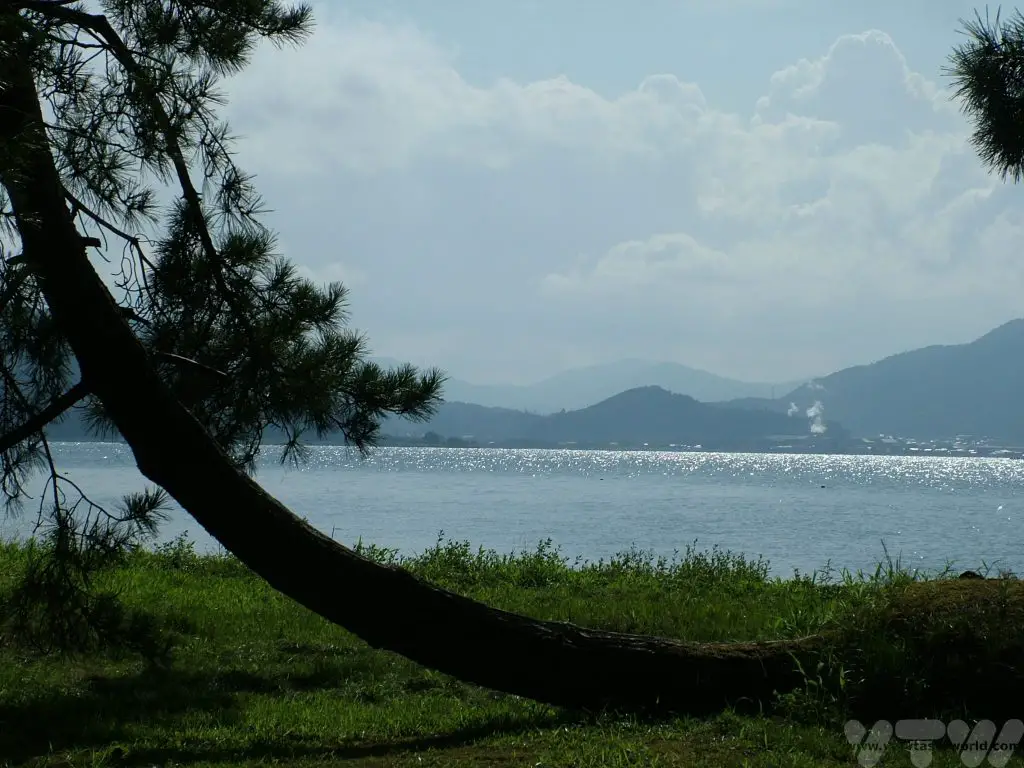
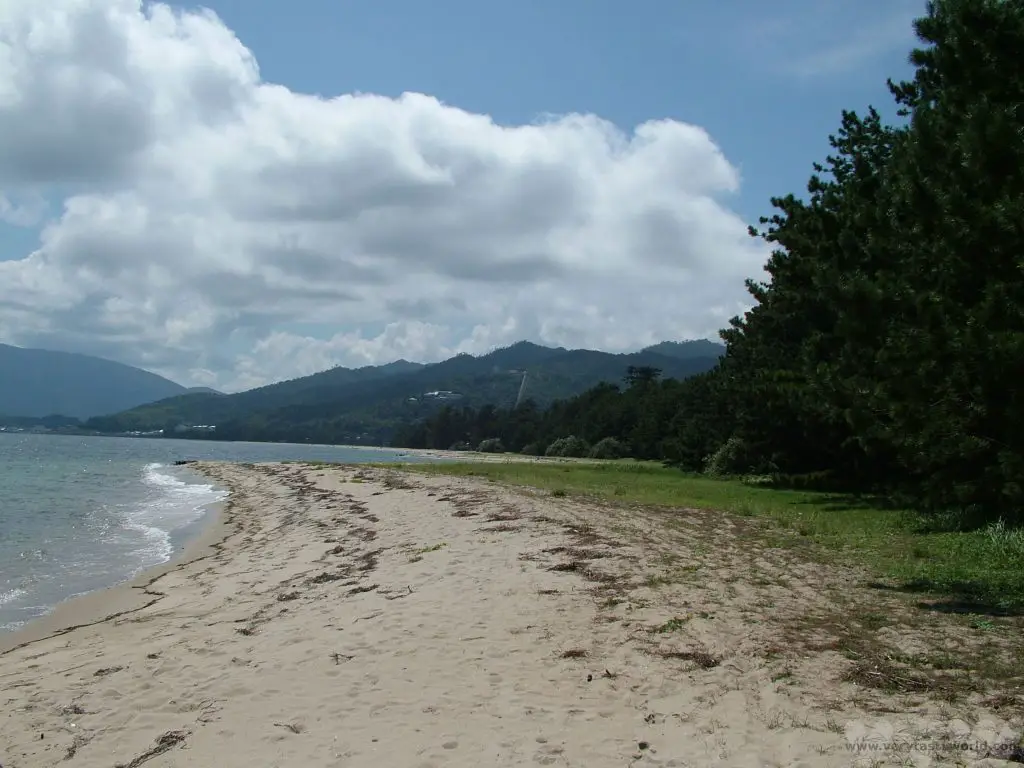
Then you can then wander through the small town of Miyazu to catch a cable car to the viewing point. (This photo shows the downhill run, which obviously has a better view.)
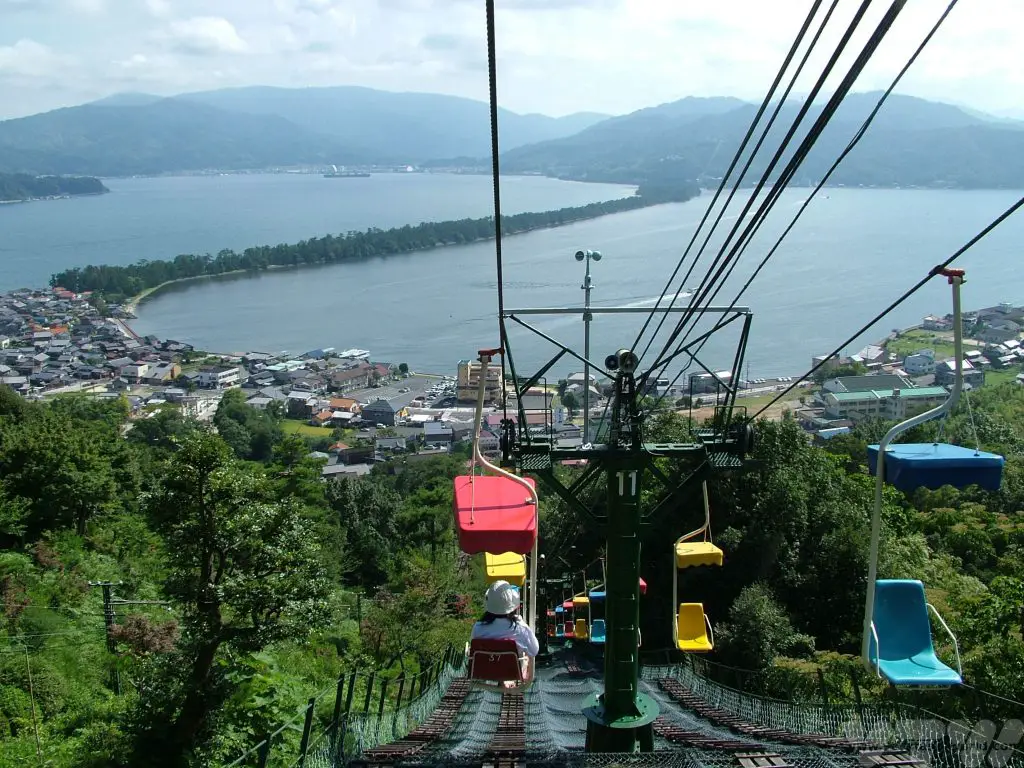
The scenery is wonderful, especially if you are lucky enough to see it on a sunny day.
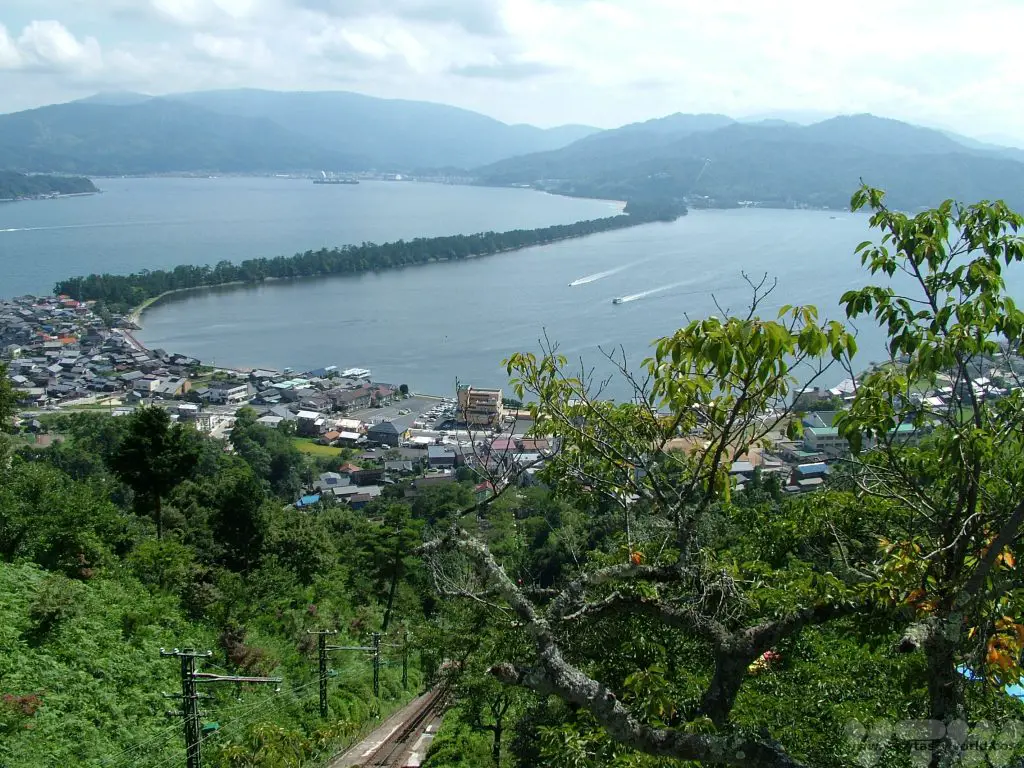
But it’s very important to know that there is a specific technique to maximise your viewing experience. You should bend over and look at the sand spit through your legs – there are special observation points to allow you to do this. The reason for this amusing way of viewing is that an upside-down perspective gives the impression of the bridge floating to heaven.
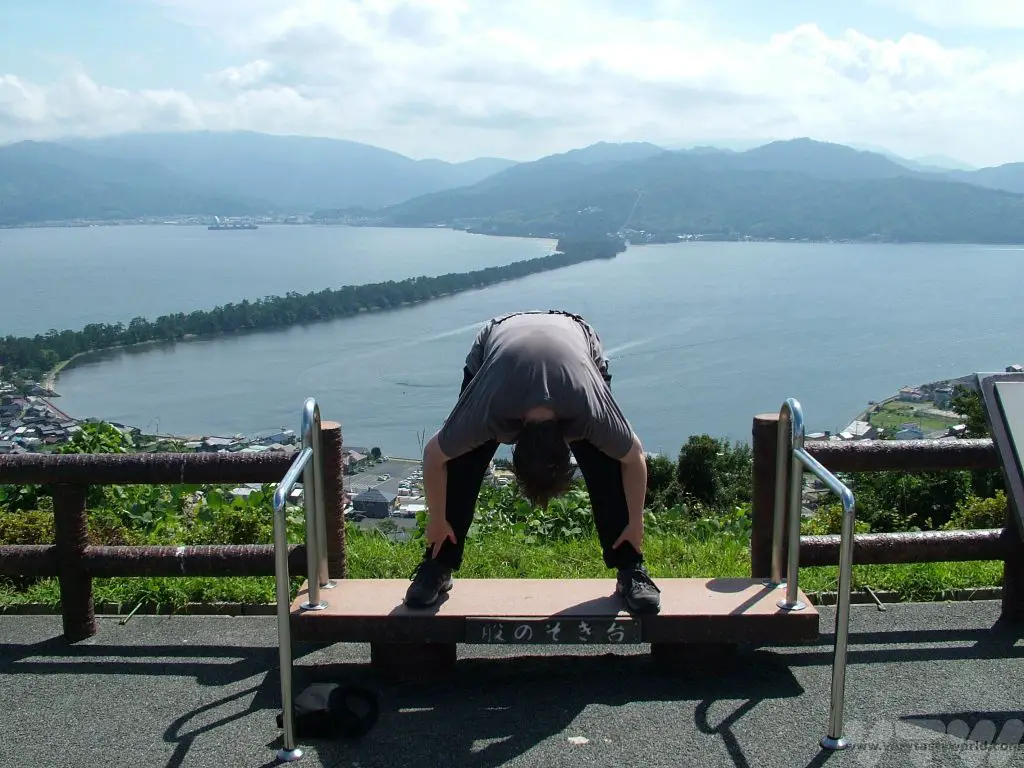
Actually it looks like this.
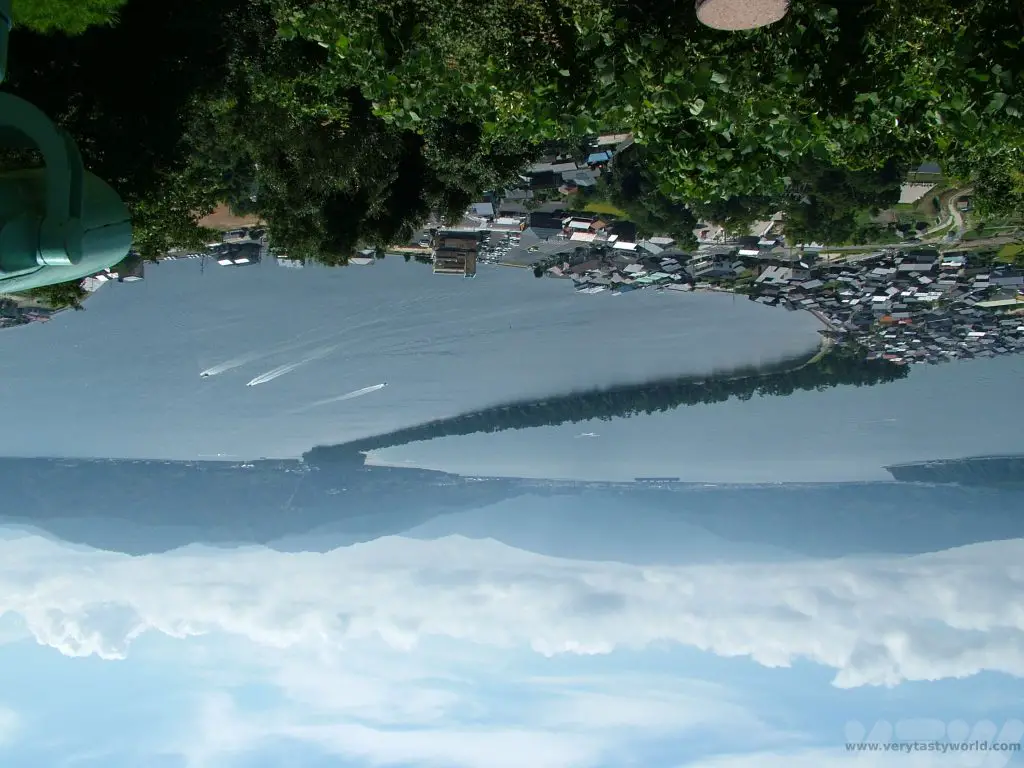
It’s great fun to watch other visitors enjoying themselves – everyone has a good laugh as they bend over to view.
There is a restaurant at the top of the viewing point area. As with most restaurants in Japan, the food is tasty and wholesome. We had chirashi sushi (a rice bowl with prawn, squid, salmon roe and shredded omelette) and udon noodles, accompanied with tempura and washed down with a nice cold beer. All enjoyed with the most delightful backdrop.
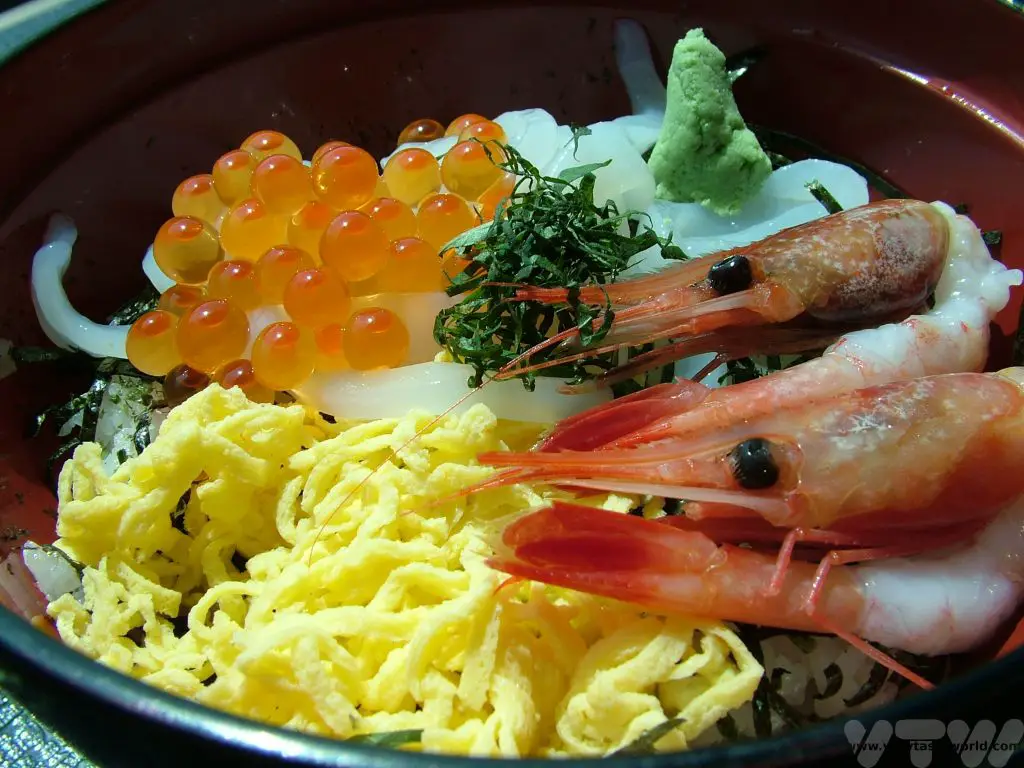
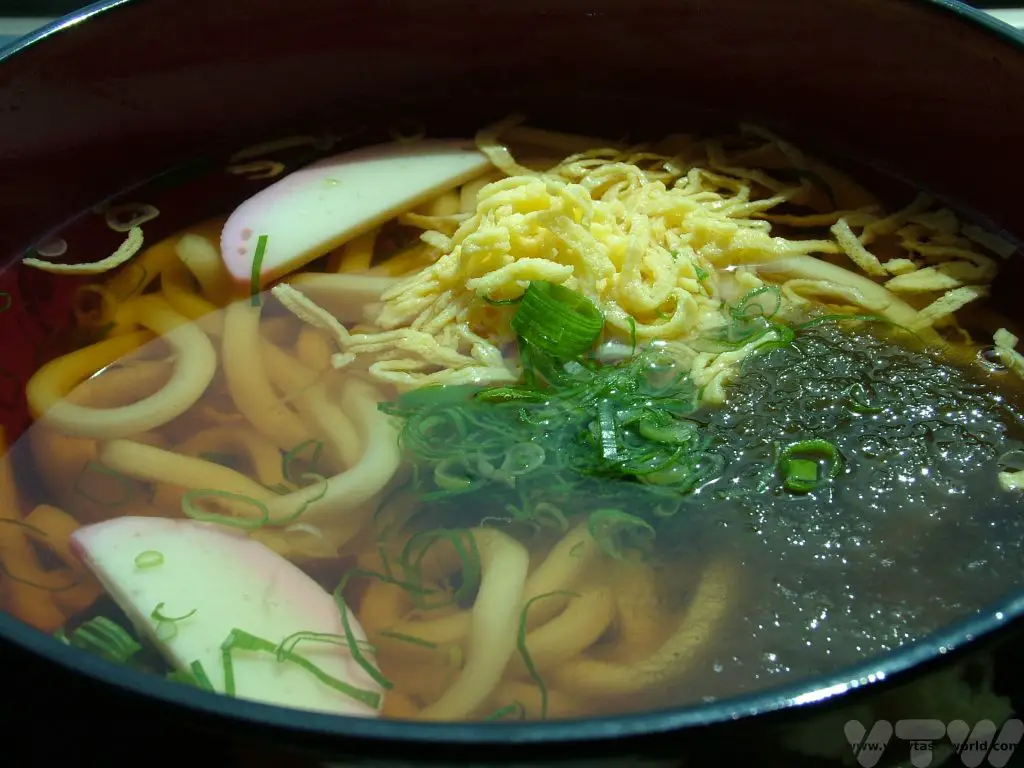
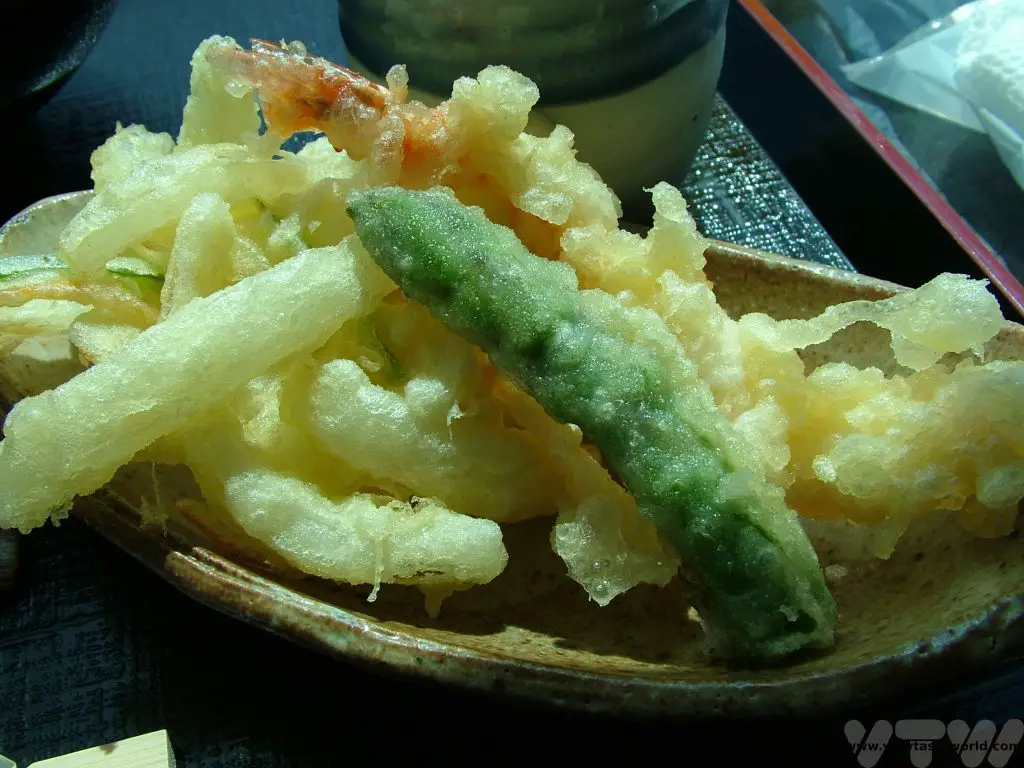
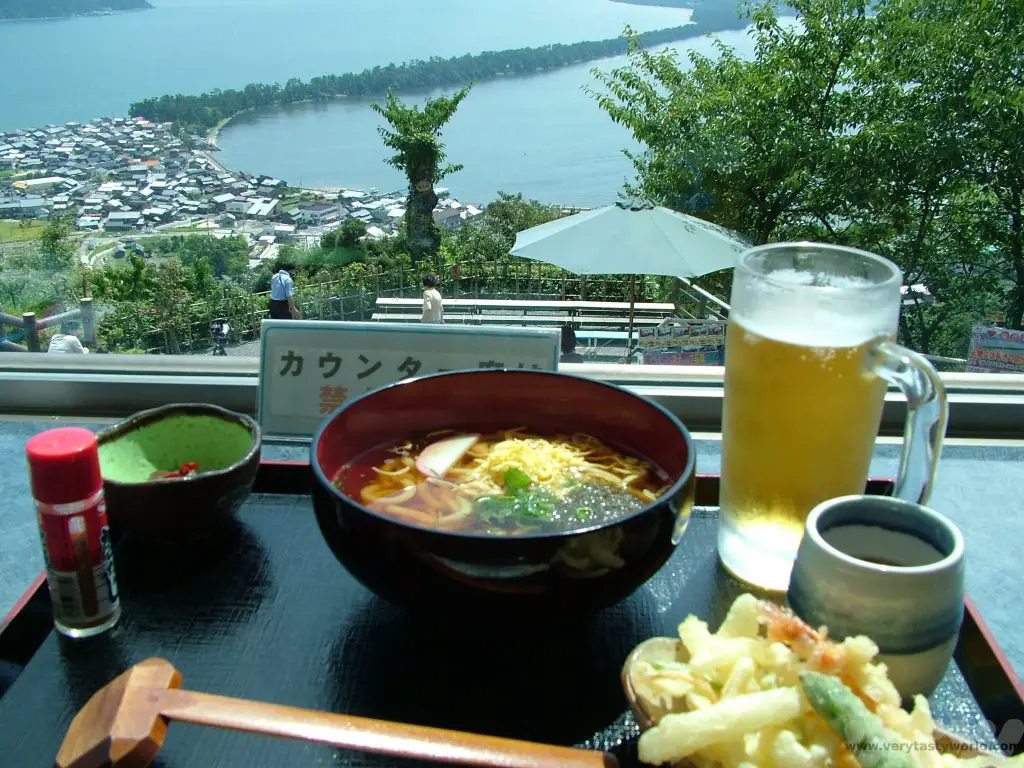
Three amazing places, three spectacular views. But these are the daytime views. Japan also has three night-time views. Actually, there are top three gardens, castles, mountains, sacred sites, hot springs, festivals and many, many more.
But that’s for another time.

- Recipe: Simmered Shiitake Mushrooms

- How to Use Public Transport in Japan

- RECIPE Oyakodon Donburi

- Planning a Trip to Japan
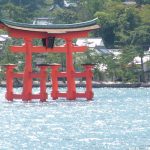
- The Makanai: Cooking for the Maiko House

- Setsubun Food – Bean Throwing Day

- The Gassho Farmhouses of Rural Japan
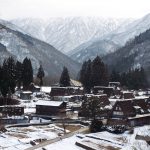
- Recipe: Japanese Simmered Pork Belly – Buta no Kakuni

- RECIPE: How to Make Umeboshi

How to Cross the Road in Vietnam
One of the most striking things that the first time visitor to Vietnam will notice, from the moment you exit the airport arrivals area, is the sheer number of scooters. Motorcycles are the preferred means of transportation for local people – they are cheap, convenient and can carry entire families if needed. It is estimated that there are around 45 million scooters on the road in a country of around 92 million people. It is impossible to visit any city in Vietnam without seeing – and hearing – masses of motorbikes at all times of the day and night.
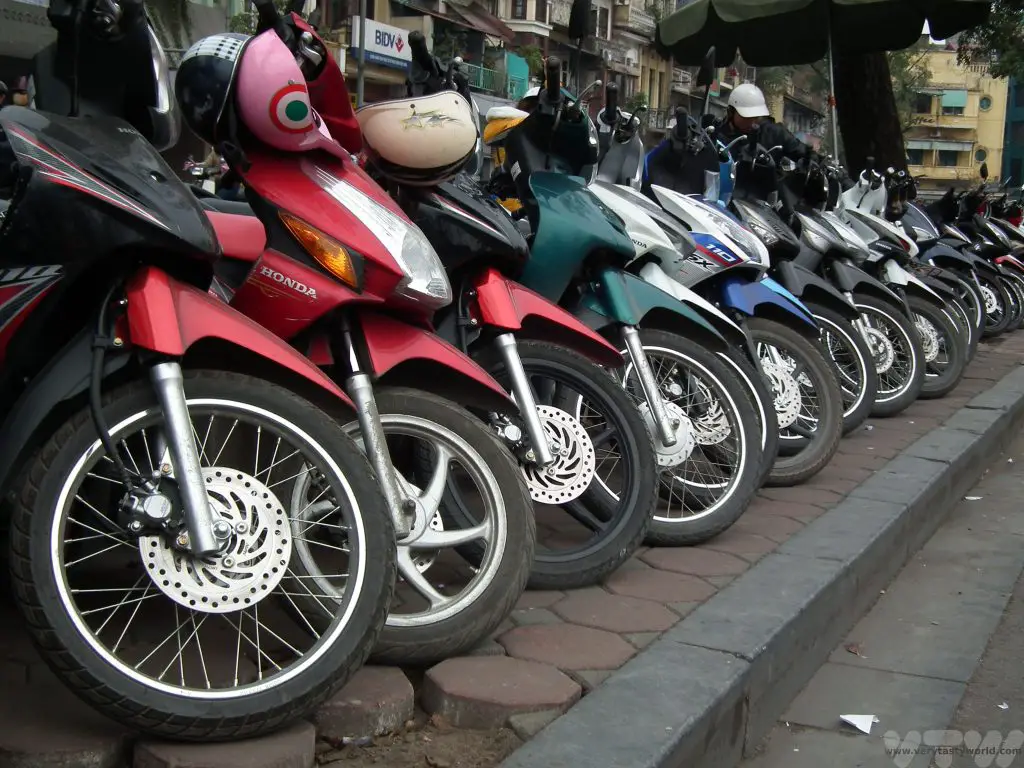
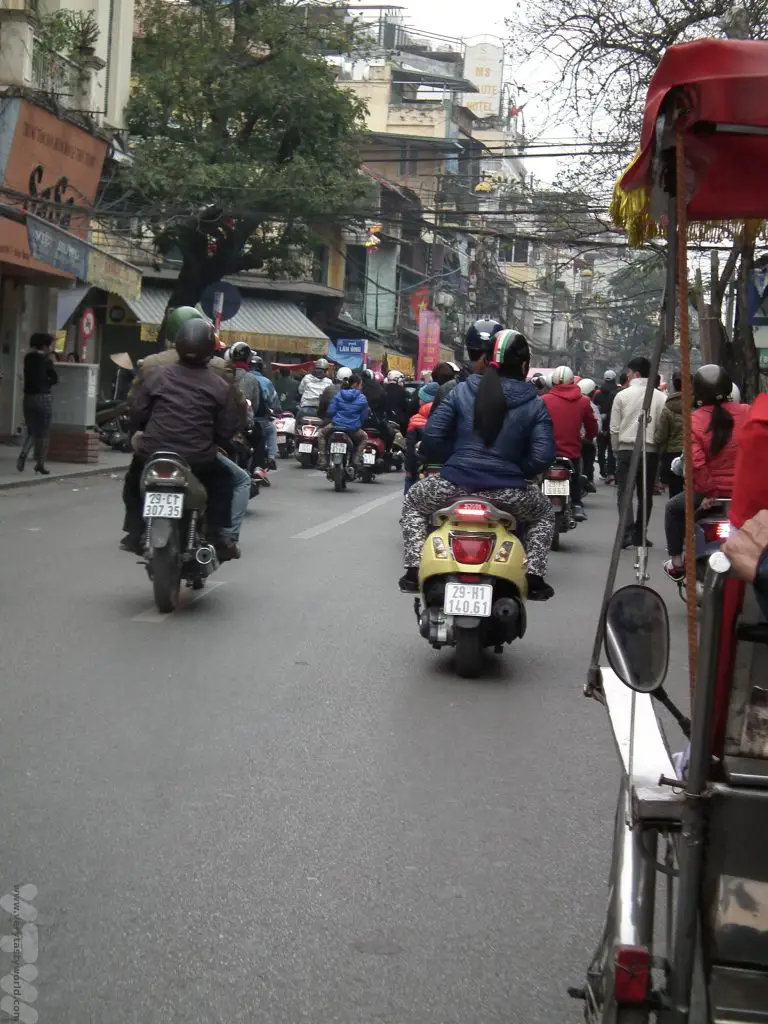
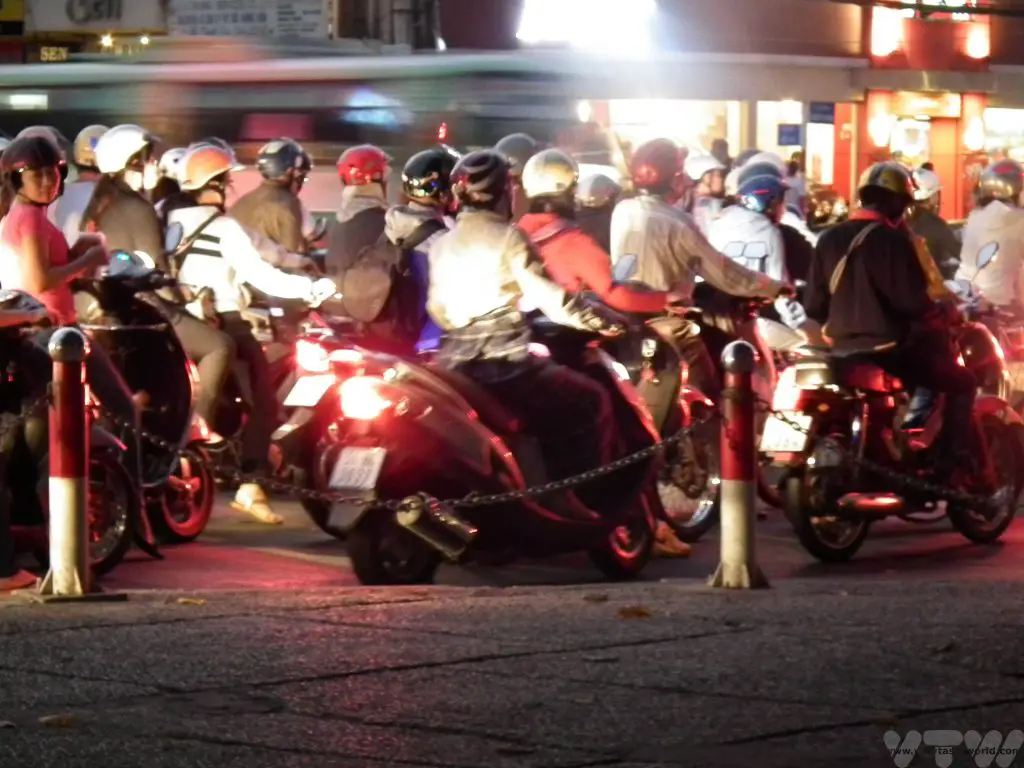
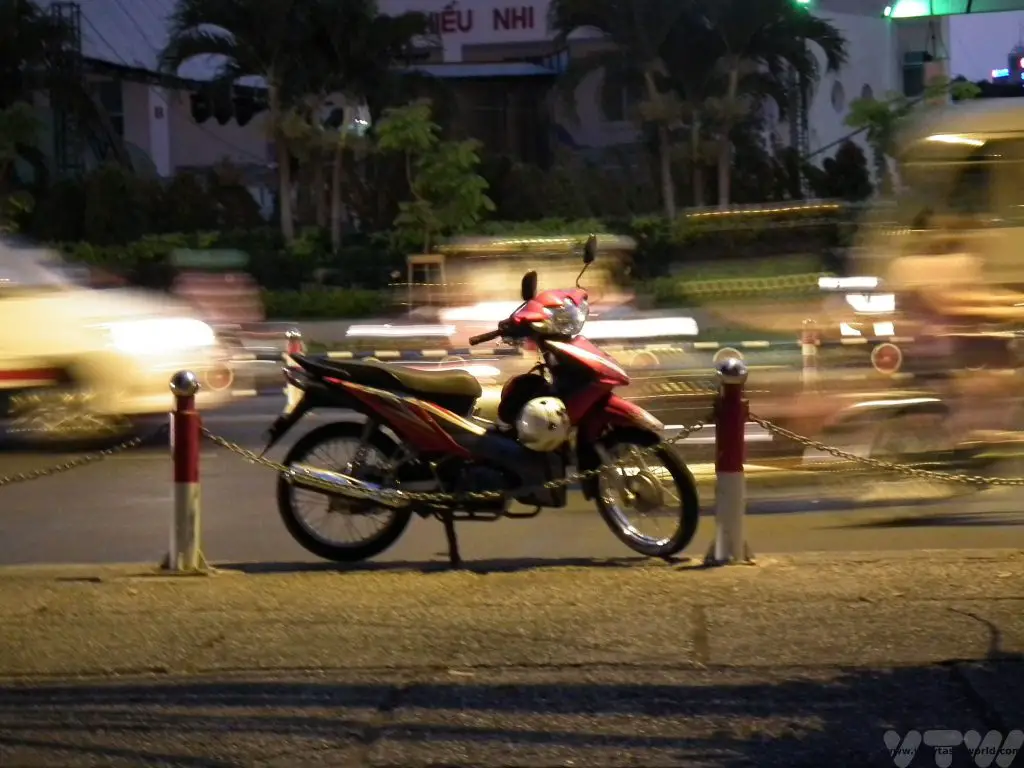
While they are clearly a hugely convenient mode of transport they do present something of a challenge for tourists who want to cross the road. And most tourists do want to cross the road at some point, otherwise they would only be able to turn left and walk around the block. Or turn right and walk around the block the other way. Which would be sad as there are so many amazing sights in Vietnamese cities it would be a shame only to see the sights of a single block of buildings.
How To Cross the Road in Vietnam – A Guide
There are two possible courses of action.
Option 1: See if you can spot a local person who wants to cross the road at roughly the same point on the street that you do. Saunter up to them (without appearing to be creepy, of course), get as close as you can (definitely without appearing to be creepy) alongside them whilst maintaining an appropriate distance and preferably downstream of the traffic direction. Follow them. Try to appear nonchalant.
Option 2: Go it alone. You can do it. There is a convention to crossing the road:
Try to find a suitable crossing point. There are zebra crossings. Be aware that even though there is a crossing, the traffic won’t actually stop. Look purposeful. Develop an expression that says you REALLY want to cross the road. Hold your arm out and wave it slowly up and down. This will signal to the motorcyclists that you are planning to cross.
Take a deep breath, wait for the most appropriate gap in the traffic and step out slowly. Walk forward with arm outstretched. You might need to stop as a scooter goes past in front of you, but that’s fine.
THE GOLDEN RULE IS: NEVER STEP BACK. EVER.
Once you are committed, you have to cross. If you are in the middle of the road, there will be motorcyclists riding behind you. If you step backwards you have a very good chance of hitting one or being hit.
Just keep calm and keep crossing. The traffic will just carry on around you.
Here’s a video to show the full road-crossing experience. Please note that the camerawork won’t be winning any awards, we felt that staying alive whilst crossing took priority.

Sacred Valley Highlights to Explore in Peru
The Sacred Valley of the Incas describes the 100 km corridor between the Andean city of Cusco, the ancient capital of the Inca empire, and the remarkable citadel of Machu Picchu. While Machu Picchu is undeniably the main attraction, there are so many other sites to visit. Here is a guide to some of the other Sacred Valley highlights to explore while you are visiting the area.
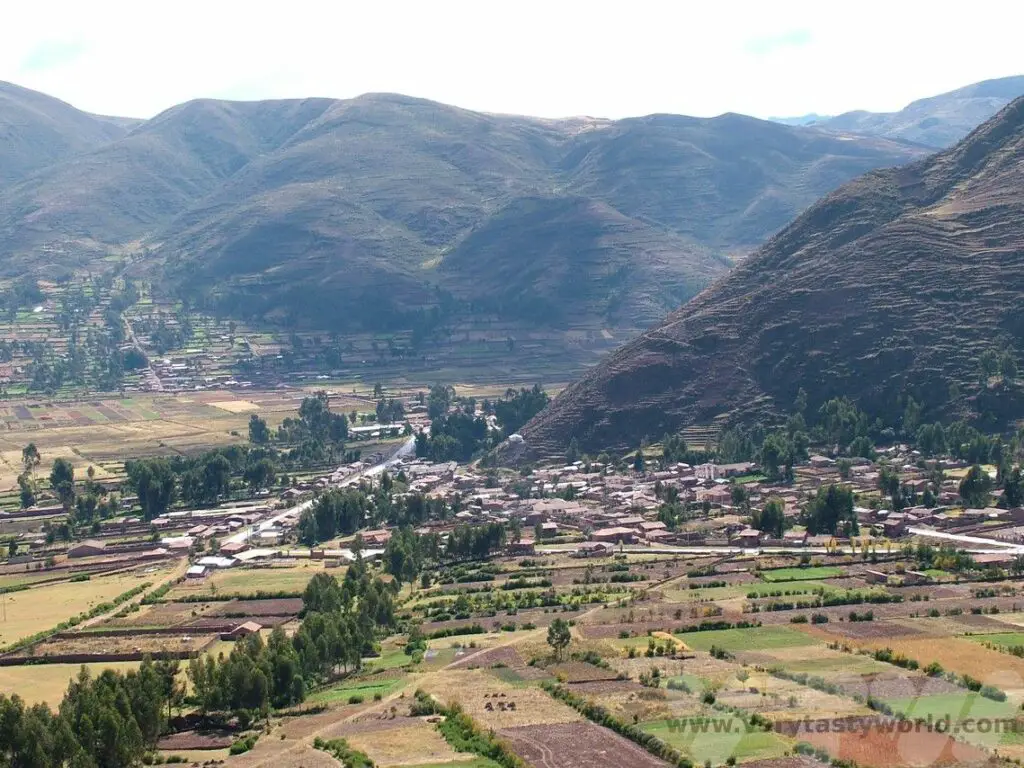
Please note that this post contains affiliate links. If you click through and decide to make a purchase we will earn a small commission, at no extra cost to you, which will help towards the costs of running this site.
Getting to the Sacred Valley
Most people fly into Cusco. Flights are available from all over Peru, notably its capital Lima, but also from other regions. We flew in from Puerto Maldonado having visited the Peruvian jungle some days previously. One thing to note is that Cusco is at an altitude of 3400m and if you are flying in from sea level, it is definitely worth spending a couple of relaxing days in the city and surrounds to acclimatise to the altitude.
An alternative route is to catch a bus up to the Andes. It takes around 22 hours from Lima. There are a few advantages to using the bus: it is cheaper, you can enjoy the mountain scenery and also it means that you climb up to the altitude at a more leisurely pace than flying in, which means that you can adjust more slowly.
Sacred Valley Highlights
Cusco
Cusco is the main city in the region and the most popular location to use as a base for exploring the Sacred Valley. The city was occupied by the Killke people from roughly 900CE until the arrival of the Inca in the 13th century.
It was to become the capital of the Inca Empire meaning that Cusco was, in its time, the most important city in South America. Cusco grew from a small village to a vast city thanks to Pachacuti Inca Yupanqui, who expanded the Inca Empire to cover a huge area of the South American continent. It is believed that Machu Picchu itself was constructed as an estate for Pachacuti.
Cusco’s Centro Historico is a UNESCO world heritage site and, like much of the Sacred Valley, sees colonial architecture blend alongside Inca ruins in a fusion of cultures and history. The main square is located right at the heart of the city centre. There are various shops and restaurants lining the perimeter of the square and it is frequently used for bands, who play concerts, and dance troupes. It’s a lively place where locals and tourists intermingle.
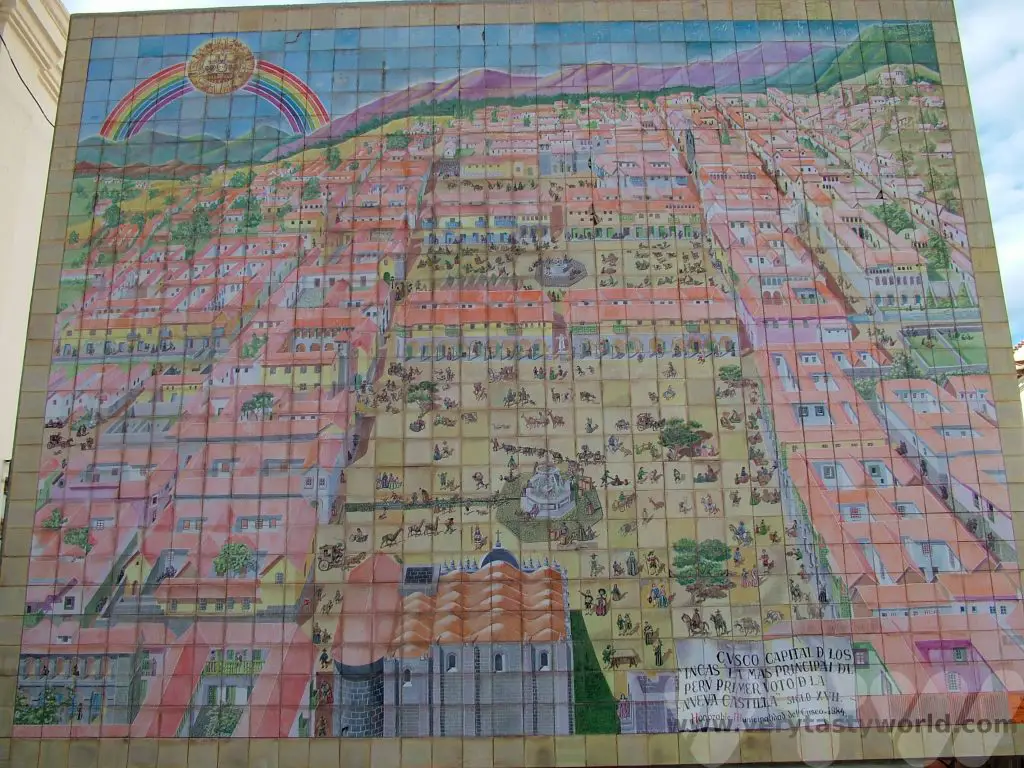
The city’s cathedral located in the north-east corner.
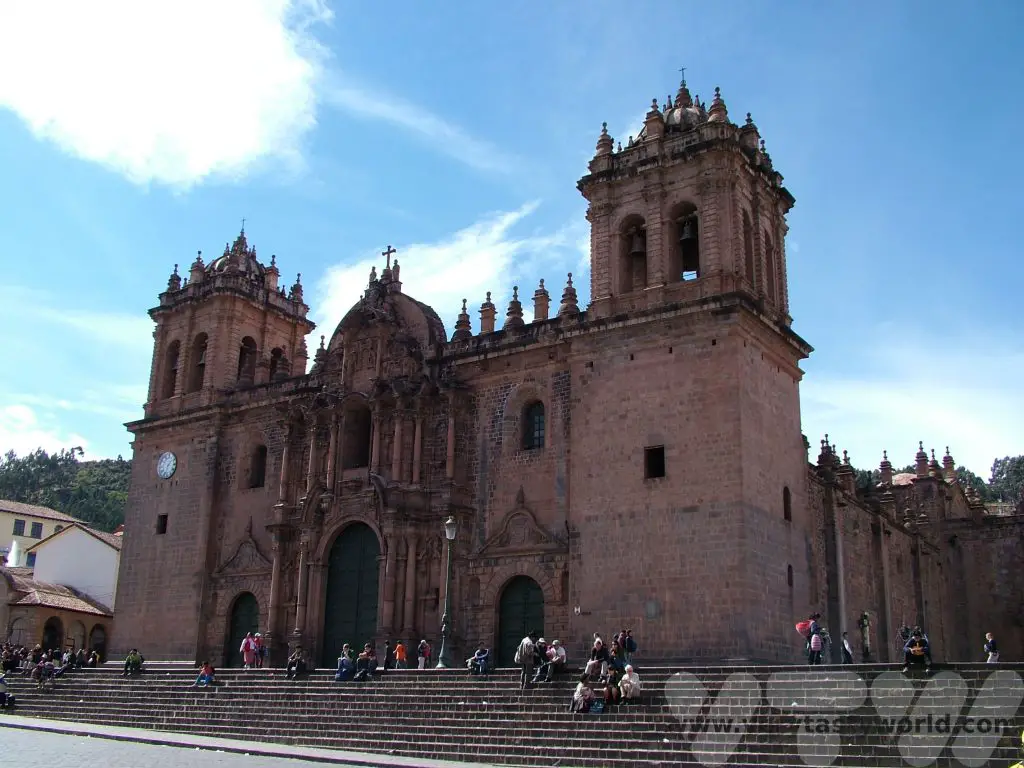
Another church that is of particular interest is the Church of Santo Domingo. It was built directly on top of the most important Inca temple of the region, Coricancha, and hence encapsulates the blending of indigenous and colonial cultures over the centuries.
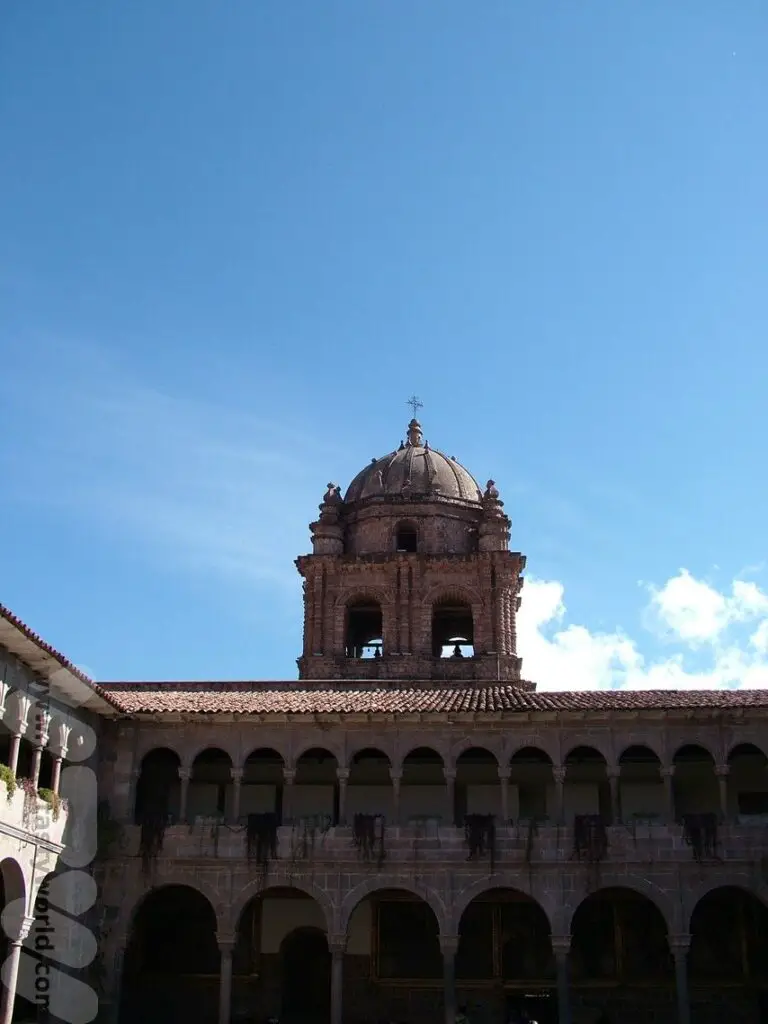
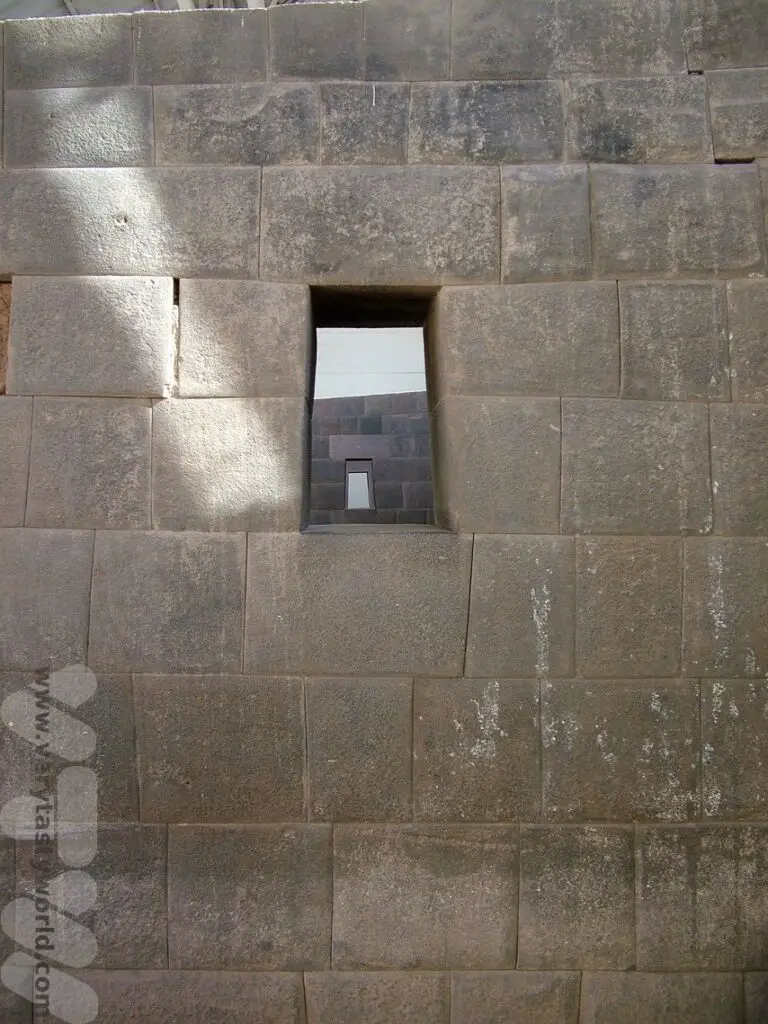
Sacred Valley Sites On The Outskirts of Cusco
There are a number of fascinating Inca sites located very close to Cusco. In fact, they are so close you could even walk to some of them if you were feeling energetic. Some are further out (up to 8km), so we recommend either booking a half-day tour with a local company, which would include a visit to all the sites, or getting a taxi, a bus or colectivo (a van/minibus that runs a particular route on no particular schedule – you usually go when the vehicle is full). You can buy a ticket that covers entry to Sacsayhuaman, Q’enqo and Tambomachay as well as the fortress of Pucapucara.
Sacsayhuaman
Sacsayhuaman is a dramatic citadel initially established by the Killke and significantly expanded by the Inca, located on a hillside overlooking Cusco.
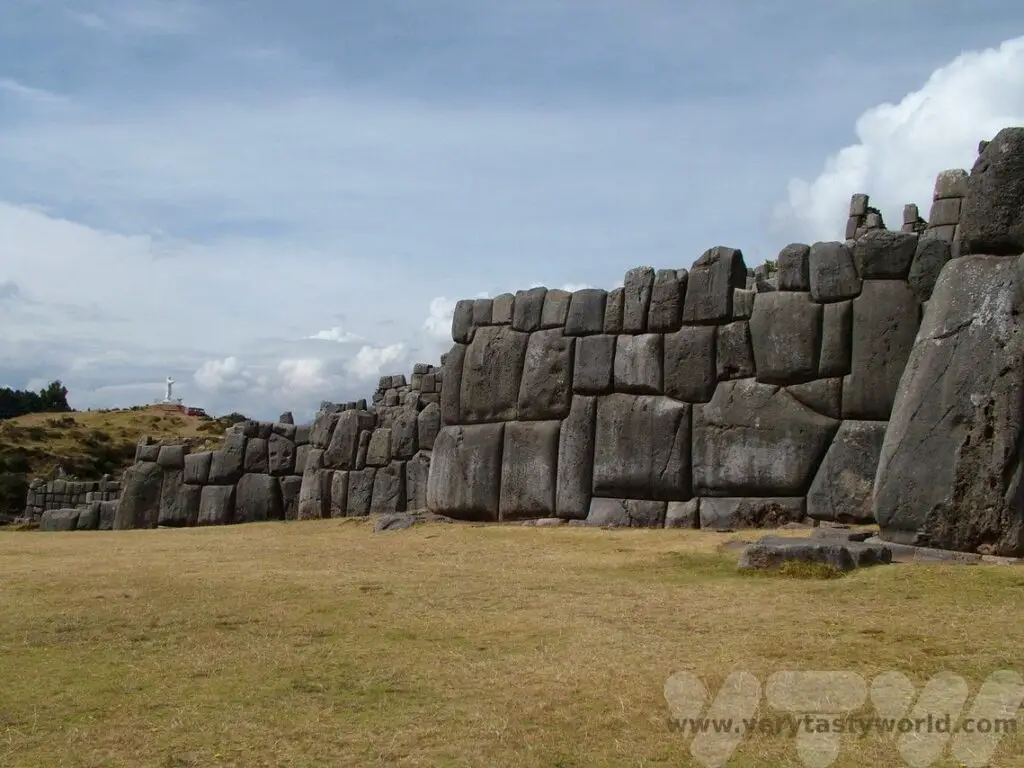
The construction is remarkable, notably the enormous stones that form the terrace wall which is adjacent to the plaza. The tallest parts of the wall reach over 6m in height and the huge stones are apparently packed so tightly that it’s impossible to slip even a single sheet of paper between them.
If you’re lucky you might even get an impromptu concert from a visiting band.
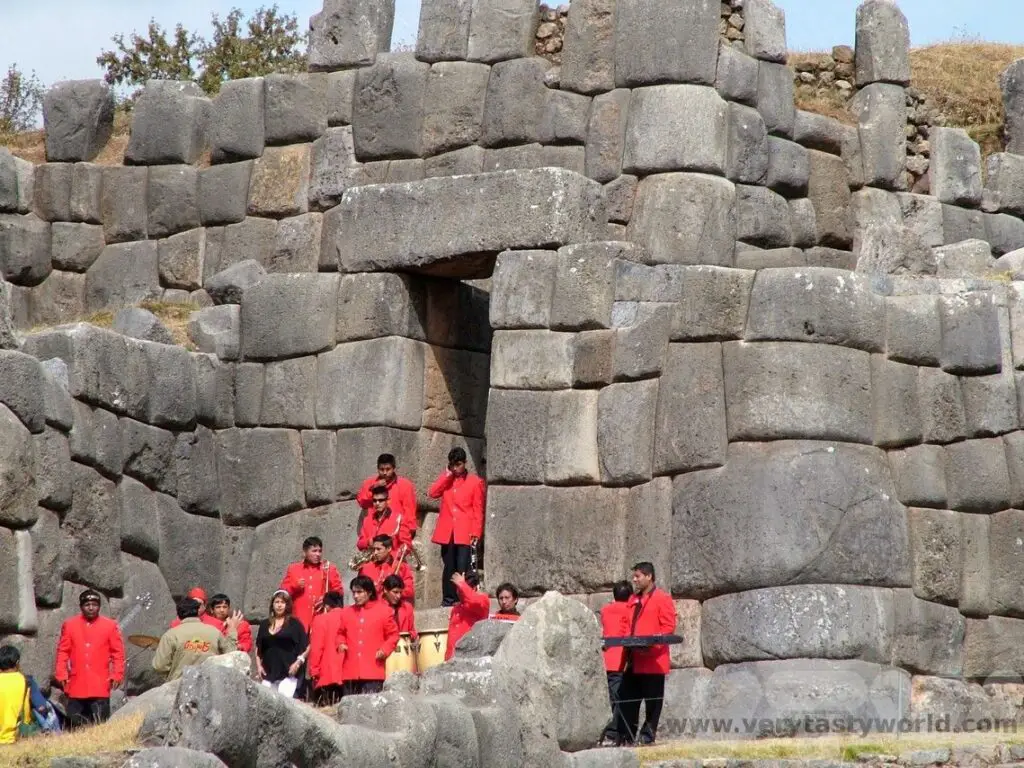
There’s a lovely view of Cusco from the site as well.
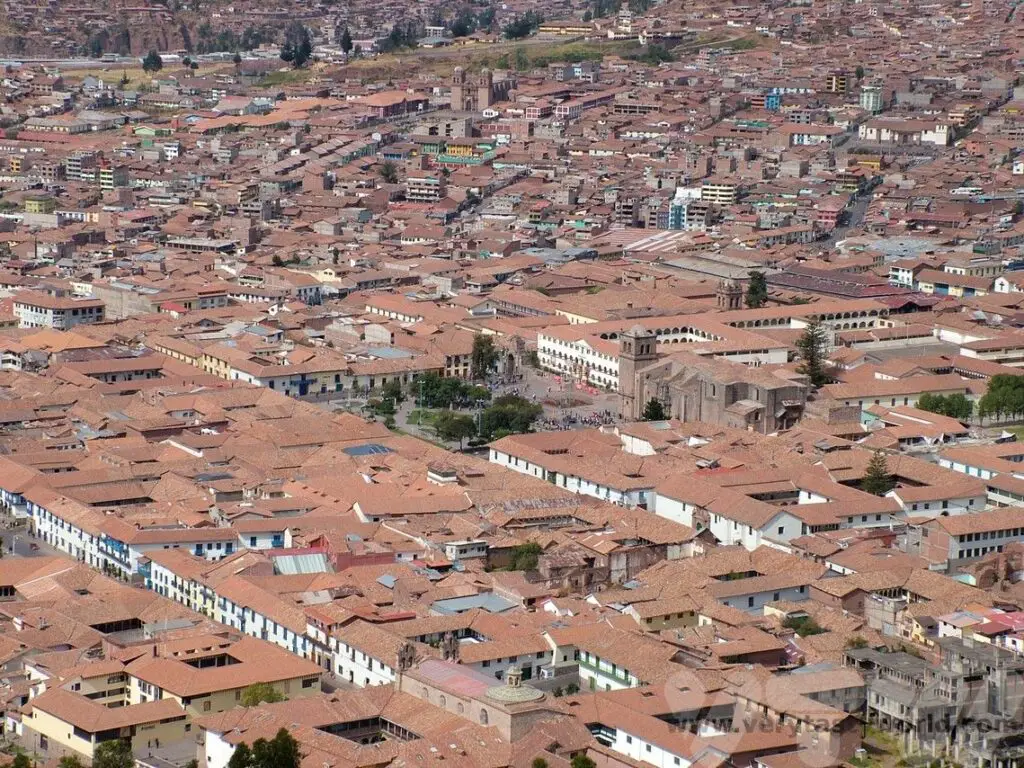
Tambomachay
This fascinating site, located near a number of springs, is comprised of canals and aqueducts that run through the rock terraces and flow into three waterfalls. The purpose of the site isn’t really known but it is thought that it may have been a sort of spa resort for the Incas or possibly a religious site.
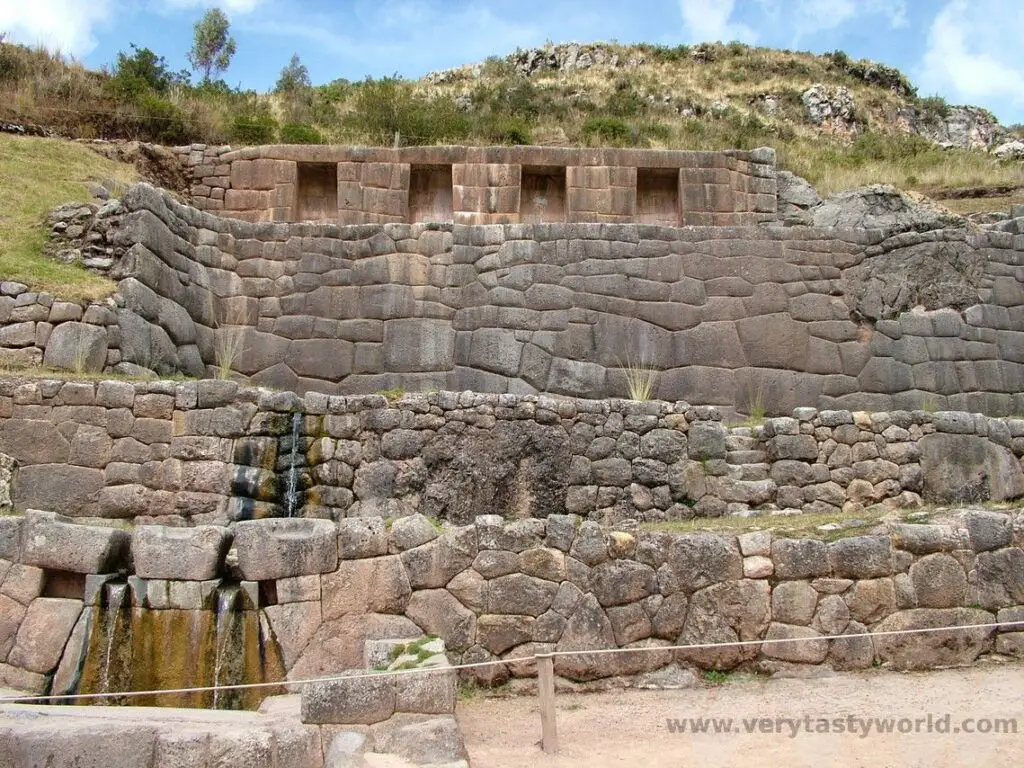
There is a legend that the water has particular qualities that may help those that are follically challenged. Yes, the water is purported to cure baldness! Further along the site, Colin was encouraged to wash his head under the water but, sadly, we can only report that the water’s reputed magical powers did not prevent further balding, nor produce any additional tresses. So it goes…
Q’enqo
This is an archaeological site thought to be a holy place or huacas. Huacas used existing rocks as a site for religious ceremonies. It is thought that sacrifices may have taken place here.
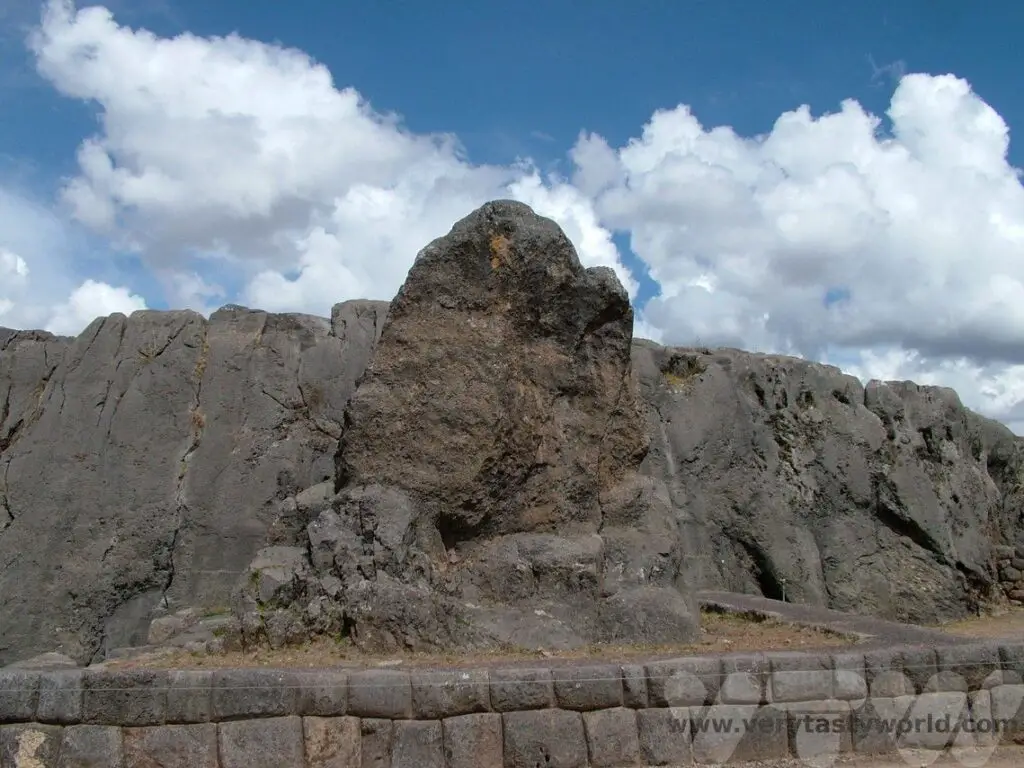
The name Q’enqo is thought to derive from the Inca word for ‘labyrinth’ possibly on account of the winding passages carved into the rock. These include several features such as altars. It’s possible to wiggle inside and explore the carved rock within.
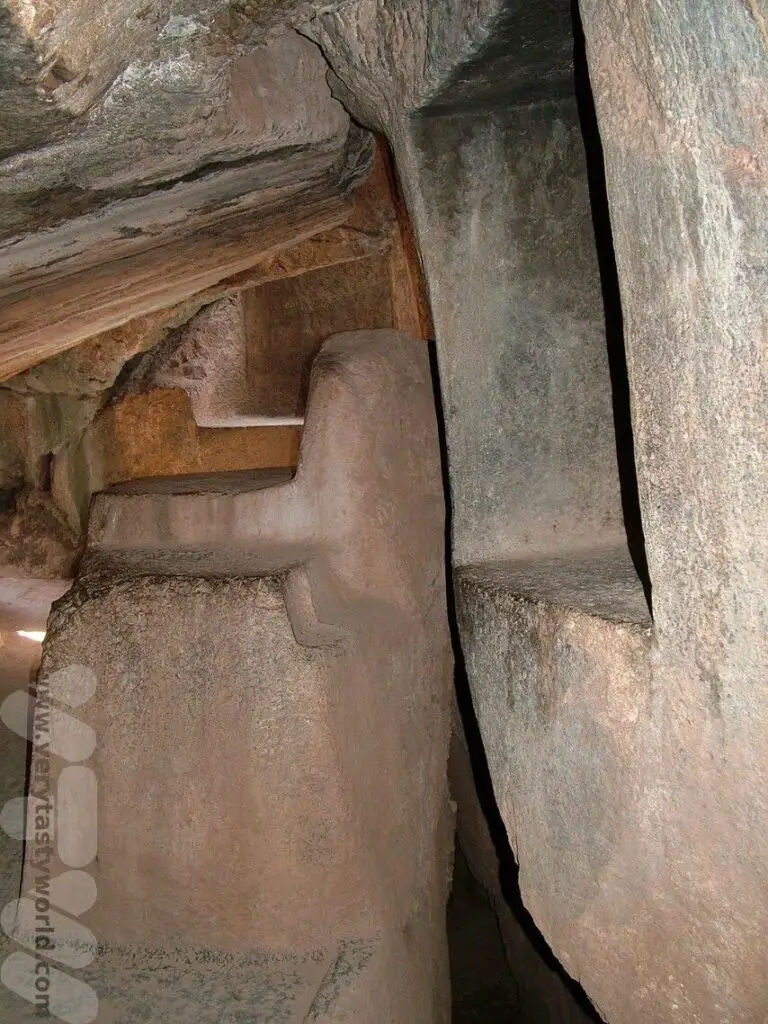
Further Along the Sacred Valley – A Day Trip
Depending on how much time you have, you can explore the Sacred Valley at your leisure. There are various transport options for travelling to the main towns in the region. There are taxis (most expensive), buses and colectivo (cheapest) available in the major towns. If you are short on time there are a number of companies that can offer day trips to the sites across the Sacred Valley. Many will offer a pickup from your hotel. These are usually full day tours and will often start early in the morning.
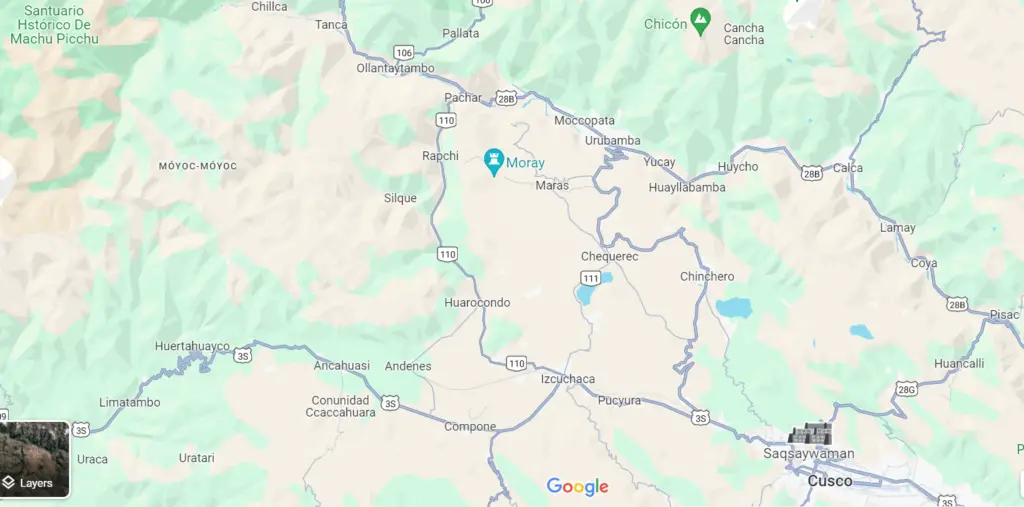
There are many sites to see in a day, so some tours may prioritise some sites or activities over others. For example, some may take you to Pisac’s market but not its Inca ruins. It’s worth shopping around to decide which towns and activities are of most interest to you.
Pisac
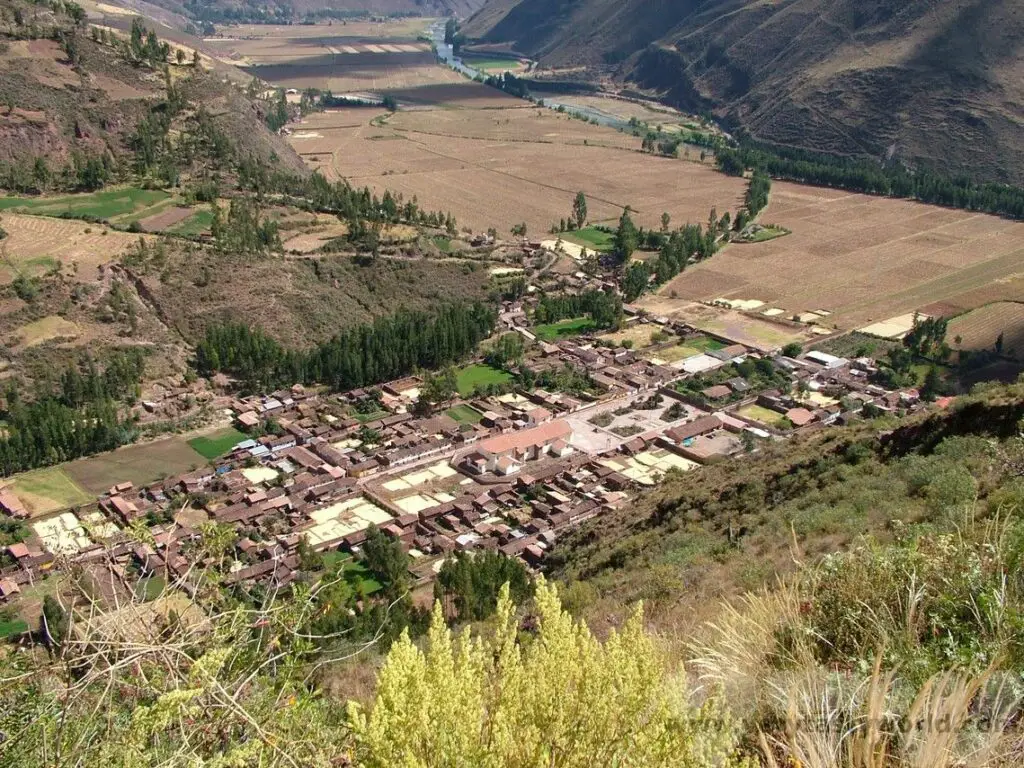
This town nestled in the Sacred Valley is famous for its market, the largest in the region. Officially it was a Sunday market but it is so popular that it runs pretty much every day. It is a bit touristy but if you are after souvenirs – and you like shopping – it is worth a visit. Arrive as early as possible to avoid the crowds.
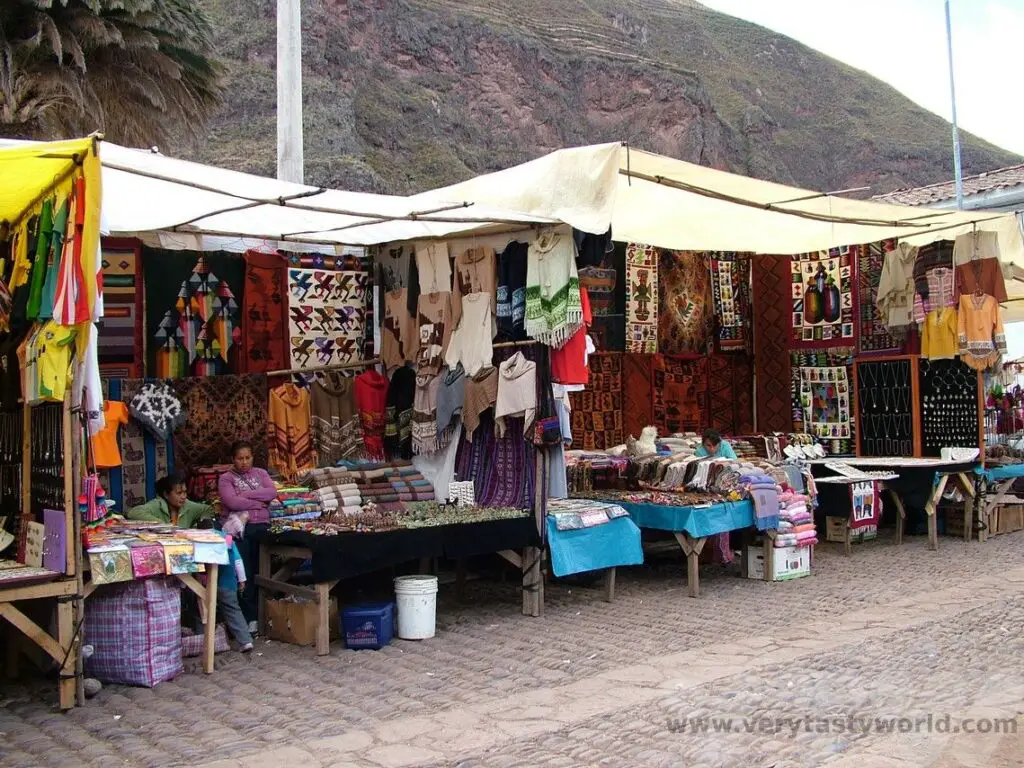
Pisac also has some splendid Inca ruins if you don’t want to haggle for souvenirs but check whether a visit to this site is included in the tour as some prioritise the market.
Chinchero
This is a charming village which has a lot of history and offers another blend of Inca and colonial architecture.
Túpac Yupanqui (the son of Pachacuti) who was the emperor of the Incas between 1471 and 1493, built a grand palace in this area. (Curiously, some academics believe that it was the Incas, led by Yupanqui, who discovered the Galapagos Islands. Although there is no evidence for this, it does reflect the vastness of the Inca empire in its heyday.) The terraces were used for agricultural purposes.
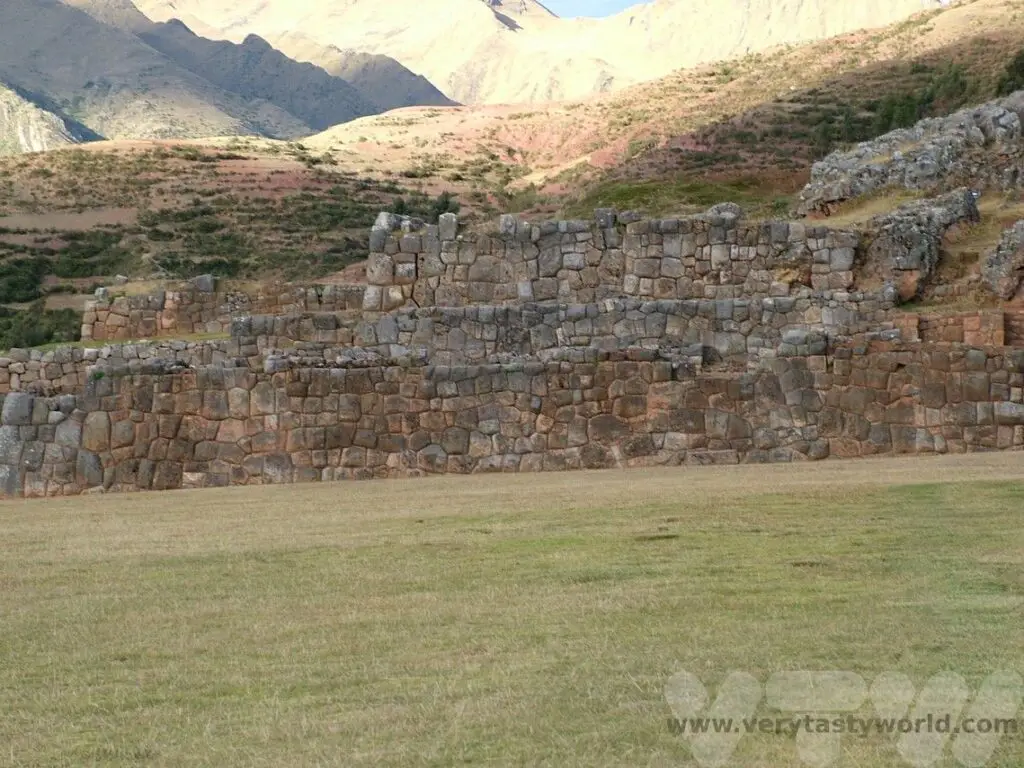
The walls with multi-angular and trapezoidal stones perfectly illustrate the complexity and sophistication of the Inca construction techniques.
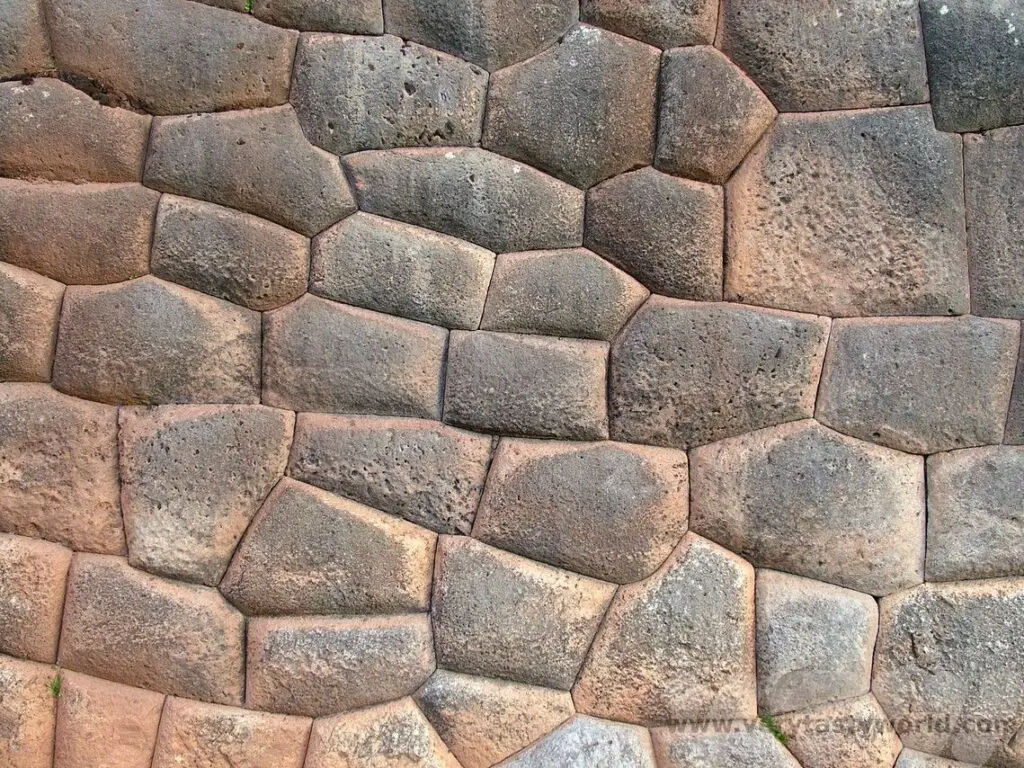
Chinchero was destroyed by rebel Manco Inca, who set it alight in 1540 in order not to leave any resources for the Spanish conquistadors, as he retreated from their unwavering advance.
When the Spanish finally settled in this town they built the Church of Our Lady of Monserrat on the remains of Yupanqui’s grand residence. It uses some of the Inca palace walls for its foundations and very much reflects the way that the cultures have integrated over the centuries.
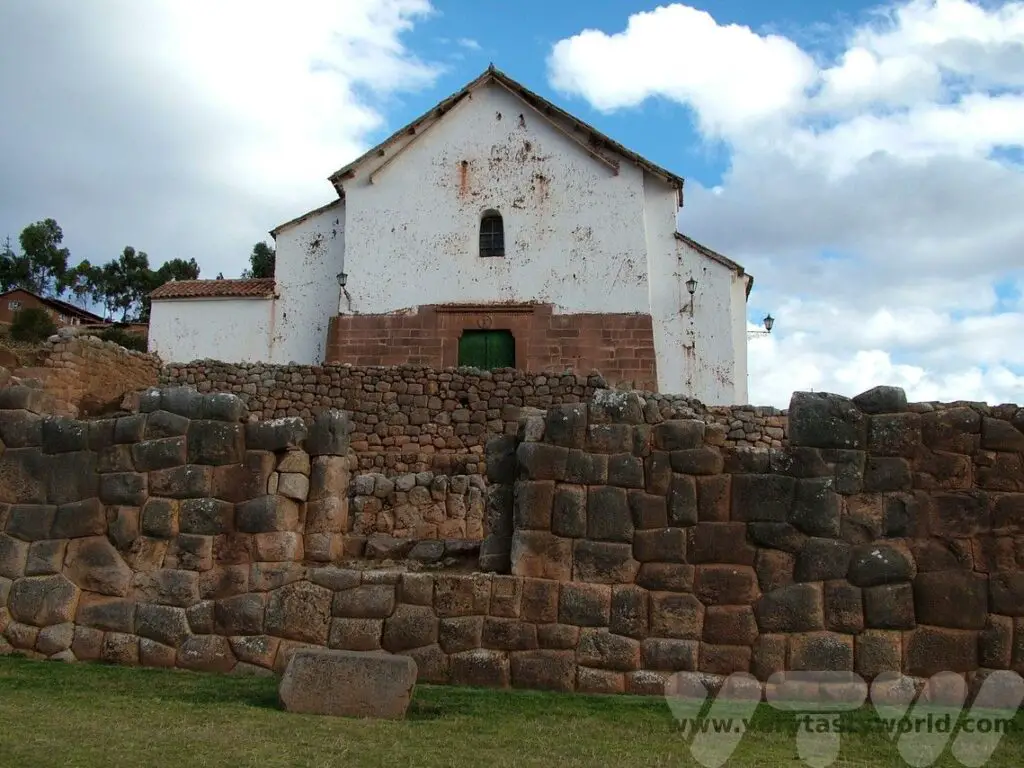
The church contains some of the best religious art in the region.
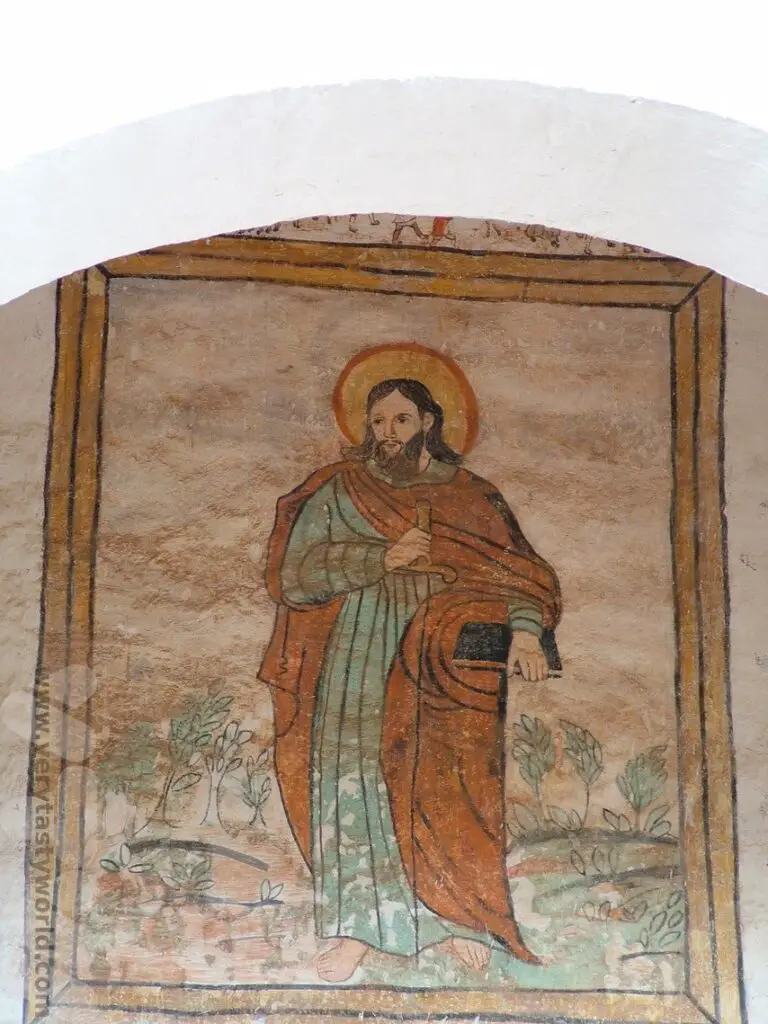
Also a centre for textiles, you may see the local women weaving colourful cloth in the streets of Chinchero. It’s very much a community working together as a co-operative.
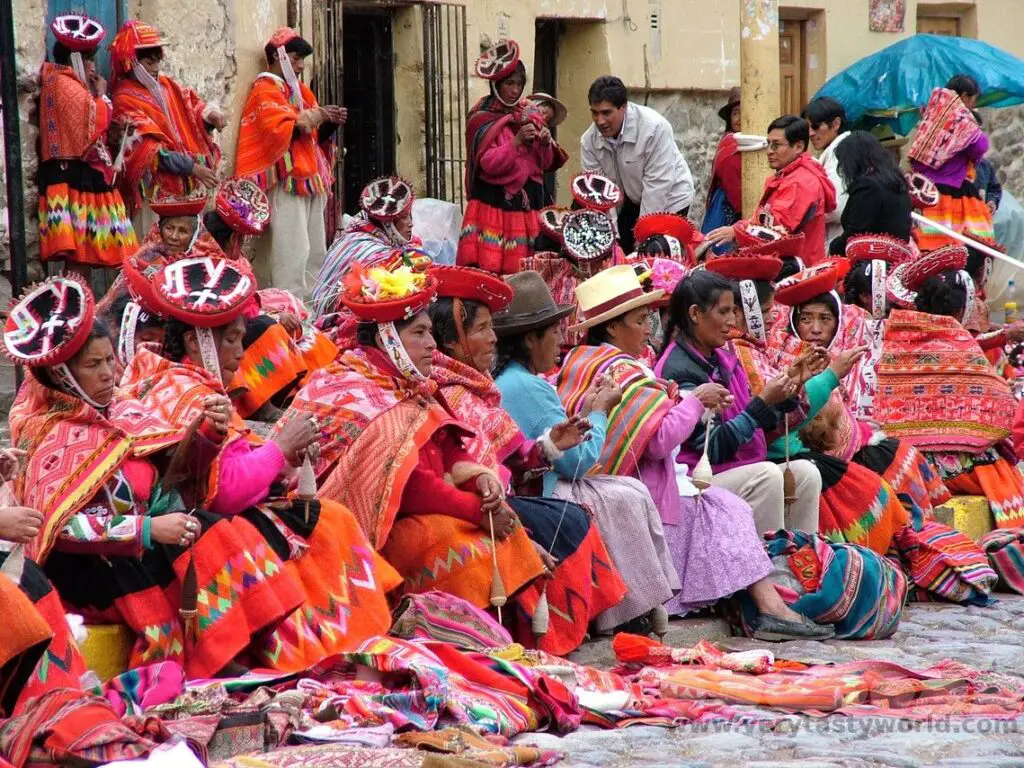
Ollantaytambo
The furthest town from Cusco on this day trip, located about 60 km away (and around 2/3 of the way to Machu Picchu as the crow flies), Ollantaytambo was established by Inca emperor Pachacuti and served as his royal residence.
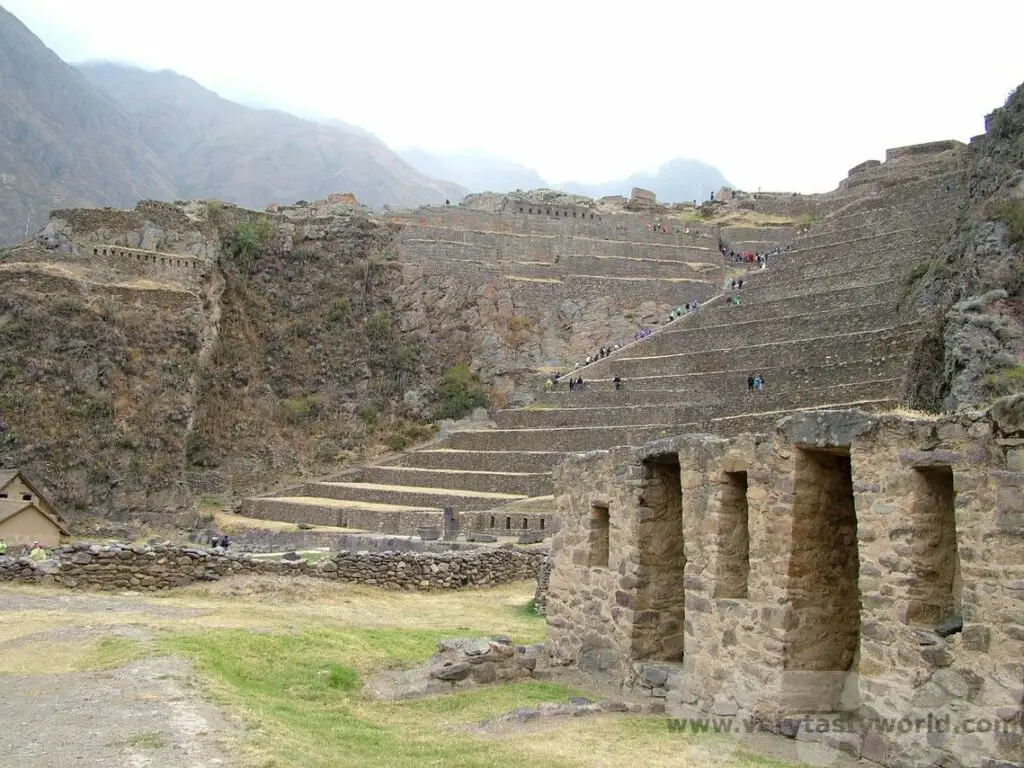
Ollantaytambo’s ruins are extremely well preserved and reflect the agricultural practices of the Incas in this area, notably the quality of the construction due to their prestigious status. The terraces are very well constructed, with high walls, and they scale the tall mountain. This has a practical effect which ensures that the Inca could grow many types of crops which flourished under the different micro-climates on the terraces.
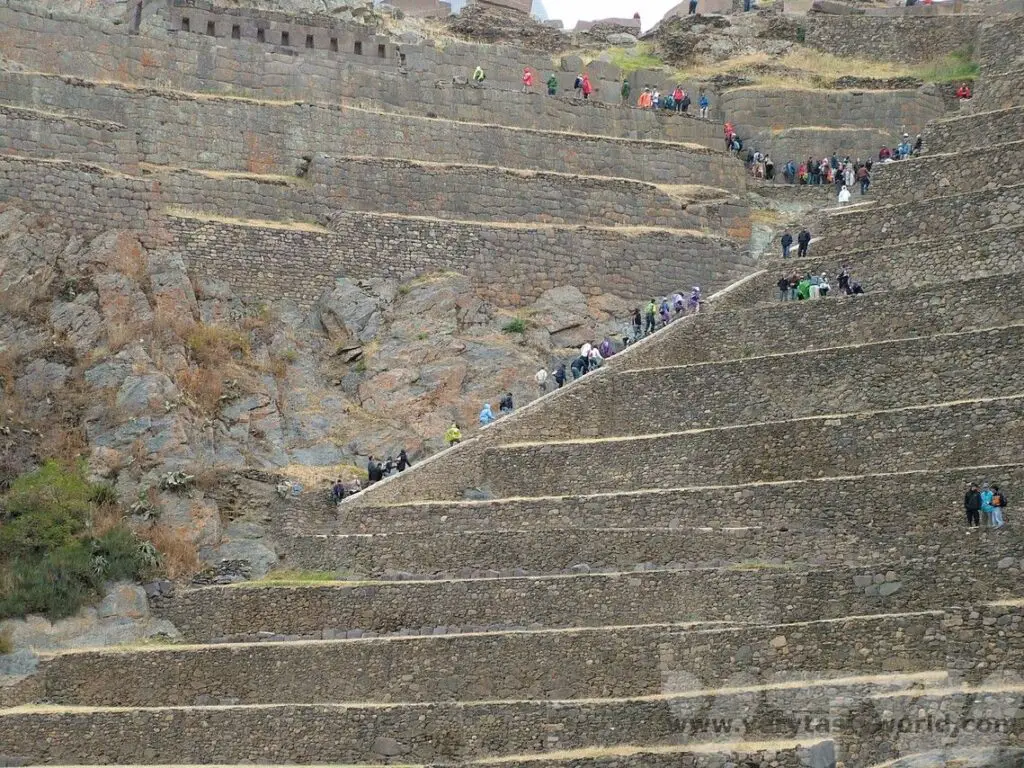
Storehouses for food can also be seen.

Ollantaytambo was the last bastion of the rebel Manco Inca Yupanqui who led the resistance against the Spanish conquistadors. After Cusco had fallen Manco Inca successfully blocked a Spanish expedition and defended Ollantaytambo, but was unable to hold his position. He eventually retreated into the jungle of Vilcabamba and became the leader of the Neo-Inca state.
There are a number of other interesting sites to visit. These include the salt pans of the Salinas de Maras and the concentric terraces at Moray, thought to be a location where the Inca experimented with growing particular crops. If you’re feeling active, whitewater rafting on the Urubamba River is a popular activity.
Essential Drinks to Try in the Sacred Valley
Peru is deservedly cited as having one of the world’s most interesting cuisines with all sorts of delicious delicacies to taste all over the country. But we also enjoyed some typically Peruvian drinks whilst visiting the Sacred Valley.
Chicha
If you see a flagpole outside a local house, this represents a chicha place where you can try a glass of corn beer. You are welcome to come in and buy some for a modest price.
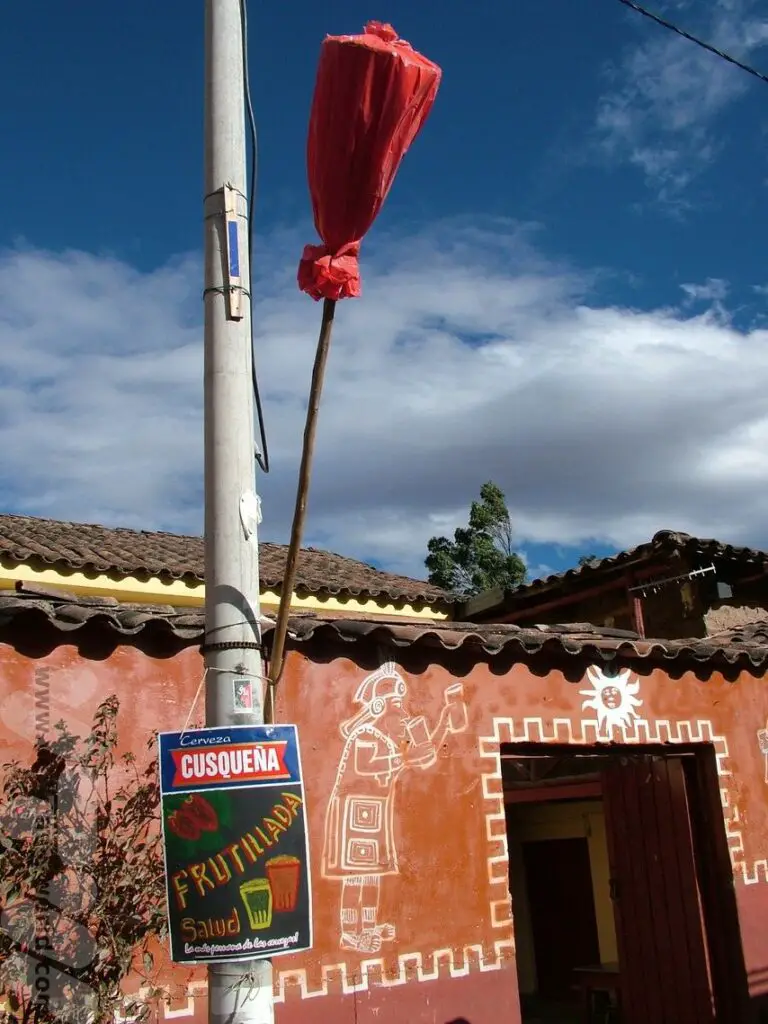
Chicha is brewed from maize and fermented in earthenware vats. It’s usually made by the women of the family and can provide a good income for the household.
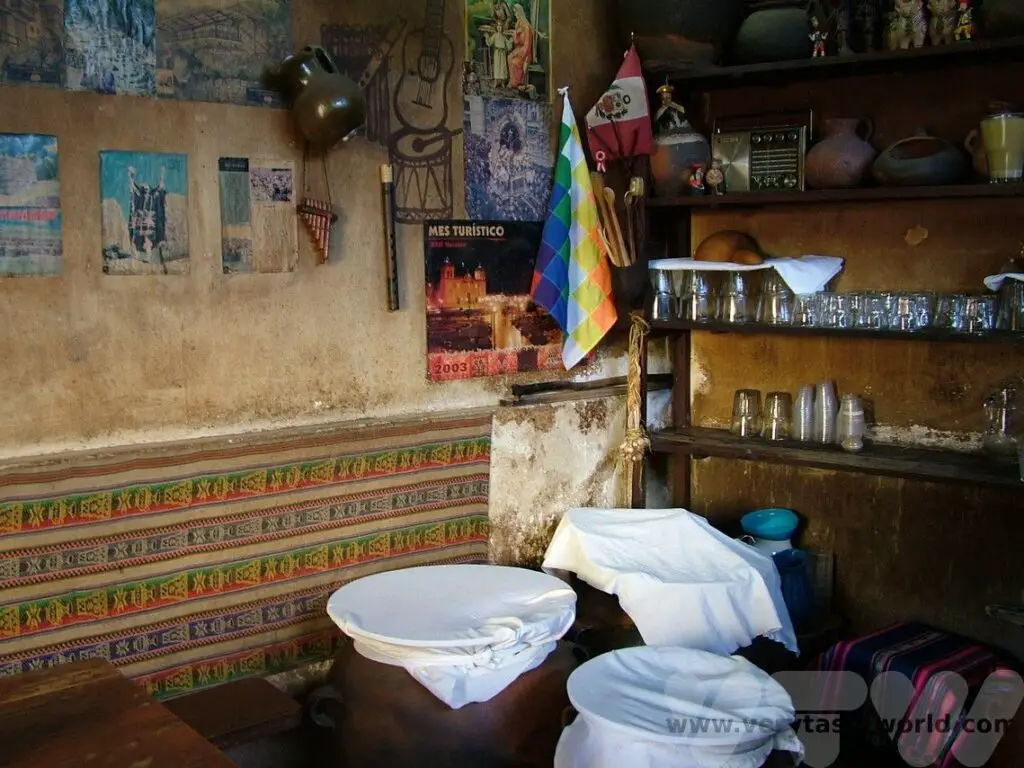
Chicha made in a very similar way to standard beer but it uses maize/corn instead of barley. It is a very special drink that had a huge cultural importance to the Inca people. It’s not very alcoholic – about 3-5% – but it is very refreshing and tasty too.
Chicha de jora is made from yellow maize and chicha morada from purple corn, with fruit such as pineapple or strawberry added with spices such as cinnamon or cloves to add flavour. Both types of beer have a glorious colour.
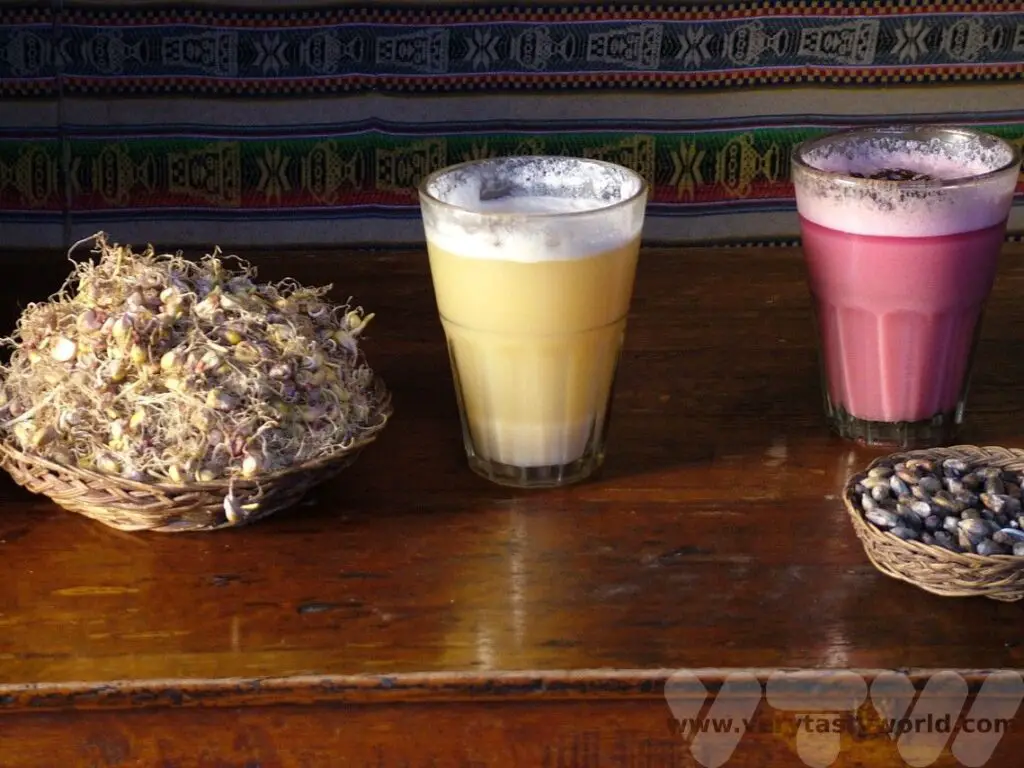
Coca Tea
At altitude you really notice the thinner air and the lack of oxygen. You may not feel it initially but climbing a seemingly innocuous flight of stairs, even a single storey, can leave you puffing and panting and wondering whether you need to be working out more. Some people have more serious reactions which include headaches, nausea, tiredness and dizziness. There is no knowing whether you are likely to suffer from altitude sickness, and fitness isn’t a factor – it seems as though either you are or you aren’t susceptible. If you do feel poorly, stop and rest. Make sure you are well hydrated. Avoid consuming alcohol and smoking.
One local remedy that is reputed to help with mild symptoms is coca tea. It won’t cure altitude sickness but apparently helps alleviate the headaches. (It’s not recommended for those with high blood pressure, heart problems or diabetes.) And as acute mountain sickness can be fatal – if symptoms get worse, seek medical advice immediately.
Our hotel had free coca tea available all the time and this is the case with most accommodation in the city. A nice cup of hot tea after a morning or afternoon’s sightseeing was always welcome. The tea is brewed from the leaves of the coca plant, which the Incas considered to be sacred. It’s not tannic and has a pleasing flavour, a mild, refreshing taste that is a bit like green tea.
You can buy coca tea bags in Peru to bring home. They last ages and can still be enjoyed at altitudes much closer to sea level.
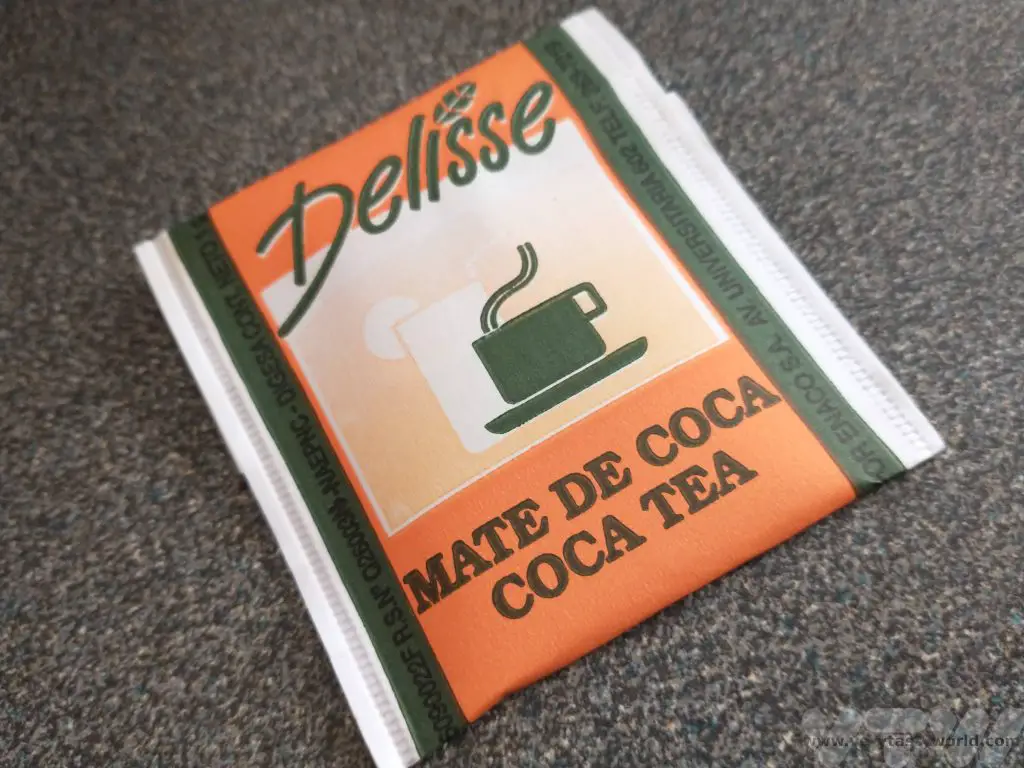
Just brew them as you would any cup of tea: teabag in a cup, add boiling water, steep to the strength you like, sit back, put your feet up and quaff.
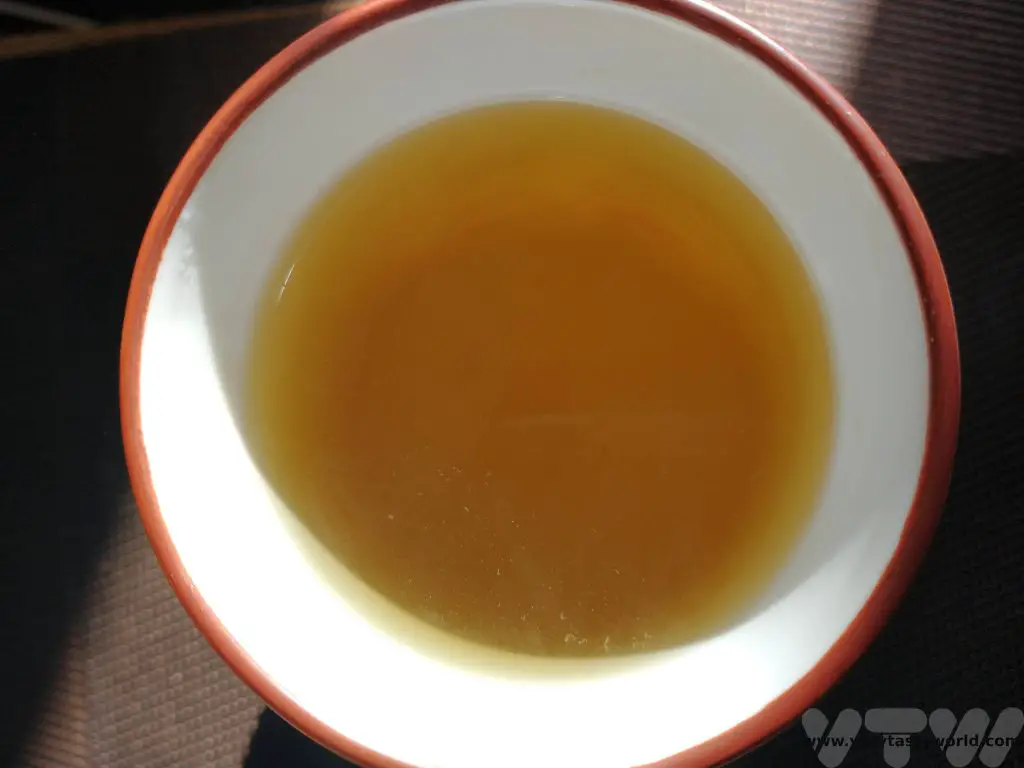
Although often considered to be the gateway to Machu Picchu, Cusco and the Sacred Valley have so much to offer the visitor. It is definitely worth spending time in this area, not only to acclimatise to the altitude, but also to explore and discover more of the region’s fascinating history and culture.
Related Posts You May Enjoy

- Best Time To Visit Machu Picchu 2024 Update
- A 2 Week Patagonia Itinerary
- Day of the Dead in Campeche
- A Galapagos Land Based Itinerary
- RECIPE: How to Make Costa Rica’s Gallo Pinto
- A Tasty Puebla Food Tour
- Costa Rica Wildlife Sanctuary – Caño Negro
- Visit Torres del Paine National Park in Patagonia
- Atacama Desert Itinerary
Nepal Momo FOMO
It is possible to stay in Buddhist monasteries when visiting Nepal. The Neydo Monastery is located about half an hour’s drive from Kathmandu (once you manage to leave Kathmandu – the traffic can be incredibly busy). It offers simple accommodation which is basic but clean as well as an evening meal and breakfast. If you get up early enough you are welcome to watch the monks’ daily worship as they chant from religious texts accompanied by a variety of instruments. Just enter the temple quietly and sit on one of the mats provided at the back of the room. Naturally no photos are permitted inside the monastery’s prayer hall.
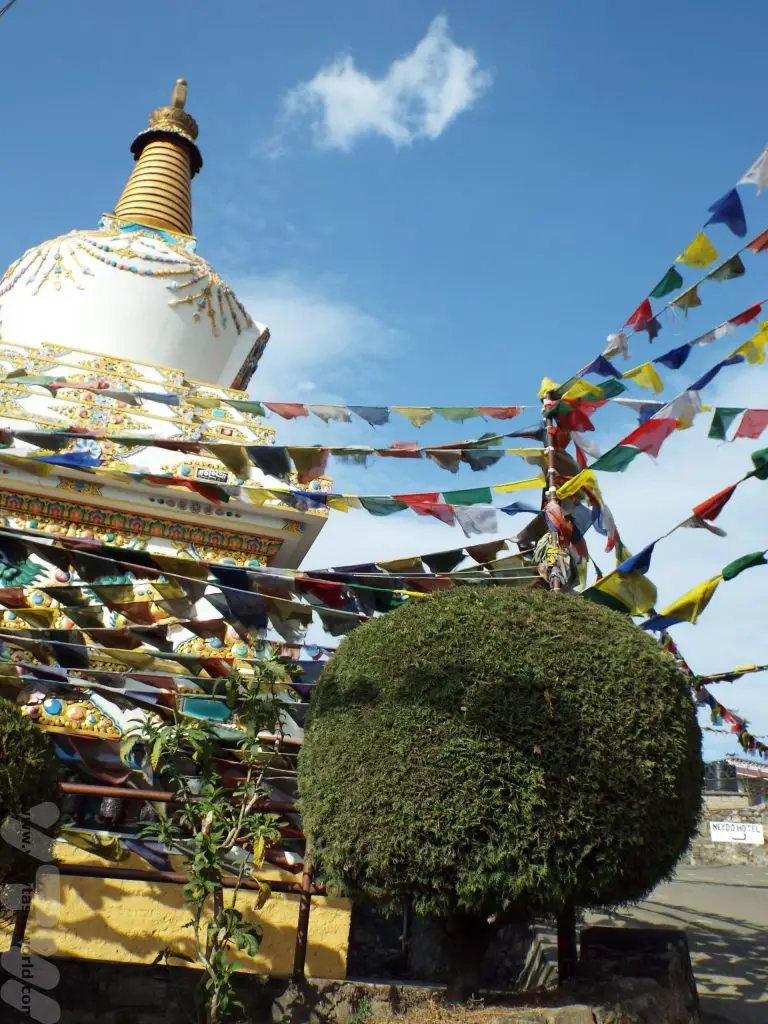
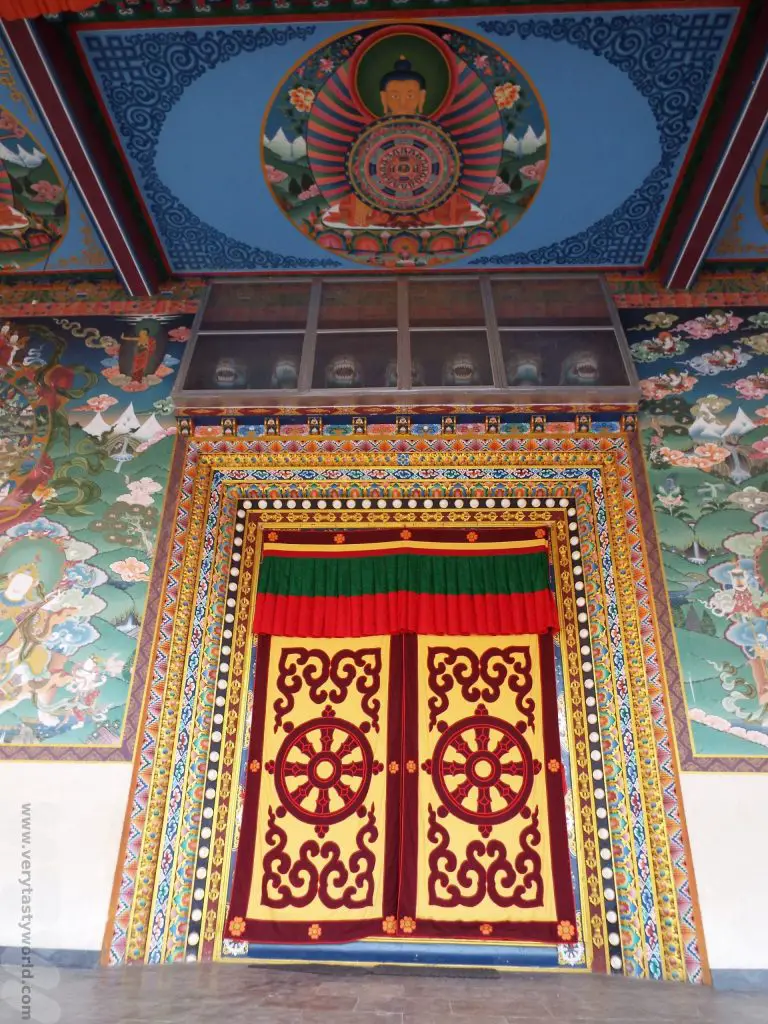
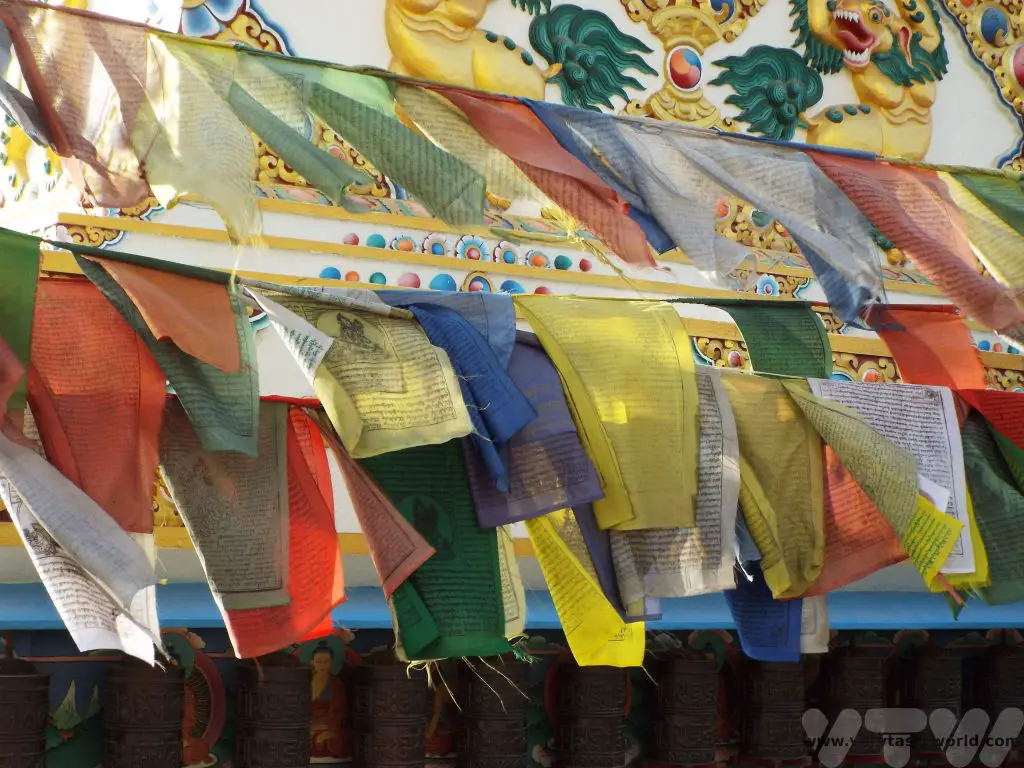
Dinner – Nepal Momo
The evening meal on offer was momos, which are delightfully delicious dumplings, basically a flour and water dough filled with meat, vegetables or cheese. They are usually steamed, often over a bowl of flavourful stock, but can also be pan fried or even deep fried. They are often accompanied by a dipping sauce, something akin to a chutney.
These were vegetable momos with a mild savoury dipping sauce accompanied by a light soup.
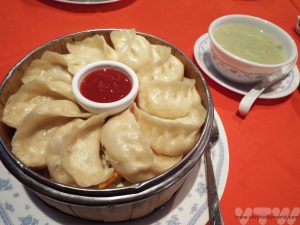
Nepal momos are so popular that you will even see fast food dumpling outlets, especially in Kathmandu. These often offer set meals – you can order via a picture menu just as you would at a burger bar. During our trip to Nepal we had eaten plateful upon plateful of the delicious little darlings, but it was on our last day – in one of these restaurants – that we realised that we had been eating them all wrong! Maybe it’s because we’re British, we were trying politely to take a delicate bite of a momo each time we ate one. However, a friendly local, who kindly hid his appalled expression when he saw us daintily eating momos, explained that you should always eat them whole.
The reason? As the momos steam the juices from the filling create a little soup inside the dumpling shell. Bite into part of the momo and the soup drains out – lost forever. Eat the whole momo and the flavour of the broth fills your mouth with soupy deliciousness.
Just make sure the momos have cooled down a little before scoffing.
Related Posts You May Enjoy
Shinkansen Luggage – New Restrictions And a Solution
From May 2020 the Tokkaido shinkansen (bullet trains) have introduced new rules regarding oversized luggage. You can find the details and FAQ here.

Actually, this is a good idea. The shinkansen is the most marvellous way to travel – it’s fast, efficient and great value if you have a Japan Rail Pass.
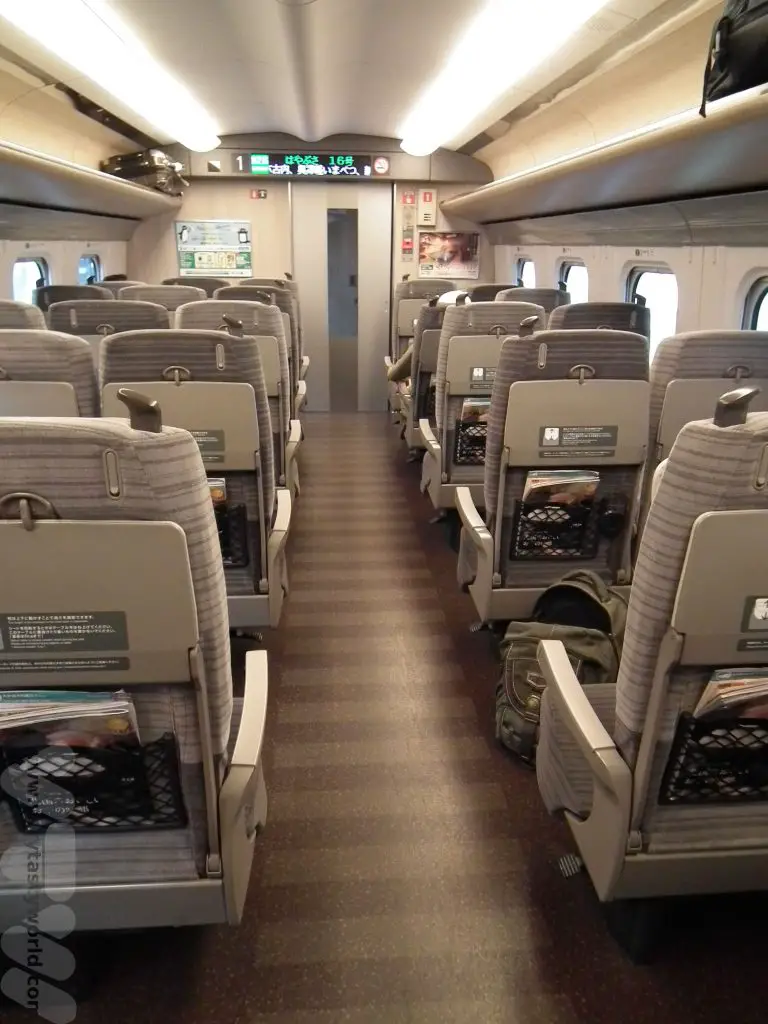
It’s also extremely comfortable, with plenty of legroom and reclining seats if those are your sort of thing (and they’re not too intrusive for the person sitting behind you).
However, on our most recent trip to Japan just a few months ago we noticed that a significant number of visitors had excessively large and bulky hard cases which were difficult to manoeuvre onto the train and took up a lot of space, making things cramped for other passengers. We always try to travel light – we pack just enough clothes and basic toiletries for the trip into soft luggage bags. The trundler style that have multiple handles or can convert into rucksacks just in case you encounter a lot of stairs are particularly useful.
We find that these are by far the easiest to journey through the country, especially as so much of the travel is on public transport. And if there is anything you have forgotten to bring to Japan you will almost certainly be able to find it and buy it when you arrive. Uniqlo and Muji are brands which are well known worldwide, can be found in most Japanese cities, and they will most likely have sizes suitable for western people.
Shinkansen Luggage Solution
If you really can’t travel light there is a solution: the amazing takkyuubin. It’s a luggage forwarding service that will get your bags from one end of the country to the other overnight. It’s reasonably priced and highly efficient. Although there are many companies, the most well known is Yamato Transport Co , characterised by its kuroneko – black cat – logo whereby a black cat is carrying a black kitten. If you’ve ever seen Studio Ghibli’s delightful anime Kiki’s Delivery Service, based on the book by Eiko Kadono, the Japanese title is Majo no Takkyuubin – Witch’s Delivery Service – and Kiki’s black cat Jiji is highly reminiscent of the Yamato cat.
We have used this service many times and it has always been exceptionally good. Every business hotel or ryokan we have stayed at has been entirely helpful in arranging the transportation (Say, “Takkyuubin dekimasu ka?”) and the helpful staff will fill out the forms for the luggage destination in Japanese for you. (You can say, “Nihongo o kakemasen” – I can’t write Japanese). They will often telephone the destination hotel to check that it’s okay for them to receive your luggage and they will hold luggage for a few days if needed. You need to do a little preparation – it’s advisable to send bags the evening before you travel at the latest.
Arriving At Your Destination In Style
Then you can swan up to the railway station the following morning carrying just a day pack. You can buy a delicious bento (box lunch) at the station for a tasty treat as you travel, possibly indulge in a cold beer or cup of sake too, and enjoy the shinkansen experience without struggling with heavy luggage or inconveniencing other people. When you arrive at your hotel your bags will be waiting for you and the rest of the day is yours to enjoy. Such a pleasurable way to travel.
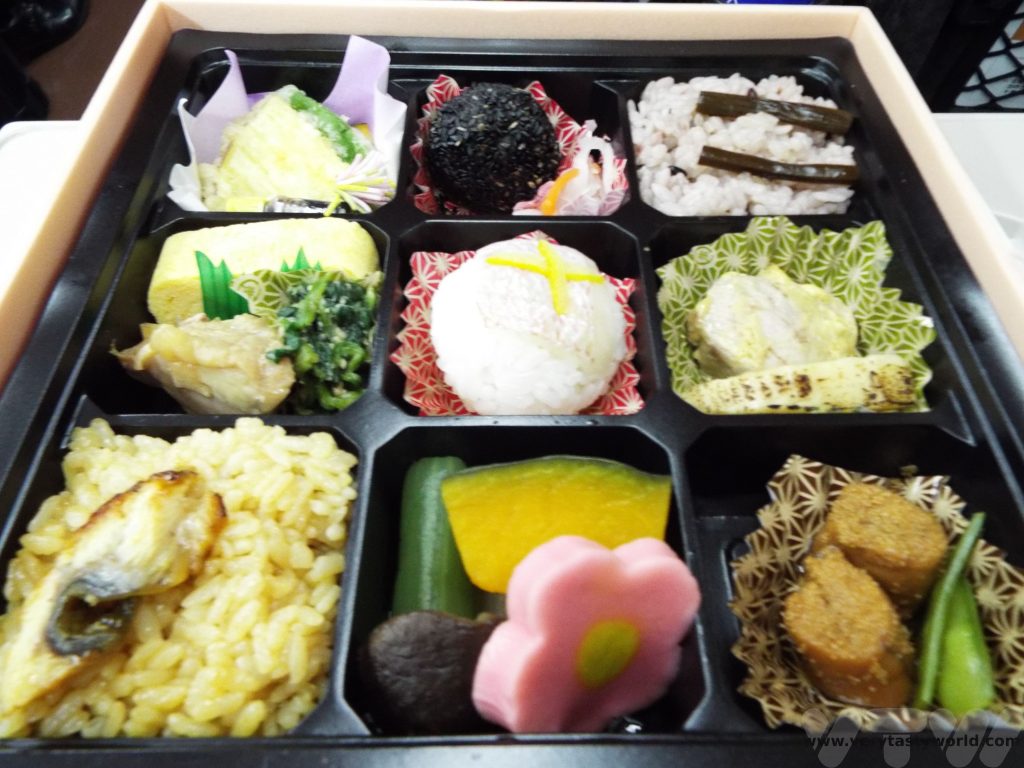
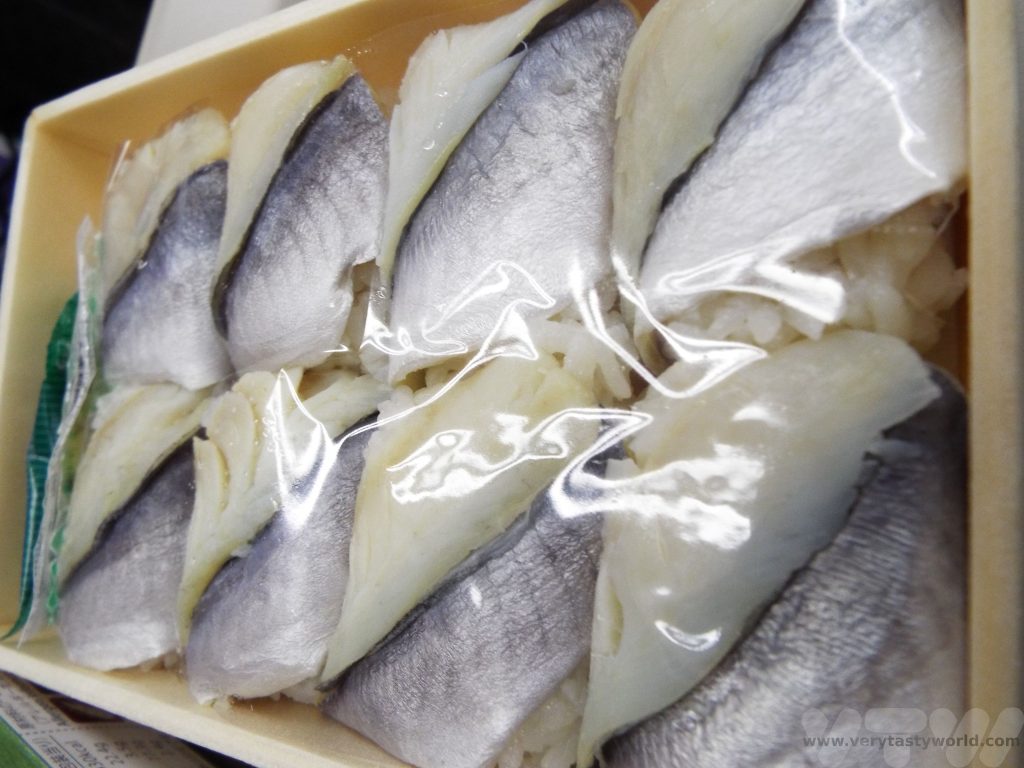
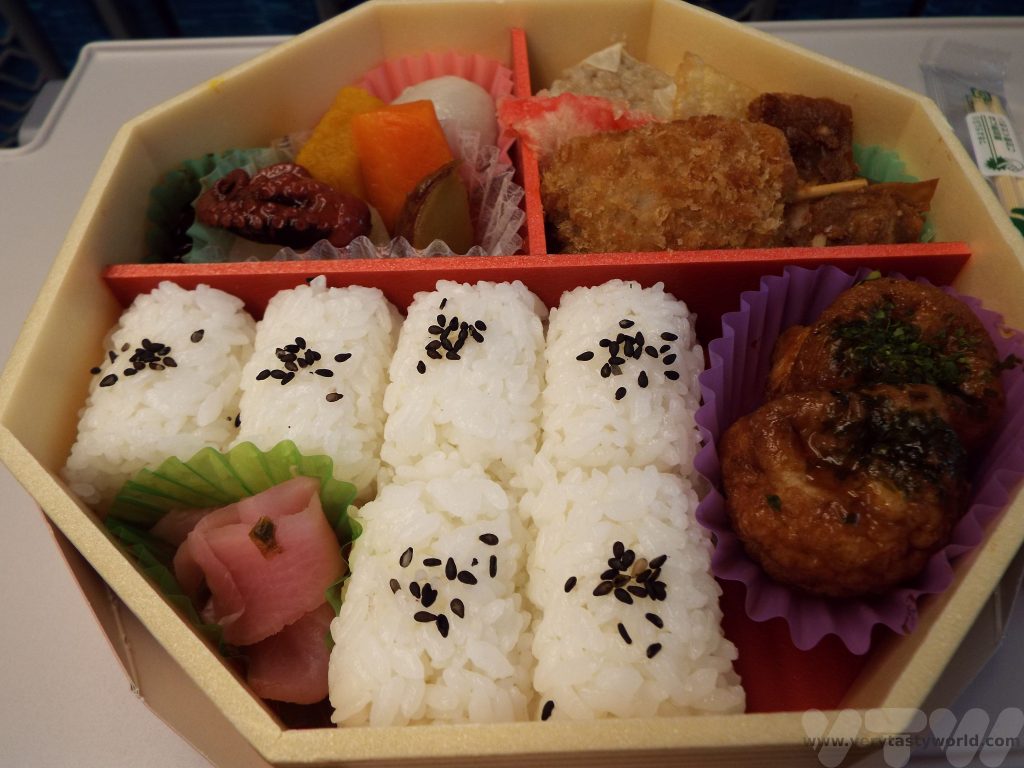
Related Posts You May Enjoy

- Recipe: Simmered Shiitake Mushrooms

- How to Use Public Transport in Japan

- RECIPE Oyakodon Donburi

- Planning a Trip to Japan

- The Makanai: Cooking for the Maiko House

- Setsubun Food – Bean Throwing Day

- The Gassho Farmhouses of Rural Japan

- Recipe: Japanese Simmered Pork Belly – Buta no Kakuni

- RECIPE: How to Make Umeboshi

A Mongolian Yurt – Anatomy of a Ger
One of the lovely things about travelling to Mongolia is staying in gers, either with families who were kind enough to share their homes with us or at specially designed tourist camps. A ger (also known in Western countries as a Mongolian yurt, although ger is the correct Mongolian term) are traditional round tents used as dwellings throughout Mongolia. The amazing thing about them is that they can be taken down and put up within a couple of hours. The construction uses no nails or fixings – the wooden poles interlock and remain sturdy and solid.
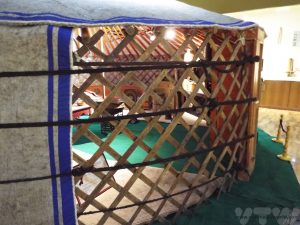
The national museum of Mongolia in Ulaanbaatar helpfully has a model to show a ger’s construction.
The door of the ger always faces south. You have to remember to duck when entering – it’s probably a rare visitor who doesn’t bash their head at least once when staying in gers!
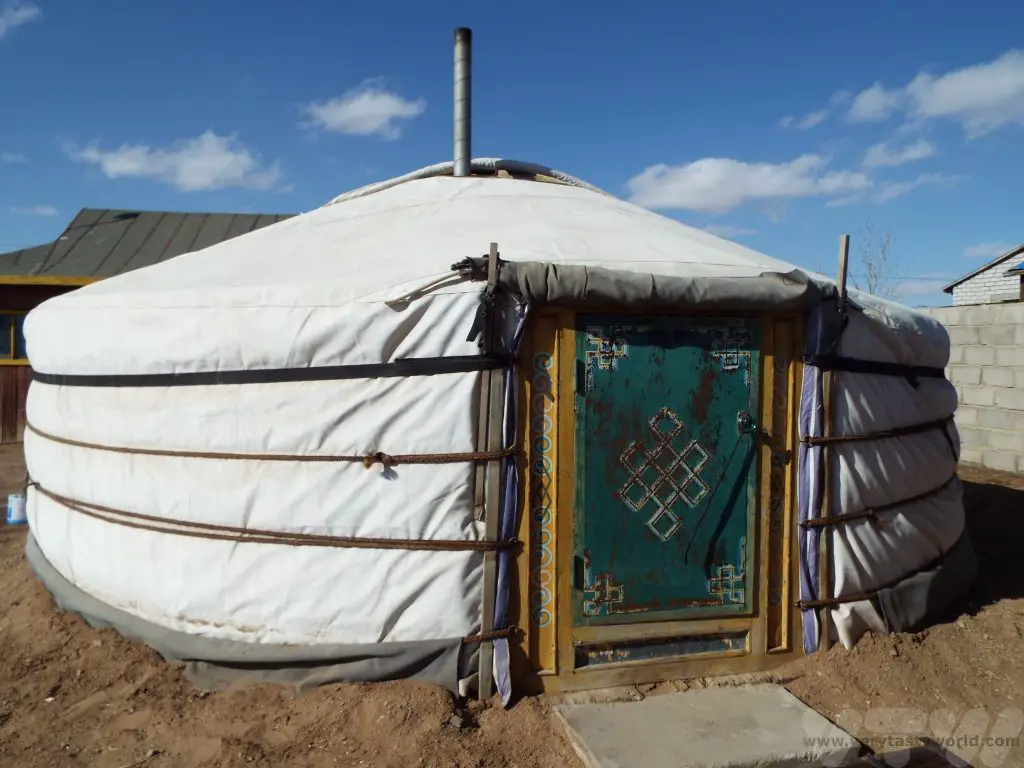
Most locals don’t knock before entering the ger and shoes remain on. Whenever we visited a family we were invited to join them and were introduced to all the family members over a cup of milk tea or sometimes a shot of vodka. We were always welcomed warmly with big smiles at every place we visited.
In winter, temperatures outside can drop to -30 degC. We visited in spring so night-time temperatures were a relatively balmy -15 degC – which was still very, very cold! The fuel used by the family varies depending on what is available – coal burns more slowly than wood which burns more slowly than dung.
The Heart Of The Home
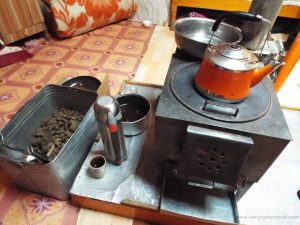
The centre of the ger is the stove. It really is the heart of the home, used for both cooking and heating. You need to be aware of the chimney as it’s located in the centre of the ger and will get very hot.
To the left of the door is the kitchen area. Shelves contain pots and pans as well as cooking utensils. Many of the pots are specifically designed to be used directly on the stove and can be used interchangeably. It’s a very efficient system.
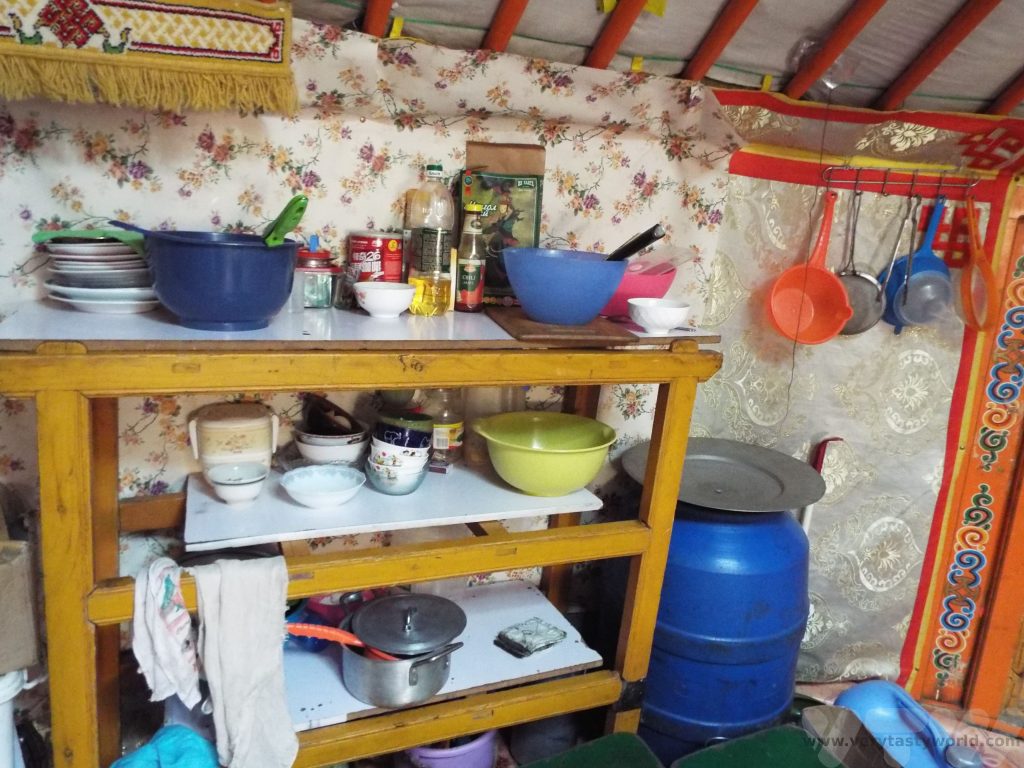
The blue barrel contains water, drawn from the nearest well.
To the right of the door is the washing area. There is no running water available but the little plastic vessel can be filled from the main water barrel and the tap opened.
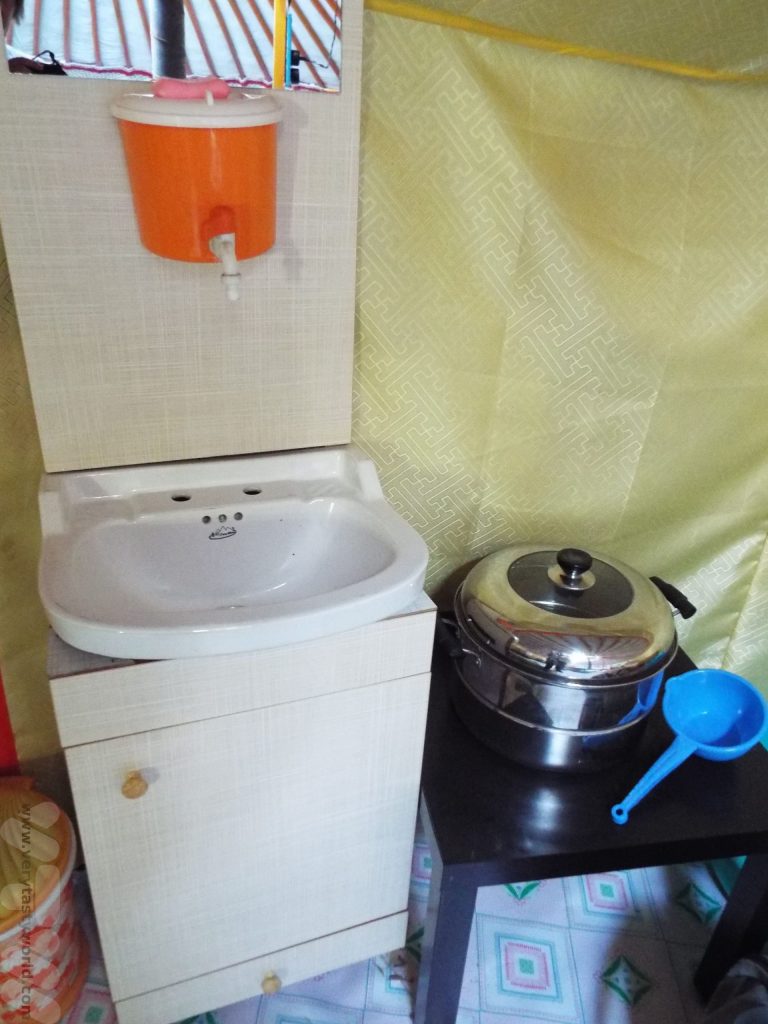
Be careful not to waste water though. If you want water in the Gobi desert you have to go to the nearest well, which can be several kilometres away.
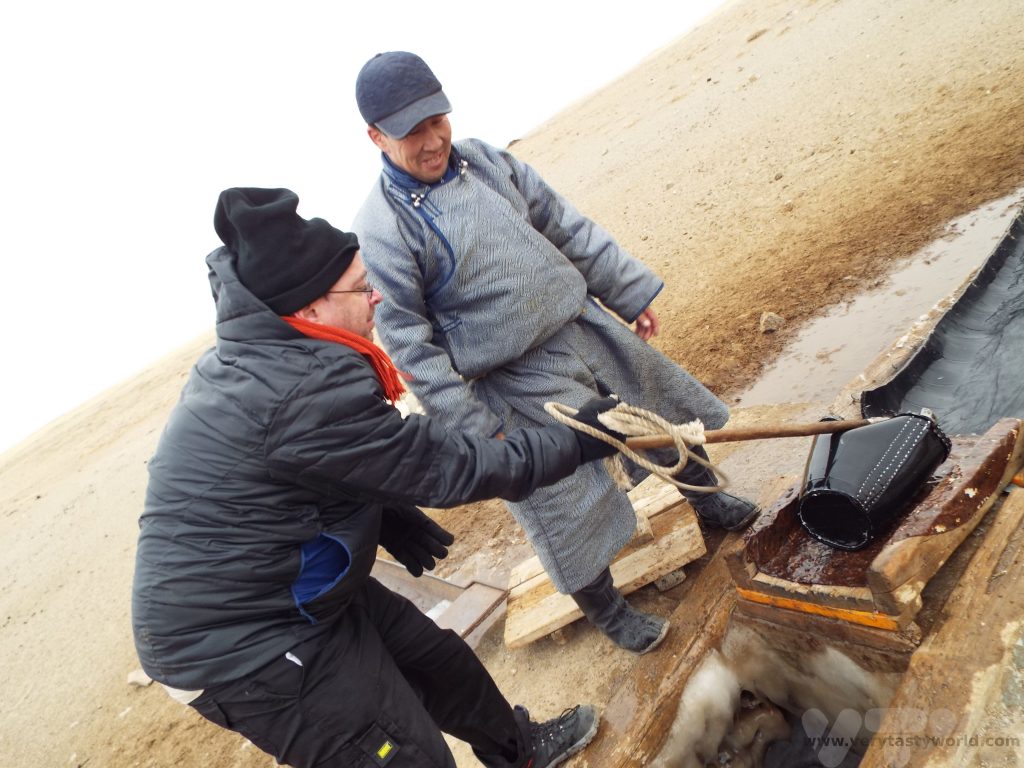
The water is pure and can be drunk directly with no filtration needed. It tastes good.
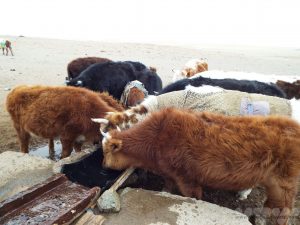
This well was used not only to provide water for the family, the local cows were also waiting for a drink.
Sleeping In A Mongolian Yurt – A Ger
Beds and storage areas line the circumference of the ger. There will be a low table with stools next to the stove. Beds double as a seating area – it’s perfectly fine to sit on someone’s bed. Blankets and clothes can be stored underneath. You can hang your coat or dry any laundry by hanging clothes in the rafters. Family homes also had furniture such as chests of drawers and dressing tables.
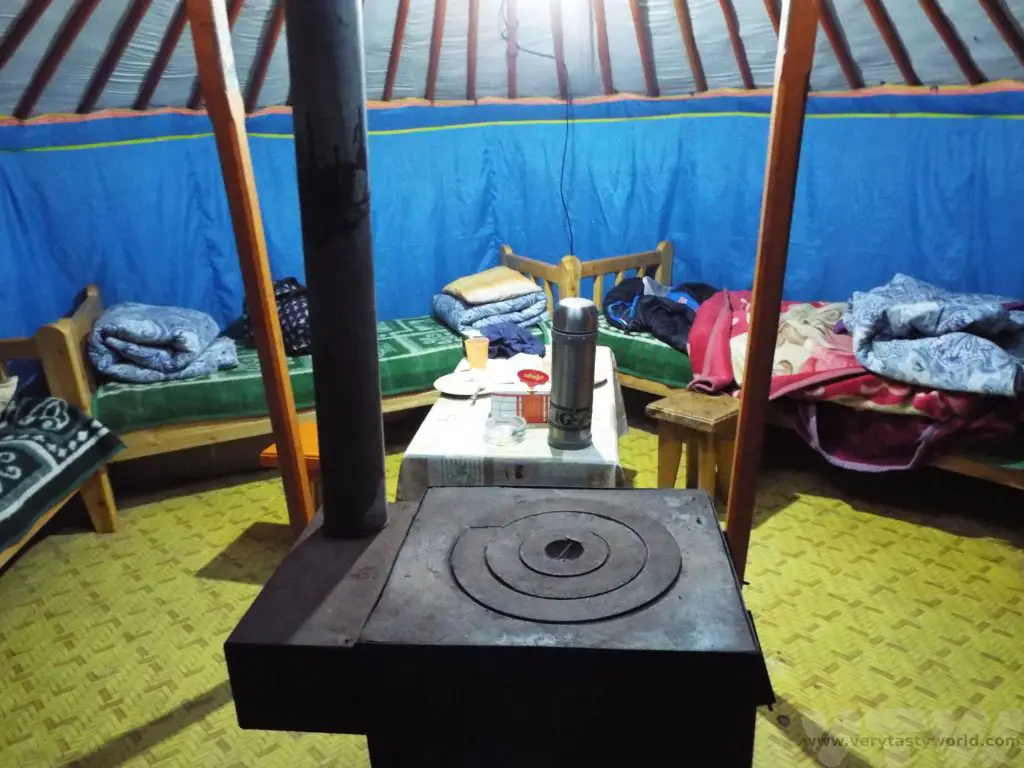
Of course there is a need for a toilet. The facilities are usually a basic long drop loo, that is, a hole in the ground with a couple of planks across it to stand on, located some 50m from the ger. When answering the call of nature you are surrounded by, well, nature.
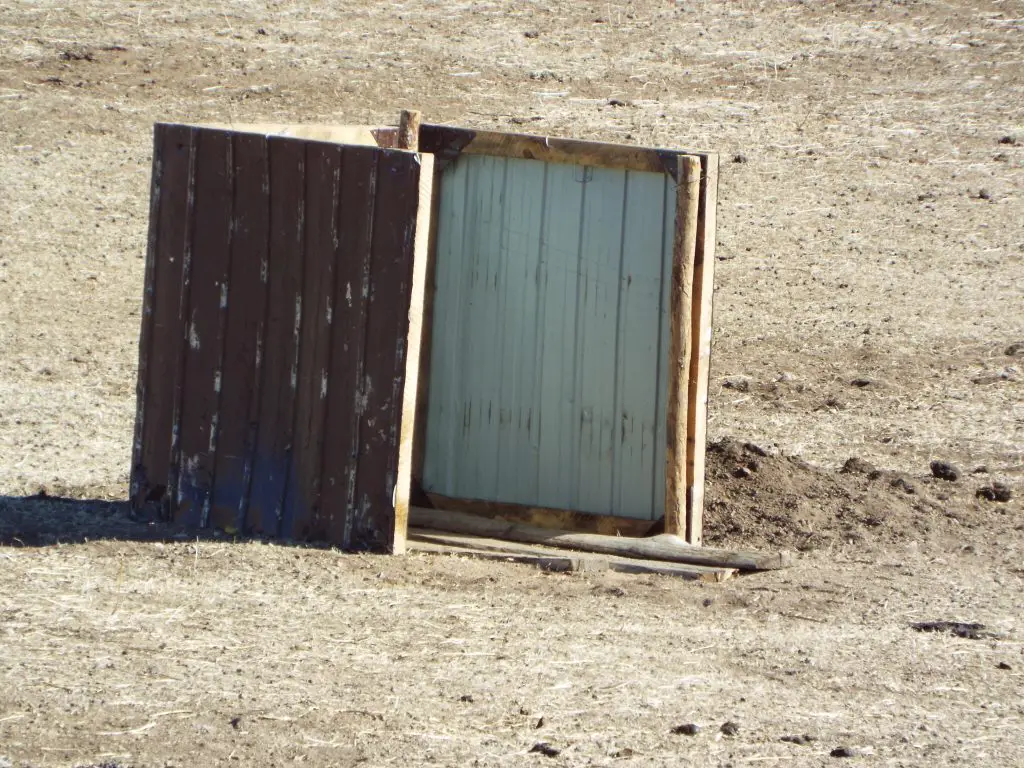
If you want a shower you will have to go to the local town. There are shower houses available for locals to use. We had just three showers in eleven days and were surprised to discover that it’s quite liberating having greasy hair and simply not feeling the need to shower every day. We’d have a quick wash down with wet-wipes on non-shower days (making sure to dispose of them properly). The climate in Mongolia, especially in the Gobi, is very dry – so the heat of the summer and cold of the winter are mitigated by the lack of humidity.
In springtime, while daytime temperatures can be quite mild, it drops significantly at night. The ger will be toasty warm while the stove is lit, but it will go out and then it’s time to bundle up – thermals, blankets, sleeping bags – just pile them on.
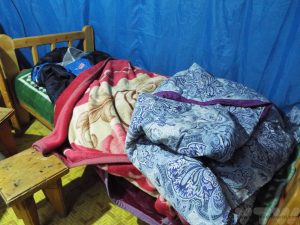
The host family will come in in the morning and start up the fire. We were pretty incompetent at getting the stove going at first but during the course our stay we eventually developed a technique that could both start and maintain the fire and we could officially deem ourselves the ‘fire-starters.’ Nomadic families make use of the dung produced by their many animals. It is dried out and used for fuel. It burns quite quickly so you need to keep an eye on the stove and top up whenever necessary.
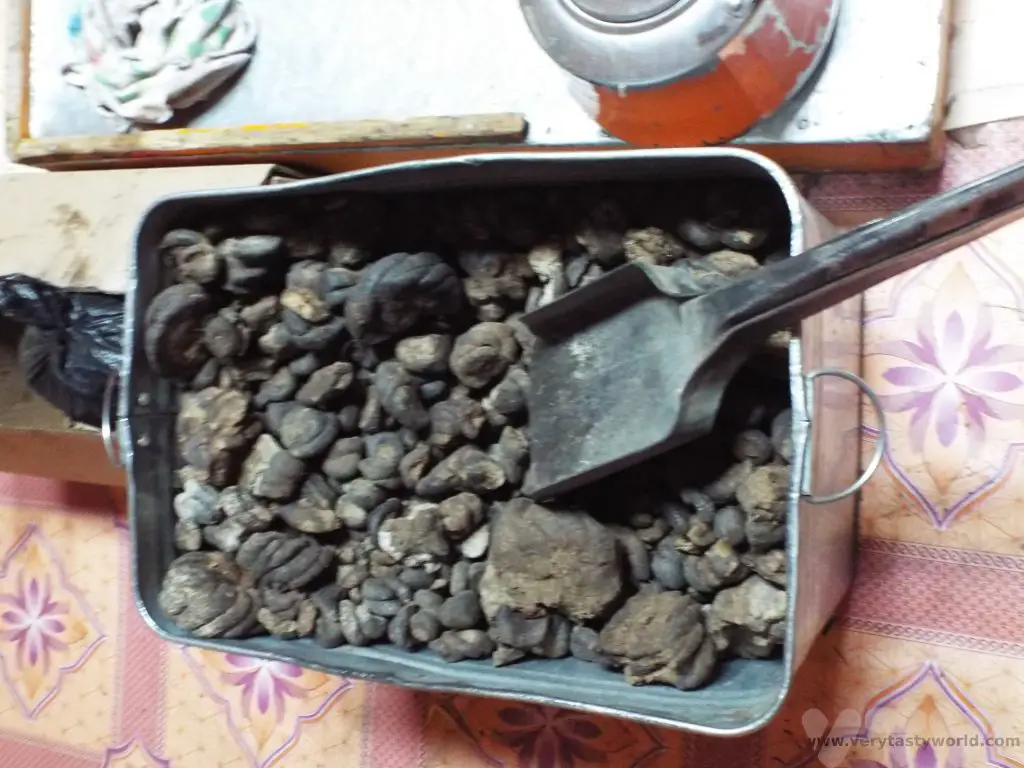
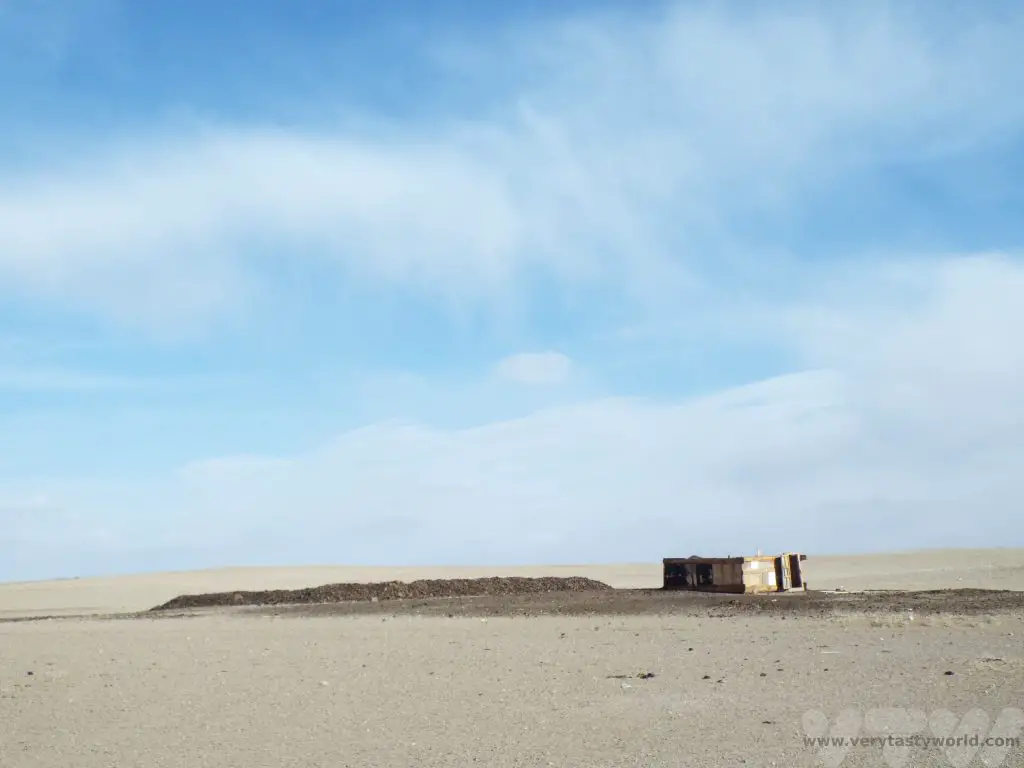

Cats are working animals in Mongolia and all our hosts found it hilarious that our little cat goes into a cattery – we described it as a ‘cat hotel’ – when we are travelling. If a local cat gets into the ger be warned, it will instantly take advantage of both the warmth and softy tourists within and will almost certainly leap onto your sleeping gear to snuggle up and look smug. You’ll be lucky to get your bed back.
